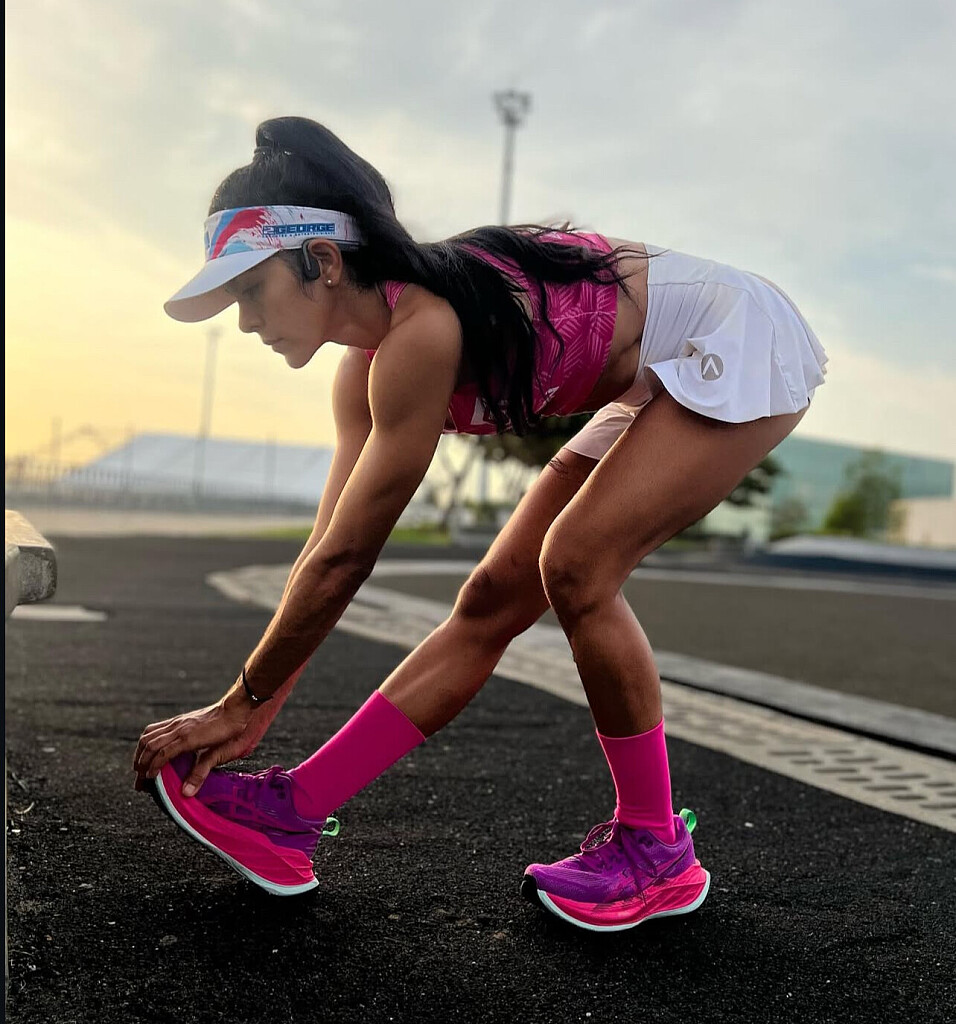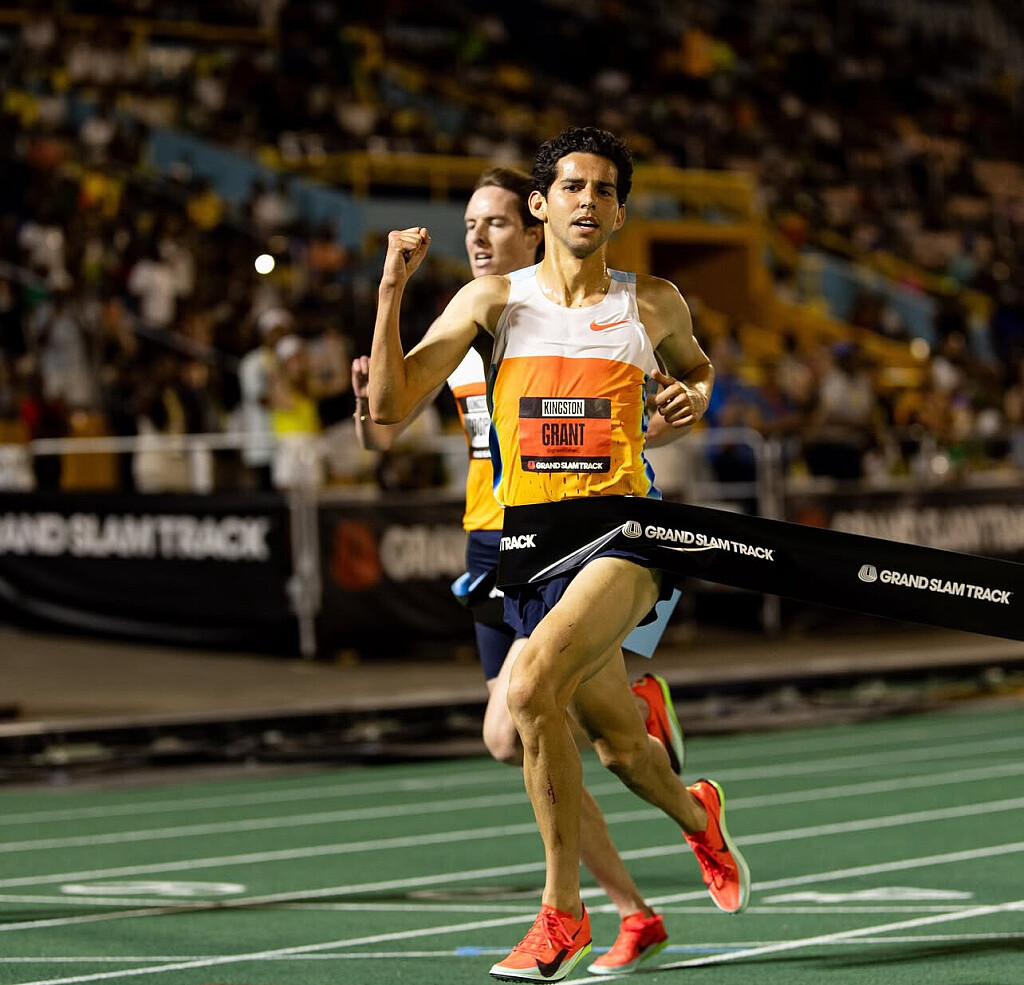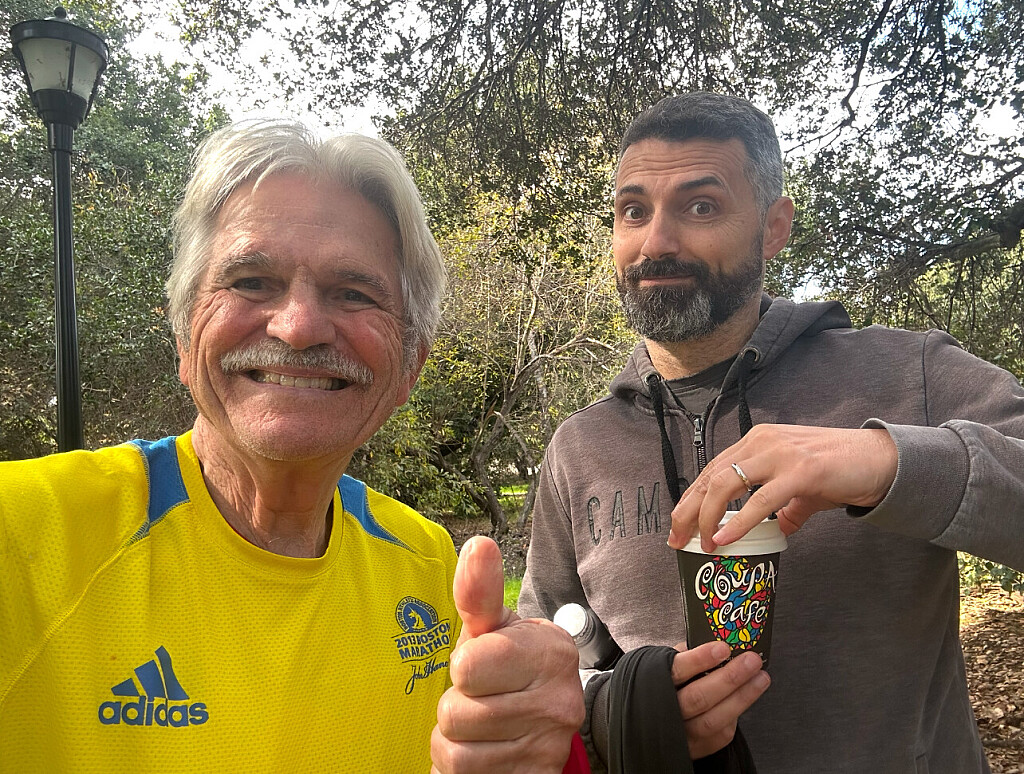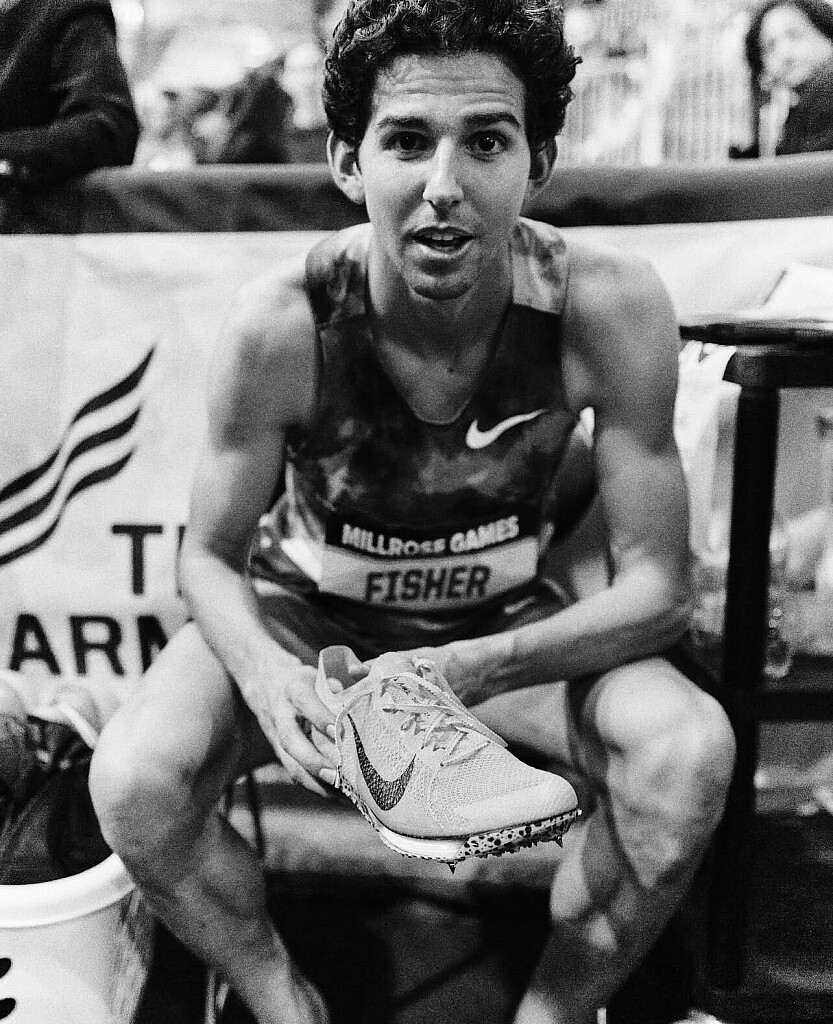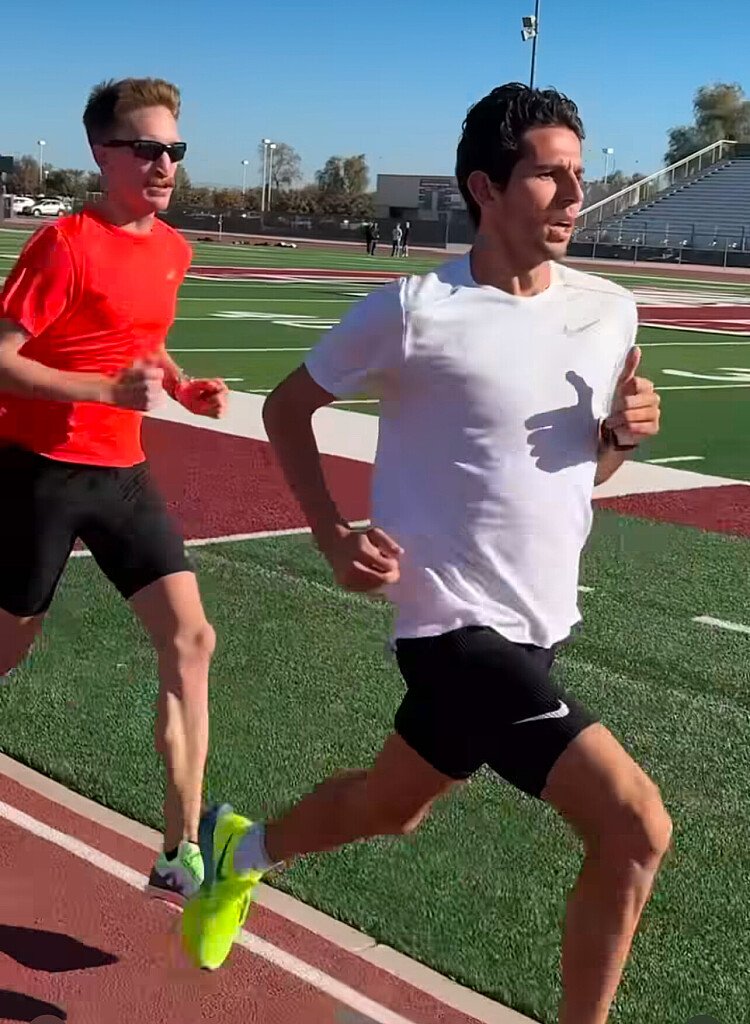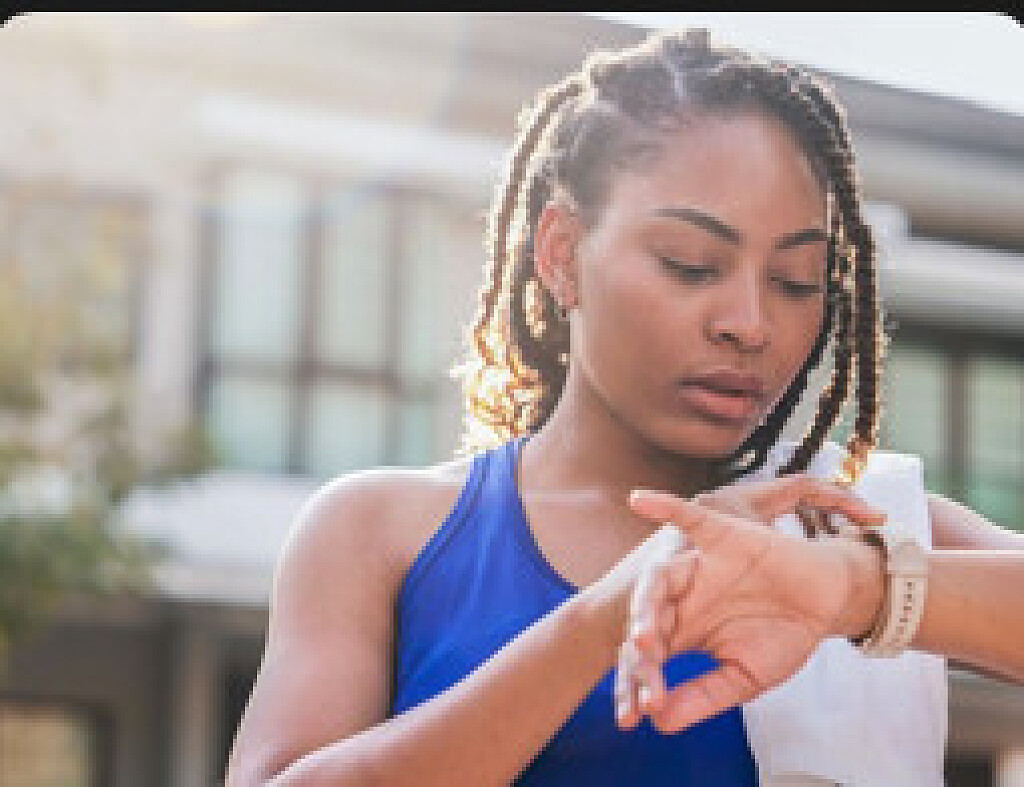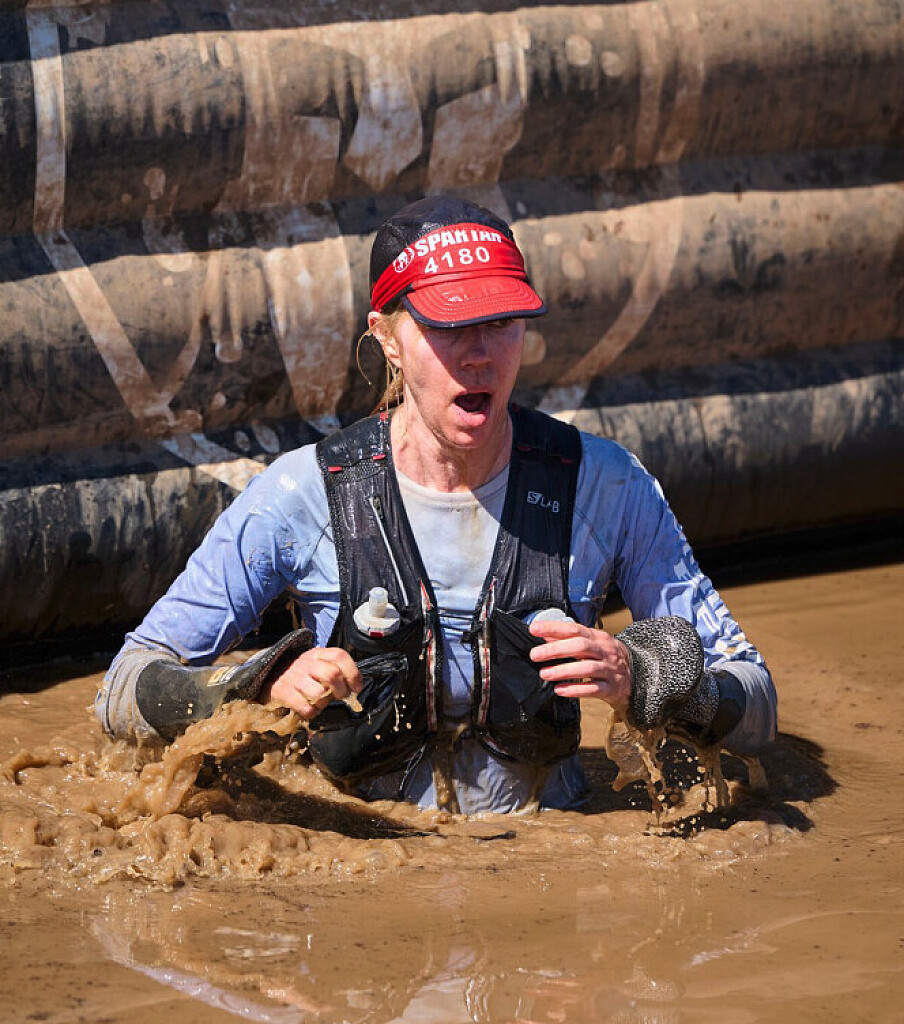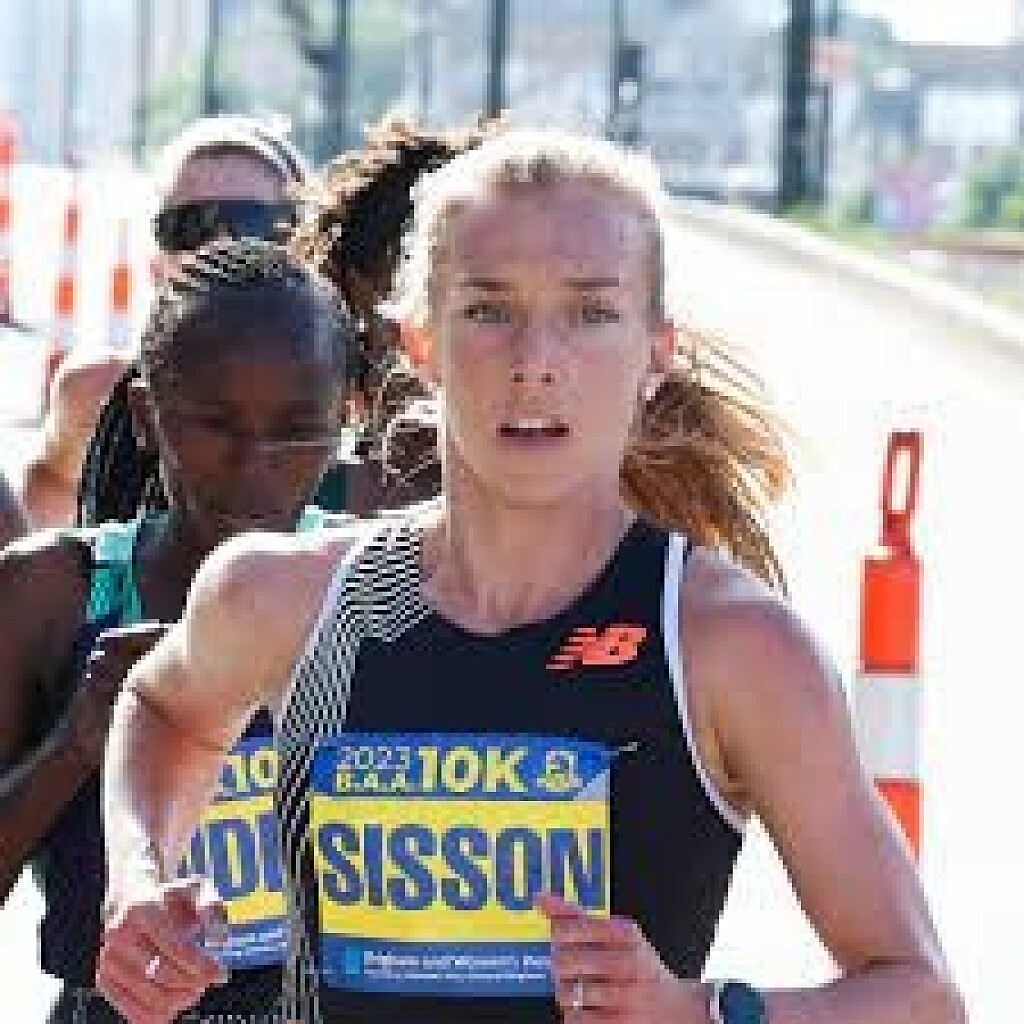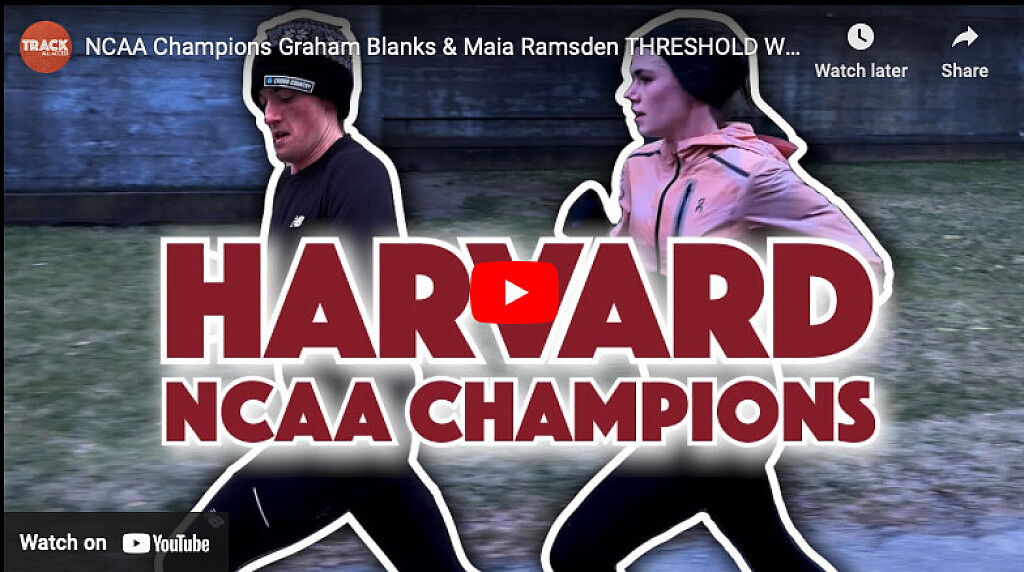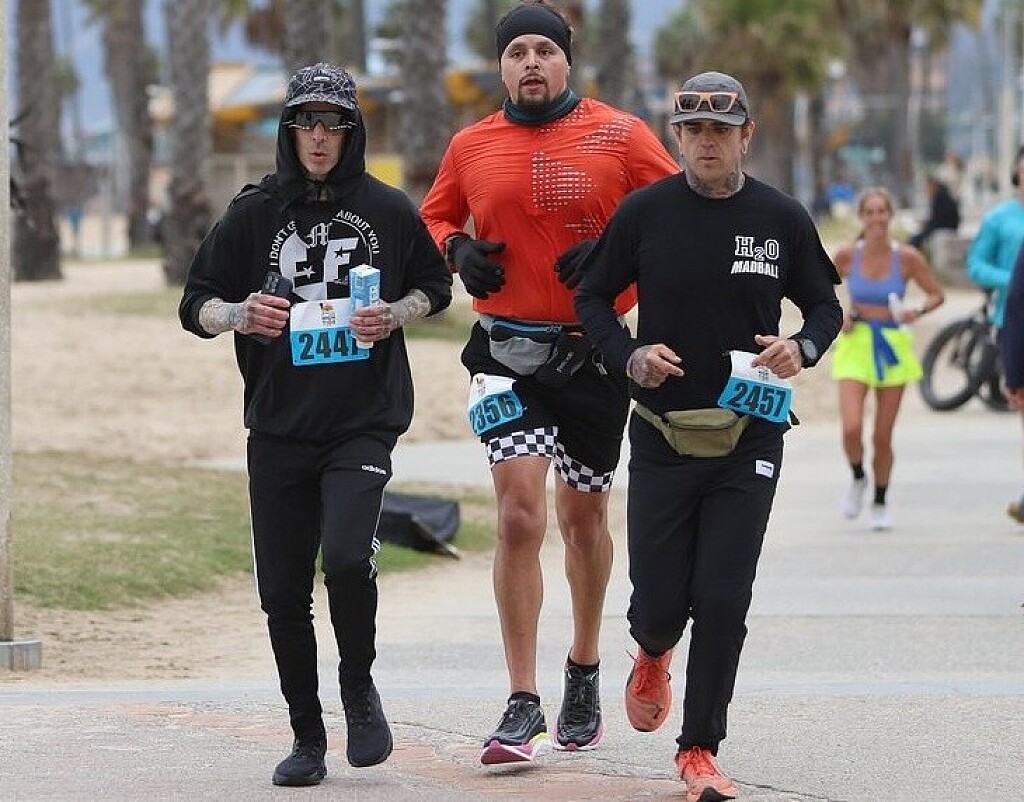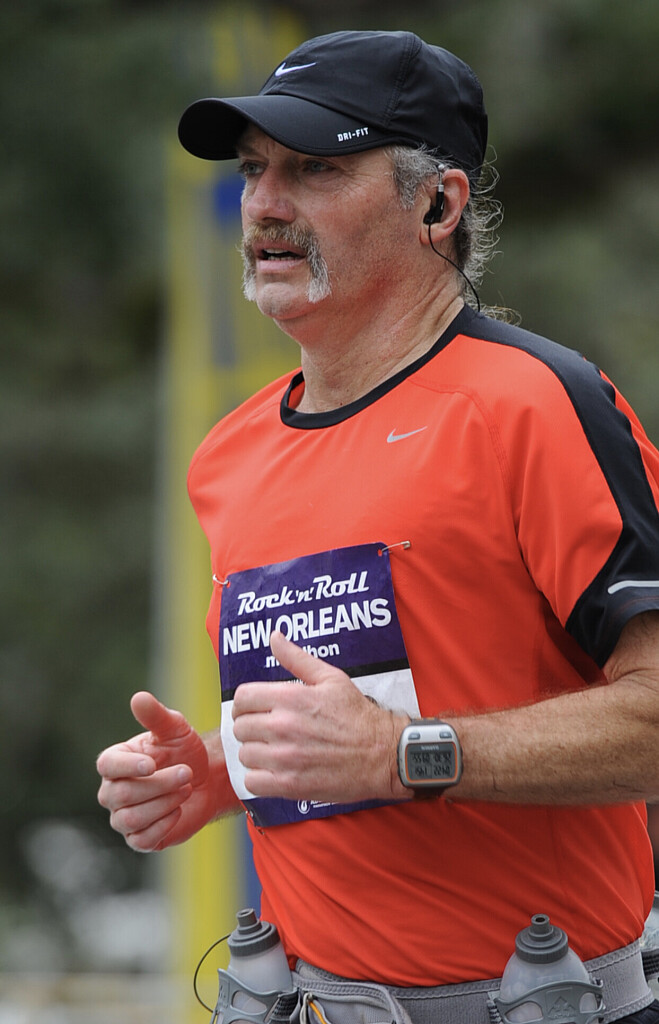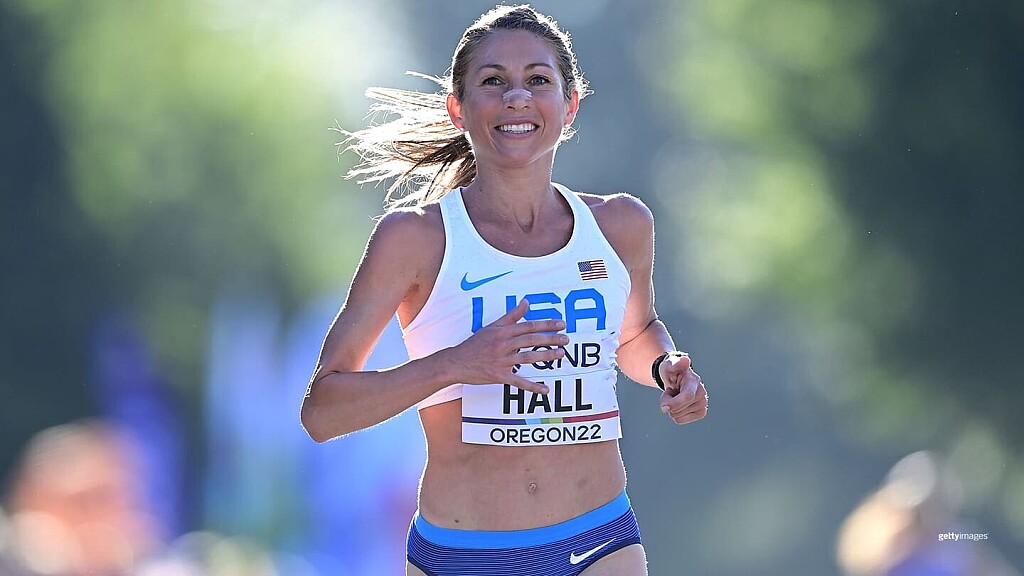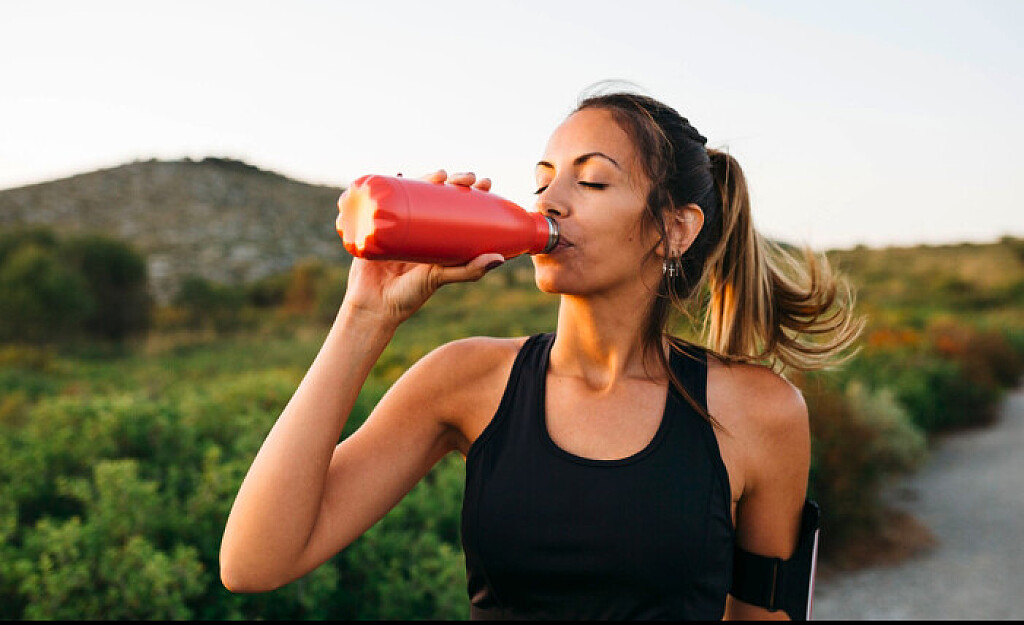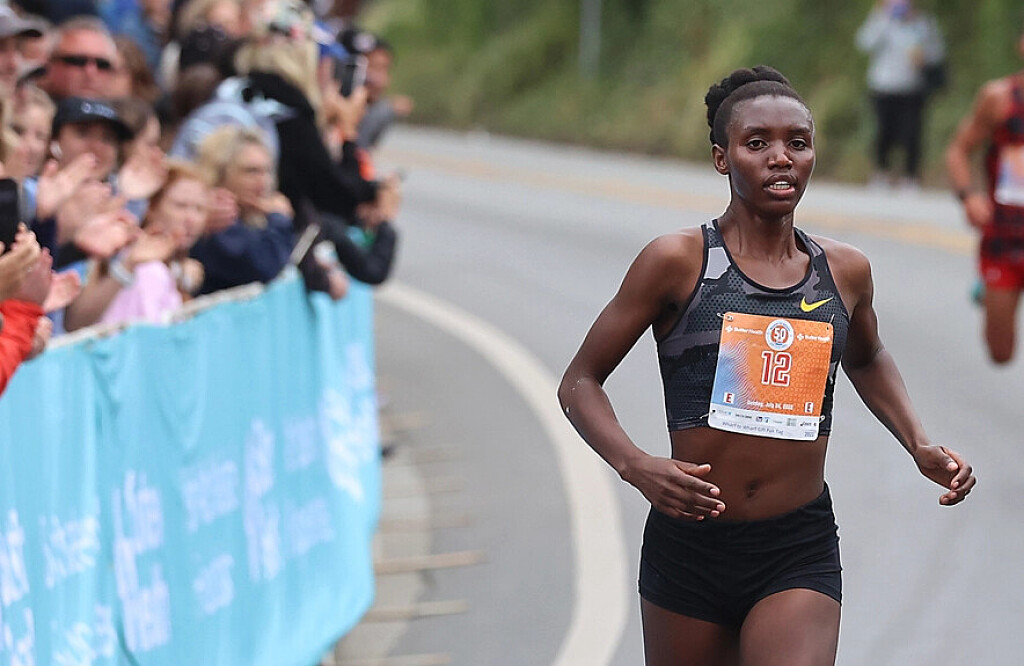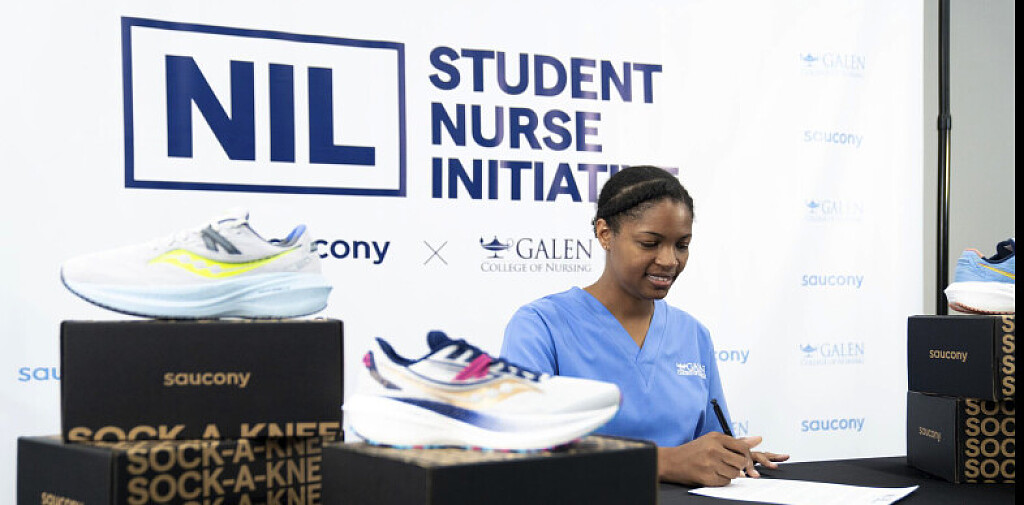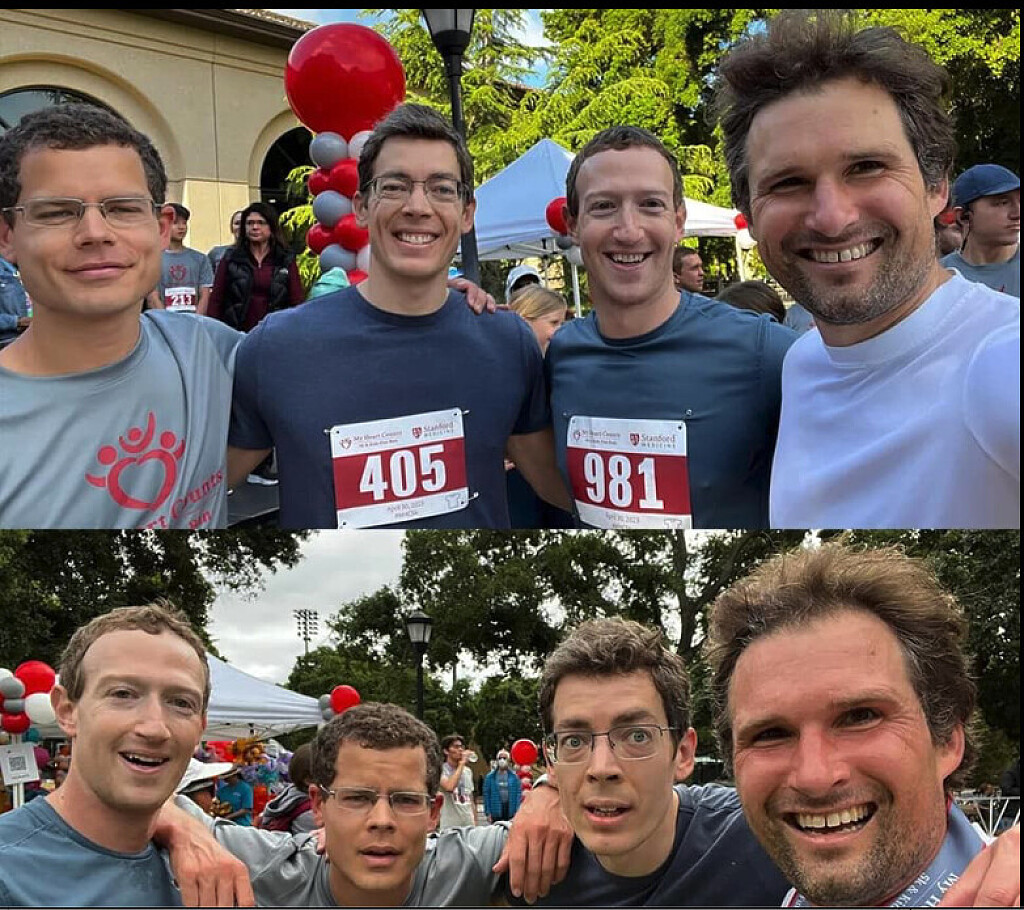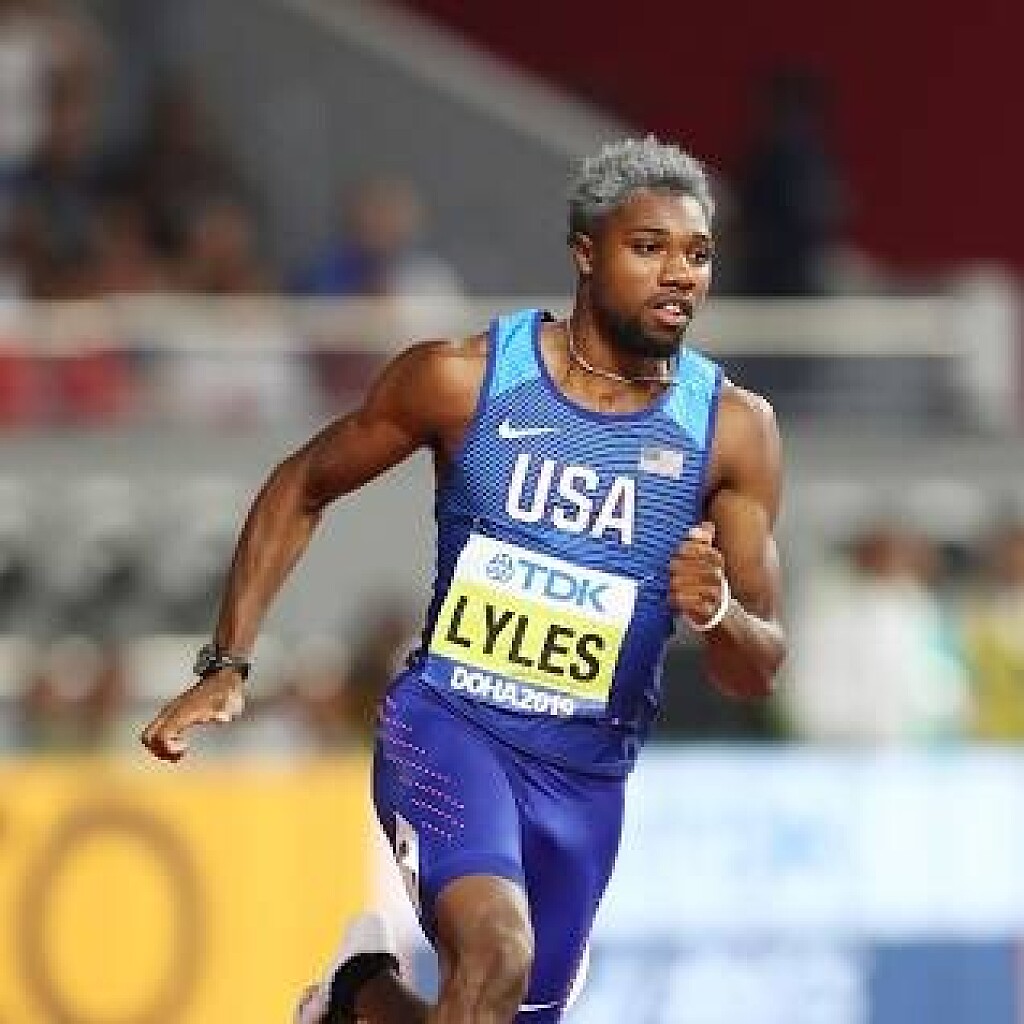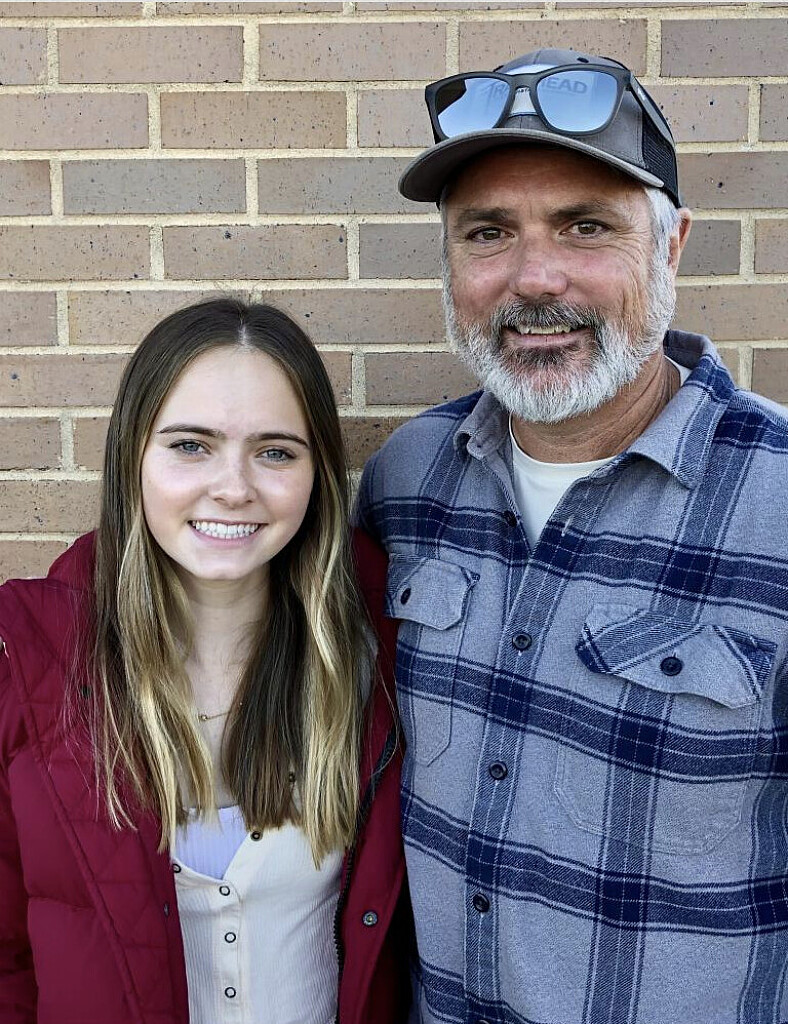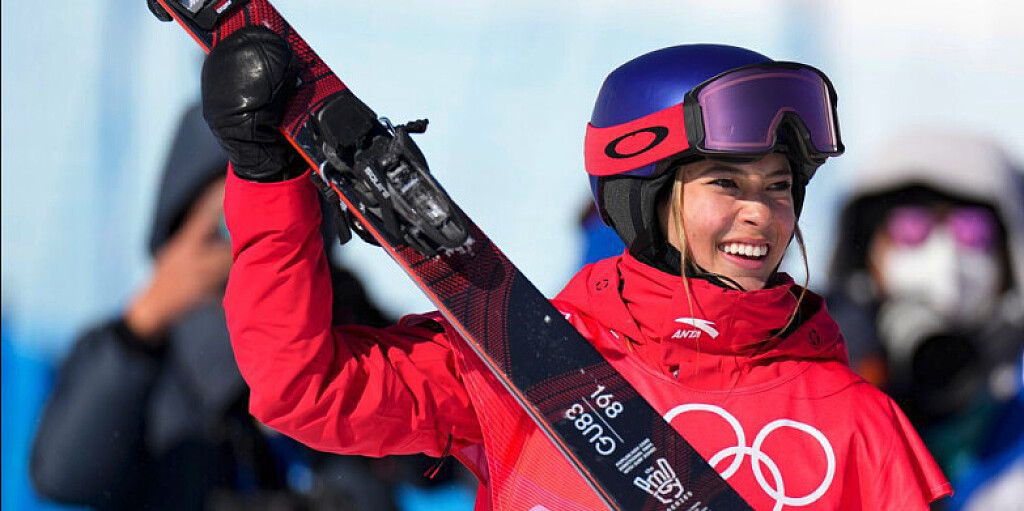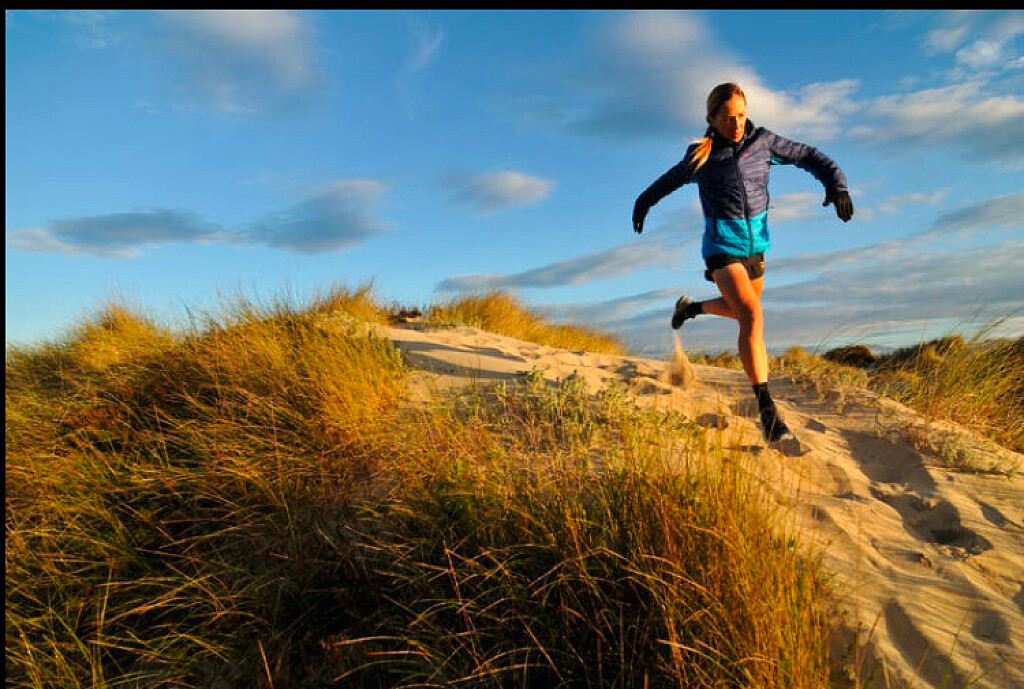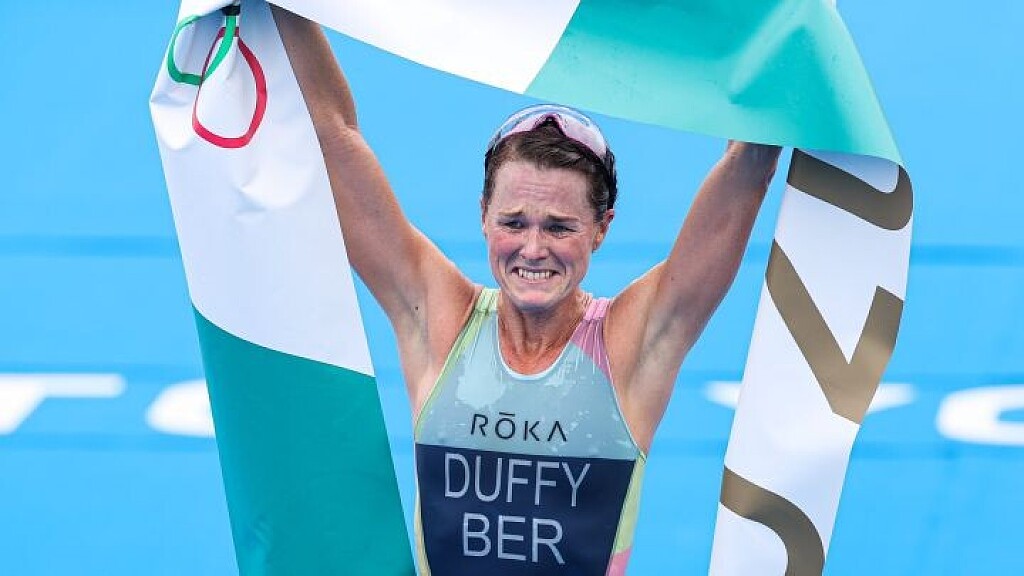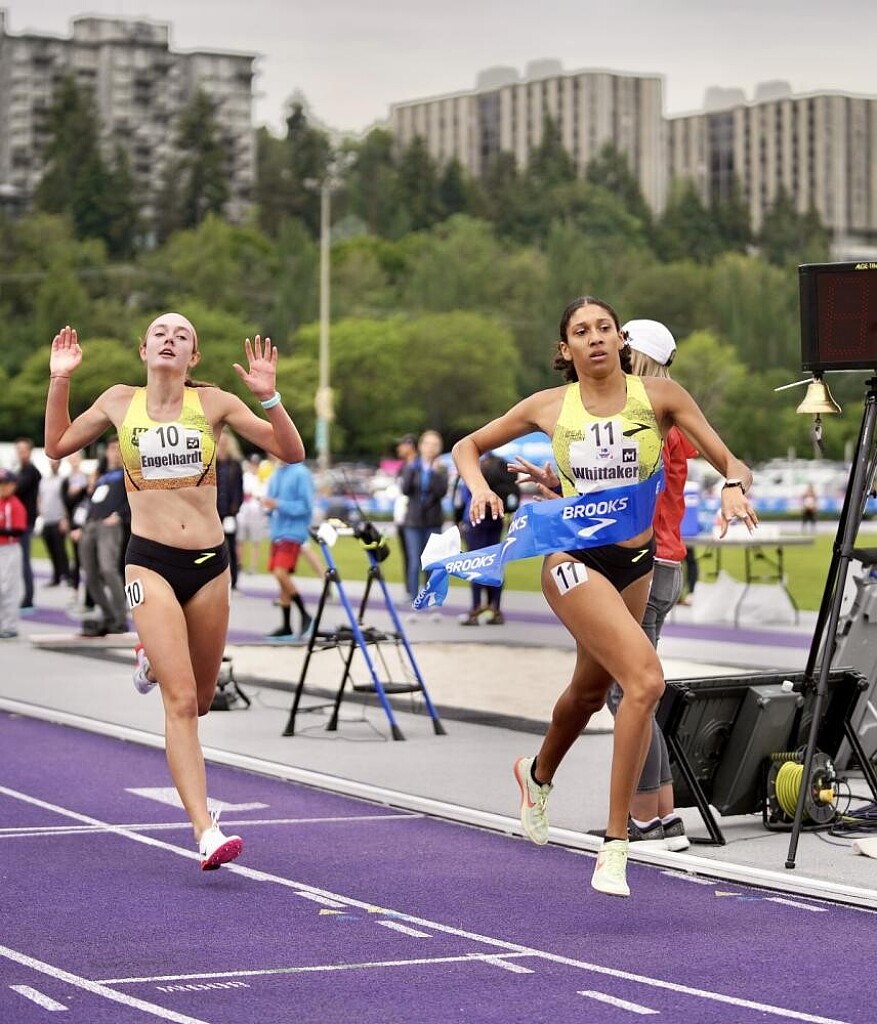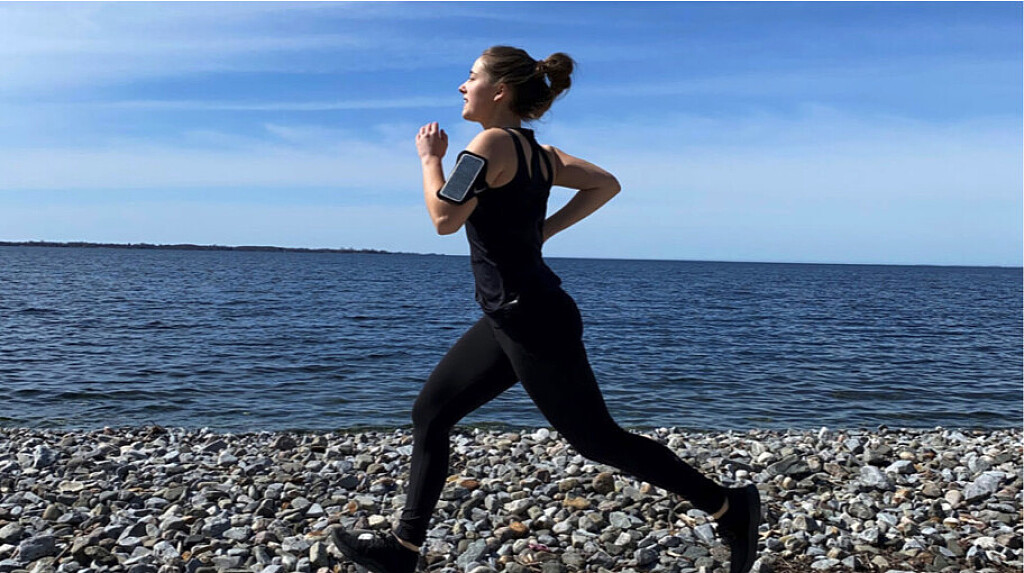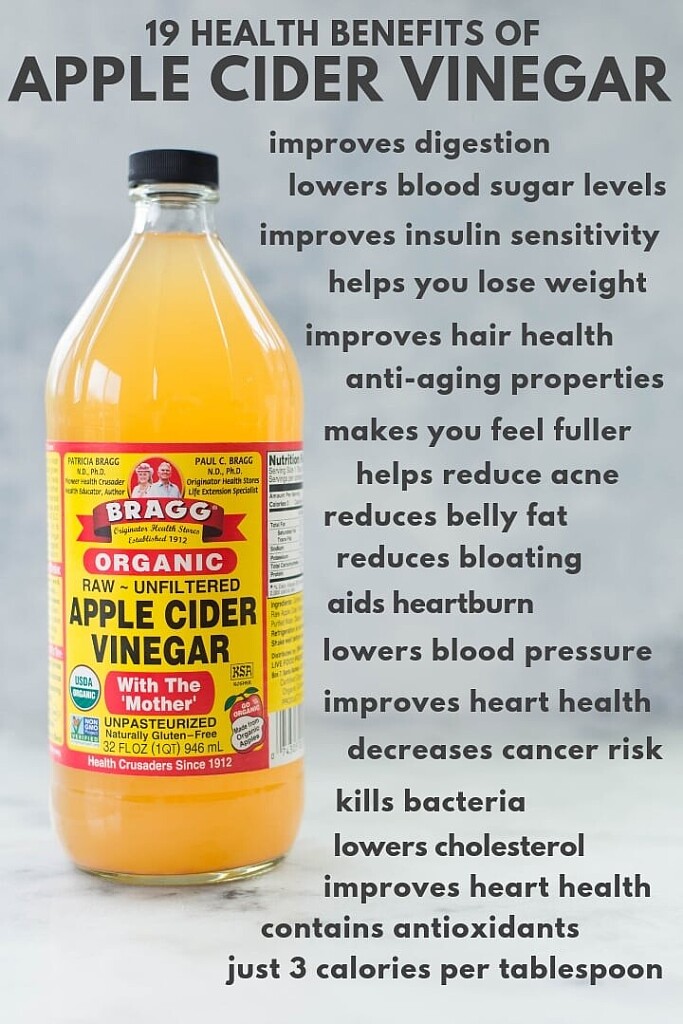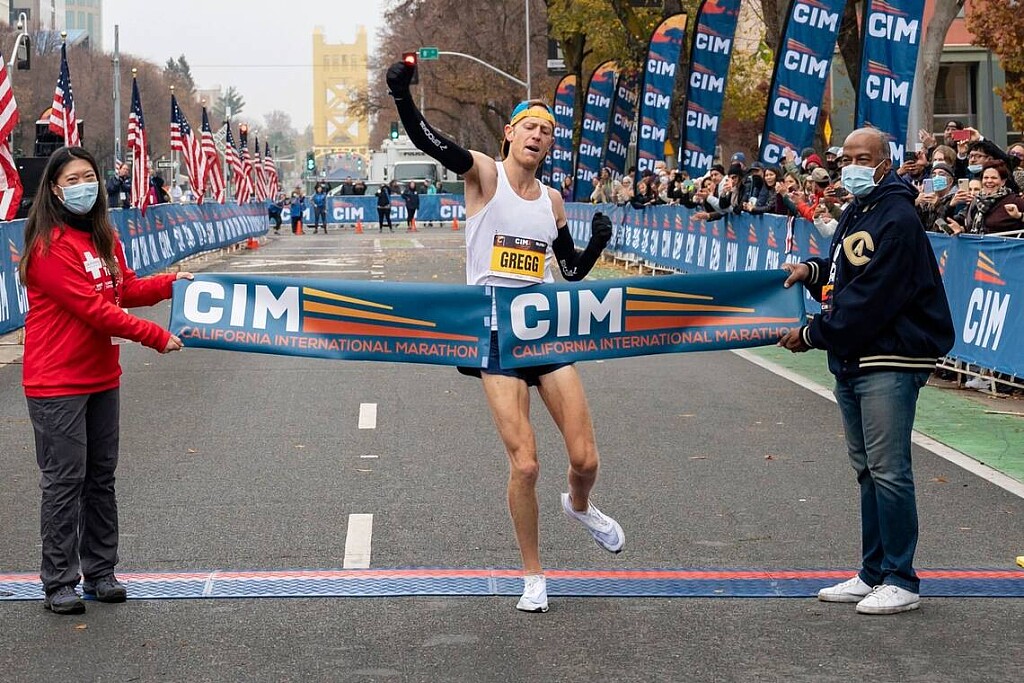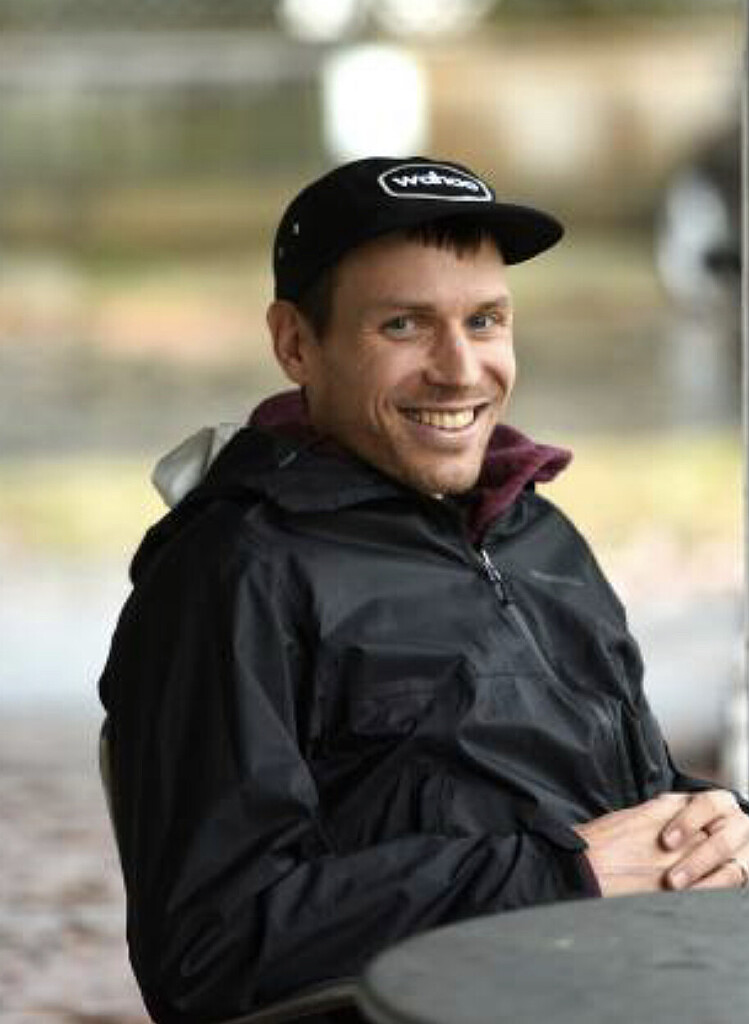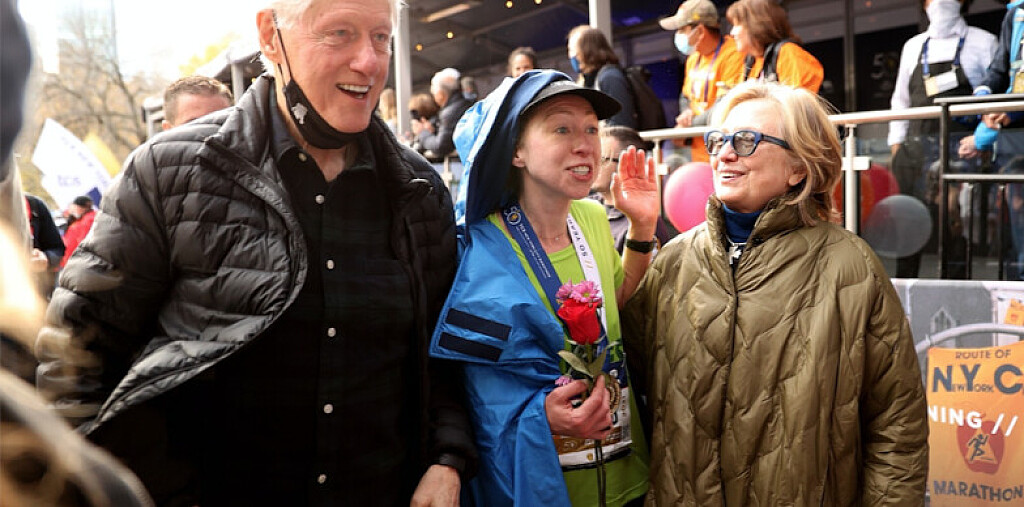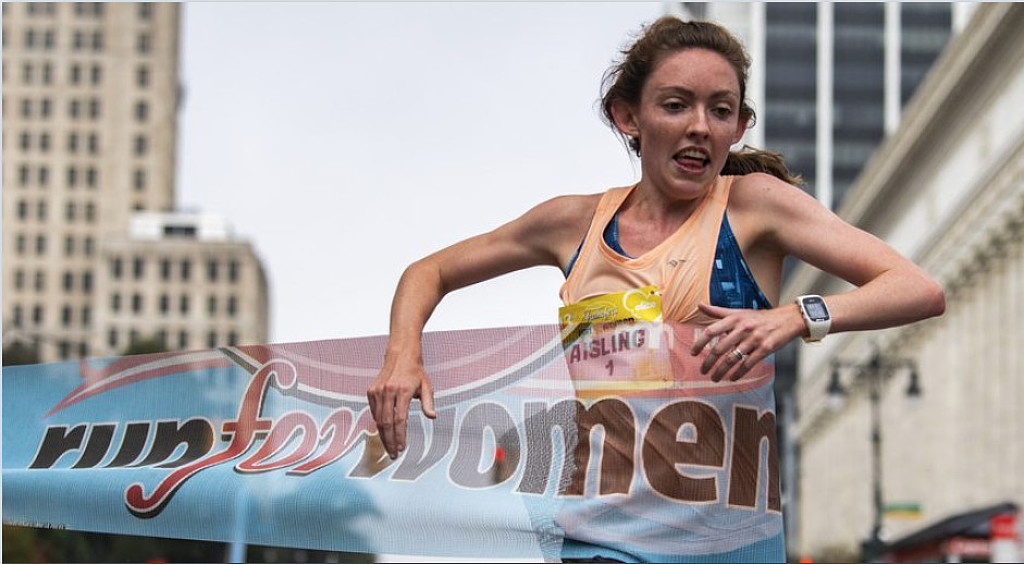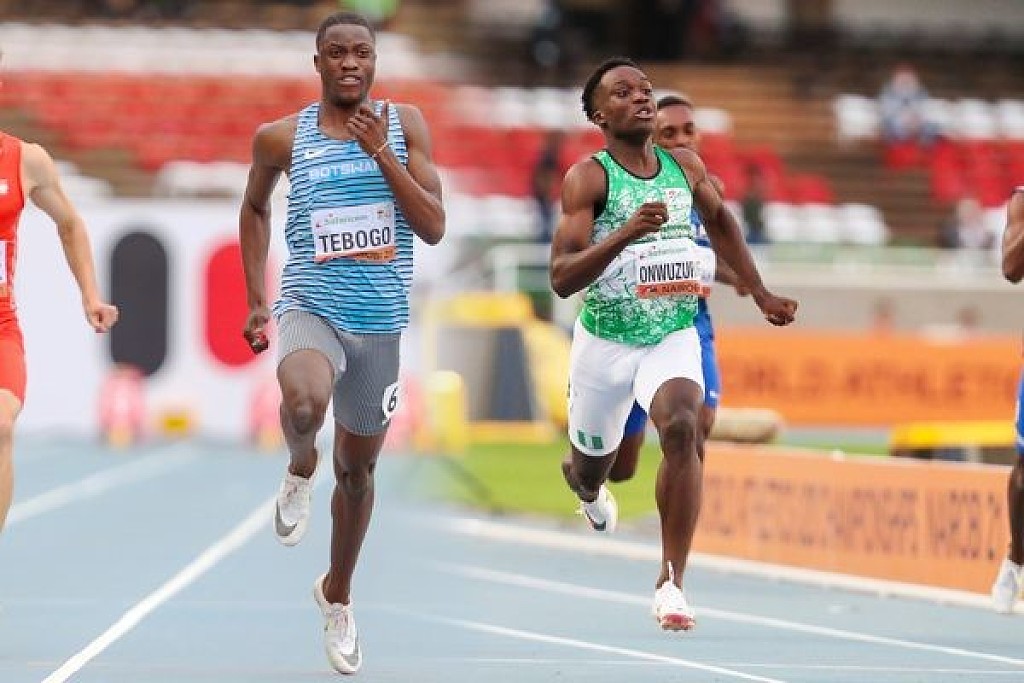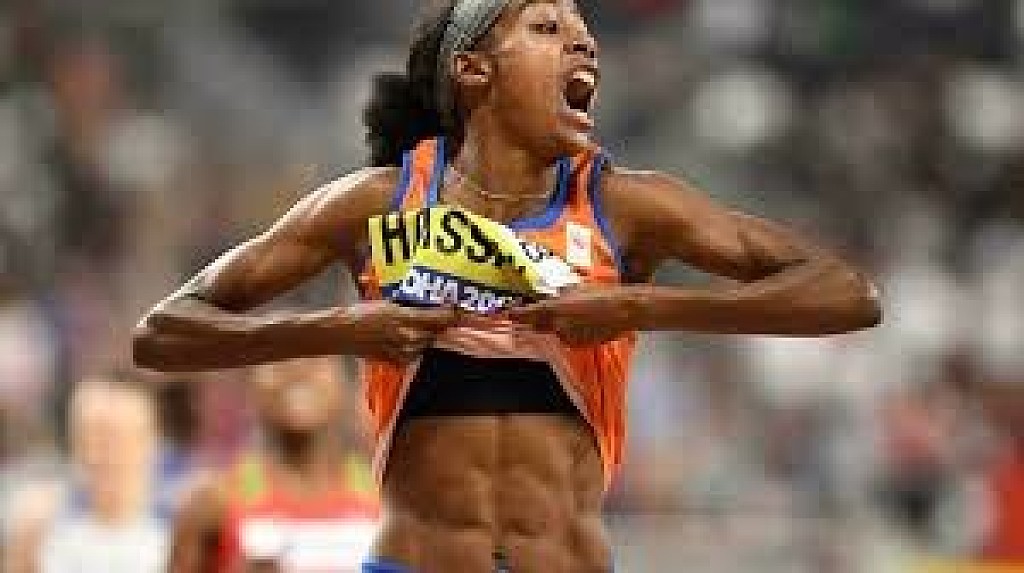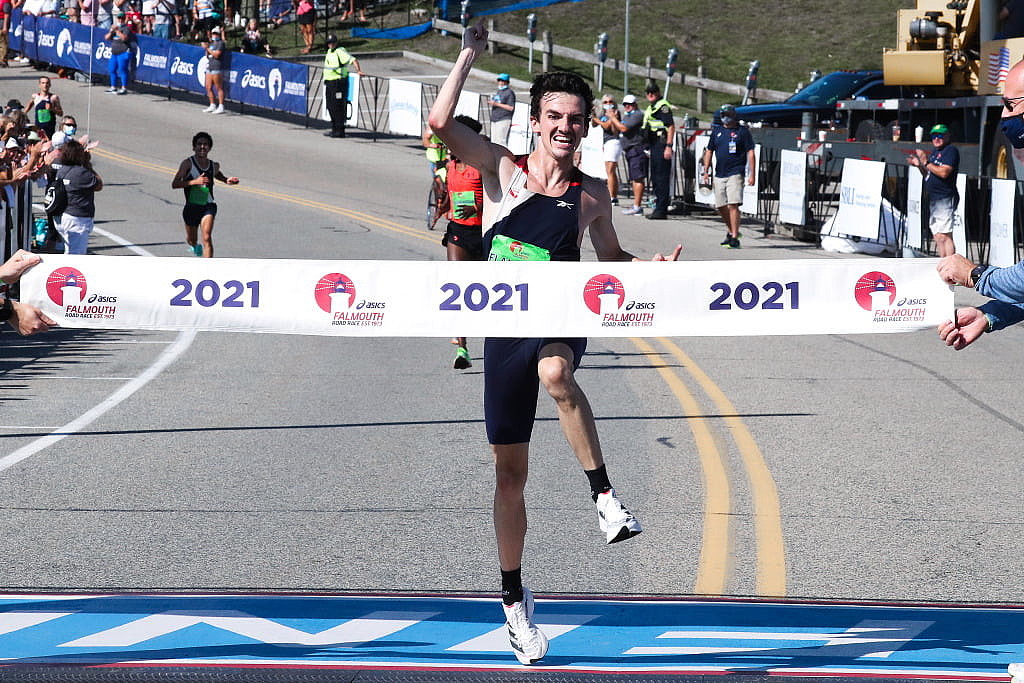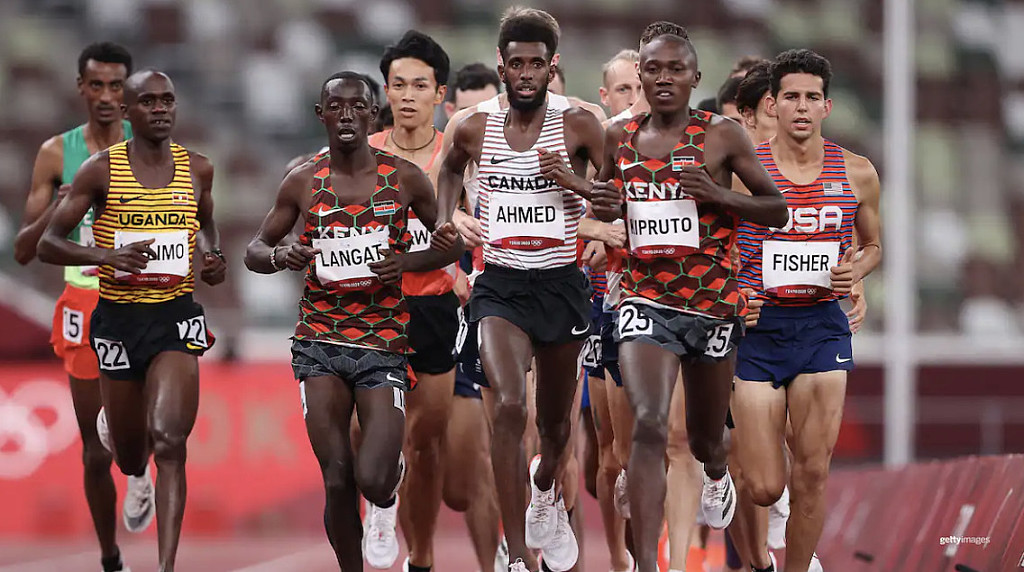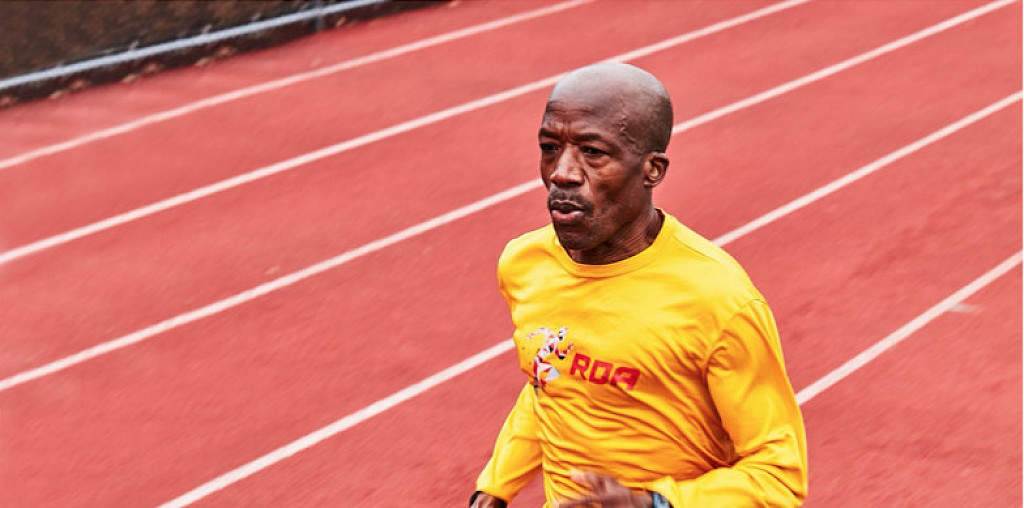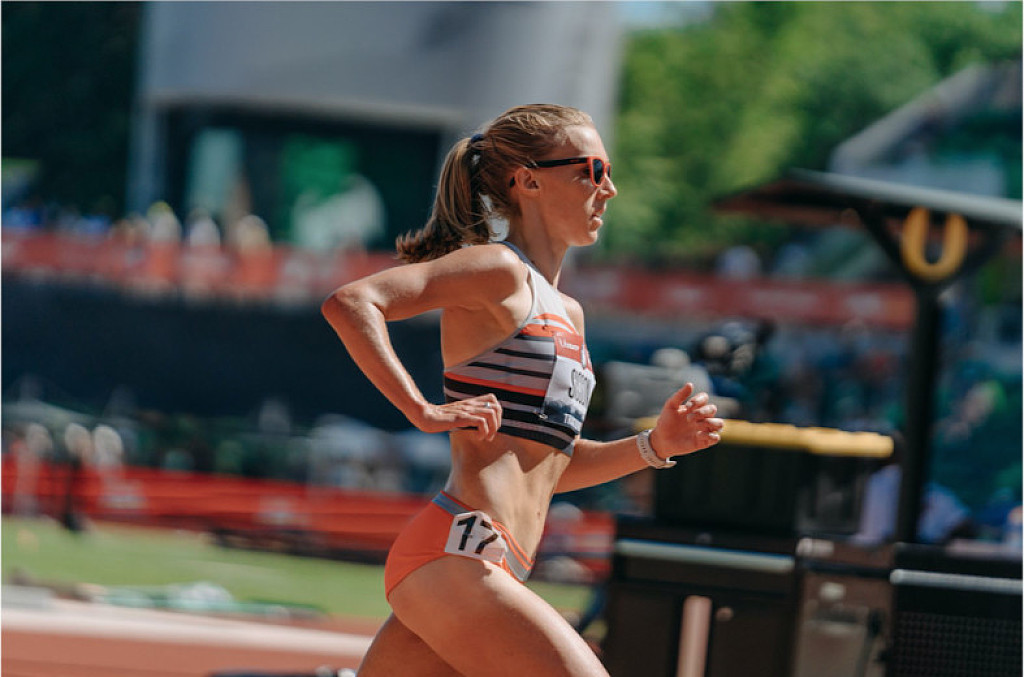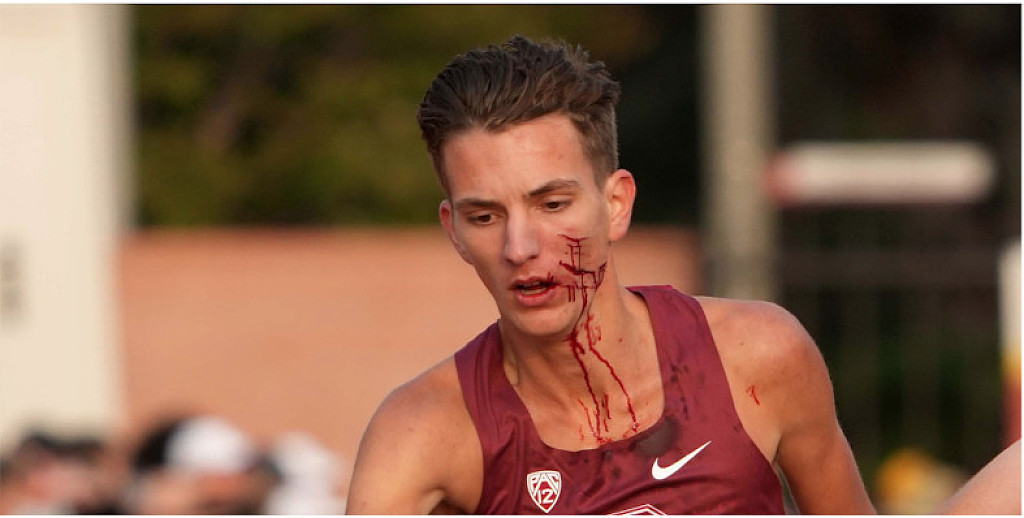Running News Daily
Running News Daily is edited by Bob Anderson. Send your news items to bob@mybestruns.com Advertising opportunities available. Train the Kenyan Way at KATA Kenya and Portugal owned and operated by Bob Anderson. Be sure to catch our movie A Long Run the movie KATA Running Camps and KATA Potato Farms - 31 now open in Kenya! https://kata.ke/
Index to Daily Posts · Sign Up For Updates · Run The World Feed
Articles tagged #Stanford
Today's Running News
This is How Running Fuels Creativity
Running is often celebrated for its physical benefits, but its impact on mental processes, particularly creativity, is equally noteworthy. Many individuals find that engaging in a run helps clear their minds and fosters innovative thinking. This article delves into the connection between running and enhanced creativity, supported by scientific research and anecdotal experiences.
The Science Behind Running and Creativity
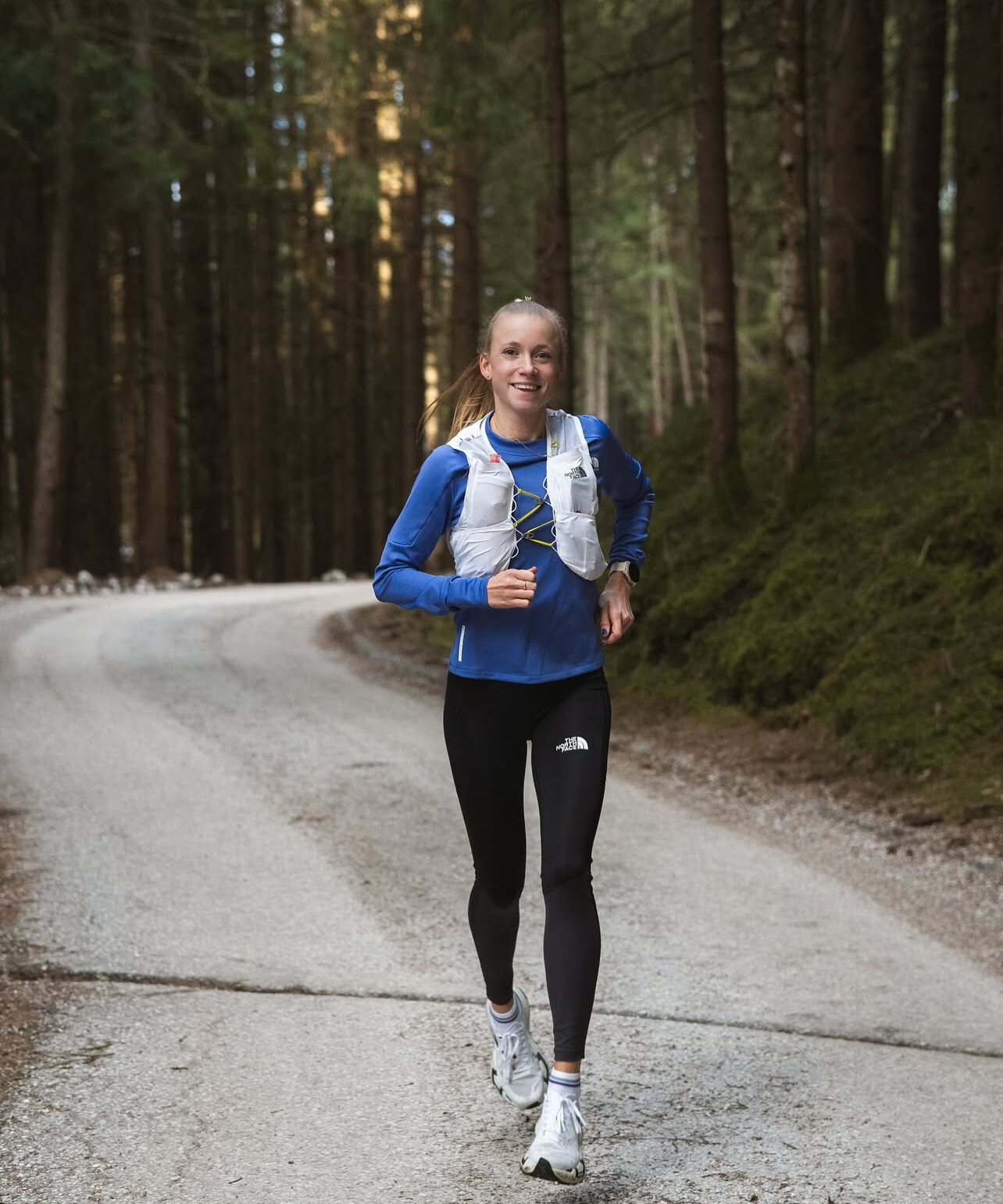
A pivotal study from Stanford University in 2014 revealed that walking can significantly boost creative ideation. Participants exhibited higher levels of creative thinking while walking compared to sitting, suggesting that physical movement stimulates divergent thinking—the ability to generate multiple solutions to a problem .

Further research indicates that aerobic exercises like running increase blood flow to the brain, enhancing cognitive functions and stimulating creativity. This heightened brain activity facilitates the formation of new connections, promoting innovative thought processes.
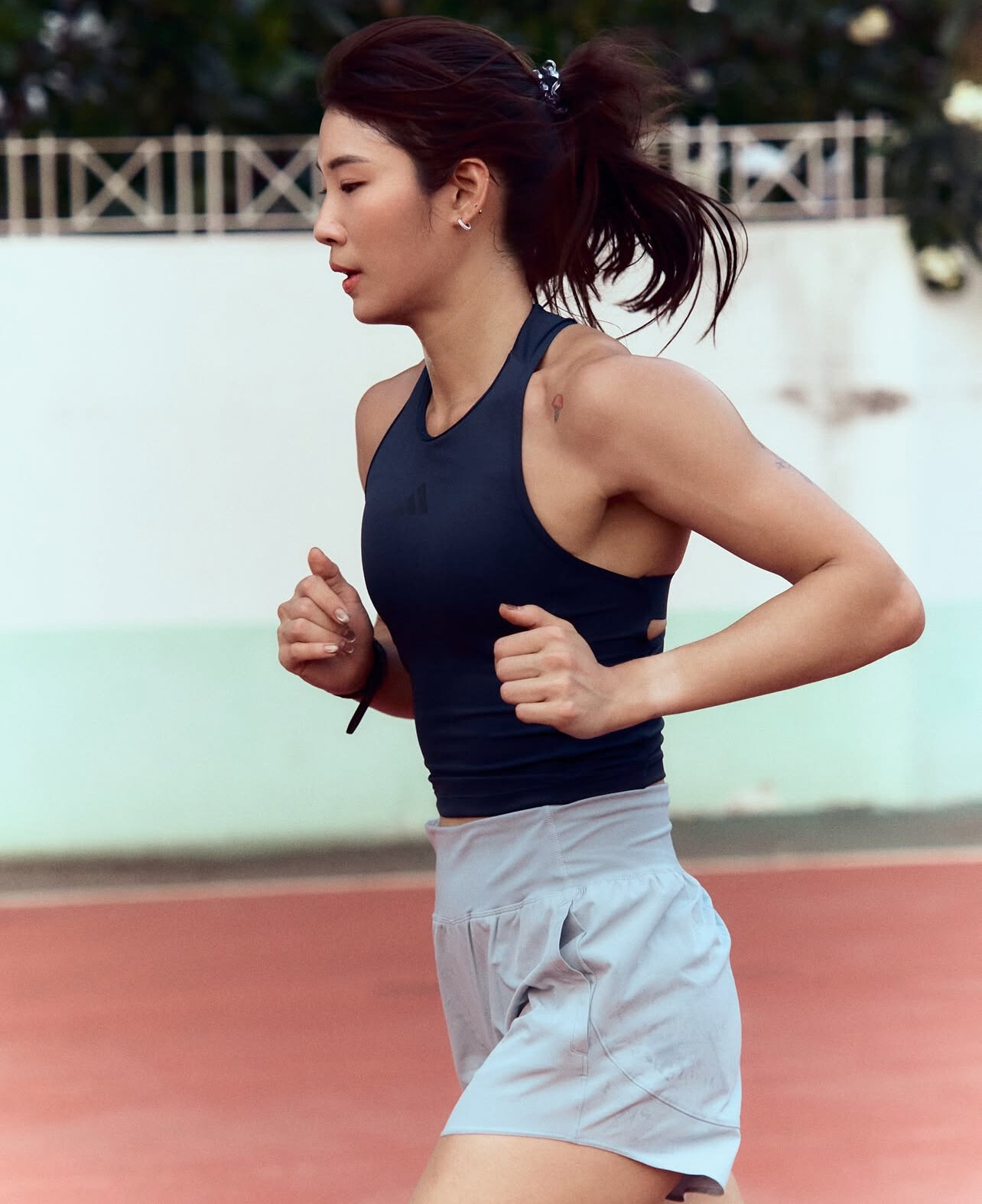
Neurochemical Influences
Running induces the release of endorphins and dopamine, neurotransmitters associated with mood elevation and motivation. These chemicals not only contribute to the well-known “runner’s high” but also play a role in enhancing creative thinking by improving mood and reducing stress .
Practical Implications
Incorporating running into one’s routine can serve as a catalyst for creative thinking. Whether facing a challenging project or seeking inspiration, a run can provide the mental clarity needed to approach problems from new angles. The combination of physical activity and mental relaxation creates an optimal environment for creativity to flourish.
Running offers more than just physical health benefits; it serves as a powerful tool for enhancing creativity. By engaging in regular runs, individuals can tap into improved cognitive functions, mood elevation, and innovative thinking. So, the next time you’re seeking inspiration, consider lacing up your running shoes and hitting the pavement.
by Boris Baron
Login to leave a comment
Grant Fisher Wins Grand Slam Track 5000m in Jamaica, Leading U.S. Sweep and Taking Home $100,000
The U.S. distance team dominated under the lights in Kingston, Jamaica April 4 as Grant Fisher captured the men’s 5000m title on opening night of the Grand Slam Track series, earning $100,000 and recording the biggest international outdoor win of his career.
Fisher surged to the front with 600 meters to go and never looked back, crossing the line in 13:00.25, a world-class season opener. He was followed by Cooper Teare, who finished second in 13:01.74, and Dylan Jacobs, who rounded out the American sweep with a time of 13:04.10.
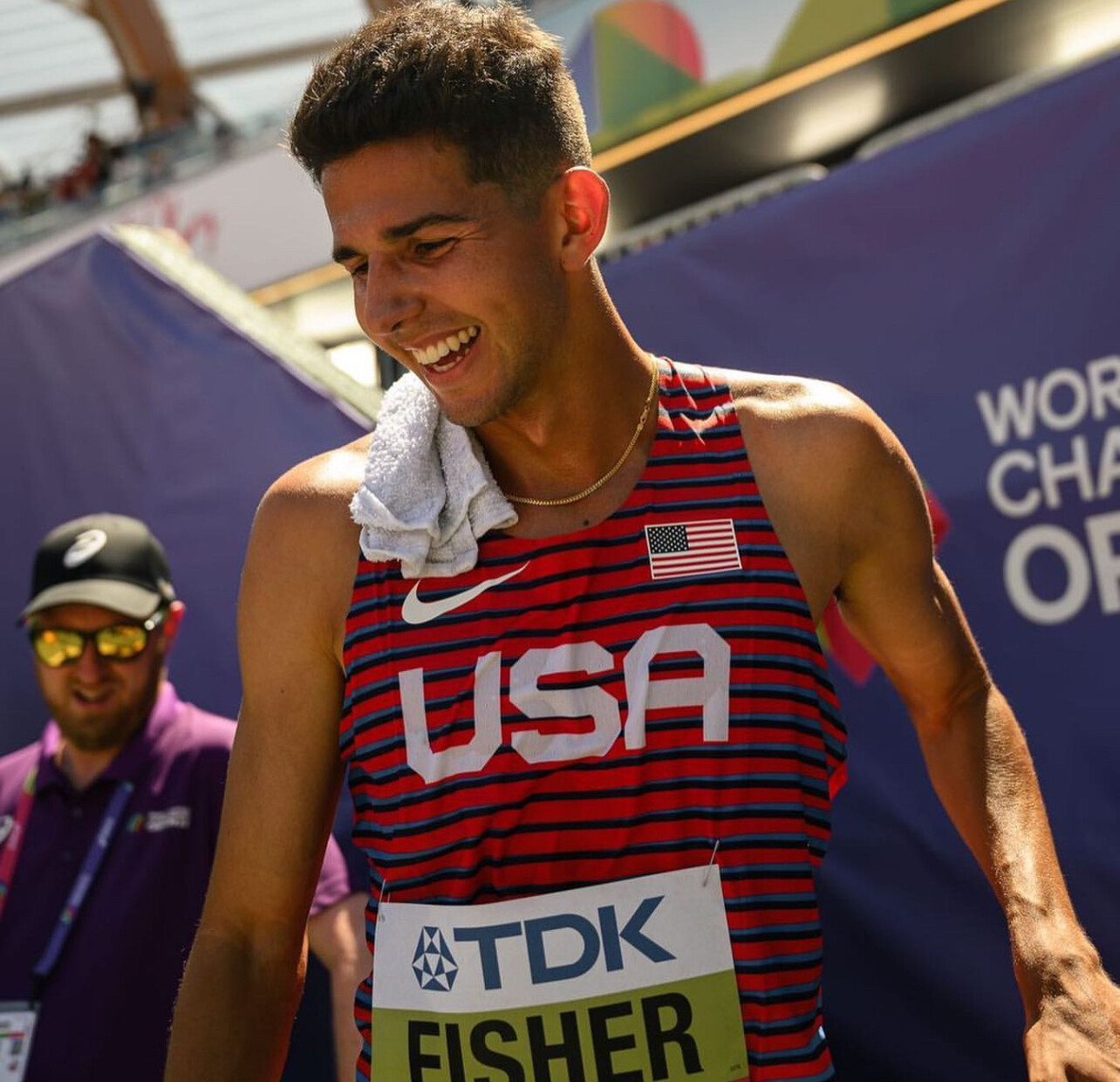
“It felt good to get out and compete,” Fisher said post-race. “This series is something new, and it’s exciting to be part of something that brings big-time racing to new places. Jamaica was loud, fast, and fun.”
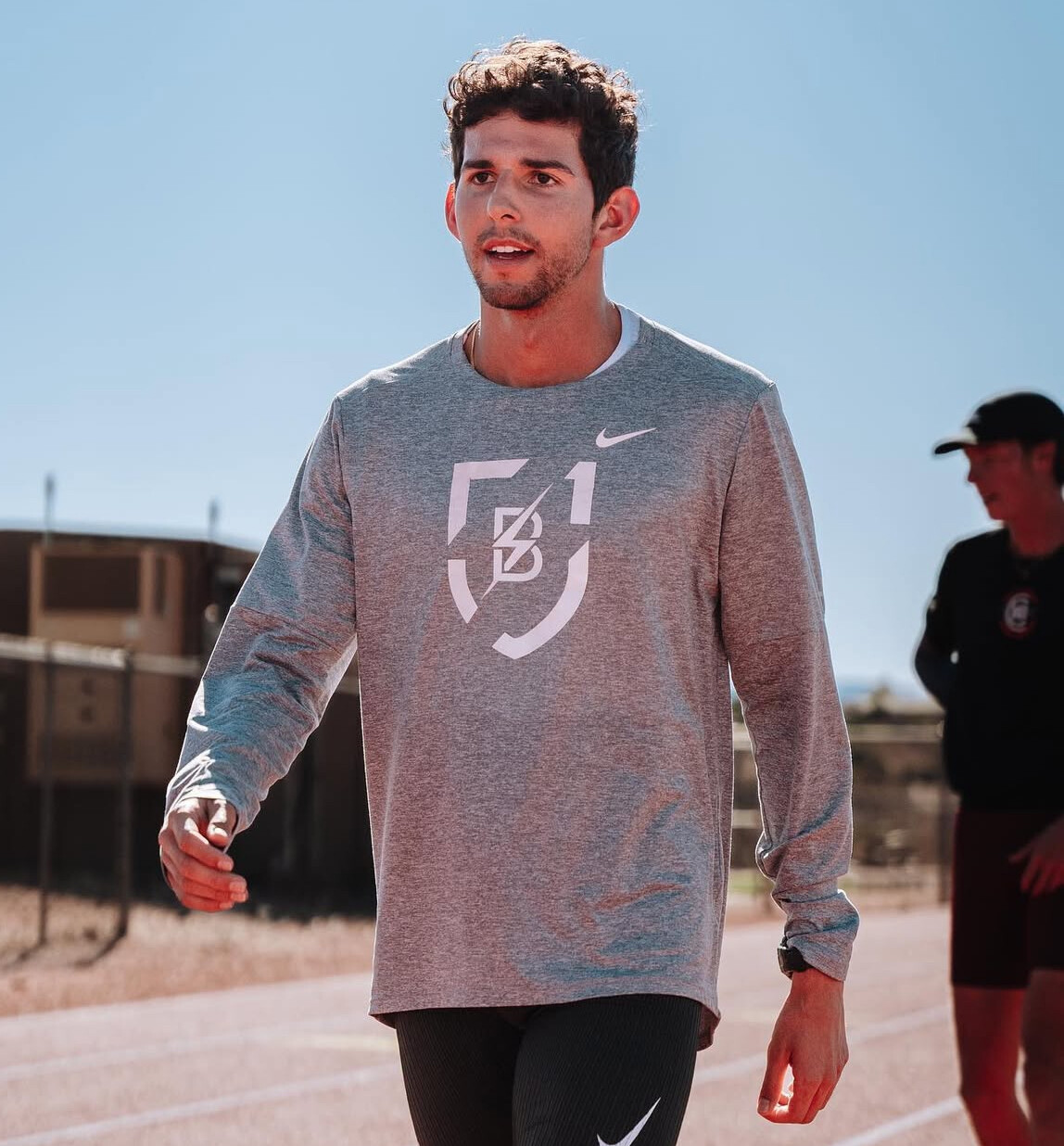
This was the debut event of the Grand Slam Track series, designed to bring elite track and field to new global venues with big prize money and a fan-first atmosphere. The Kingston crowd delivered with high energy, and the athletes responded with one of the fastest early-season 5000m races ever run on Jamaican soil.
Fisher, a two-time Olympian and former Stanford standout, walked away not just with a win, but with one of the largest single-race payouts in track distance running history—$100,000 for first place. The prize money is part of Grand Slam Track’s mission to elevate the sport and reward top-tier performances.
The U.S. sweep sends a powerful message heading into the heart of the 2025 season. With the next Grand Slam Track meet on the horizon, Fisher and his teammates have momentum—and the world is watching.
by Boris Baron
Login to leave a comment
Running Through Stanford: Bob Anderson’s Favorite Routes Across One of the Most Scenic Campuses in the World
For over a decade, Bob Anderson — founder of Runner’s World and My Best Runs — has made the beautiful campus of Stanford University part of his regular training routine. Logging more than 40-60 runs per year, Bob doesn’t just show up for a loop or two. His connection to the campus is personal, purposeful, and deeply rooted in over ten years of consistent miles.
The Campus: Where Beauty Meets Variety
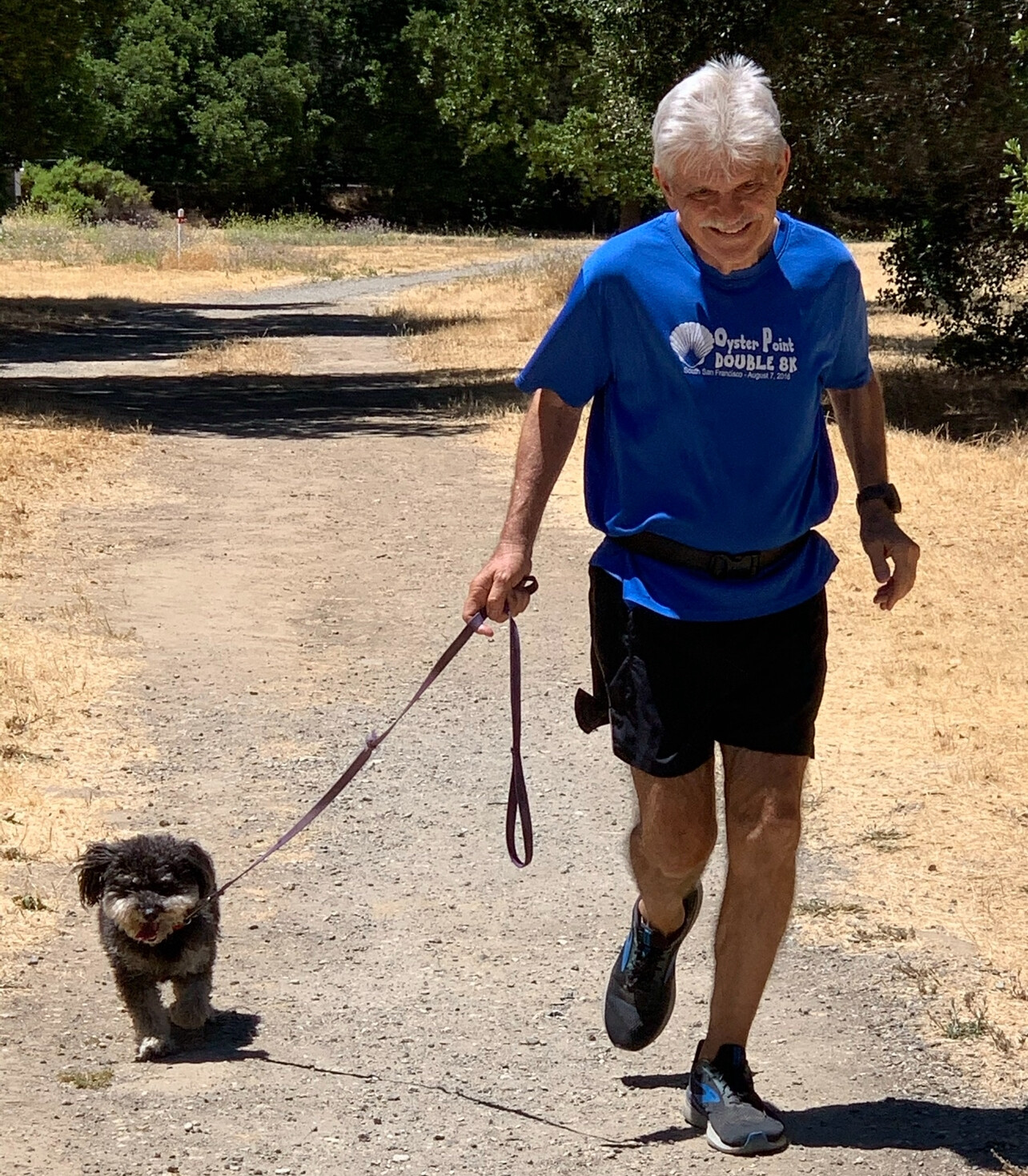
Stanford’s campus is one of the largest in the world, covering more than 8,000 acres in the heart of Silicon Valley. For runners, it’s a dream.

The terrain is varied and forgiving, with a blend of smooth bike paths, tree-lined sidewalks, dirt trails, and open stretches that feel more like parkland than a college campus. Runners pass by iconic sandstone buildings, the Rodin Sculpture Garden, and expansive green spaces that invite both focus and reflection. The Hoover Tower stands tall in the background, offering a visual anchor point during longer runs.
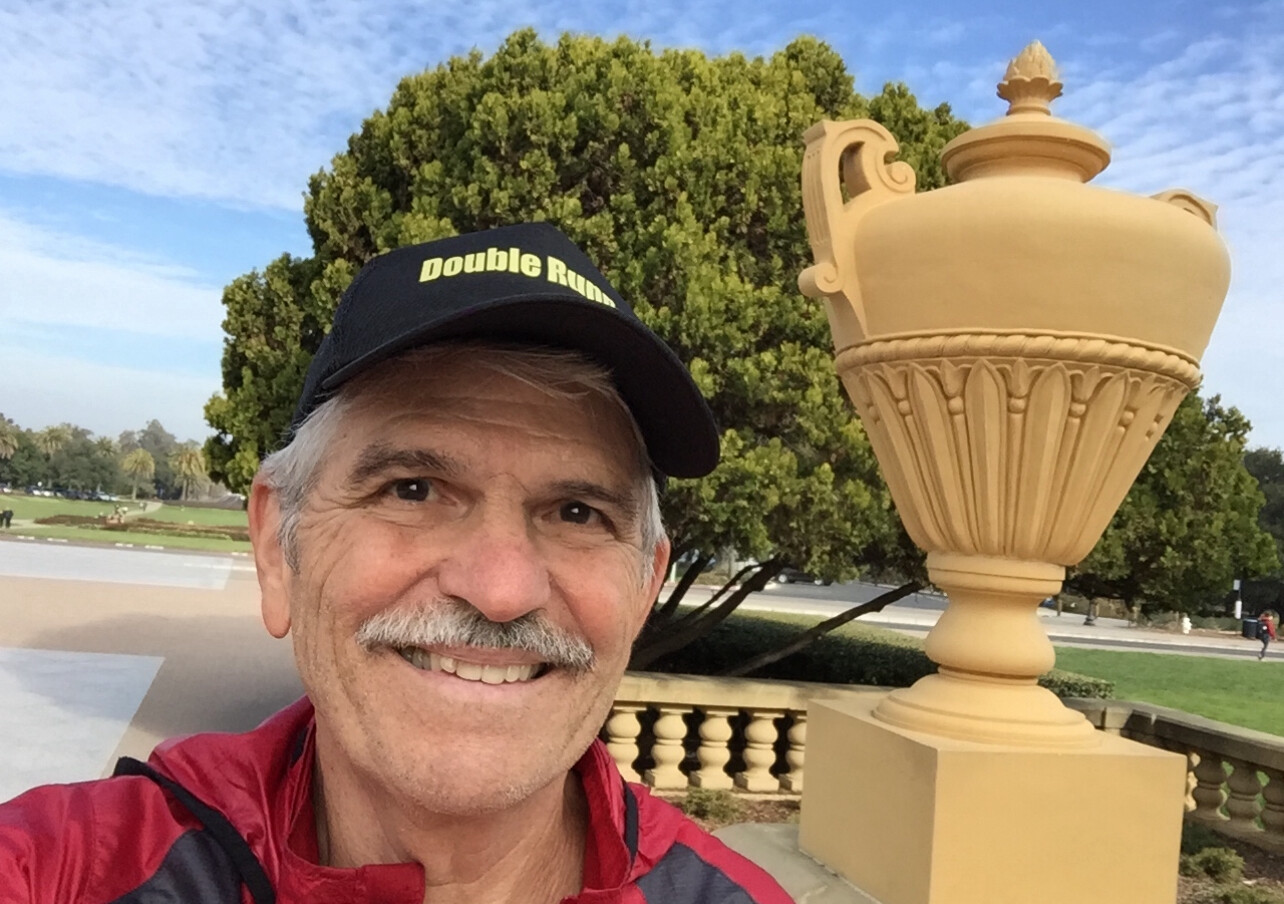
Whether you’re doing intervals on the flats or cruising through rolling paths near the Arboretum, Stanford has the kind of range that keeps every workout interesting.

Bob’s Go-To Route: From Los Altos to Coupa Café
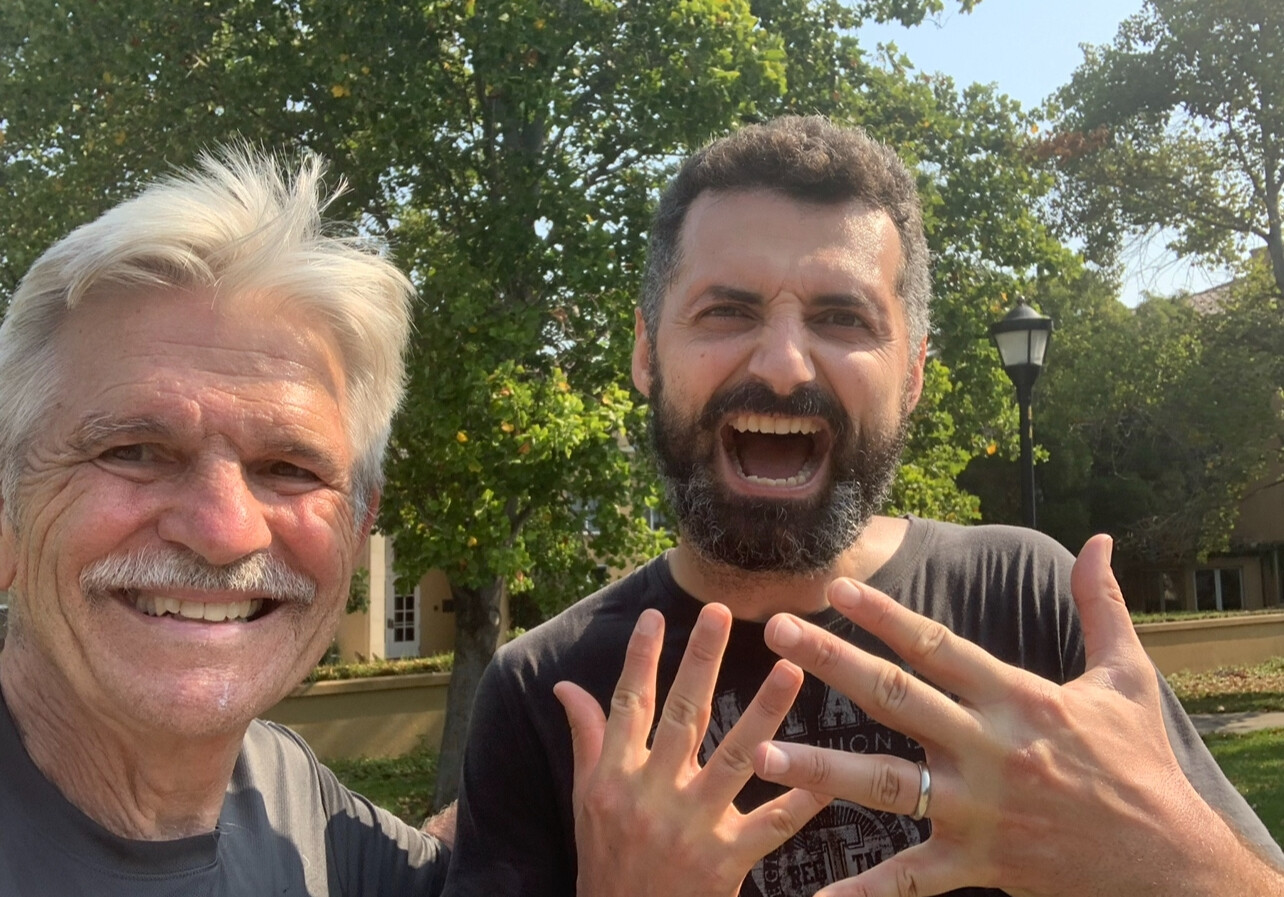
Bob typically begins his run from his home in Los Altos, covering 7.2 miles to Coupa Café on campus. Most days, he runs the first 6.2 miles, then walks the final mile as an active cooldown, enjoying the transition onto Stanford’s peaceful grounds.
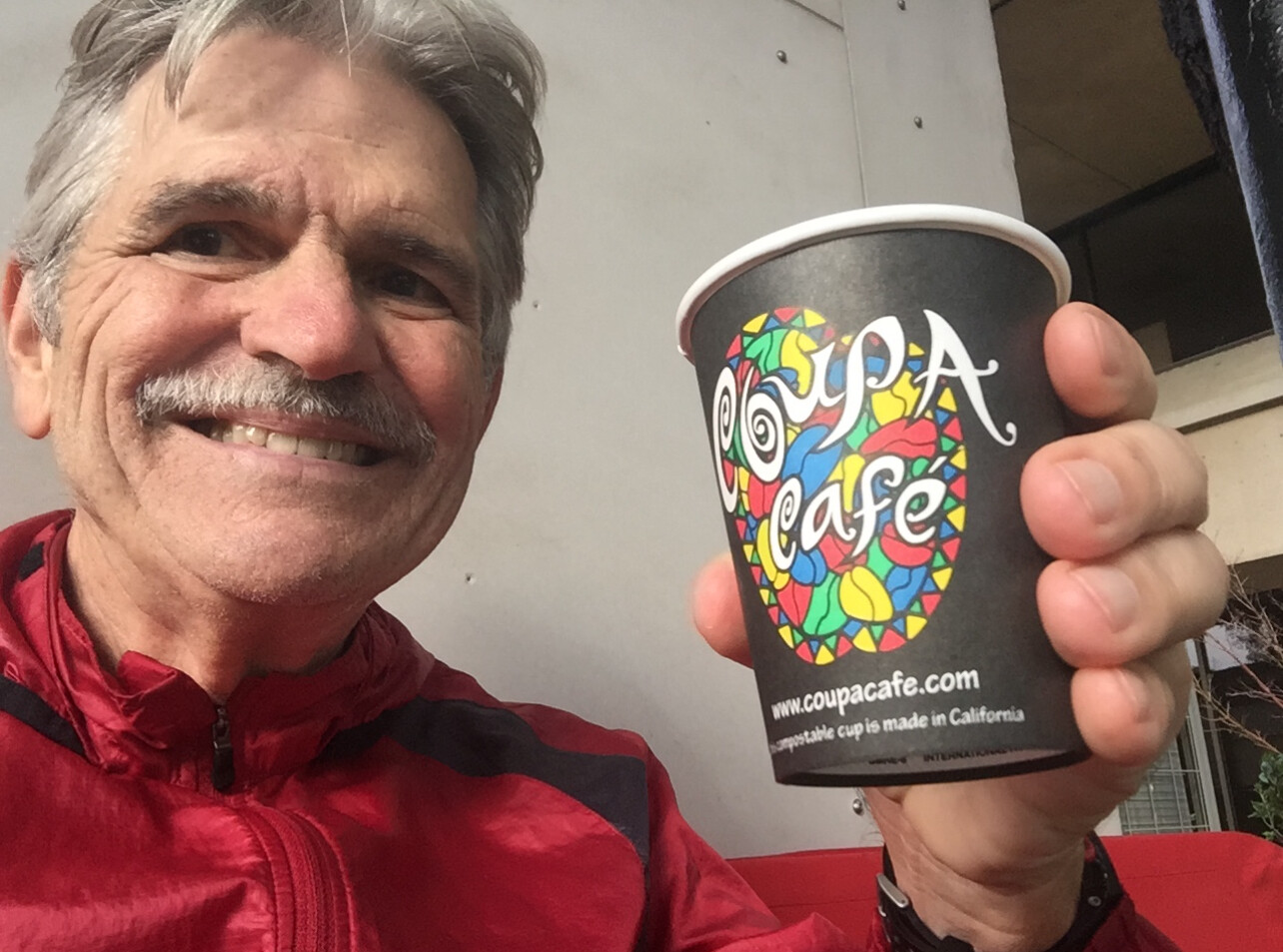
His destination is Coupa Café, a cozy outdoor spot nestled in the heart of Stanford. The stop is part of the ritual: a cup of coffee, a bag of chips, and a bottle of water — simple mid-run fuel that’s become tradition.
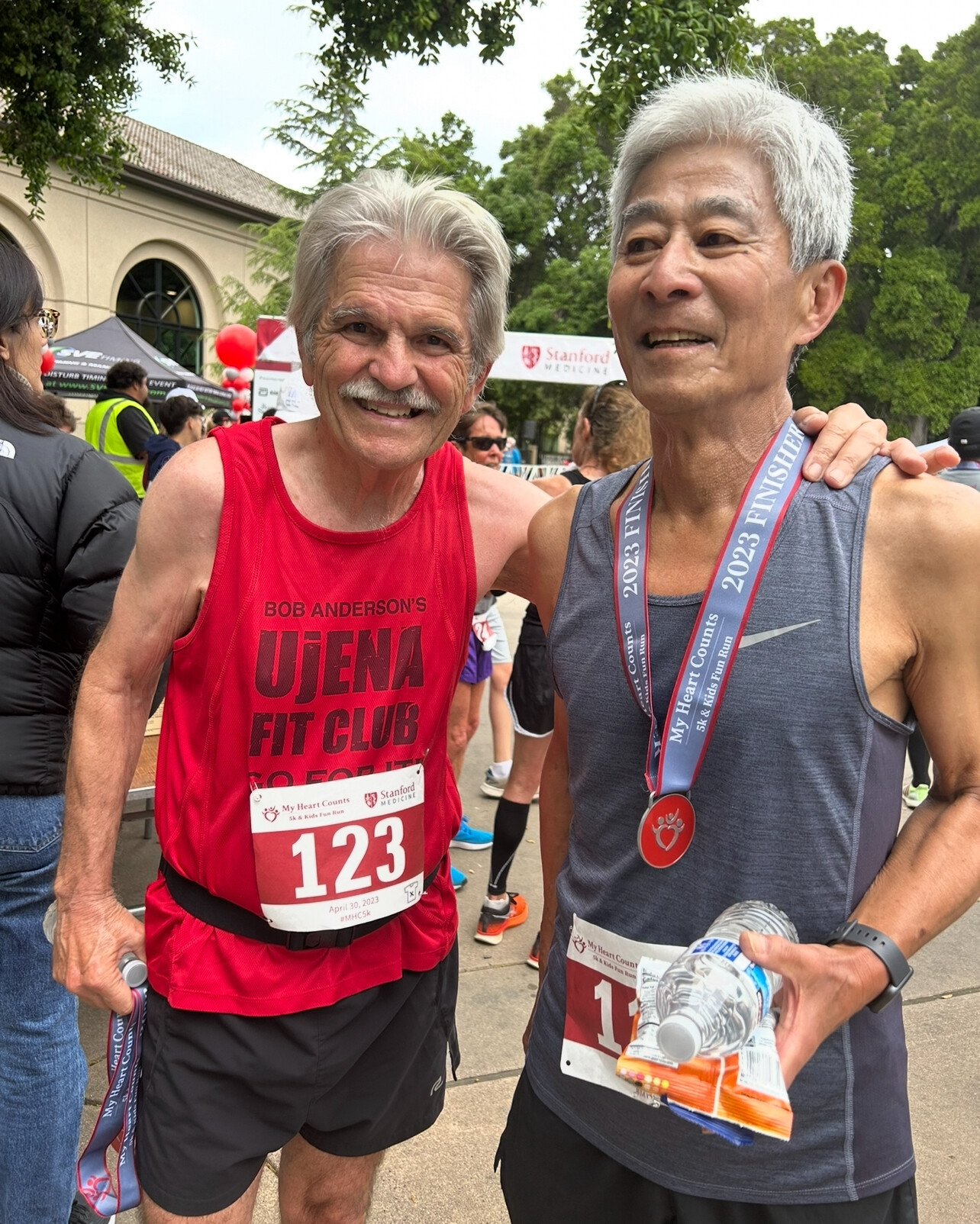
He’s often joined by his friend JR, especially on Sundays, turning the outing into a social run and a weekly catch-up. On Saturdays, his small dog Daisy — a fast, energetic runner — tags along. Daisy has even clocked sub-8-minute miles over 10K distance, holding her own on the longer efforts.
The 10-Mile Loop: A Long Run Favorite
Another favorite in Bob’s training rotation is a 10-mile run that also starts in Los Altos. He reaches Stanford around mile 6.5, then finishes the last 3.5 miles weaving through the most scenic parts of campus. (Sixth photo after the 10 with JR)
He wraps up the 10-miler at — where else? — Coupa Café, before taking in a post-run walk of about a mile to his pickup spot, where his wife meets him. It’s a perfectly designed effort that blends physical training with relaxation and reflection.
Why Stanford Works for Runners
• Safe and runner-friendly: Wide bike paths, sidewalks, and pedestrian zones.
• Scenic and ever-changing: Between the architecture, gardens, and trails, there’s always something new to notice.
• Flat and fast: Ideal for tempo runs, recovery jogs, or long efforts.
• Quiet corners: Great for solo runs or mindful movement.
• Accessible: Easily reached from surrounding cities, especially by foot from Palo Alto or Los Altos.
Some Final Thoughts
Stanford University isn’t just a world-class institution — it’s also one of the best places to run in the Bay Area. For Bob Anderson, it has become a cornerstone of his running life.
Whether it’s a seven-mile effort with coffee in the middle or a strong ten-mile long run with a relaxing walk to follow, Stanford delivers miles with meaning — shared with friends, family, and even a four-legged training partner named Daisy.
“There’s something about that campus that keeps calling me back,” Bob says. And after just one run through Stanford, it’s easy to understand why.
Bob has also run many races on the Stanford campus and many people have joined him at Coupa cafe. "If you have not explored the campus you should put it on your to do list," says Bob.
There are many races that run through the Stanford campus as well. The last photo is one Bob ran.
by Boris Baron
Login to leave a comment
Exploring Different types of running and what is the best
The route you choose can make or break a run It can turn an ordinary workout into an adventure or leave you counting down the miles wishing it was over Over the years I’ve tackled just about every type of running route imaginable and I’ve realized that the layout of a run matters just as much as your shoes pace or playlist
This list focuses on the structure of the route itself not specific training methods like intervals tempo runs or fartleks It’s also not about surfaces so no debate here between grass sand pavement or trails And I’m not talking about hill work altitude training or anything else that complicates the joy of simply lacing up and heading out This is about the route you choose and how it shapes the overall experience
1 Point to Point The Ultimate Running Adventure (first photo with JR after our Coupa run)
Without a doubt point to point runs are my favorite There’s something satisfying about starting in one place and finishing somewhere completely different It turns a workout into a journey you’re not just running in circles you’re actually getting somewhere
There are really two ways to approach a point to point run Either you start at home and run to a destination or you get dropped off and run back home I enjoy both depending on the day and the logistics
One of my favorite routes back home in California is running from my house in Los Altos to the Coupa Café on the Stanford campus It’s about 7.2 miles but I almost always stop after 10k or sometimes even sooner and walk the last mile to the café. It's a great way to cool down before sitting down for coffee My wife Catherine often picks me up afterward or sometimes I arrange for a Uber to pick us up.
While in Portugal my go to point to point is running from our little village of Monforte da Beira over to the next village It’s a beautiful 12k or 74 miles and I often run it on Saturday and then walk it with some of our team on Sunday We always end up at a small café where we enjoy coffee water and maybe a little Portuguese pastry
Point to point courses also make for great races Take the Boston Marathon for example You take a bus to Hopkinton and run your way back into the heart of Boston Or the Fontana Half Marathon where you catch an early morning bus up the hill and run all the way back down
2 Loop A Run That Comes Full Circle
Loops come in second for me and for good reason You start and finish at the same spot without the boredom of retracing your steps If you pick the right route you get variety different scenery changing terrain and a clear sense of progress A well planned loop gives you the satisfaction of completion without the mental hurdle of knowing you’ll have to turn around and run everything in reverse
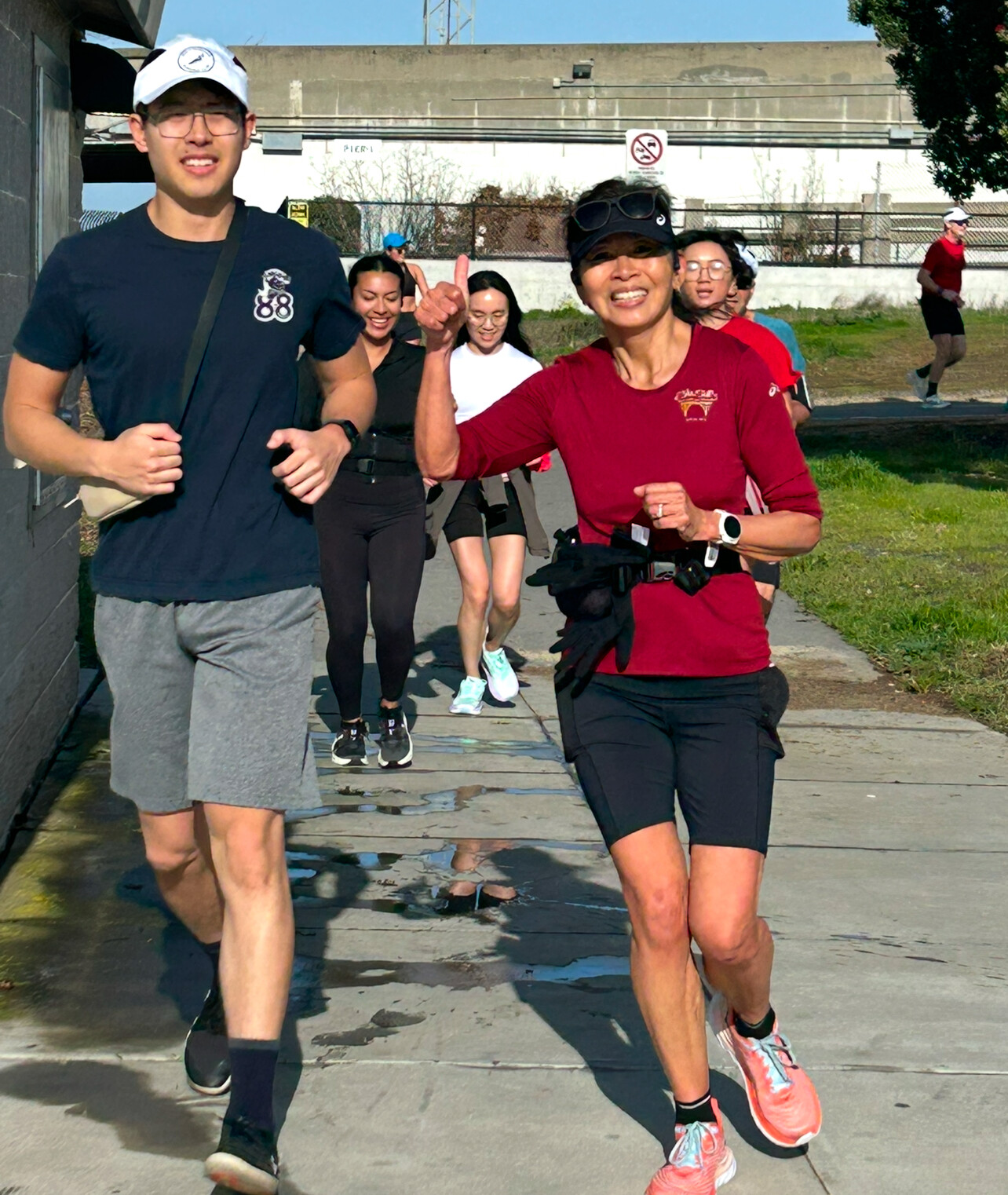
3 Out and Back Reliable and Straightforward (second photo 5.7 mile run with club)
Out and back runs are the workhorses of training I’ve done countless miles this way because they’re easy to plan and execute Pick a spot run halfway turn around and head home There’s a mental boost when you hit the turnaround you’re officially on the way back It might not be as exciting as point to point or a loop but it’s practical and sometimes that’s all you need
4 Laps Consistency with a Side of Speed (third photo doing intervals at Foothill College)
Lap running comes in fourth mostly because it’s more about training than adventure Most of my lap runs happen on a track but I’ve also done them around city blocks or larger circuits Laps are perfect for progressive runs where you pick up the pace with each loop The beauty here is certainty you know exactly how far you’re going even without a GPS watch It’s also great for mental toughness There’s something about pushing through lap after lap that builds resilience
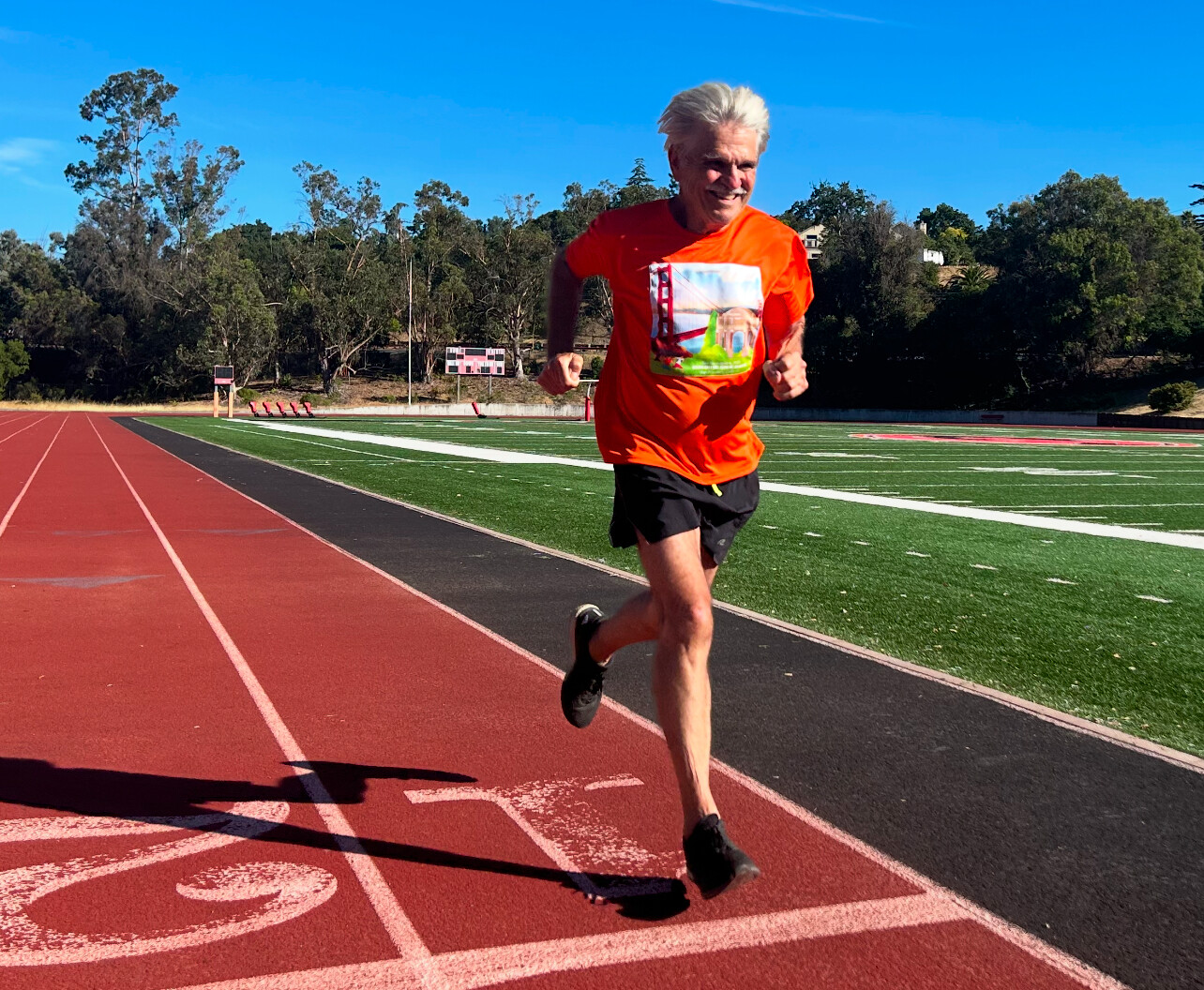
5 Treadmill The Last Resort
Technically treadmill running isn’t a route but it’s a type of running worth mentioning It’s my least favorite but I can’t deny it has its place I’ve probably only logged ten treadmill runs in my life and I’ve never quite mastered the form I always find myself gripping the side rails to keep balance That said I do remember one treadmill session in Quebec City It was freezing outside with four feet of snow so I hit the hotel gym and hammered out ten miles at a 620 per mile pace holding the railing the whole way It was my best treadmill experience but in general I’ll take the open road any day
In the end every type of running has its place Some days you need the adventure of a point to point run Other days a simple out and back gets the job done Whatever the route the key is finding joy in the miles After all the best run isn’t just about pace or distance it’s about how the journey makes you feel And if that journey ends with a good coffee and great conversation even better
by Bob Anderson
Login to leave a comment
Grant Fisher: The Rise of America’s Distance Running Star and His Path to Success
Grant Fisher came within a fraction of a second of Olympic gold in the 10,000 meters at the 2024 Paris Games, narrowly missing the top spot in one of the closest finishes in the event’s history.
It had been 60 years since an American had last won the race, and sitting in the stands that day was Billy Mills, the man who pulled off that legendary upset in Tokyo in 1964. Fisher’s performance was a powerful moment that linked generations of American distance running, proving that while technology and training have evolved, the spirit of competition remains unchanged.

Fisher has emerged as one of the greatest distance runners in American history. He holds the world indoor record in the 3000 meters, as well as American records in the two-mile, 5000 meters, and 10,000 meters.
His performances at the 2024 Olympics—bronze medals in both the 5000 and 10,000 meters—cemented his status as a world-class athlete, making him the first American to medal in both events at the same Olympic Games.
Early Life and High School Achievements
Fisher grew up in Grand Blanc, Michigan, where he attended Grand Blanc High School. In addition to running, he was an avid soccer player and a member of the Michigan Wolves, an elite-level club team. His high school running career was marked by significant achievements, including being named Gatorade Player of the Year for cross country for the 2013–2014 and 2014–2015 seasons. On June 4, 2015, he became the seventh American high school student to run a mile under four minutes, clocking 3:59.38 at the Nike Festival of Miles.
Collegiate Success at Stanford University
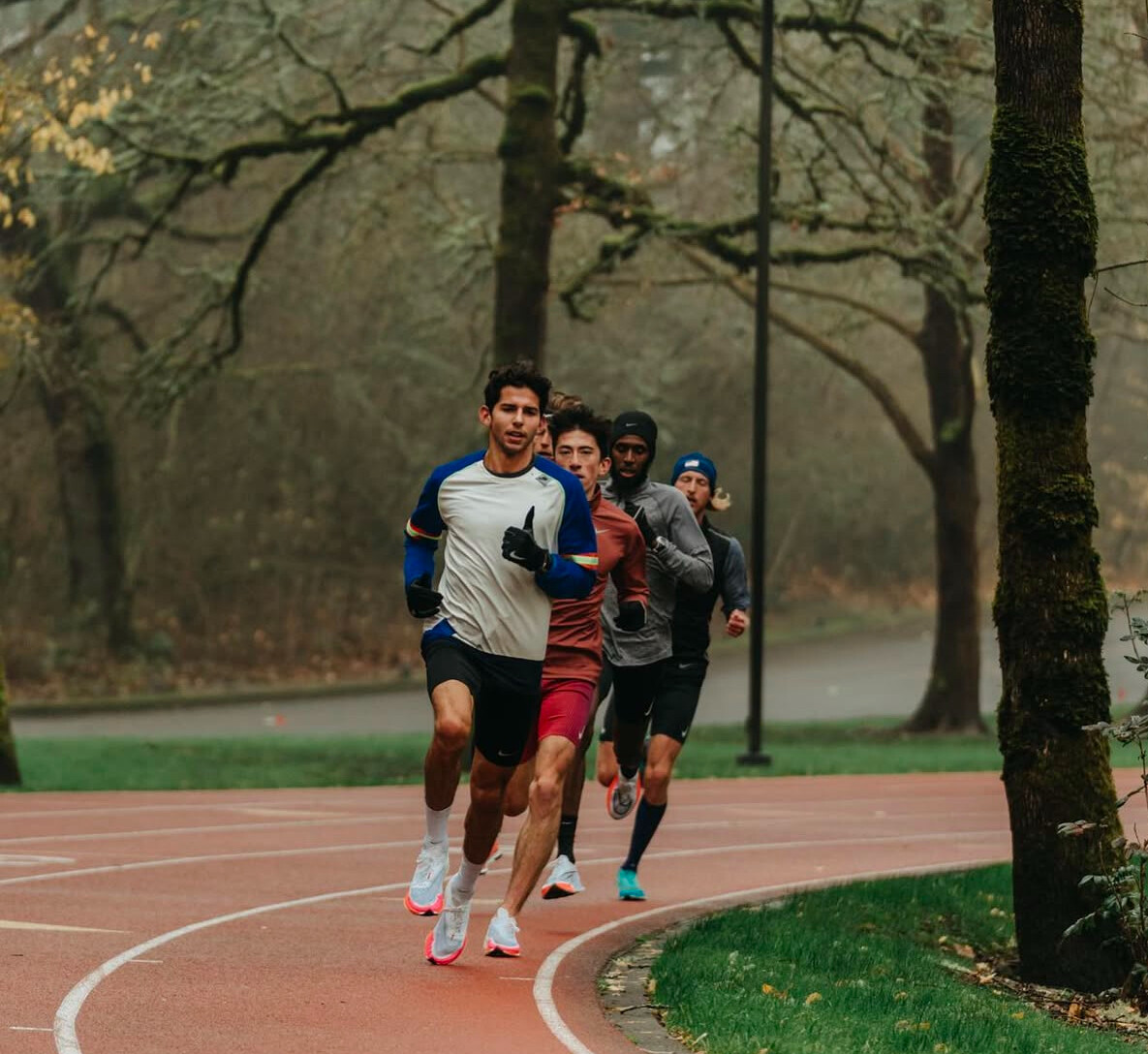
Fisher attended Stanford University, where he continued to excel in both cross country and track. He was an eleven-time All-American and won the 2017 NCAA Outdoor Track and Field 5000m championship, becoming the first American underclassman to do so in 28 years.
Transition to Professional Running
After graduating from Stanford, Fisher turned professional and joined the Bowerman Track Club, training under coach Jerry Schumacher. He continued to make significant strides in his professional career, setting personal bests and national records in various events.
Training Philosophy and Coaching
In late 2023, Fisher made a pivotal change by relocating to Park City, Utah, to train under his former high school coach, Mike Scannell. This move was aimed at optimizing his training environment, taking advantage of Park City's high altitude to enhance his physiological response to training. Fisher's training regimen focuses on threshold-type sessions, hill repeats, and long runs, with an emphasis on consistency and gradual progression.
Olympic Achievements
At the 2024 Paris Olympic Games, Fisher delivered outstanding performances:
10,000 meters: Fisher secured a bronze medal with a time of 26:43.46, narrowly missing the silver in a photo finish. This achievement made him the first American to medal in the men's 10,000 meters since Galen Rupp in 2012.
5000 meters: Fisher earned his second bronze medal, finishing in 13:15.13. He executed a strong final lap, moving from ninth to third place, showcasing his tactical acumen and finishing speed.
This race was one of the most thrilling finishes in Olympic history, with Fisher just 0.32 seconds behind Uganda’s Joshua Cheptegei, who set a new Olympic record of 26:43.14. The difference between gold and bronze was razor-thin, and it took a photo finish to determine the final placements.
Recent Achievements
On February 8, 2025, at the Millrose Games, Fisher set a new world indoor record in the 3000 meters, finishing in 7:22.91. This performance underscored his position as one of the premier distance runners globally.
Personal Bests
Grant Fisher's progression in the sport is highlighted by his impressive personal records across various distances:
1500 meters: 3:34.90 (June 9, 2024, New York, New York)
3000 meters: 7:22.91 (February 8, 2025, New York, New York) – World Indoor Record
Two-mile: 8:03.62 (February 11, 2024, New York, New York) – American Record
5000 meters: 12:46.96 (September 2, 2022, Brussels, Belgium) – North American Record
10,000 meters: 26:33.84 (March 6, 2022, San Juan Capistrano, California) – North American Record
These personal bests not only demonstrate Fisher's versatility across distances but also his continuous improvement and commitment to excellence.
Grant Fisher's journey from a high school prodigy to a world-class athlete is a testament to his dedication, strategic training choices, and adaptability. His performance in the 2024 Olympic 10,000 meters was one of the greatest ever by an American, coming within a fraction of a second of gold.
While modern advancements in track surfaces, shoes, and training have contributed to faster times, Fisher’s near-victory proved that at its core, elite distance running is still about tactical intelligence, mental strength, and raw determination—the same qualities that helped Mills secure his iconic gold in 1964.
by Boris Baron
Login to leave a comment
Grant Fisher Clocks a sub Four-Minute Mile to Conclude a 7K Workout
Grant Fisher, one of America's top distance runners, continues to showcase his exceptional fitness and race-readiness. In a recent Track workout Grant closed a demanding 7-kilometer workout with a stunning sub four-minute mile, demonstrating his world-class endurance and speed. The session, held in Chandler, Arizona, was designed to simulate race conditions, ensuring that Fisher is primed for his upcoming season opener.
A Closer Look at the Workout
The workout was structured to test Fisher’s ability to maintain a high level of performance deep into a training session. His coach, Mike Scannell, closely monitored his effort, emphasizing the of controlled fatigue management.
The workout breakdown:
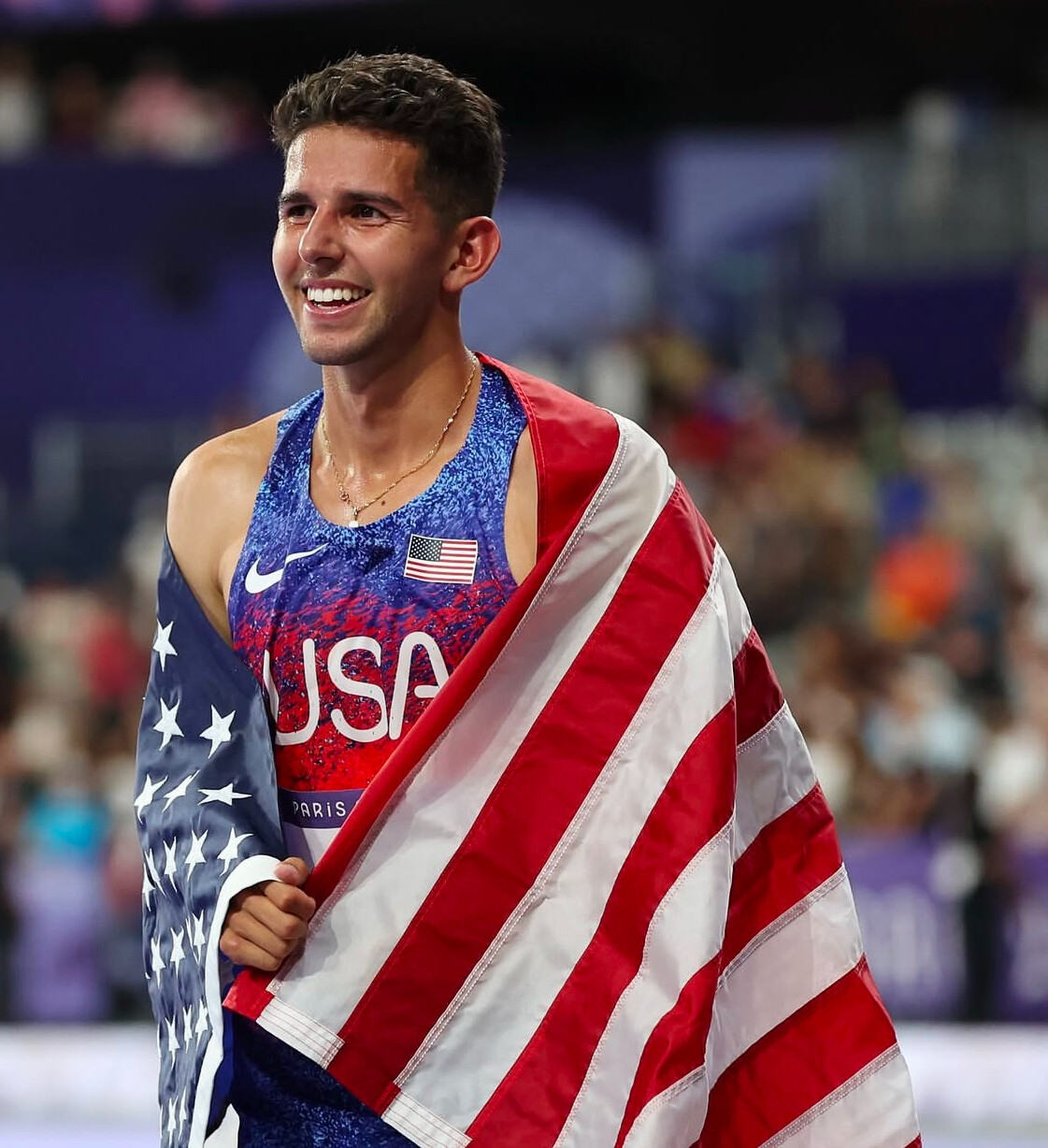
First Segment: A 2,000-meter interval, completed in 5:08.
Second Segment: Four 800-meter repeats, split in 2:06, 2:09, 2:08, and 2:08.
Final Segment: A 1,600-meter effort, where Fisher clocked an astonishing sub 4:00 mile to finish the session.
Between intervals, Fisher took controlled recovery breaks, with coach Scannell monitoring his blood lactate levels to ensure he remained within an optimal training range. Professional runner Sam Gilman assisted in pacing certain portions of the session, helping maintain consistency and push Fisher to his best effort.
A Career Defined by Breaking Barriers
Fisher’s ability to produce elite performances at the highest level is no surprise. Born on April 22, 1997, in Calgary, Alberta, and raised in Grand Blanc, Michigan, Fisher made history as a high schooler when he became the seventh U.S. prep athlete to break the four-minute mile barrier. He achieved this milestone in 2015 at the Festival of Miles in St. Louis, Missouri, clocking a 3:59.38.
After high school, Fisher attended Stanford University, where he further cemented his reputation as a distance-running star. Under coach Chris Miltenberg, he won the 2017 NCAA 5,000m title and earned 12 All-American honors. Fisher’s consistency and tactical intelligence on the track made him one of the most accomplished distance runners in Stanford history.

Turning professional in 2019, Fisher joined the Bowerman Track Club (BTC), training under coach Jerry Schumacher. The move propelled his career to new heights, as he set multiple American records, including:
3,000m: 7:25.47 (2023)
Two-mile: 8:03.62 (2023)
5,000m: 12:46.96 (2022)
10,000m: 26:33.84 (2022)
His performances placed him among the best distance runners in the world. At the Tokyo 2020 Olympics (held in 2021), he finished fifth in the 10,000m and ninth in the 5,000m, proving he could compete at the sport’s highest level.
Paris 2024 and Beyond
Fisher’s steady progression led to historic achievements at the 2024 Paris Olympics, where he became the first American to medal in both the 5,000m and 10,000m in the same Games, earning two bronze medals. This feat solidified his status as one of America’s greatest-ever distance runners.
As he prepares for the 2025 season, Fisher is expected to begin his campaign with a 1,500-meter race at the New Balance Indoor Grand Prix in Boston before focusing on the 3,000m and 5,000m during the indoor season. His long-term goal remains clear: to position himself as a gold medal contender at the 2028 Los Angeles Olympics.
Fisher’s ability to run a sub four-minute mile at the end of an intense workout speaks volumes about his fitness level and training discipline. As he continues to sharpen his form, fans can expect even greater performances from him in the coming months.
by Boris Baron
Login to leave a comment
5 Reasons to run outside all winter—and get stronger, tougher, faster, healthier and happier
In the winter of 1939, when the military posted Swedish miler Gundar Hagg to the far north of that nordic country, he devised a unique training program of running on trails through knee- or hip-deep snow. Most days he would do 2500 meters in snow for strength, followed by 2500 meters on a cleared road for turn-over. But during those times when he couldn’t find cleared roads—sometimes for weeks—he’d run up to the full 5-kilometers in snow. The next summer he set huge PRs, coming within one second of the mile world record.
Hagg continued his routine in subsequent winters, devising a hilly 5K loop in a different locale that trudged through snowy forest for 3000 meters then ended with a 2000 meter stretch of road where he could run at full speed. He kept improving, and the summer of 1942 he set 10 world records between the 1500 and 5,000 meters.
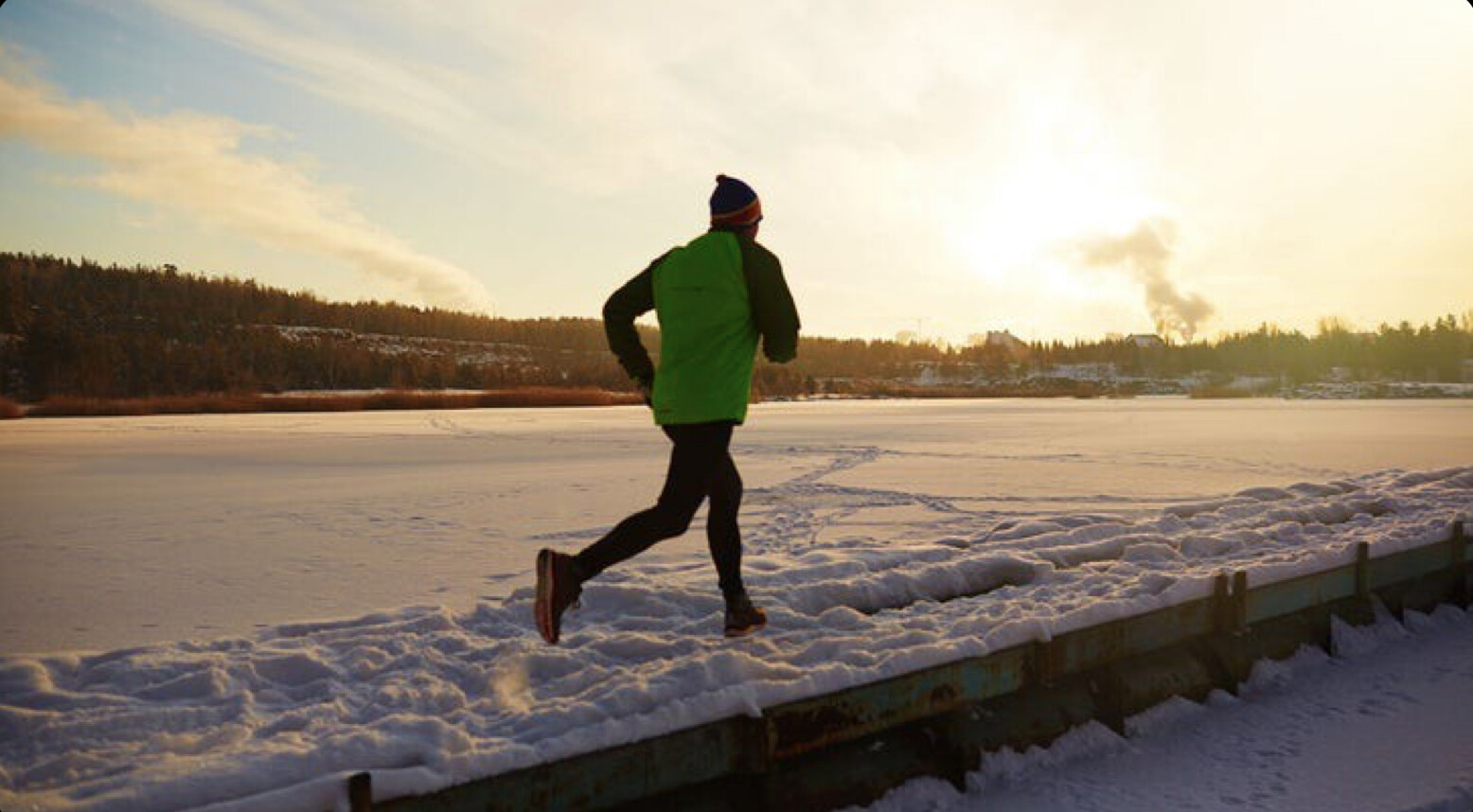
While Hagg’s routine was created out of necessity, he obviously valued the snowy training. When he moved to a city with a milder climate, he wrote in a training journal, “It will be harder running than any previous year. Probably there won’t be much snow.” And every winter he scheduled trips north to train on the familiar, tough, snowy trails.
Hagg isn’t the only runner who has found winter training valuable. Roger Robinson, who raced internationally for England and New Zealand in the 1960s before setting masters road records in the ‘80s, recalls his training for the deep-winter English cross country championships of the 1950’s and 60s. “We ran, often at race pace, over snow, mud, puddles, deep leaves, ploughed fields, scratchy stubble, stumpy grass, sticky clay, sheep-poo, whatever, uphill and down,” Robinson says. “And thus, without going near a gym or a machine, we developed strength, spring, flexibility, and stride versatility that also paid off later on the road or track; I made one of my biggest track breakthroughs after a winter spent running long intervals on a terrain of steep hills and soft shifting sand.”
Robinson, now 85, with two artificial knees, still runs in the cold and slop. “Running is still in great part about feeling the surfaces and shape of the earth under my feet,” he says.
Hagg and Robinson are of a different generation than those of us with web-connected treadmills that can let us run any course on earth from the comfort of our basement, but they’re on to something we might still benefit from: winter can be an effective training tool. Here are five reasons you’ll want to bundle up and head out regardless of the conditions, indeed, why you can delight when it is particularly nasty out.
1) Winter Running Makes You Strong
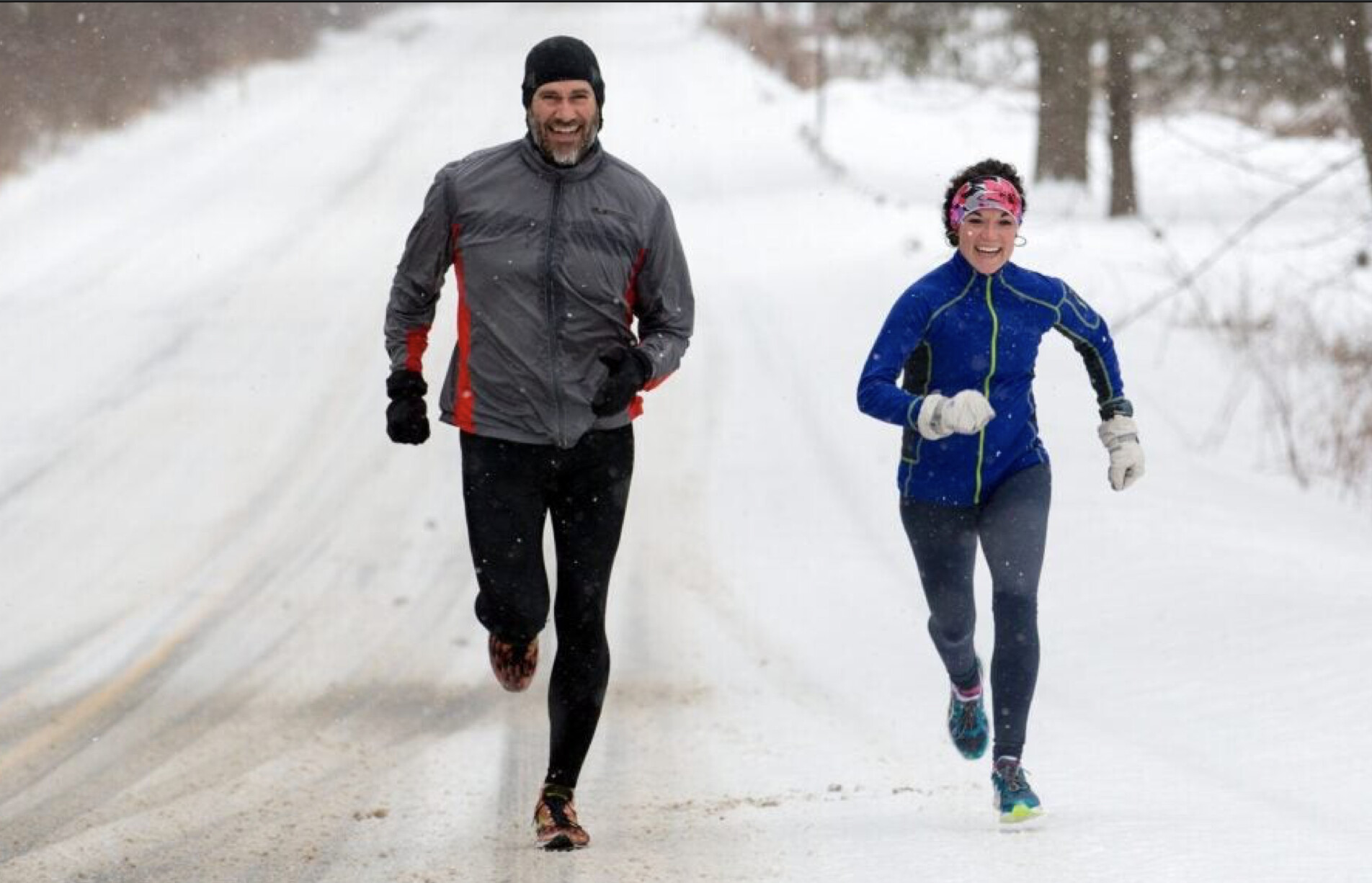
As Hagg demonstrated and Robinson points out, winter conditions work muscles and tendons you’d never recruit on the smooth, dry path. A deep-winter run often ends up being as diverse as a set of form and flexibility drills: high knees, bounds, skips, side-lunges, one-leg balancing.
Bill Aris, coach of the perennially-successful Fayetteville-Manlius high school programs, believes that tough winter conditions are ideal for off-season training that has the goal of building aerobic and muscular strength. He sends the kids out every day during the upstate New York winter, and says they come back, “sweating, exhausted and smiling, feeling like they have completely worked every system in their bodies.”
2) Winter Running Makes You Tough
No matter how much you know it is good for you and that you’ll be glad when you’re done, it takes gumption to bundle up, get out the door and face the wintry blast day after day. But besides getting physically stronger, you’re also building mental steel. When you’ve battled snow and slop, darkness and biting winds all winter, the challenges of distance, hills and speed will seem tame come spring.
3) Winter Running Improves Your Stride
Running on the same smooth, flat ground every day can lead to running ruts. Our neuromuscular patterns become calcified and the same muscles get used repeatedly. This makes running feel easier, but it also predisposes us to injury and prevents us from improving our stride as we get fitter or improve our strength and mobility. Introducing a variety of surfaces and uncertain footplants shakes up our stride, recruits different muscles in different movement patterns, and makes our stride more effective and robust as new patterns are discovered.
You can create this stride shake-up by hitting a technical trail. But as Megan Roche, physician, ultrarunning champion, clinical researcher at Stanford and Strava running coach, points out, “A lot of runners don’t have access to trails. Many runners are running on flat ground, roads—having snow and ice is actually helpful, makes it like a trail.”
In addition to creating variety, slippery winter conditions also encourage elements of an efficient, low-impact stride. “One thing running on snow or ice reinforces is a high turn over rate and a bit more mindfulness of where your feet are hitting the ground,” Roche says. “And those two things combine to a reduced injury risk.” After a winter of taking quicker, more balanced strides, those patterns will persist, and you’ll be a smoother, more durable runner when you start speeding up and going longer on clearer roads.
4) Winter Running Makes You Healthier
“Exercising in general, particularly during periods of higher cold or flu season has a protective effect in terms of the immune system,” says Roche. You get this benefit by getting your heart rate up and getting moving even indoors, but Roche says, “Getting outside is generally preferable—fresh air has its own positive effect.”
Cathy Fieseler, ultrarunner, sports physician, and chairman of the board of directors of the International Institute of Race Medicine (IIRM), says there’s not much scientific literature to prove it, but agrees that in her experience getting outside has health benefits. “In cold weather the furnace heat in the house dries up your throat and thickens the mucous in the sinuses,” Fieseler says. “The cold air clears this out; it really clears your head.”
Fieseler warns, however, that cold can trigger bronchospasms in those with asthma, and Roche suggests that when it gets really cold you wear a balaclava or scarf over your mouth to hold some heat in and keep your lungs warmer. “Anything below zero, you need to be dressed really well and mindful of your lungs, making sure that you’re not exposing your lungs to too cold for too long,” Roche says.
5) Winter Running Makes You Feel Better
For all its training and health benefits, the thing that will most likely get most of us out the door on white and windy days is that it makes us feel great. “A number of runners that I coach and that I see in clinics suffer from feeling more depressed or a little bit lower in winter,” says Roche. “Running is a great way to combat that. There’s something really freeing about getting out doors, feeling the fresh air and having that outdoor stress release.”
Research shows that getting outside is qualitatively different than exercising indoors. A 2011 systematic review of related studies concluded, “Compared with exercising indoors, exercising in natural environments was associated with greater feelings of revitalization and positive engagement, decreases in tension, confusion, anger, and depression, and increased energy.” They also found that “participants reported greater enjoyment and satisfaction with outdoor activity and declared a greater intent to repeat the activity at a later date.”
That “intent to repeat” is important. Running becomes easier and more enjoyable, the more you do it. “Consist running is really the most fun running,” Roche says. “It takes four weeks of consistency to really feel good. Your body just locks into it.”
Most people associate consistency with discipline, and setting goals and being accountable is an effective way to build a consistent habit. Strava data shows that people who set goals are much more consistent and persistent in their activities throughout the year. The desire to achieve a goal can help overcome that moment of inertia when we’re weighing current comfort with potential enjoyment.
But the best way to create long-term consistency is learning to love the run itself. Runners who make it a regular part of their life talk little about discipline and more about how much they appreciate the chance to escape and to experience the world on their run each day—even, perhaps especially, on the blustery, cold, sloppy ones.
Login to leave a comment
All the Benefits You Gain from Walking, Even if You Don’t Hit 10,000 Steps
Putting one foot in front of the other can help you live a healthier, happier life.
In the age of biohacking and complicated training protocols, it’s a good idea to periodically circle back to basics and remind yourself that exercise doesn’t need to be complicated to be effective. Sometimes, the best type of movement is the simplest, and it doesn’t get simpler than walking.

Yes, walking—the same physical activity you’ve been performing since toddlerhood. Back then, putting one foot in front of the other and moving your body from point A to point B was a thrill. Truthfully, you may never fully tap into that feeling of unencumbered freedom or primal joy again. Nevertheless, understanding the physical and mental health benefits of walking may inspire you to up your daily step count or squeeze in a quick stroll after dinner.
To convince you to do just that, we looked at the research and chatted with health and fitness experts for their thoughts on the benefits of walking. The next time you bump up against some confusing health advice or feel too overwhelmed to work out, consult this list. Then go for a walk.
1. Blood Sugar Stabilization
Consistently, research has shown that even a leisurely 10-minute stroll after dinner can help regulate blood sugar levels.
“The food that you eat is broken down in the stomach. Some of that gets broken down into different simple sugars and then sent to the bloodstream, and then that can be utilized in the muscles,” Todd Buckingham, Ph.D., exercise physiologist at PTSportsPRO in Grand Rapids, Michigan, tells Runner’s World. “Walking can help stabilize the blood sugar levels and not get that spike immediately after eating because the muscles are being activated and are going to uptake blood glucose.”
While even slow walking will do the trick, there is some evidence that picking up your pace may further mitigate the risks of type 2 diabetes. The findings of a systematic review published in the British Journal of Sports Medicine suggest that the faster you walk, the greater the benefits. According to the included studies, frequently walking at a casual pace (less than two miles per hour) was associated with a disease risk reduction of around 15 percent. A faster “brisk” pace of between three and four miles per hour was associated with a 24 percent lower risk, and an even quicker pace was linked to a 39 percent risk reduction.
2. Better Sleep
Walking, a low-impact exercise you can do daily, is “the single best way to improve sleep quality,” Michael Breus, Ph.D, clinical psychologist, sleep medicine expert, and founder of The Sleep Doctor, tells Runner’s World.
In simple terms, walking tires the body and increases the naturally increasing pressure to sleep throughout the day. Research shows that physical activity also increases melatonin, a sleep-promoting hormone, regulates body temperature, and can help reduce stress, which can negatively affect sleep.
If you’re having trouble falling asleep, Dixon recommends swapping your before-bed scroll sessions for an evening stroll at dusk. “Walking at night can be especially helpful when it comes to falling asleep. Natural light and avoiding screen time tell your body that it’s time to wind down,” he says.
3. Healthy Weight Maintenance
“The amount of calories burned while walking depends on the speed and distance, but any amount of calories burned can help with your goal of maintaining or losing weight,” William Dixon, M.D., co-founder of Signos and Clinical Assistant Professor at Stanford School of Medicine tells Runner’s World
In one study published in the Journal of Exercise Nutrition and Biochemistry, clinically obese women who participated in a 12-week walking program (50 to 70 minutes of moderately intense walking three days a week) lost abdominal fat and showed improvements in their fasting glucose levels. Members of the control group, all of whom maintained a sedentary lifestyle, exhibited no significant changes.
4. Stress Relief and Mood Regulation
There are reasons why taking a walk to “clear your head” actually works. “Walking can help with emotional regulation,” Craig Kain, Ph.D., a psychologist and psychotherapist based in Long Beach, California tells Runner’s World. “At times, our feelings get the best of us, and we find ourselves off-balance emotionally. Walking can increase levels of two neurotransmitters, dopamine, the ‘happy hormone,’ and decrease levels of cortisol, the ‘stress hormone,’ restoring our brains to a state of equilibrium.”
Kain notes that a regular walking routine can provide over-stimulated people a “time-out” for quiet self-reflection or allow isolated individuals to connect with others in their community. “A client of mine was depressed and housebound after COVID. Walking helped them gain confidence and a sense that they fit into the world again,” Kain says. “By just walking through their neighborhood, they began to feel less fear of other people. They loved dogs and began to say hello to the dogs and owners they saw along the way. Soon, their depression began to lift, and they looked forward to their walks, which became a daily practice, and [it inspired] the feeling of belonging in society.”
5. Reduced Risk of Dementia
Some research shows that getting in your daily steps—right under 10,000 is ideal—is associated with a reduced risk of dementia. But even less than half that amount could make a positive effect, according to a study published in the Journal of Alzheimer’s Disease.
The authors of the cross-sectional study found that participants who walked at least 4,000 steps a day exhibited better cognitive functioning and had thicker medial temporal lobes (a part of the brain associated with memory) than individuals who accumulated fewer steps. Exactly how physical activity influences brain health isn’t entirely clear, but the authors suggest that the theory of “adaptive capacity model” may be at play.
“This model suggests that during aging, the brain responds adaptively by diminishing capacity so as to reduce energy costs, leading to age-related regional brain atrophy and associated function,” they write. “Engaging exercise in late life can adaptively increase capacity, thus reducing the impacts of cognitive aging.”
“As a therapist who is very aware of the toll dementia takes on individuals, families, and extended families, 4,000 steps seems one of the best preventative mental health actions one can take,” Kain says.
6. Boosted Recovery
While walking is accessible, beginner-friendly, and appropriate for older adults, it can also benefit athletes and individuals who enjoy intense exercise.
“Personally, I like to use walking as a recovery tool,” Buckingham says. He explains that walking helps facilitate blood flow, which can help clear the byproducts of a tough workout and promote the repair of damaged muscle fibers. Walking can also help reduce postworkout swelling.
Dixon notes that some avid exercisers, especially those who prefer high-intensity activities, are often inactive (or even sedentary) during the other 23 hours when they’re not in the gym. “Walking is an easy way to increase your exercise when you might be too tired for another tough workout,” he says.
7. Inspiration to Move More
In and of itself, walking is an excellent use of your time, as evidenced by all the aforementioned benefits. But you may find that consistently hitting your daily step target leads to setting (and conquering) even more ambitious goals.
“I think one of the biggest [benefits of walking] is that it just gets people used to committing to physical activity,” Dixon says. “Often this encourages them to choose behaviors we know are healthy in other aspects, like sleeping more and making healthier diet choices.”
8. Easy to Stay Consistent
Compared to other types of exercise, walking has very few barriers to entry. It doesn’t require an expensive gym membership or sports equipment. You don’t need any special skills or training, and even those new to exercise or navigating health challenges can usually walk. “It’s low-impact, so you’re not going to get stress on the knees, ankle, and other joints that you might with running,” Buckingham says.
To get started with walking, all you really need is a pair of comfortable shoes. “Heck, you don’t even need a pair of shoes. You can walk around barefoot. Go for a walk on the beach,” Buckingham says. New walkers can start with a leisurely walk around the block and gradually add distance or pick up the pace.
Finally, unlike other workouts, you can easily incorporate walks throughout your day—every walk doesn’t have to feel like a workout. You can walk while you take a phone call or during a lunch break. If you don’t have time for one 30-minute walk, you can split it up into two 15-minute walks or three 10-minute walk breaks.
With a little planning, walking can become part of how you connect with friends, family, or pets. “I take my dog for a walk around the block, and we go for a walk around the block with family after dinner just to talk and get outside,” Buckingham says.
Login to leave a comment
To Fight Midlife Blues, Try Mastering Something Difficult
How is it possible to become good at something when you’re already far behind and time isn’t on your side?
That was the question pressing against my brain in April 2018. I was four months shy of my 47th birthday and had just completed my first obstacle-course racing competition, something called a Spartan Race. My age put me at the rock bottom of the well-known U-shaped curve of life happiness, bracketed on either side by younger and older adults. I was content enough, but my days were clouded by sameness—the same work routine, same circle of friends, a narrowing of interests skewed to my competencies.
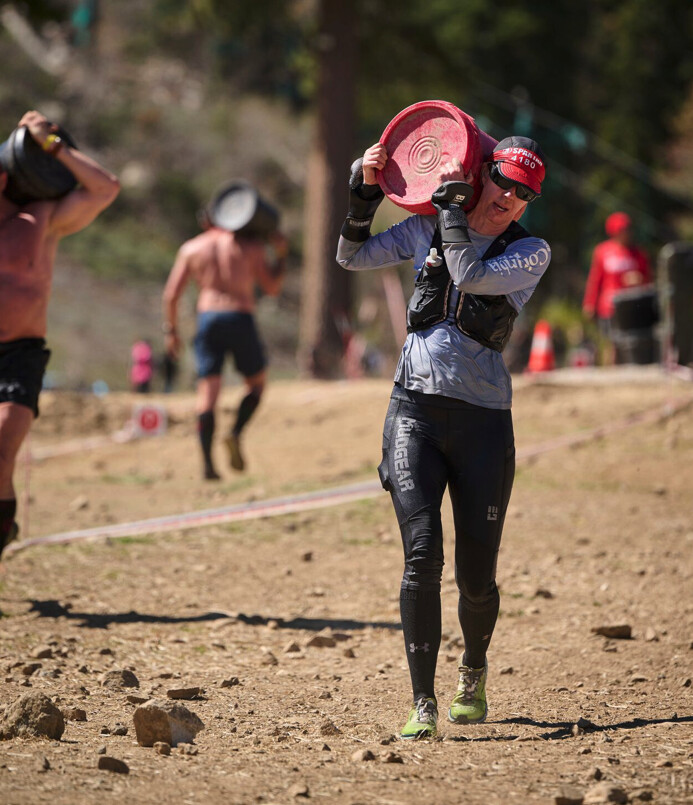
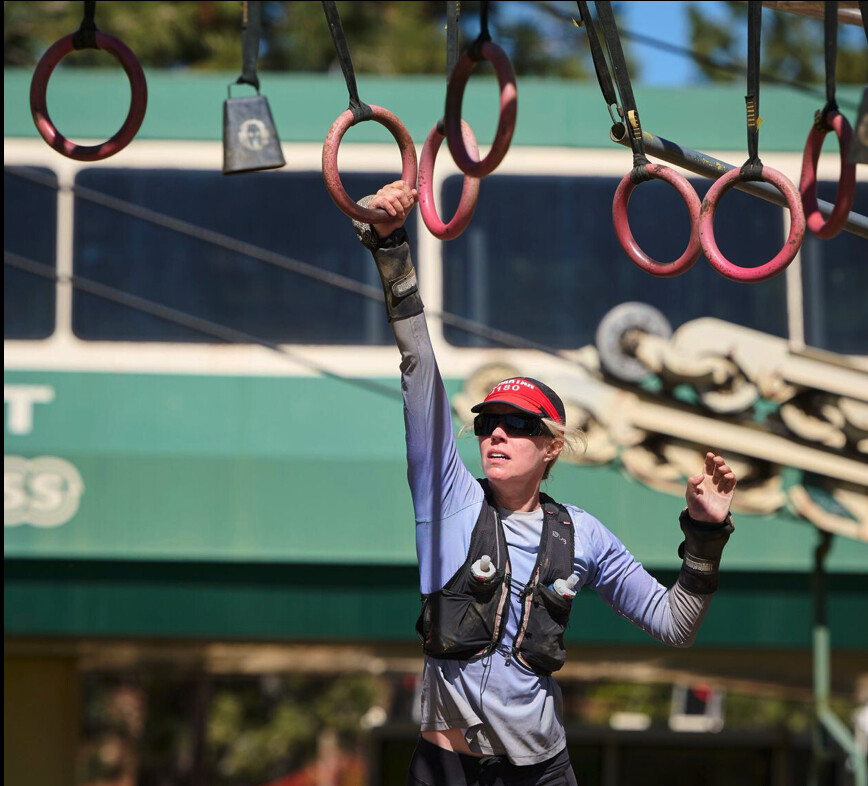
Trying to interrupt my midlife slump with this race was predictable, I suppose. What happened to me after that day was not.
As an unathletic desk jockey glued to my screens, training for the competition seemed like a way to fight back against inertia and a body heading past its prime. Obstacle-course racing combines endurance running in often difficult terrain with military- and hunter-gatherer-styled obstacles: crawling under barbed wire in mud, lugging heavy sandbags up mountains, climbing ropes, scaling walls. You even throw a spear. A version of the sport will be included in the 2028 Olympics as part of the modern pentathlon.
As someone who’d chosen bowling to fulfill my university’s physical education requirement and earned the nickname “Bones” in junior high for her physique, my goal was simple: Finish and don’t die. Then I’d go back to my sitting and screens, with my race T-shirt tucked in the drawer—a sartorial red sports car to don when midlife seemed bleak.
But in the days after crossing the finish line—a middle-aged athletic nobody who fell 10 feet off a rope during the competition into a crumpled heap of humiliation—all I could think about (apart from how much every part of me hurt) was: When can I race again? And how can I get better—a lot better?
I’d taken my first step on the road to mastery—a journey that has been profoundly humbling, and one that I’ll likely never finish.
I n today’s culture, we celebrate “life hacks” and shortcuts to good health and happiness, whether through supplements, fad diets, five-minute workouts or the short-lived dopamine hit of social media likes. In the workplace, completing goals by setting and achieving KPIs (key performance indicators) often determines our professional value. These expectations can make it difficult to start something new and hard in midlife, when we tend to gravitate toward what we’re already good at and the rewards that come with completing it.
At first, I certainly fell into this mindset. Closing in on age 50, “mastery” seemed vaguely absurd. Haunting me was the much-discussed 10,000-hour rule popularized by Malcolm Gladwell in his book “Outliers,” where he suggested that it usually takes that much specialized practice to become an expert in a discipline. Even with two hours a day of training—if I could manage that with a full-time job and loads of middle-aged responsibilities—it would take more than 13 years to hit the mastery mark. I’d be 60. Mastery, I felt, was a journey for those who start young.
But my experience and research over the past six years show that I was wrong to see the challenge in such stark, age-bound terms. As I discovered, pursuing something difficult at any age can have profound benefits for health and happiness, even if you never become a master or an expert.
Becca Levy, a professor of epidemiology at Yale, examined data from one of the country’s most detailed studies of growing older, the Ohio Longitudinal Study on Aging and Retirement, and overlaid it with mortality data. She found that older people with more positive perceptions of aging live 7.5 years longer, on average, than those who are less positive.
One factor believed to fuel this longer lifespan is a “will to live,” which can include pastimes that excite and push us. This doesn’t mean we should be occupied all the time. There’s a lot of creative and mental good to be gained from putting down our smartphones, turning off the TV and letting the mind wander. But chronic boredom and a general lack of purpose have been correlated with anxiety, depression and risk of making mistakes.
That feeling began creeping into my life before I discovered obstacle-course racing. But humbling myself among younger people in gyms, training nearly every day no matter how busy or tired, having the goal of racing in new places (like the Arabian Desert)—it has ignited in me a renewed will to live. I am constantly learning, relearning and unlearning.
I am also constantly having to be OK looking dumb.
The Greek Stoic philosopher Epictetus mused that if you want to improve at something, you need to “be content to be thought foolish and stupid.” I’ve channeled his wisdom, flailing about on playground monkey bars as impatient children commented on my technique and their amused parents (my peers) watched. Neighbors can see me crawling around my backyard like a wounded animal, performing mobility exercises with stiff middle-aged limbs.
I have felt the sting of finishing races almost dead last, and I once quit a competition midway because I was too cold. I’d never quit anything in my life until that point. Showing up at my gym the next day with everyone else clad in their finisher T-shirts felt like not getting invited to prom.
On the other hand, it’s very hard to be bored slithering under barbed wire in mud, hurling spears and learning to pull yourself up a 17-foot rope. And with improvement has come a mental shift to believe the file labeled “me” isn’t finished—that I can still add to it.
These benefits are available on a variety of fronts as we age. The Seattle Longitudinal Study, started in 1956, is one of the most comprehensive research projects on how we develop and change cognitively throughout adulthood. Among its key findings: Some abilities, such as word skills, may increase into our 60s and beyond, particularly for women, while others, such as spatial abilities—think assembling furniture or reading a map—hold up into our 80s for men. That’s a lot of opportunity for later-in-life learning and journeys of mastery.
Here’s the thing about trying to achieve mastery later in life: You may not reach your destination. And I’ve come to believe that’s a good thing. Because unlike the enjoyable activities we pursue that have definitive endings—taking a walk, eating a great meal, going on vacation—training to get good at something hard is ongoing, incomplete. And that’s the beauty of it: There’s always something to look forward to.
Regardless of what you’re trying to master—fly fishing, chess, pickleball—experts say that regular movement of some sort is critical for maintaining the physical and cognitive health you’ll need. Starting a new exercise program, particularly in midlife, when noticeable decline often begins, “can really interrupt the pace of those not-good changes, those negative changes, and turn them into positive changes,” says Steven Austad, senior scientific director for the American Federation for Aging Research. New research, he adds, shows “physical activity is one of the best ways to avoid later-life dementia.”
Six years have passed since my first race. After some 4,000 hours of practice, I’ve advanced on the five-stage “Dreyfus model” of skill acquisition from “novice” to “advanced beginner” to “competence.” I now race competitively in my age group and have under my belt 19 top-three podium finishes and two world championship competitions. Some days, when everything is clicking, I may even touch the fourth stage of proficiency.
It’s a far cry from childhood, when I cowered behind my best friend during dodgeball and warmed my school’s bench in soccer games. Longevity is never guaranteed, but I’ve made strides to keep functioning independently as I age—lifting my suitcase into the airplane’s overhead bin, hiking three miles in snow if our car breaks down. I’m also more confident off the racecourse. Not long ago, I took a job with a tech start-up where I’m one of the oldest employees. Younger workers teach me about AI; I took a crew of them on their first Spartan Race.
Admittedly, I’m still coming to peace with the idea that I’ll never reach the final stage of “expert” at this sport I now love. I’ve met people who are experts: They possess natural talent I don’t, or have spent time training that I probably can’t at this point. There remain obstacles I fail during races more than I’d like; now that I’m 52 years old, I don’t know if that will change.
These reminders of my limitations and mortality are what’s been most humbling about the experience. But “never finished” may be the best medicine when life seems to be making a turn toward endings. I interviewed a woman in her 80s nicknamed “Muddy Mildred” who ran obstacle-course races. How far can I get with the time that is left to me?
1. Intrinsic motivation gets you farther than extrinsic motivation. Motivation from external factors—money, a promotion, a medal—can be short-lived. “I can probably get someone up from the couch to run a 10K if I give them enough money,” says Chad Stecher, a behavioral health economist and assistant professor at Arizona State University. “But after that 10K, unless I provide additional incentives or support, their physical activity won’t persist.”
Instead, look for a pursuit where you are motivated to engage because of personal satisfaction or a deeper drive. One place to start: childhood. What did you want to be or do when you grew up, but it hasn’t yet happened? My experience of being a gawky kid still drives me.
2. Cultivate a “growth mindset.” Believing your success is tied more to hard work than innate talent is critical on the mastery journey. The well-known Stanford University psychologist Carol Dweck talks about one Chicago school’s unorthodox but effective grading protocol, where instead of a failing grade, students would get a “Not Yet.”
You’re not going to become a good diver without landing a lot of belly-flops, or a competent fly-fisherman without the line occasionally getting wrapped up in a tree. It doesn’t mean you won’t get there; it just means you haven’t gotten there yet.
3. Locate edges and equalizers. Crystallized intelligence—your stored-up body of wisdom—can make age a secret weapon. The older you are, the more you’ve tried, failed, succeeded and learned. Draw from that bank. I can’t rely on a 25-year-old body to perform well, so I’ve turned to information: intel on gear, clothing, weather, hydration, terrain, sleep.
“When you’re older, you can see the bigger picture more than you could when you were 17,” says Alex Hutchinson, bestselling author of the book “Endure.” “It’s really easy to get excited about big goals, but to actually achieve them takes patience to take care of details, patience to stay on track when obstacles arise.”
4. Prioritize what’s essential. You can’t hack your way to mastery. It takes time and the “disciplined pursuit of less,” as Greg McKeown explains in his book “Essentialism.”
To include obstacle-course racing in an already full life, I trimmed my Instagram feed to mainly follow accounts helping me learn about the sport. After analyzing how much of my workday was spent in inefficient, hour-long, weekly one-on-one meetings, I cut most of them back to 25 minutes and set clear agendas. I declined all social invitations that weren’t from my closest friends and stepped away from many boards I served on. With every “no,” I got back a few more hours to devote to this new journey.
5. The mastery journey can be never-ending. And that’s fine. Finishing only that first race would have given me short-lived bragging rights and an awesome social media photo. But then it would have been over—extinguishing a source of meaning in my life.
It wasn’t until I firmly entered the realm of “never finished” that I realized how electrifying it could be. Which sure feels like a far cry from being stuck at the bottom of a U curve.
Login to leave a comment
Fiona O’Keeffe, Emily Sisson, and Dakotah Lindwurm to headline New York Mini 10K
Fiona O’Keeffe, Emily Sisson, and Dakotah Lindwurm to headline world’s original women-only road race, which has garnered more than 200,000 finishers since 1972.
New York Road Runners (NYRR) has recruited the 2024 U.S. Olympic Women’s Marathon Team – Fiona O’Keeffe, Emily Sisson, and Dakotah Lindwurm – to headline its Mastercard® New York Mini 10K taking place Saturday, June 8 in Central Park.
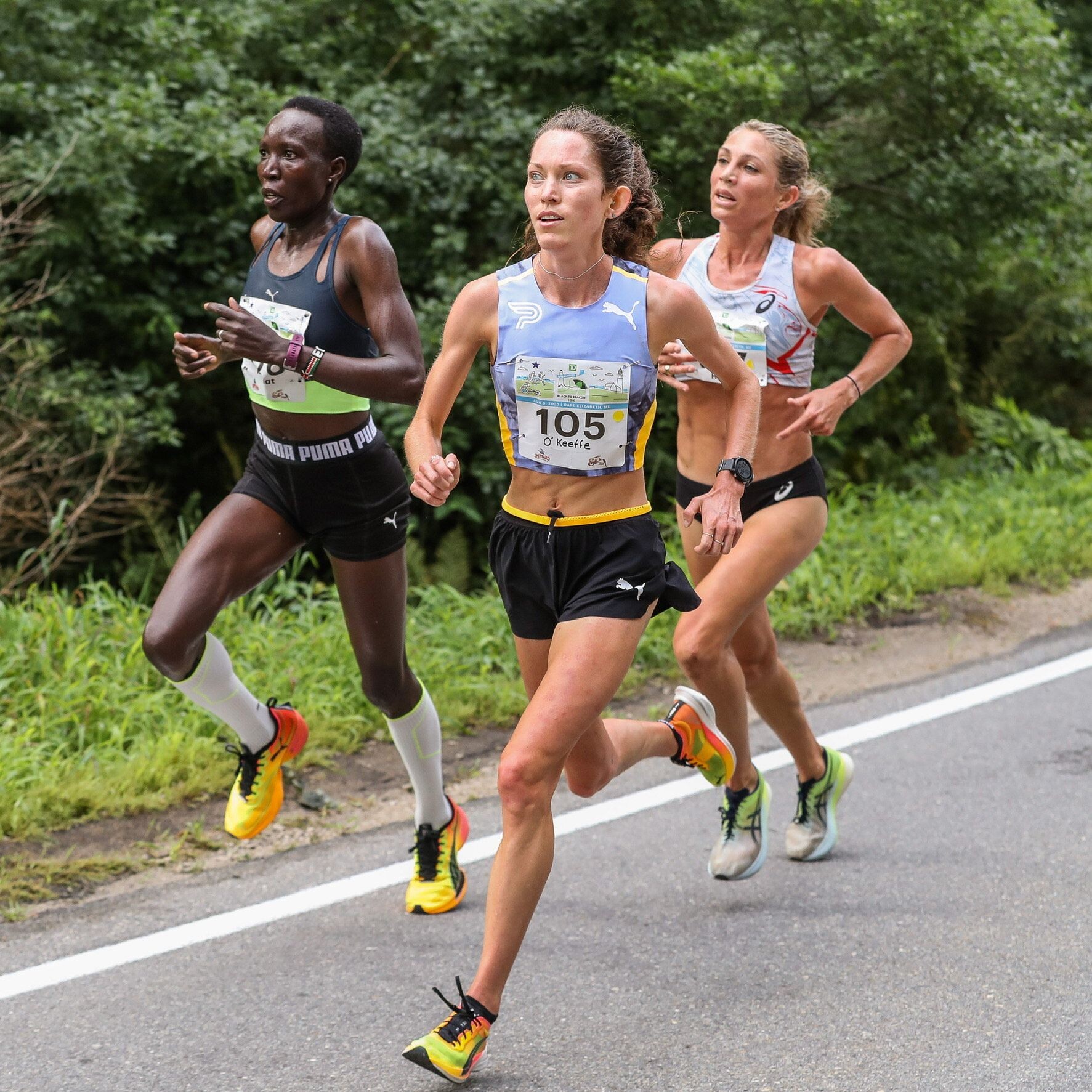
O’Keeffe won the 2024 U.S. Olympic Marathon Trials in February with an event record in her 26.2-mile debut and will now make her NYRR race debut. O’Keeffe joined the professional ranks in 2021 after a decorated career at Stanford University, where she was a six-time NCAA All-American.
“I’m excited to step to the line of my first road race since the U.S. Olympic Marathon Trials at the Mastercard New York Mini 10K on June 8,” O’Keeffe said. “It’s my first time running the Mini and I’m looking forward to running alongside a great group of women, some of whom I’ll be seeing in Paris later this summer.”

Sisson, the American record-holder in the marathon, finished runner-up at the U.S. Olympic Marathon Trials to qualify for her second Olympics and first in the 26.2-mile distance. She is a six-time national champion and has been successful in New York, finishing as runner-up at the United Airlines NYC Half twice and winning the USATF 5K Championships. Sisson was fourth at last year’s Mastercard® New York Mini 10K.
“The Mastercard New York Mini 10K is one of those special races that I always have circled on my calendar,” Sisson said. “Although my summer will look a little different this year with a marathon in Paris in August, I wouldn’t miss the chance to race with New York Road Runners in Central Park with my Olympic teammates and thousands of women from around the globe.”
Lindwurm finished third at the U.S. Olympic Marathon Trials and first gained notoriety after winning back-to-back titles at the Grandma’s Marathon in 2021 and 2022. Her highest finish at an NYRR race previously was sixth place at the 2023 United Airlines NYC Half.
“I’m really excited to join my Olympic teammates Fiona and Emily for the Mastercard New York Mini 10K,” Lindwurm said. “I’ve heard great things about the Mini my entire career, but it’s never quite worked with my racing and training schedule. This year, it works as a great step toward the starting line in Paris.”
New York Road Runners started the Mini 10K in 1972 as the first women-only road race, known then as the Crazylegs Mini Marathon. Seventy-two women finished the first race, and three weeks later Title IX was signed into law, guaranteeing girls and women the right to participate in school sports and creating new opportunities for generations of female athletes.
The Mastercard® New York Mini 10K is now one of non-profit NYRR’s 60 adult and youth races annually and has garnered more than 200,000 total finishers to date.
The 2024 Mastercard® New York Mini 10K will offer $39,500 in total prize money, including $10,000 to the winner of the open division.
Mastercard® will serve as title sponsor of the event for the fourth year, and as part of its ongoing partnership with NYRR will also serve as the presenting sponsor of professional women’s athlete field.
The event will be covered locally in the tri-state area by ABC New York, Channel 7 with live news cut-ins. The professional race will be covered by a livestream, distributed by ESPN+, abc7ny.com, and NYRR’s digital channels beginning at 7:40 a.m. ET.
The full professional athlete field for the Mastercard® New York Mini 10K will be announced later this month.
by Running USA
Login to leave a comment
New York Mini 10K
Join us for the NYRR New York Mini 10K, a race just for women. This race was made for you! It’s the world’s original women-only road race, founded in 1972 and named for the miniskirt, and it empowers women of all ages and fitness levels to be active and to look and feel great on the run. Every woman who...
more...Mark Zuckerberg Ran an Impressive 5K Just 5 Months After ACL Surgery
Plus, it was his 8-year-old daughter’s first-ever 5K.
Mark Zuckerberg, the 39-year-old CEO of Meta, is known as an avid runner and fitness enthusiast.
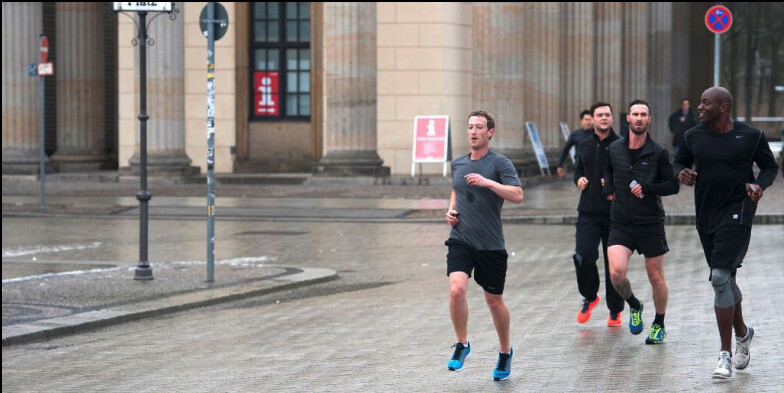
On last Sunday morning, he lined up for the Stanford Medicine My Heart Counts 5K and finished in an official time of 20:58. His 8-year-old daughter, Maxima, also joined in the fun, he wrote on social media.
This is the second year in a row the tech billionaire has raced this exact 5K. In 2023, he achieved his goal of sub-20 minutes, crossing the line in 19:34. The race course meanders through the campus of Stanford University, in Stanford, California, just miles from Meta’s headquarters in Menlo Park.
But while Zuckerberg’s time this year was a little bit slower, he knew that was to be expected—this was his first race back after tearing his ACL last fall while training for an MMA match.
Zuckerberg took to Facebook and Instagram (of course) to recap his race: “First post-surgery 5K and Max’s first ever 5K! Not going for any records yet but still happy with 21 mins for 5 months into recovery. I’m really proud of Max for getting out there too.”
Out of the 1,606 people at the race, Zuckerberg finished 38th overall and 8th in his age group (men’s 35-39). He averaged a pace of 6:45 per mile for the 3.1-mile race and used the alias “Martin Salzburg” to presumptively avoid drawing too much attention to himself and his family.
It’s obvious that Zuckerberg is caught up on the latest trends in running: his post-race photo revealed he was wearing a Tracksmith top and a pair of Nike Vaporfly 3 super shoes.
by Runner’s World
Login to leave a comment
A Riveting New Series Shows the Insane Workouts of Elite Runners—Completely Unfiltered
Every week, TRACK: All-Access reveals the raw training of star athletes like Conner Mantz, Clayton Young, and Elle St. Pierre.
“You just watched an attempted murder,” says Graham Blanks as he catches his breath on a pole vault mat at the Harvard University indoor track.
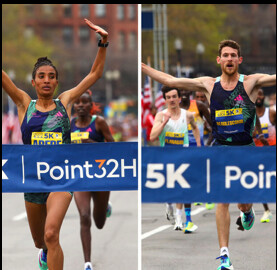
His coach, Alex Gibby, prescribed Blanks a lengthy session. Three sets of 12 minutes at threshold pace (4:49 to 4:40 mile pace), followed by four fast 300-meter reps on the track. Blanks ripped the last interval in 41.9 seconds.
The 2023 NCAA Cross-Country champion—along with his teammate, Maia Ramsden—is the subject of an episode of the new running YouTube channel TRACK: All-Access.
The channel is the latest project from Gordon Mack, who spent the previous decade working at FloTrack and MileSplit, where he wrote articles, covered meets on-site, and co-hosted the FloTrack Podcast. Last year, after a career change, Mack got the idea of doing weekly workout videos. Now, he’s diving head-first into the venture, traveling across the country to create content with some of the biggest names in running.
Mack posted his first video—3-mile repeats with marathoners Conner Mantz and Clayton Young—to popular reception. Since then, he’s been releasing at least one episode every week and has featured the likes of Stanford University stand-out Nico Young, high school star JoJo Jourdon, and 1500-meter Olympian Elle St. Pierre.
So far, he says it’s been a success.
“I’ve been pleasantly surprised and blessed and happy and thankful that people are responding positively,” Mack says. “When you start something, you have in your head the idealistic response, but you actually don’t know if it’s gonna happen until you put it out there. And fortunately, people seem to really like the content.”
Mack plans on releasing videos every Tuesday morning, but for the first few weeks, he’s uploading another video on Thursdays to give the channel some momentum. So far, TRACK: All-Access has over 7,000 subscribers, and the workout video with Nico Young has racked up more than 83,000 views.
While YouTube comments can quickly become crude, viewers seem to welcome Mack’s content. Sometimes they’ll offer feedback or encourage Mack to film episodes with specific teams. Some users have even joked that workout videos are prophetic.
“Babe wake up! All Access just posted another workout video ? ?” @sofodachimp2776
“Thank you for the back stage pass. I feel so honored to be part of this team.” @deviljames
“I’m starting to think track all access has the script” @orangepeanutyguy6569
The essence of the channel is in its name: access. Mack believes that track and field fans—himself included—crave more behind-the scenes content from athletes, outside of competition or media appearances. “We love watching them race, run records, and win championships,” he says. “But we also really love to see how they did it. And a lot of that is not really shown.”
After working in the running industry for over a decade, Mack has accumulated a rolodex of contacts with professional athletes and coaches. So far, the videos have focused on distance runners, but Mack plans on incorporating sprinters and field events into the mix as well.
Along with access, Mack wants the videos to be in-depth. Instead of editing the raw footage down into highlights, he prefers to show every rep of a session— even the more monotonous parts—to paint a full picture of training. The relationships between the athletes and their coaches are just as important, too. “[I’m] trying to give the user a viewpoint as if they got to watch the practice in full time for that full hour-and-a-half session,” he says.
Mack is a one-man show so far. He films and edits the entirety of the videos, and he has to get creative sometimes to keep up with the runners. When he was initially filming Conner Mantz for a workout in Provo, Utah, Mack sped alongside him on a bike—until he got a flat tire. He came back two days later with a car.
Although TRACK: All Access is still in its infancy, this isn’t a part-time job for Mack—this is his life for the foreseeable future. He plans on supporting the channel with YouTube advertising revenue, as well as working with brands on potential sponsorships down the line. Consistency is a cornerstone of the channel, and Mack plans to keep his output high.
“At the end of the day, it’s a very simple concept,” he says. “It’s workout videos with the best elite athletes in the varying degrees of our sport and the varying disciplines of our sport. And, hopefully, if I put out good content, people will like it.”
TRACK: All-Access tentative schedule
February 15—Boston University men (Distance)
February 20—Sophia Gorriaran (Harvard)
February 22—Northern Arizona University men (Distance)
February 27—BYU men (Distance)
February 29—Northern Arizona University women (Distance)
March 5—Kenzie Doyle (UMass Lowell)
March 7—Arizona State University men (Sprints)
March 12—Courtney Wayment/Anna Camp Bennett (Taylor Made Elite)
by Runner’s World
Login to leave a comment
Blink 182 and Kardashian star wants to run a marathon
The drummer of Blink 182, Travis Barker, has found a new passion and has lofty goals for the year ahead. On New Year’s Eve, the 48-year-old completed his first half-marathon in Santa Monica, Calif., and now he has his eyes set on 42.2 km at the 2024 Los Angeles Marathon on March 17.
Barker finished the half-marathon in 2:08:57, averaging a pace of six minutes and seven seconds per kilometre and placing 32nd overall out of 59 runners. Barker had family and friends at the race to cheer him on for his debut, including his wife, reality TV and fashion megastar Kourtney Kardashian.
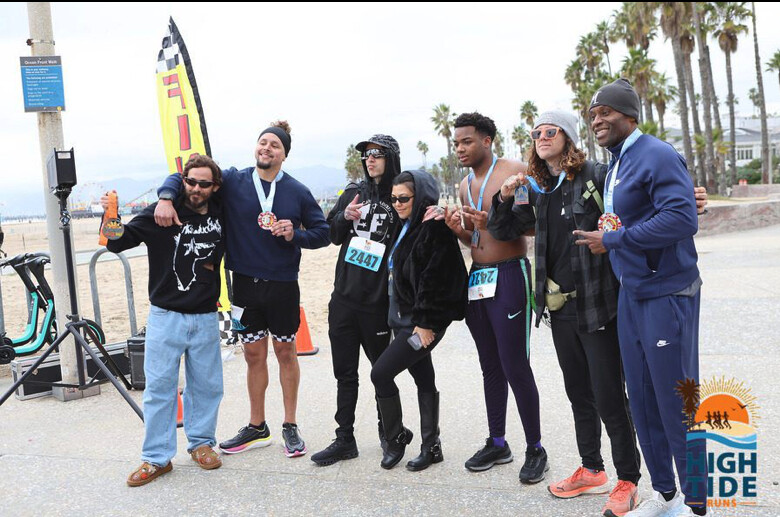
Kardashian was seen sporting Barker’s finisher medal afterward. His first half-marathon capped off a big year for Barker. In November, the couple had their first child together, Rocky Thirteen.
“Ending 2023 with a bang,” the drummer captioned his post on Instagram. When asked about his next race, Barker revealed his plans to run the LA Marathon.
Barker’s training for the half did not go smoothly. The drummer said he had to halt his training due to an iliopsoas tendon strain a few weeks before the race. He posted that he knows the marathon won’t be easy, but he trusts the guidance he’s received from Stanford neuroscience professor Andrew Huberman and human performance professor Andy Galpin.
Now that the Kardashians are attending races and Taylor Swift is doing fartlek workouts has our sport officially reached its peak?
Login to leave a comment
Neuroscientist Andrew Huberman’s 5 tips for optimal performance
Dr. Andrew Huberman, professor of neurobiology and ophthalmology at Stanford School of Medicine and host of The Huberman Lab podcast, believes in avoiding health trends, instead prioritizing five basic daily things to achieve peak physical and mental health. Huberman’s tips aim not only to help the general public become the best version of themselves, but also apply perfectly to runners. Here’s what you need to know.
1.- Sleep
“Everyone needs to get a sufficient amount of quality sleep,” Huberman recently said on The Nine Club podcast. He touts sleep as the best stress reliever, trauma releaser, immune booster and emotional stabilizer. He suggests following a consistent sleep schedule, making sure you are exposed to sunlight in the morning (more below), avoiding caffeine eight to 10 hours before bed and limiting naps to 15-20 minutes.
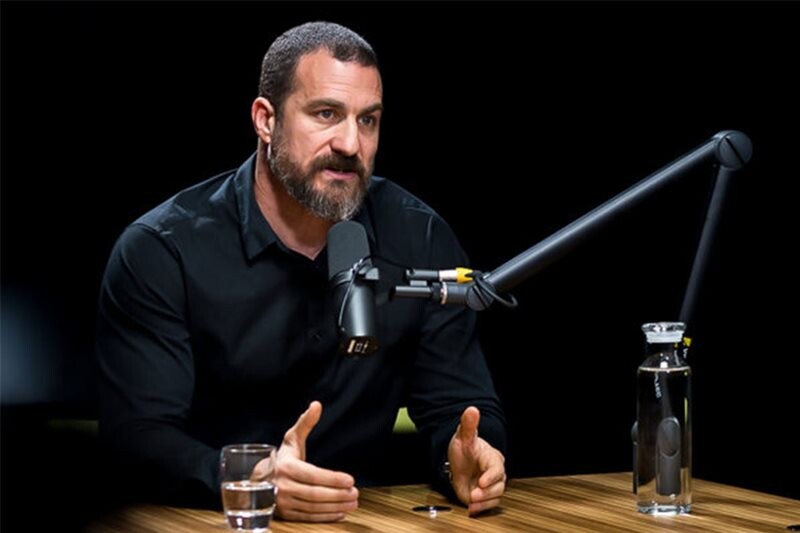
Huberman says most adults need between six and eight hours of sleep every night and suggests letting teenagers and young kids sleep as much as they want.
Key takeaway for runners: Sleep is critical for recovery and should be something runners focus on as much as their most intense training. During sleep, our bodies repair themselves from the microscopic tissue damage done while exercising; insufficient sleep can lead to injury, low energy availability and a struggle to improve. Delving into Huberman’s sleep tips can help you become a better sleeper, and therefore a better runner.
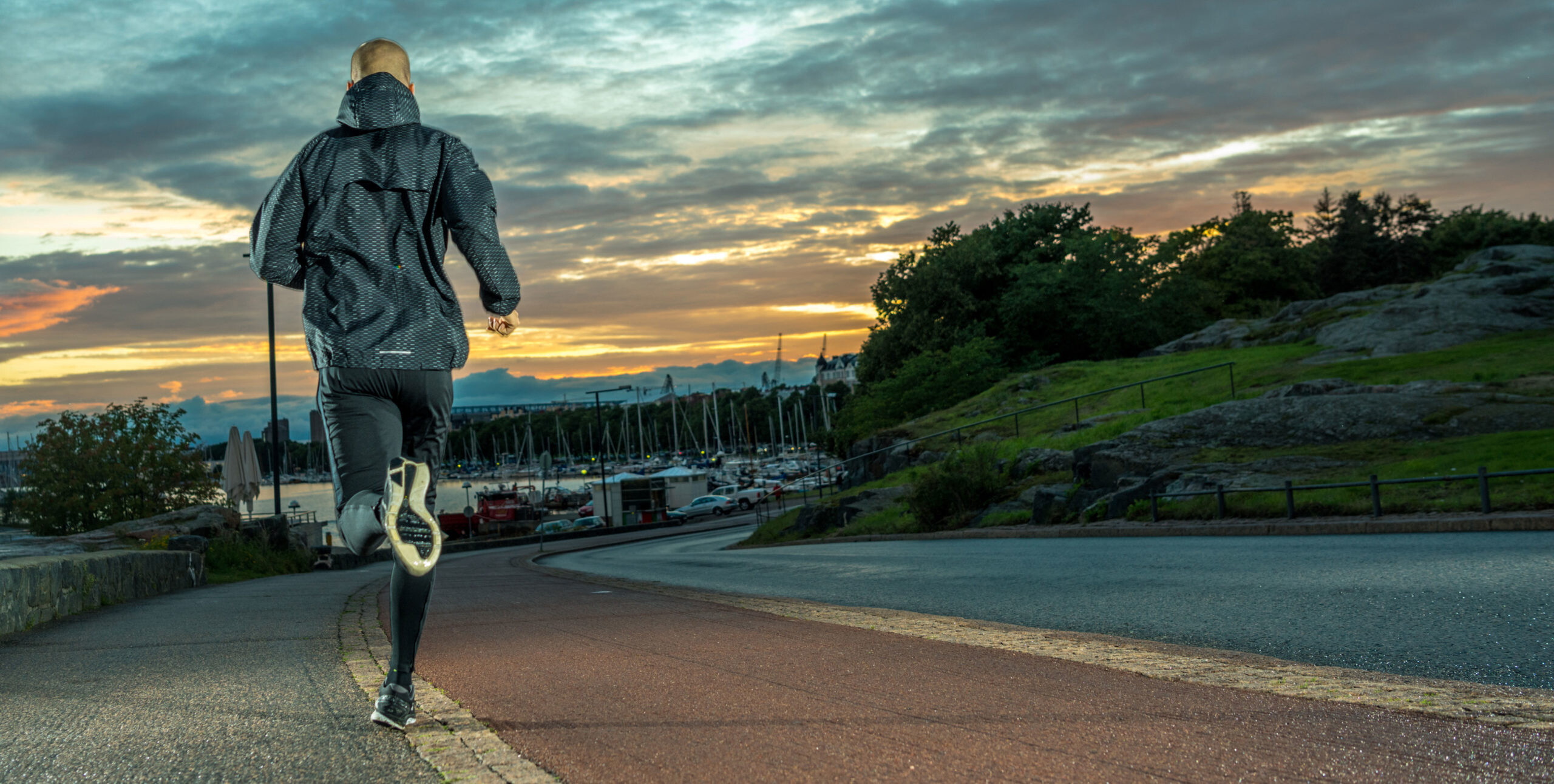
2.- Move more
“It is important to get enough movement. Get your heart rate up, get your breathing up. You’ll live longer, you’ll feel better,” Huberman says. Huberman suggests trying to get one hour of exercise daily, and incorporating strength training into your routine. “The natural decrease of muscle is one per cent per year after age 40, unless you intentionally offset through strength training,” Huberman explains.
Key takeaway for runners: Huberman’s advice doesn’t necessarily mean you should run every day. Try adding movement into your day whenever you can (take the stairs, park farther from your destination and walk for 10 minutes), and count cross-training (which includes brisk walking) toward your daily total. Gentle walking on rest days can help with the recovery process.
3.- Sunlight
Getting sunlight within the first hour of waking helps suppress the release of melatonin, a hormone that promotes sleep, while increasing alertness. For many of us in North America, it’s not light out when we wake up during the winter months, and it may not be sunny—but regardless of sunshine, focus on that outdoor light, and if you can’t be out in it as soon as you wake up, incorporate it into your day as early as possible.
Key takeaway for runners: While you certainly don’t need to be an early-morning runner to follow this tip, maybe this benefit will give you a boost to get out earlier more often.
4.- Nutrition
“Try to get 75 to 80 per cent of your food from non-processed or minimally processed sources,” Huberman says. He follows a diet that includes intermittent fasting, and while that doesn’t necessarily work for all athletes, intentionally eating meals at times they are most beneficial may help.
Key takeway for runners: Huberman is quick to point out that everyone is different, and it’s important to work with your own physical needs. Make sure you are taking in adequate nutrition for your energy output, and while a focus on unprocessed foods is clearly beneficial, lose any “food guilt” you have over taking in sugary gels or gummies during training and races–they are necessary for fuelling endurance efforts.
5.- Meaningful connection
“Do what you can to make the interactions you have, online and in reality, with friends, with family, as healthy as possible,” Huberman says, and emphasizes the importance of quality social connection. Feeling socially isolated and lonely has been shown to increase the risk of developing dementia, depression and anxiety, among other health conditions.
Key tip for runners: Embrace your local running community, or work on building stronger relationships with your running friends. If you don’t have access to a local running group, connect online with other like-minded individuals, but make sure to avoid negativity. For some of us, getting in a daily run as a stress reliever may be the tool we need to focus on healthier relationships with our non-running friends and family.
by Keeley Milne
Login to leave a comment
Having completed his first half-marathon, Travis Barker has caught the running bug and is now signed up for the Los Angeles Marathon
The drummer of Blink 182, Travis Barker, has found a new passion and has lofty goals for the year ahead. On New Year’s Eve, the 48-year-old completed his first half-marathon in Santa Monica, Calif., and now he has his eyes set on 42.2 km at the 2024 Los Angeles Marathon on March 17.
Barker finished the half-marathon in 2:08:57, averaging a pace of six minutes and seven seconds per kilometre and placing 32nd overall out of 59 runners. Barker had family and friends at the race to cheer him on for his debut, including his wife, reality TV and fashion megastar Kourtney Kardashian.
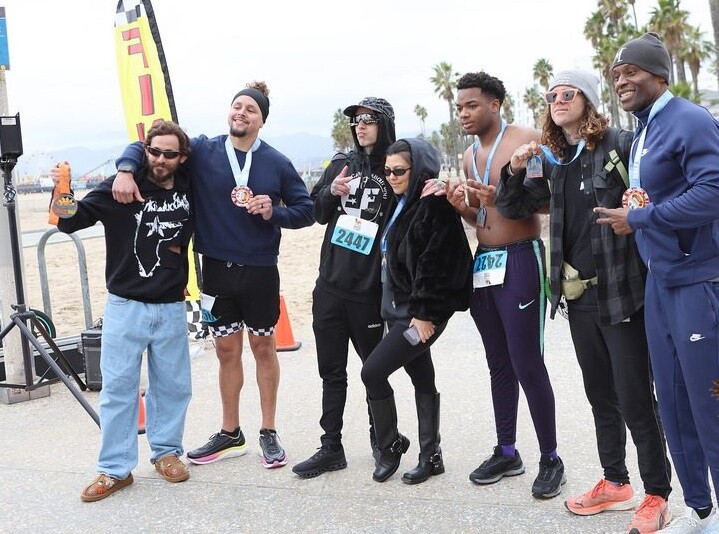
Kardashian was seen sporting Barker’s finisher medal afterward. His first half-marathon capped off a big year for Barker. In November, the couple had their first child together, Rocky Thirteen.
“Ending 2023 with a bang,” the drummer captioned his post on Instagram. When asked about his next race, Barker revealed his plans to run the LA Marathon.
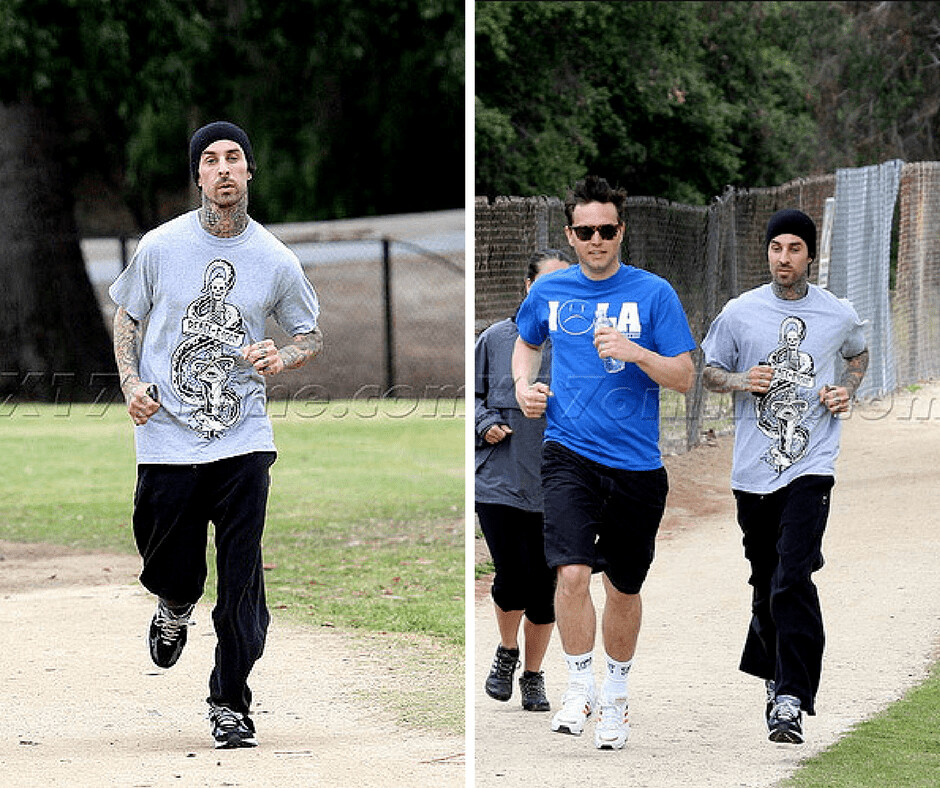
Barker’s training for the half did not go smoothly. The drummer said he had to halt his training due to an iliopsoas tendon strain a few weeks before the race. He posted that he knows the marathon won’t be easy, but he trusts the guidance he’s received from Stanford neuroscience professor Andrew Huberman and human performance professor Andy Galpin.
Now that the Kardashians are attending races and Taylor Swift is doing fartlek workouts has our sport officially reached its peak?
by Marley Dickinson
Login to leave a comment
Los Angeles Marathon
The LA Marathon is an annual running event held each spring in Los Angeles, Calif. The 26.219 mile (42.195 km) footrace, inspired by the success of the 1984 Summer Olympic Games, has been contested every year since 1986. While there are no qualifying standards to participate in the Skechers Performnce LA Marathon, runners wishing to receive an official time must...
more...Running May Have Saved My Life
Nearly 50 years ago I fell in love with running. I was far from a natural. When I was 8 years old, I was struck by an illness that left me with pneumonia in both lungs with one lung being collapsed. I survived that but was left with asthma that persists to this day. This was unfortunate as I loved sports. Asthma more or less disqualified me from participating in “running sports, " leaving me only with baseball as something I could do relatively comfortably.
In high school, I wanted to try wrestling. I figured that I could handle three 2-minute periods. However, I would soon learn that a lot of the training involved running and I struggled mightily to keep up with the other kids early in the season. The next season I hit upon the idea to ask our cross-country coach if I could train with that team, though not be part of the team. In this way, I could be conditioned before the start of wrestling season. And during wrestling season, I would show up two hours before the match to check my weight and run 2-4 miles before weigh-in.
I graduated high school, but the running never stopped. I ran every weekend (4-10 miles each day) for decades. Running was so important to me that when setting up one of my company offices in Japan, I purposely chose a location in a place with a suitable place to run, near the Emperor’s Palace near Tokyo Station. The palace is surrounded by a circular (3km) moat that is a popular running destination. My ritual was that after a week of business, I would do four laps around the palace and then fly home to San Francisco.
Though I loved running I was never interested in racing until about age 50. In 2010, my new son-in-law invited me to join him in a 5K fun run in Lafayette. Passing all those 20-year-olds was all I needed to get the “bug.” I went on to run many dozens of races over the next years, mostly marathons, an ultra, and a triathlon. I was in the best shape of my life, rarely got sick, and was at the top of the world. That would change dramatically.
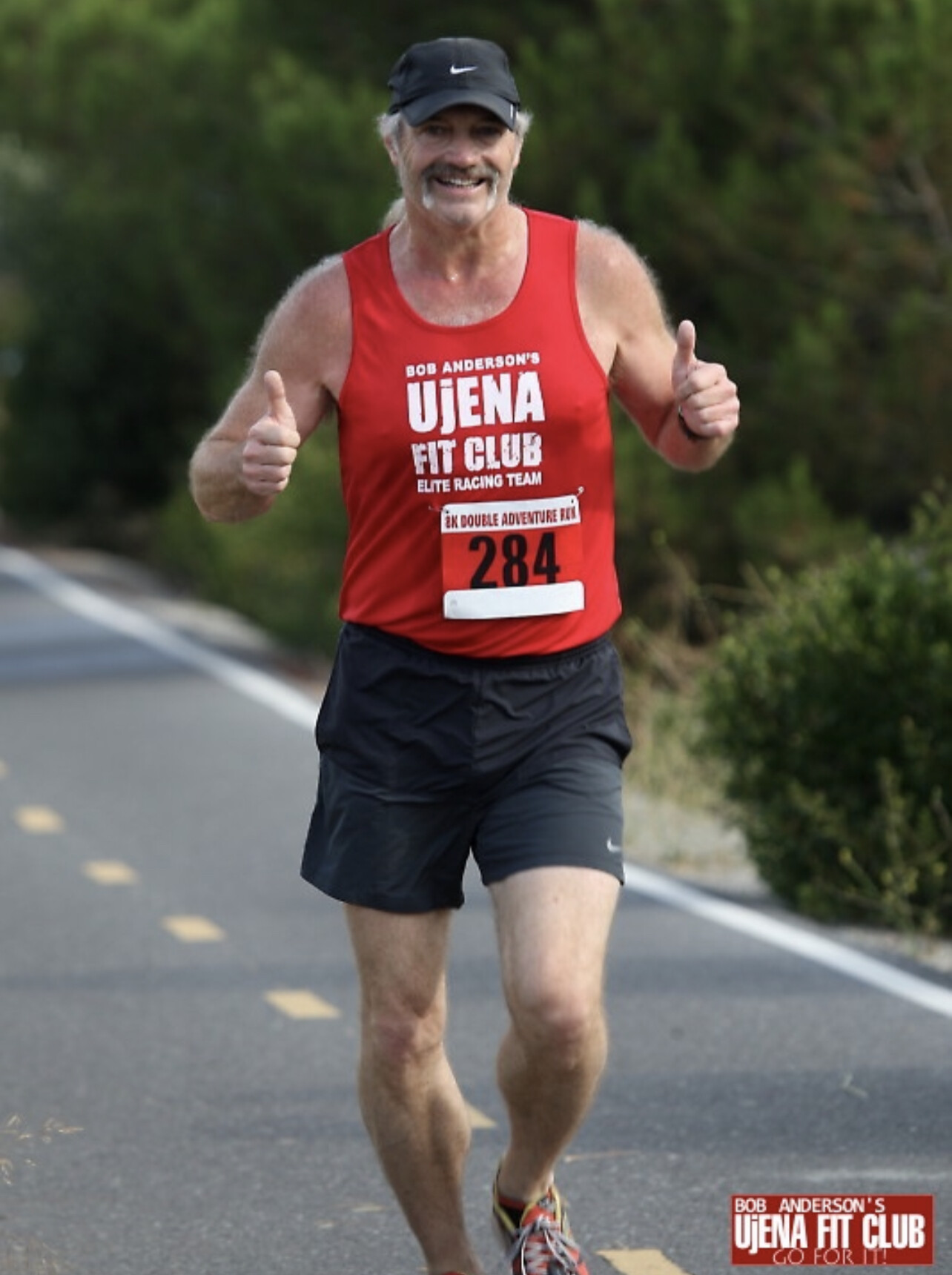
In 2013, I started noticing that on some days I would experience a strange fatigue that required me to take a walking break. I remember one day that I cut one of my runs short because I was disgusted with my performance. I kept my running clothes on and decided that I would try again later that day. That was the time I set a new PR for that training course. Something was not right, and these episodes of fatigue were increasing in frequency.
The last marathon I ran was in April 2016, a miserable affair clocking in a 4:53. By September, I couldn’t run a mile without a break. I complained to every doctor I met that “something was wrong”, but the standard response was that I was just getting older and I needed to lower my expectations. Even a cardiologist I had seen 10 years earlier told me that there was nothing wrong with me and even quipped “Guys like you are bad for business.” I wasn’t amused.
Finally, in 2019, my asthma doctor recommended a private practice cardiologist in Los Altos who might be willing to work with me. She spent two hours examining me, including an EKG and blood work. She found no problems but listened to my story about my newfound exercise intolerance. She said the only way to get to the bottom of it was to put me under a cardiac stress test.
I showed up at the hospital and they were ready for me. My doctor was there along with two technicians: one to operate the treadmill and monitor the EKG, and one with an echocardiogram scanner for a pre- and post-test scan of my heart. About 15 minutes into the test, about the same interval that I would experience fatigue during a run, the EKG technician exclaimed “Doctor!” and ran out of the room. The doctor told me to stop, asked me if I was OK, and asked me to lie down and have the other technician scan me.
The EKG technician quickly reappeared with defibrillating paddles and was stunned that I was calmly talking to the doctor. The cause of my fatigue was now clear– I was having a heart attack. A very deadly one at that, called Ventricular Tachycardia (VT) in which the top and bottom chambers beat at different rates causing your heart to stop pumping.
Now that the mystery was solved (I was not “fine”), we needed to identify the cause of this electrical misfiring. I was then directed to a cardiac electrophysiologist (EP) that specializes in this sort of disorder. He also took several hours to explain that there are nearly a dozen potential causes of this, and nearly all of them treatable. There was one (the least likely) however, that was not so easily treatable.
As it turns out, the least likely one Cardiac Sarcoidosis, was the one. This is a rare auto-immune disease that typically attacks the lungs but in even rarer cases can attack the heart. Lucky me. These “attacks” leave scar tissue on the heart that disrupts the normal electrical activity of the heart. My EP regretted telling me that this was out of his skill area and needed to refer me to Stanford where they have a cardiologist that specializes in this.
My experience at Stanford was great where a team of cardiologists took care of me. The first step was to see if the VT response to exercise was repeatable (it was). The second step was to confirm that sarcoidosis auto-immune cells were present in my body. The result of that test was positive. The cells were present, but the good news was that they were no longer in my heart and were “dormant.” But the damage was done. The final step was to install an implantable cardiac defibrillator (ICD) in my chest that has two wires screwed into the side of my heart. In case of a sustained VT episode, the ICD would automatically shock me back into rhythm.
My ICD was installed on February 12, 2020 shortly before the Covid lockdown. I cleared to begin running after about six weeks which I gleefully did after eight months of no running and four years of poor running. I am happy to report that I have had zero VT episodes, nor any other serious arrhythmias since the ICD was installed.
But my story is not quite over. Despite the lack of arrhythmias, my running performance has not returned to pre-sarcoidosis levels. I’ve worked with the Stanford cardiology team who have reiterated that my heart is working perfectly. With that ruled out, I asked for a referral to their pulmonary team to see whether there might be some lung function issues that are interfering with my return to normalcy. Like with my heart, I undertook a battery of tests looking for anything unusual.
The results of all these tests were that my lungs, despite a lifetime of asthma are working quite well. The penultimate step in this battery was a cardiopulmonary exercise test (CPET) that is most commonly used to test professional athletes. Despite my running complaints, the tests showed that my body was responding fairly well to exercise as I posted a 12.2 MET (Metaboloic Equivalent of Task).
I studied the voluminous data from the CPET and was struck by one thing– max heart rate. No, not the calculated 220-<age> that most runners are familiar with, but rather seeing that my heart rate levels off at 149 bpm and can go no higher no matter the stress. This is Father Time making his presence known. The reason I can no longer run as fast as I used to is because my heart can’t pump fast enough to generate the required oxygen to propel my body at those speeds. It's basic physics, so simple.
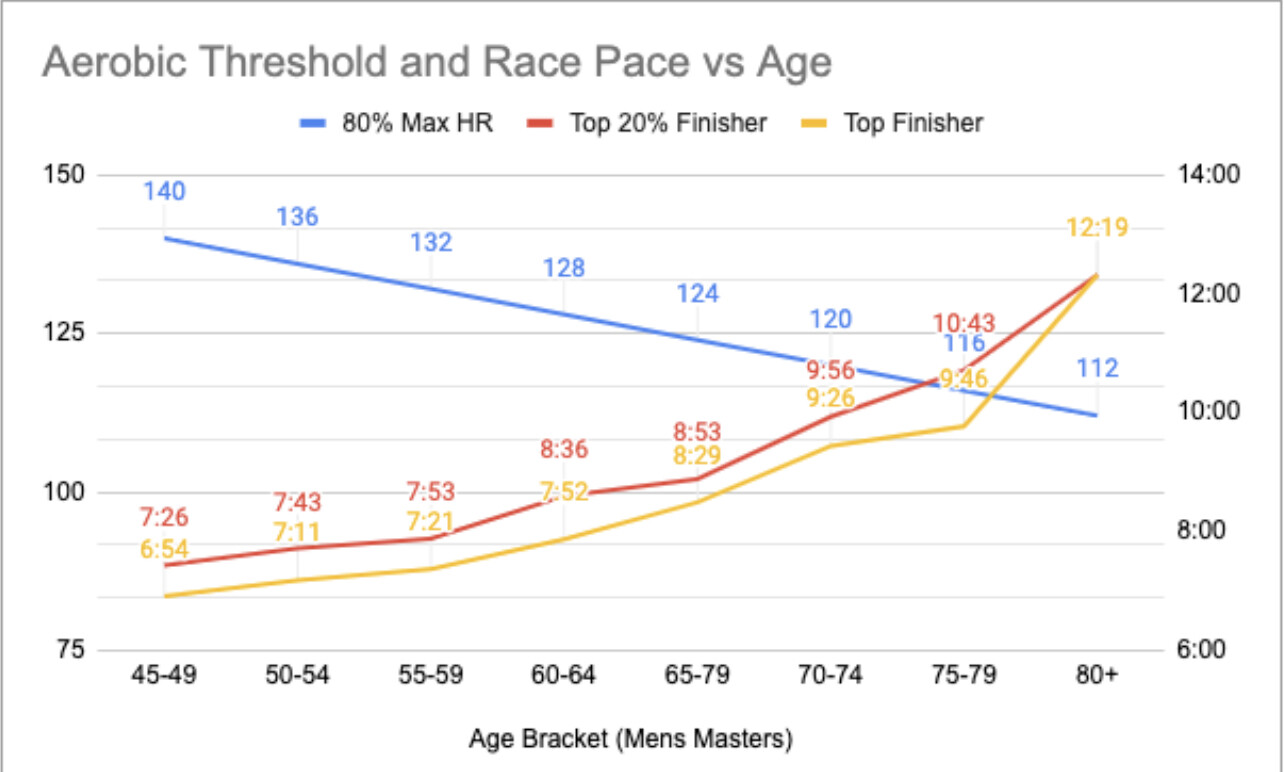
I decided to investigate this briefly and look at some representative races to see if I could see this in actual race data. I looked at the data from the California International Marathonfrom 2022 curious to see an age-related pattern. During my short racing career, I would typically place in the top 20% of my age bracket. I extracted data for Mens Masters into a chart to show Max HR vs. the top finisher and the top 20% finisher. This has given me some consolation that the slowdown is natural and will continue.
One more thing I’d like to share, especially with older runners. Since the ICD, I have found it hard to rebuild my aerobic base. I’ve concluded that the reason for this is that I was still trying to train like when I was a teenager back when my Max HR was 200! Somewhere in my memory banks, I recalled something about low heart rate training and quickly found the MAF methodby Dr. Phil Maffetone. In a nutshell, Maffetone advises training at ultra-low heart rates (180-<age>) to develop a core aerobic base. The process can take 3-6 months and involves running at an agonizingly slow pace (at first.) I am happy to report that this is the one thing that is working for me and for the first time in a long time I am again running with joy.
This has been a very personal story but one that I thought I should share with our running community. I feel that running may have saved my life. If I hadn’t challenged my doctors that I was not “fine” the worst could have happened. We runners know our bodies better than anyone and when something doesn’t feel right, it’s probably not. Don’t be afraid to aggressively advocate for yourself. Your life might depend on it.
by Warren Savage
Login to leave a comment
Elite women's marathoner Hall to run Manchester Road Race
Sara Hall, who was fifth in the World Marathon Championships last year, has entered this year's Manchester Road Race. This will be her first appearance in the Thanksgiving Day run.
Hall, 40, finished in 2:22:10 in the world event in Eugene, Oregon, and was the runner-up at the 2020 London Marathon in 2:22:01. Her personal-best for the 26.2-mile run 2:20:32, and 1:07:15.
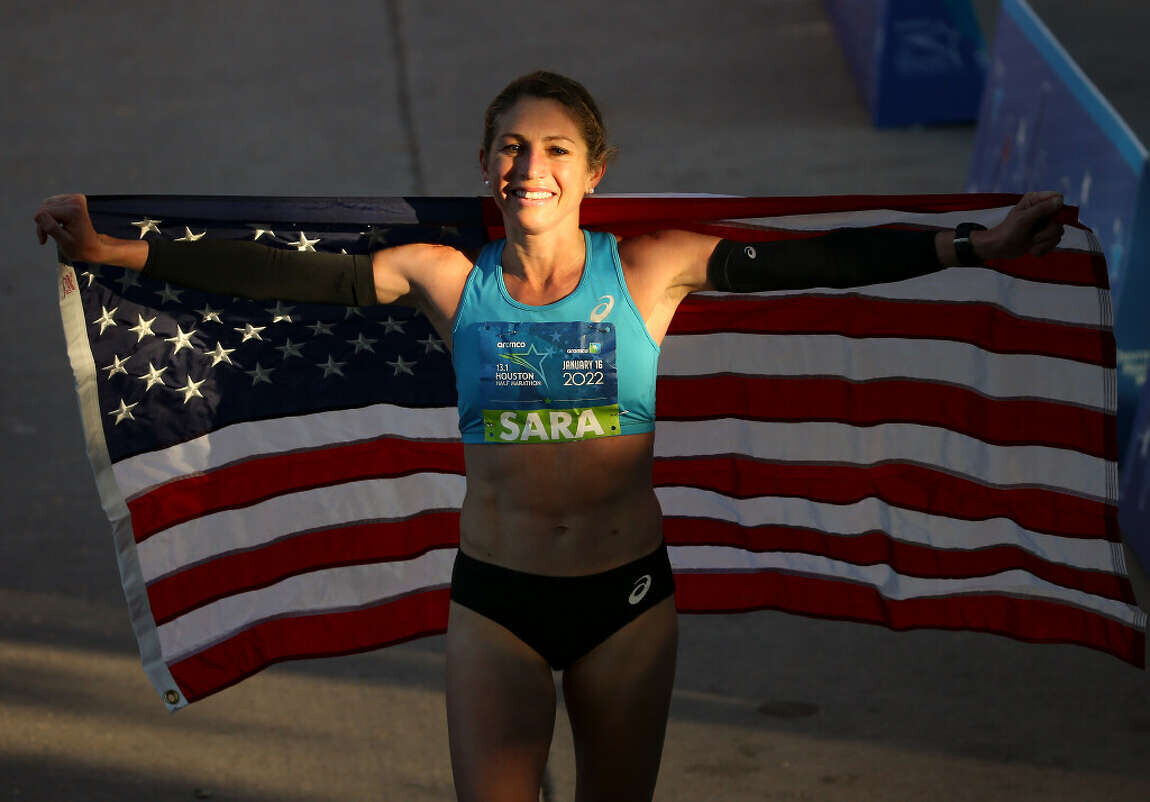
A seven-time All-American when she competed for Stanford, Hall ran the steeplechase before becoming a marathoner. She won the gold medal in the steeplechase at the 2011 Pan American Games in Mexico.
Hall is married to retired Olympic marathoner Ryan Hall. Ryan, who also competed for Stanford, set the United States records for the marathon and half marathon. In 2017, the couple adopted four young sisters from Ethiopia. The family resides in Flagstaff, Arizona.
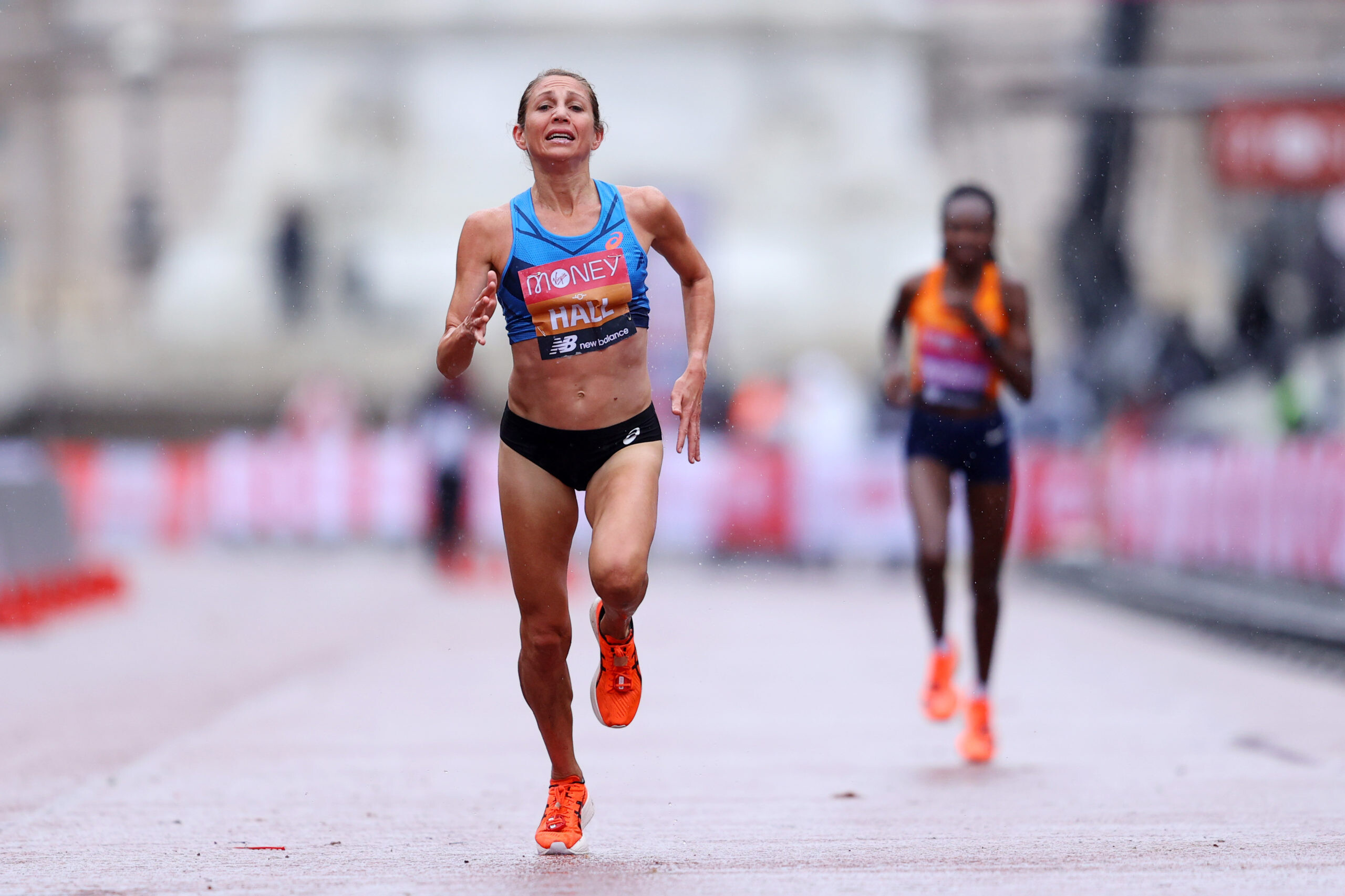
“Sara is a wonderful addition to this year’s race,” said Jim Harvey, the MRRs elite runner coordinator. “She is a very accomplished athlete and a great person.”
The 87th Manchester Road Race, which has been designated a World Athletics Label Event by World Athletics, starts at 10 a.m. on Thanksgiving Day Nov. 23. The 4.748-mile-long road race is run on a loop course through Manchester’s central district that starts and finishes on Main Street, in front of St. James Church.
Login to leave a comment
Manchester Road Race
The Manchester Road race is one of New England’s oldest and most popular road races. The 86th Manchester Road Race will be held on Thanksgiving Day. It starts and finishes on Main Street, in front of St. James Church. The Connecticut Sports Writers’ Alliance recently honored the Manchester Road Race. The CSWA, which is comprised of sports journalists and broadcasters...
more...Does Running at Night Make for a Bad Night’s Sleep?
Experts offer advice for those struggling to fall asleep postrun.
Sometimes running at night just makes life easier, especially on busy days when it seems there isn’t nearly enough time to finish your to-do list. Also, evening runs are ideal for those who turn to exercise as a way to de-stress after a long day. But can running at night ruin your sleep? And therefore, does it make nighttime running counterintuitive to your overall training, considering sleep is crucial for recovery?

Like most conundrums runners contemplate, the answer depends on the runner. Here, we explain how running at night can affect your sleep and what to do if you feel like your nighttime run is worsening your sleep issues.
Does running at night make for a bad night’s sleep?
“In the past, the recommendation was, you really shouldn’t exercise in the evening at all,” Bob Wright, director of lifestyles education at Hilton Head Health tells Runner’s World.
Experts recommended this for two reasons: First, because exercise can increase endorphins, which can reduce sleepiness. Second, because exercise increases one’s core body temperature, which makes it hard to fall asleep, Wright explains.
However, a number of studies suggest the opposite, including a systematic review and meta-analysis published in Sports Medicine in 2019. This research greenlights exercise in the evening as long as you complete vigorous activities, like long runs or workouts, an hour before bedtime.
“For most people, at least mild or moderate exercise doesn’t seem to interfere with sleep very much,” says Scott Kutscher, clinical associate professor of sleep medicine at Stanford University. But it all depends on the person, he adds.
When we fall asleep, our melatonin levels start to rise, and our body temperatures begin to fall, both of which signal it’s time for bed, Kutscher explains. If you run before bed your core temperature will increase but once you stop, your sweat will help you cool down. This is a passive cooling effect that can actually help some runners fall asleep, he explains.
However, a rise in body temperature before bed can be counterproductive for runners who don’t cool off as easily. For this population, running before bed can make it harder to fall asleep. What’s more: If you’re aiming to re-hydrate and re-fuel postrun, that can also prolong bedtime, Kutcher adds.
In short, both experts agree running before bed will not ruin sleep for most. However, if you have difficulty falling asleep after an evening run, then you might want to reconsider your nighttime routine.
Tips to Help You Sleep Better After a Workout
If you have difficulty sleeping after a long evening run or workout, these tips can help you fall asleep, according to Kutscher and Wright.
1. Time It Right
Plan to stop running at least one hour before bedtime to allow yourself time to literally cool down, Wright says. Keep in mind, there’s no hard and fast rule, so you can use an hour as a benchmark and adjust it as needed.
2. Add Relaxation Practices
Incorporate less intense exercise into your cooldown routine to help you transition to sleep. Kutscher suggests adding stretches or yoga after a run to help you relax. During this time, you can also practice mindfulness and breathwork, which also aids sleep, he says.
Mind-body activities, including yoga or Tai Chi, can aid in falling asleep in general so they’re good options to add to your before-bed routine at any time, Wright adds.
If you noticed you do have trouble sleeping after an evening run, consider swapping your miles for less intense aerobic exercise. Holding off on your run until the morning can help regulate your sleep-wake cycle and improve sleep quality overall, as it provides natural light when you get out of bed (as long as you head outside), Wright adds.
3. Pay Attention to Pre and Postrun Routines
Be mindful of what you’re doing both right before and right after your evening run, because that’s what may disrupt your sleep more than running itself.
For example, consuming caffeinated products before or during a workout might make it harder to fall asleep. Also, if you don’t fuel after a sweat, hunger pangs can disrupt your zzzs.
If you need a snack after a run and before bed, Kutscher suggests eating foods rich in melatonin, magnesium, and potassium, like cherries or bananas. Keep in mind some people may need more food to replenish after a workout, not just a simple snack, so see what works best for you, keeping note of your nighttime habits so you can pinpoint how different techniques worked for your rest.
Login to leave a comment
Is Overhydration More Dangerous than Dehydration?
Here's why you need to monitor your water intake
Being human is all about balance. We strive to find an ever-elusive equilibrium between work and life. We go to yoga classes in hopes of improving our physical steadiness. We eat an assortment of fruits and vegetables, but we also munch on chips and dip. And, from a physiological standpoint, our blood cells need balance, too.
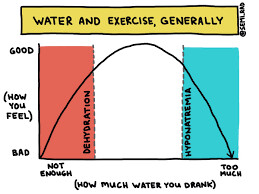
As athletes—especially ones who spend time outdoors during a heat wave—the ethos we usually hear is “hydrate, hydrate, hydrate.” However, a 2020 research article from Stanford University School of Medicine offers a different perspective. In the piece, the study’s lead author notes that overhydrating is actually more dangerous than being dehydrated.
One of the most important things to maintain balance in our blood cells is the sodium-to-water ratio, says Tamara Hew-Butler, associate professor of exercise and sport science at Wayne State University School of Medicine. When you’re dehydrated, you contain less water, causing your blood cells to shrink. However, when you drink some H2O, your cells recover quickly.
When you consume a lot of water (more than three liters in an hour), your sodium levels dip to abnormally low levels, taking you into dangerous territory. If the water count in your body is much higher than your sodium levels, you can develop hyponatremia—a dangerous result of overhydration. “If you drink too much water, all of your cells start to swell,” Hew-Butler says. “That becomes a problem in your brain, because your brain can only swell five to eight percent [beyond its normal size] before it runs out of space in the skull.”
It’s not something to be taken lightly. In some cases, hyponatremia can lead to death, Hew-Butler says. “The amount of water that leads to hyponatremia is different for everyone,” she adds. “It depends on the size of the person, the ambient temperature, and exercise intensity and duration.” However, if you need to quantify it, typically drinking about three liters of water within an hour can cause severe hyponatremia, potentially prompting a seizure, coma, or even death, Hew-Butler says.
Overhydration is a particularly large concern during the summer months. “The first thing that everybody tells you—and it’s not always wrong—is to drink lots of water,” Hew-Butler says. “But, when it’s hot out, more people die from overhydration than they do from dehydration.”
That’s because your blood cells actually retain water as a result of the heat, so you’re not quite as dehydrated as you may think.
This isn’t necessarily new information, Hew-Butler says. “The results of a 1999 study in the American Journal of Emergency Medicine support that hyponatremia is [generally] more common than heatstroke.” She adds that it’s the most common cause of serious illness in the Grand Canyon—more than heat exhaustion, grand mal seizures, nausea, and dizziness.
What should you do to achieve that balance of hydration? Drink to thirst, recommends Allen Lim, a sports physiologist and the founder of sports nutrition brand Skratch Labs. (So yes, that means skipping out on your emotional support water bottle.) However, even when you’re feeling parched, make sure to monitor your H2O intake.
“During exercise, the thirst mechanism will prioritize [sodium] balance over water balance,” Lim says. “As we lose sodium in our sweat, we will naturally drink less water to maintain sodium balance. Since there’s not as much sodium in the body, we don’t drink everything we lose, so we can keep the ratio of water to sodium the same.” Essentially, your body makes you thirsty when that sodium-to-water ratio is skewing high on sodium. And that’s when you should drink water.
You know that old saying, “Listen to your body?” That’s sage advice when it comes to hydration, especially when it’s hot out. “Drinking to thirst is important even though it can result in dehydration,” says Lim. “That dehydration is important to keep the sodium balance correct.”
by Outside Online
Login to leave a comment
Do You Need Electrolyte Supplements at Altitude?
Here's what to keep in mind about hydration supplementation at all elevations
When Lara Crawford stopped into her local vitamin and supplement store a few months ago, she was in search of something to alleviate her acid reflux, which causes a burning sensation in her chest and acid regurgitation. But the conversation quickly took a turn when a staff member learned Crawford wasn’t taking electrolyte supplements.

Crawford lives at 9,000 feet in the Colorado Rockies, a place considered to be high altitude. Even after living in the mountains for years, she never saw a need for additional electrolytes. However, the staff member told Crawford those who live at altitude tend to get dehydrated overnight—and suggested she start taking sports salts pills and a daily electrolyte powder.
“I thought those were just for ultra athletes or like serious athletes, but he told me everybody should be taking them,” Crawford says. He spoke so convincingly about their benefits that she decided to give the electrolytes and sports salts a try.
After using the sports salts in the morning and the electrolytes at midday for a few months, she noticed a moderate improvement in her acid reflux. However, the biggest change was in her face: She no longer woke up with dry, puffy eyes.
Spotting the meaningful difference, she wondered if the staff member was right. Was the shift due to her new electrolyte supplements? Maybe these weren’t just for endurance athletes after all. Perhaps even people who only engaged in moderate exercise still needed to supplement with electrolytes at altitude.
Vic Johnson, an Utah-based sports nutritionist who works with outdoor athletes, including ultra runners, cyclists, and triathletes, says that while we do lose more fluids at altitude, there’s nothing special about nighttime.
However, the electrolyte and hydration question, and how much each of us should be consuming each day, is a bit more complicated.
At higher elevations, your body has to work harder to get oxygen, which causes your breathing rate to increase. Since you lose water through respiration, this results in greater fluid loss. The air is also drier at altitude, which makes your sweat evaporate faster and causes additional fluid loss. Each of these factors contribute to your body losing more water than at sea level, requiring you to hydrate more frequently.
However, the longer you stay up in the mountains, the better it gets. Johnson says people who live at altitude are able to adapt to the lack of oxygen. Their bodies become more efficient, producing more red blood cells to carry oxygen through the body, which reduces the amount of fluid lost.
“It’s going to be pretty stressful on your body for a couple of weeks,” Johnson says, referring to spending time at elevation. “That’s the most crucial time to increase fluid intake. Then things will kind of regulate, and you won’t have to compensate quite so much.”
However, even longtime residents of high altitude towns—Crawford has lived at 9,000 feet for 29 years—typically need about a liter to a liter and a half more water per day (about four to six cups) than people living at lower altitudes. But hydration isn’t a one-size-fits-all prescription. Whether you’re in the mountains or at sea level, your fluid intake varies based on the weather, the amount you exercise, and your overall health.
To help his athletes find the amount of hydration they need, Johnson performs a sweat rate test. He starts by weighing them before they exercise. While they work out, he keeps track of the fluids they drink and any urine they lose. After they’ve finished, he weighs them again and plugs each data point into an equation to figure out how many milliliters of sweat per hour they lose. (If you’d like to try this for yourself, use a step-by-step guide to finding out your own sweat rate.)
It’s important to note that even once you’ve figured out your sweat rate, completely replacing your lost liquids isn’t necessarily the goal. It’s not bad to be slightly dehydrated and more hydration isn’t always the solution. For many, drinking to quench your thirst is sufficient. (Those in their 70s or 80s need to monitor their intake a bit more, because our thirst sensation can decrease with age.)
Electrolytes are electrically-charged minerals such as sodium, calcium, magnesium, and potassium that regulate your muscle contractions, keep you hydrated, and balance your pH levels. Every fluid and cell in your body has electrolytes, which aid the function of your nerves, muscles, brain, and heart. Electrolytes also manage the balance of fluids in your body’s cells and are lost through sweat and urine, or if you’re sick, through vomiting and diarrhea.
While electrolytes are essential, Johnson says most of us get all we need from food. “A normal, varied diet should provide you with plenty of electrolytes, even at altitude.” Johnson says, “For the recreational athlete, it’s honestly not that big of an issue.”
If you aren’t engaging in high-output endurance activities lasting longer than three hours, and if you’re eating a nutrient-dense diet with whole grains, legumes, vegetables, fruits, nuts, and seeds, Johnson says you should be getting enough electrolytes without needing additional supplementation. However, endurance athletes who engage in high-output endurance activities lasting longer than three hours have different hydration needs, and may find electrolyte powders and capsules are a good way to stay hydrated and keep their electrolytes balanced.
That doesn’t mean these supplements are the secret to unlocking a new PR. A 2020 study conducted by researchers at Stanford University found that electrolyte supplementation does not improve performance or protect against illnesses caused by a change in sodium levels, including exercise-associated hyponatremia (EAH).
If an endurance athlete wants to take in some sodium, Johnson recommends turning to salty foods, such as pretzels or even a peanut butter sandwich.
“For the most part, when our serum sodium levels drop, the body can usually take care of that and regulate that on its own,” he says.
So, if electrolyte supplementation isn’t really necessary for most people, why did Crawford see a noticeable difference in her face after months of supplementation?
The answer most likely lies in what Crawford took with the powder and capsules.
Before going to the supplement store, Crawford says she struggled to drink enough water. However, while doling out instructions for the supplements, the staff member instructed Crawford to drink a full bottle of water with her morning sports salts capsules (which contain sea salt, magnesium, and potassium) and to mix the flavored electrolyte powder with at least 16 ounces of water later in the day. The supplements provided the structure for her to consume more water, improving her overall hydration and reducing the puffiness in her eyes.
If you live at altitude and find it difficult to drink adequate fluids, a flavored powder might help. For most people, however—including serious athletes—drinking when you’re thirsty is usually enough.
by Outside Online
Login to leave a comment
The women elite talent will be the strongest in the event’s history, at the 51st Wharf to Wharf race Sunday morning
The lineup of elite talent will be deep and the storylines numerous when runners of all ages and skill levels line up for the start of the 51st Wharf to Wharf race Sunday morning.
The excitement and anticipation will be palpable. For some, the goal is to complete the annual six-mile race to Capitola. Others will be costumed, poised to update their social media apps with colorful photos, full of smiling faces.
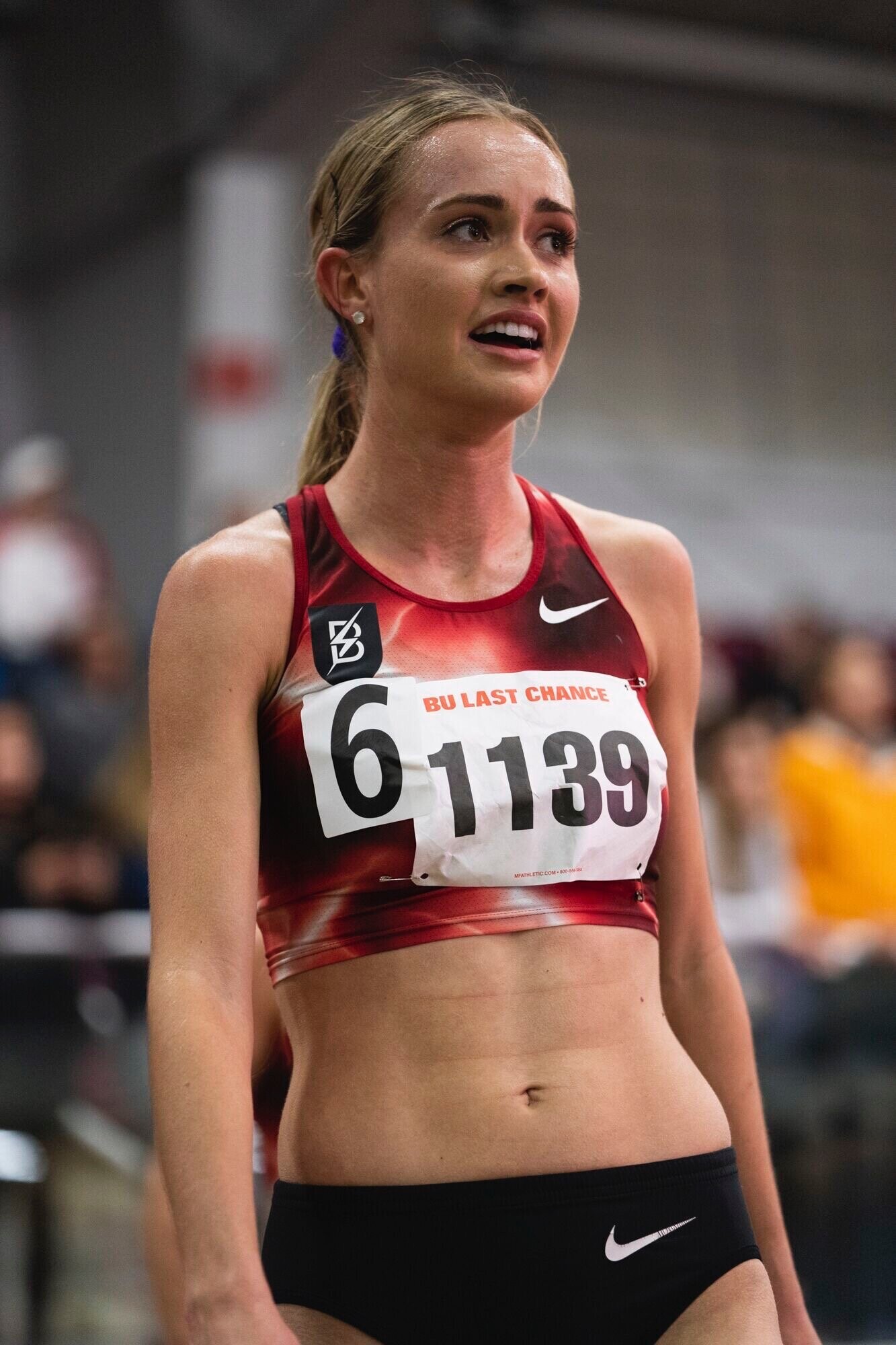
There will also be a more competitive bunch of runners who look to reach the Capitola Wharf in personal-record time, or post a top-100 finish in their gender division to claim elite Wharf to Wharf apparel.
And there will be a select few looking to take first, well ahead of the sea of runners, which has been capped at 15,000.
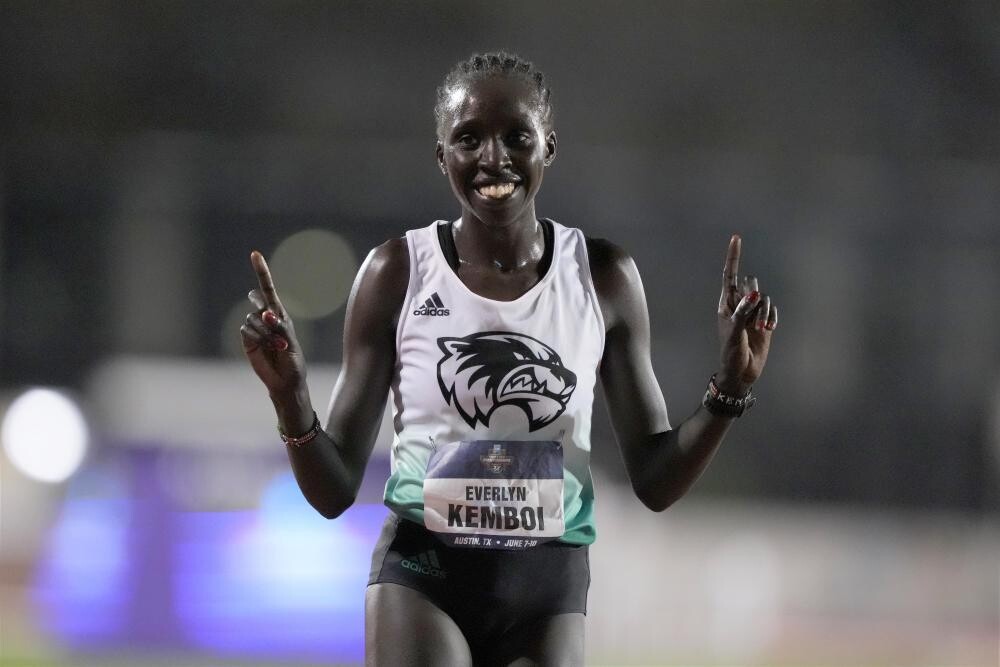
Among them is defending women’s champion Ednah Kurgat of Colorado Springs, who looks to again secure the Mayor’s Cup and $4,000 prize awarded to the winners.
Repeating as champ won’t be easy. “The women’s field is arguably the strongest in the event’s history,” said Dane Gradone, the event’s elite athlete coordinator. “It’s completely (awesome).”
Kurgat’s solid ’23 season includes a win at the USATF Cross Country Championships in January and a sixth-place finish in the 10,000-meter race at the USATF Outdoor Championships earlier this month.
Everlyn Kemboi, the ’23 NCAA champion in the 10,000 and runner-up in the 5,000, should contend for supremacy. Also entered are Kenyan Mary Munanu, last year’s Wharf to Wharf runner-up, Ethiopian Werkuha Getachew, the runner-up at last year’s World Championships in the steeplechase, and fellow Ethiopians Tigist Ketema and Weynshet Ansa, both multiple-time national champions. Kenyan Sarah Naibei is a world-class runner on the roads, and a 52-minute 10 miler. Annamaria Kostarellis is a freshly minted NCAA All-American.
The local contingent is equally impressive. It includes former Santa Cruz High and Oregon State University standout Mari Friedman, the top female local finisher in ’22.
“I’m super excited,” Friedman said. “It’s one of my favorite races. It’s a holiday for me.”
Friedman’s goal? “To race happy and have fun,” she said, noting her best results come when she follows that plan.
Back in the field for the first time since 2014 is Nike runner Vanessa Fraser, a Scotts Valley High and Stanford University alumna. She’s coming off a 12th place finish in the 10,000 at the USATF Outdoor Championships.
Fraser, who lives in San Francisco, is in the process of transitioning to more road races. She returns to the one that got it all started for her.
“I’m excited to mix it up and see how I can finish and be competitive,” said Fraser, who has qualified for the 2024 U.S. Olympic Team Trials on Feb. 3. “Top 10, that’s a good goal. Anything higher would be great.”
Ashlyn Boothby, an incoming senior who has broken most of Fraser’s records at Scotts Valley, will compete in the race for the first time. She’ has been at camp with the Falcons in Truckee, doing altitude training and bonding with teammates.
“This is super special to be in the same race as Vanessa Fraser,” Boothby said. “She’s my idol. I don’t know if I’ll be able to keep up with her.”
The men’s field is primed to produce another exhilarating finish.
Salinas’ Diego Estrada, an Alisal High alum and former Olympian in the 10,000, finished second in the ’22 Wharf to Wharf and expects himself to be in title contention again after upping his training. He finished in 27 minutes, 18 seconds last year, two seconds behind champion Emmanuel Bor.
“I’d like to break 27 (minutes),” said Estrada, who is running 90 miles a week. “If I lose and break 27, I’ll be really happy. And if I win and don’t break 27, I’ll be really happy. But there’s so much talent in our area, I don’t know what will happed til we get to the downhill.”
Estrada will be tracked closely by a fair share of challengers and hardened road running veterans.
Fellow Olympian Ben Blankenship, who currently lives and trains in Eugene, Oregon, is also in the field. So is established marathoner Colin Bennie of San Francisco, the top American at the Boston Marathon in 2021. He finished ninth in Capitola last year.
This year’s International contenders include a trio of experienced Kenyans, James Ngandu, Josphat Kipchirchir, and Shadrack Keter, who have all run nearly an hour in the half marathon and racked up numerous racing honors.
Aptos’ Jack Rose is back after finishing as the top local male finisher in ’22, but a handful of young collegians will be gunning to unseat him. Among them are former Scotts Valley star Jeremy Kain, who runs for Duke University; Julian Vargas, a St. Francis alum who runs for Xavier University; Aptos talent Trent Nosky, a recruited walk-on for Colorado State University’s cross country and track programs; and Patrick Goodrich, a former Scotts Valley standout who competes for Cal Poly-SLO’s club team.
Rose, winner of the Ventura Marathon in February in a PR time of 2:21:39, said the quality of his workouts have improved since he finished as top local last year. He excited to hear the bands stationed along the route and hear spectators shout support as he passes them.
Kain is hoping to unseat Rose as top local. He’s increased his miles from 40 a week to 65-70. “I do think I’m in pretty good shape right now,” he said.
Experience is key, and Kain is competing in the race for the first time. “I’m kinda ashamed of myself that it’s my first year,” he said. “It never worked in my training block, but, this year, getting out there and giving it my all is going to be exciting.”
by Jim Seimas
Login to leave a comment
Wharf to Wharf
Each year, on the fourth Sunday in July, thousands of runners from across America and around the globe return to Santa Cruz, California for the annual six-mile race to Capitola-by-the-Sea. First run in 1973 by a handful of locals, the Wharf to Wharf Race today enjoys a gourmet reputation in running circles worldwide. Its scenic, seaside setting, perfect weather, and...
more...Saucony Launches New NIL Partnership with a Different Type of Distance Athlete
The shoe brand is teaming up with Galen College of Nursing to provide footwear and financial compensation to four stand-out nurses.
If you’ve followed college sports over the last few years, you’ve probably heard about NIL, or “Name, Image, and Likeness.” Ratified in 2021, NIL allows college athletes to partner with companies and earn money from marketing or sponsorships. Previously, NCAA athletes were not allowed to profit off business deals related to their sport.
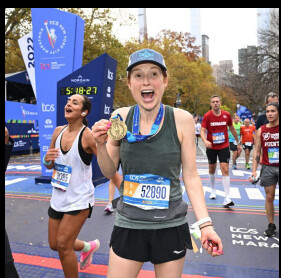
On Wednesday, Saucony posted on Instagram that, “The next big NIL deal is coming.” And on Thursday, they revealed that deal: the NIL Student Nurse Initiative. The shoe brand is partnering with Galen College of Nursing to sign four collegiate nursing students to NIL deals.
“We've officially signed four new collegiate distance athletes,” Saucony wrote on Instagram. “No, not your traditional endurance athlete, four aspiring nurses @galencollegeofnursing! The average nurse can walk nearly a marathon each week on the job! With this NIL initiative, we’re shining a light on their stories, their successes, and how critically important nurses are to our healthcare ecosystem.”
The nurses—four of Galen’s top students—include Lauren Lowe, Sarah Sangha, Ashley Lutes, and Brianna Nelly. The quartet will receive pairs of Saucony Triumph 20 and Saucony Endorphin Shift 3 shoes to wear on the job, as well as an undisclosed amount of “financial compensation,” according to a press release. The company told Runner's World that this is currently the only NIL partnership the brand has.
Other collegiate distance runners have garnered NIL deals in recent years. Star runner Katelyn Tuohy, of N.C. State, inked a contract with Adidas in November, and the reigning NCAA cross country champion, Charles Hicks, of Stanford, signed with Nike in March. Duke steeplechaser Emily Cole reportedly makes over $150,000 from endorsement deals on social media.
In the spirit of National Nurses Month in May, Saucony is also offering a discount of 25 percent to all nurses and nursing students, through May 18.
by Runner’s World
Login to leave a comment
Is Mark Zuckerberg faster than you?
Mark Zuckerberg, the CEO of Facebook parent company Meta, is doing some post-race flexing on his social media platform after sharing the results of a 5K race he and a group of friends ran over last weekend.The 38-year-old Zuckerberg has posted photos of himself and three friends before and after running the Stanford Medicine MyHeart Counts 5K in Stanford, Calif., on April 30.
The race is an annual fundraiser to benefit the Stanford Center for Inherited Cardiovascular Disease, which is located just a few kilometres south of Meta’s corporate headquarters in Menlo Park.Good 5K with friends,” Zuckerberg posted on his personal account after the race.
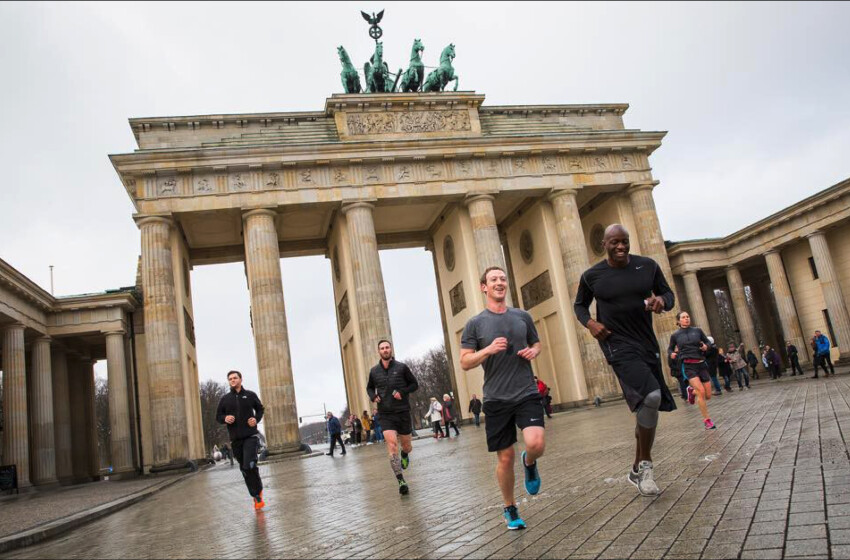
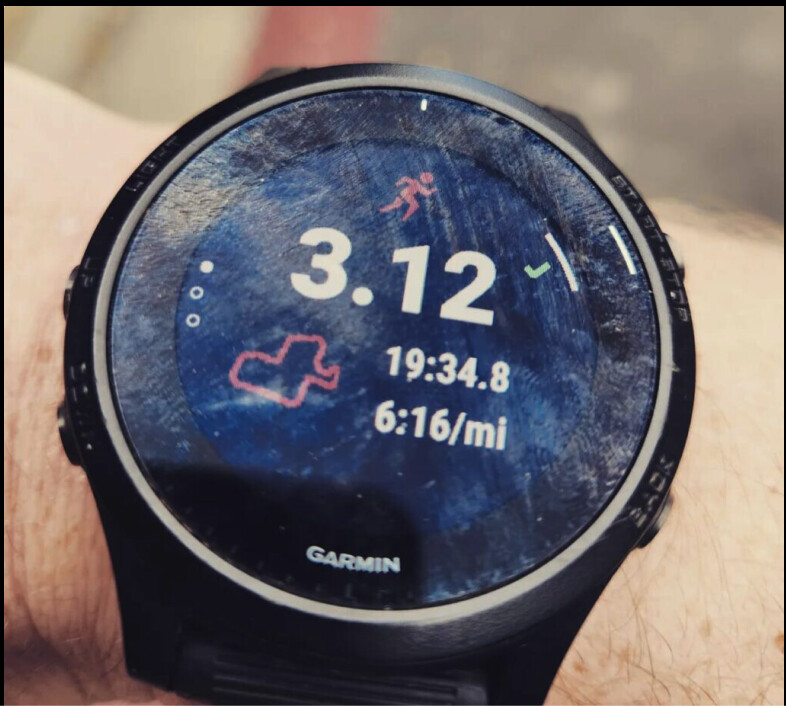
Along with the pre- and post-race group photos, Zuckerberg posted a shot of a Garmin watch, revealing a time for the 5K: 19:34.8.
“Whole crew hit our sub-20 min goal,” Zuckerberg continued, “but that before and after photo shows we had to push!”
Results posted at raceroster.com confirm 19:34 as Zuckerberg’s official time for the 5K.Judging by Zuckerberg’s follow-up comments to his original Facebook post, his performance marks a return to form for the multi-billionaire. Responding to a congratulatory comment from one of his followers, Zuckerberg replies: “Thanks! I don’t think I’ve done a sub-20 min 5K since high schoolElsewhere in the comments, Zuckerberg writes that he had been on a hiatus from running, but that his recent mixed-martial-arts training had resulted in fitness gains that helped him get his running game back on track.
“I actually stopped [running] for a while and got stronger from MMA. Then I ran for about a month before this race and realized I was faster than before.”
One follower asked Zuckerberg whether his return to running might be the nudge he needs to lead his company into the running-tech market.
“Way to go! Meta needs to start making its own wearables under Oculus haha!” Oculus is the virtual-reality headset brand Facebook purchased in 2014.
“Maybe one day!” Zuckerberg replied.This isn’t the first time Zuckerberg has posted about his running exploits on Facebook. In 2016 he posted a gallery of his favourite personal running photos to celebrate hitting his distance goal for that year—365 miles (587 kilometres)—which he reached on July 14. Zuckerberg wrote that he ran his fastest mile (1,609m) of 2016 in 5:58, or roughly 3:42/km pace.
by Running Magazine
Login to leave a comment
Alfred, Wilson and Lyles secure double success in Florida
Julien Alfred, Britton Wilson and Noah Lyles each started their seasons with winning doubles at the Tom Jones Memorial in Gainesville, Florida.
Commonwealth 100m silver medallist Alfred improved to a 21.91 (1.8m/s) Saint Lucian 200m record, while two-time world 200m champion Lyles ran 20.16 (-1.2m/s) on Friday (14). They also won their 100m races the following day, Alfred clocking a wind-assisted 10.72 (2.4m/s) and Lyles running 9.95 (1.6m/s) ahead of Joseph Fahnbulleh (9.98).

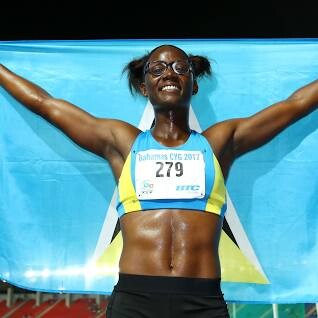
Alfred picked up from where she left off following an indoor season that included PBs of 6.94 for the 60m and 22.01 in the 200m set at the NCAA Indoor Championships for the best ever one-day indoor sprints double. That 6.94 places her joint second on the world indoor 60m all-time list.
After some relay performances to open her outdoor campaign, the 21-year-old improved her previous 200m PB of 22.46 set last May, taking it to 21.91 in her first individual race of the season.
Finishing second in that collegiate race was McKenzie Long in a PB of 22.31, while Alfred’s Texas teammate Rhasidat Adeleke improved her Irish record to 22.34 in third.
In another race, world finalist Melissa Jefferson ran 23.02 (1.8m/s) to win ahead of five-time Olympic gold medallist Elaine Thompson-Herah (23.23). Kiara Grant won the pro 100m race, clocking 10.99 (1.6m/s).
Also getting his outdoor season under way, Lyles ran 20.16 into a headwind (-1.2m/s) to dominate his 200m race. In one of the collegiate races, Alabama’s Tarsis Orogot ran a wind-assisted 19.60 (2.9m/s), while Terrence Jones went quickest in the collegiate 100m races, clocking 9.91 (1.0m/s) to match the Bahamian record.
Like Alfred, Wilson also threatened a world record at the NCAA Indoor Championships when she ran 49.48 to win the 400m. She achieved another fast time on Saturday (15), running a collegiate record of 49.51 to win her 400m race, the day after she claimed a 400m hurdles win in 53.23 when making her individual season debut. Anna Hall finished second in that hurdles race in 54.48 and Masai Russell was third in 55.39. Adeleke ran another Irish record to finish second behind Wilson in the 400m, clocking 49.90.
In the sprint hurdles, two-time world champion Grant Holloway won his 110m hurdles heat in 13.03 (1.1m/s) ahead of Rasheed Broadbell (13.12). Holloway then won the final in 13.05 (0.5m/s). After a wind-assisted 100m hurdles heat win of 12.55 (2.8m/s), 2019 world champion Nia Ali won the pro final in 12.53 (1.4m/s) ahead of world champion and world record-holder Tobi Amusan (12.59), who won her heat in 12.74 (1.1m/s). World indoor 60m hurdles silver medallist Devynne Charlton was third in the final in 12.64.
World indoor champion Jereem Richards got things off to a fast start as he won his first 400m race of the season in a PB of 44.68. Alonzo Russell also ran a PB of 44.73 for the runner-up spot.
Will Claye and Christian Taylor were separated by a single centimetre in the men's triple jump, respectively leaping 16.90m and 16.89m. Thea LaFond recorded 14.13m to win the women's contest.
At the Mt. SAC Relays in Walnut, California, on Saturday (15), Olympic and world silver medallist Rai Benjamin made his 400m hurdles season debut and clocked 47.74 for a dominant victory.
Cravont Charleston won the elite men’s 100m race in a wind-assisted 9.87 (3.0m/s) ahead of Kyree King (9.98) and world 400m champion Michael Norman (10.02).
Juliette Whittaker topped the 1500m in 4:12.49 on Friday and the following day won the 800m in 2:01.79 ahead of her Stanford teammate Roisin Willis in 2:01.97.
Talie Bonds improved her PB to 12.65 (1.2m/s) to win the 100m hurdles.
At the Bryan Clay Invitational in Azusa, California, Nikki Hiltz pipped Michaela Rose in a close 800m race, 1:59.03 to 1:59.08, as both athletes dipped under two minutes for the first time on Friday (14). Claire Seymour (2:00.04), Elise Cranny (2:00.25) and Valery Tobias (2:00.31) also went sub-2:01.
On Saturday (15), Cooper Teare opened his season with a near 1500m PB of 3:34.96 ahead of Fouad Messaoudi (3:35.16).
Australian 15-year-old Gout Gout made a statement on the third day of the Australian Junior Athletics Championships in Brisbane on Saturday (15), clocking 20.87 (-0.1m/s) to win the 200m by almost half a second.
“It means a lot because I’ve been training so much for this. I was really nervous. The gun went, and I was good and I just kept pushing," he told Athletics Australia.
by World Athletics
Login to leave a comment
London, Ont. runner breaks Moh Ahmed’s U23 5,000m record
At the Windy City Invite in Chicago on the weekend, Evan Burke of London, Ont., put himself in elite company by breaking Moh Ahmed’s Canadian U23 indoor record in the 5,000m, running 13:38.46.
Burke, who attends Stanford University in Palo Alto, Ca., finished sixth in the race behind the 2022 NCAA cross-country champion Charles Hicks, clocking the sixth-fastest 5,000m time in his school’s history.
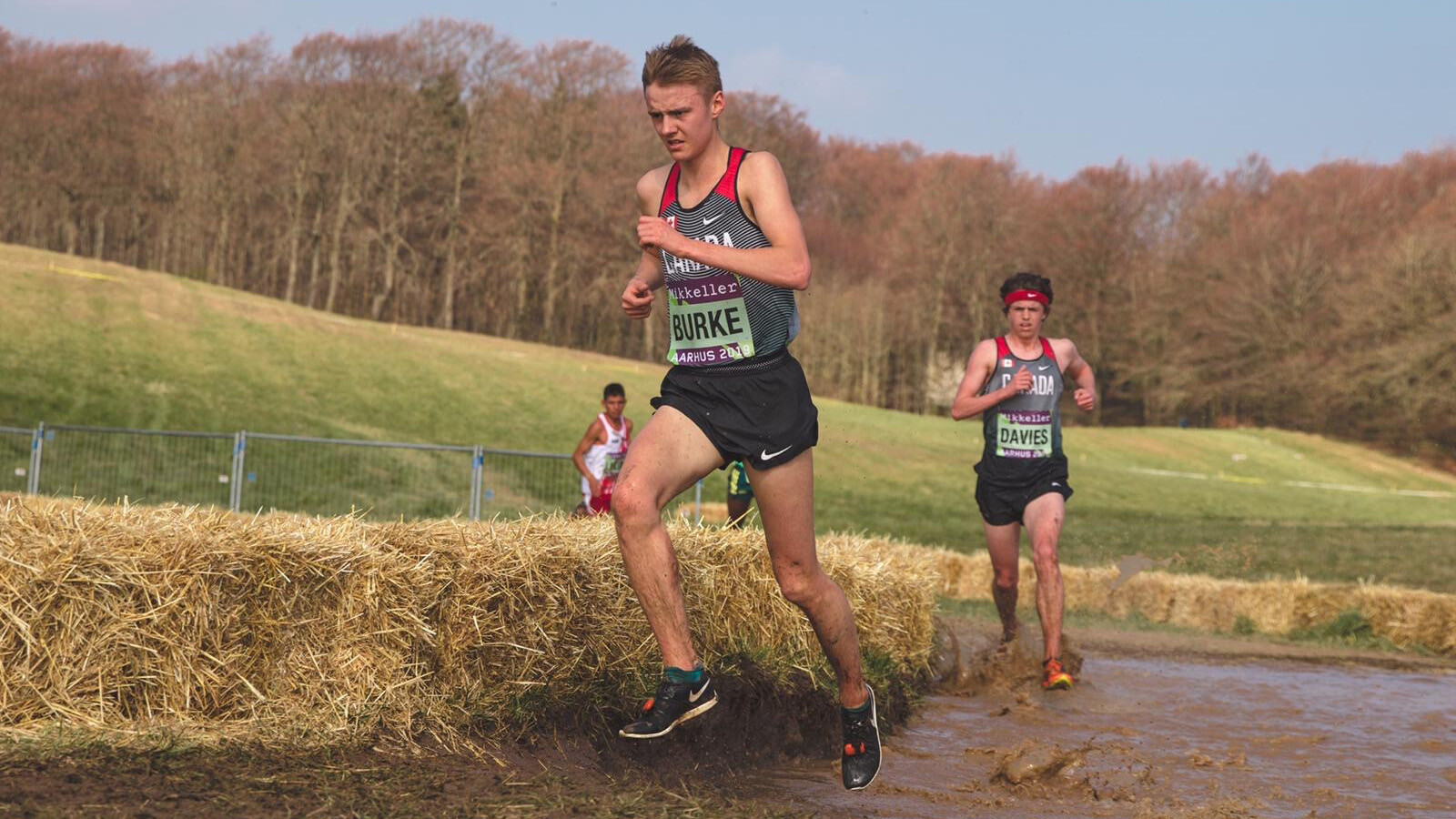
Burke’s previous accomplishments include winning the 2018 Ontario XC Championships and finishing fourth in the 3,000m at the 2018 Youth Olympic Games in Buenos Aires, where he set a Canadian U18 record of 8:14.99.
His achievements eventually led him to a scholarship at Stanford University in Palo Alto, Calif., where he is currently in his fourth year and competes with the school’s cross-country and track program, specializing in the 3,000 and 5,000m.
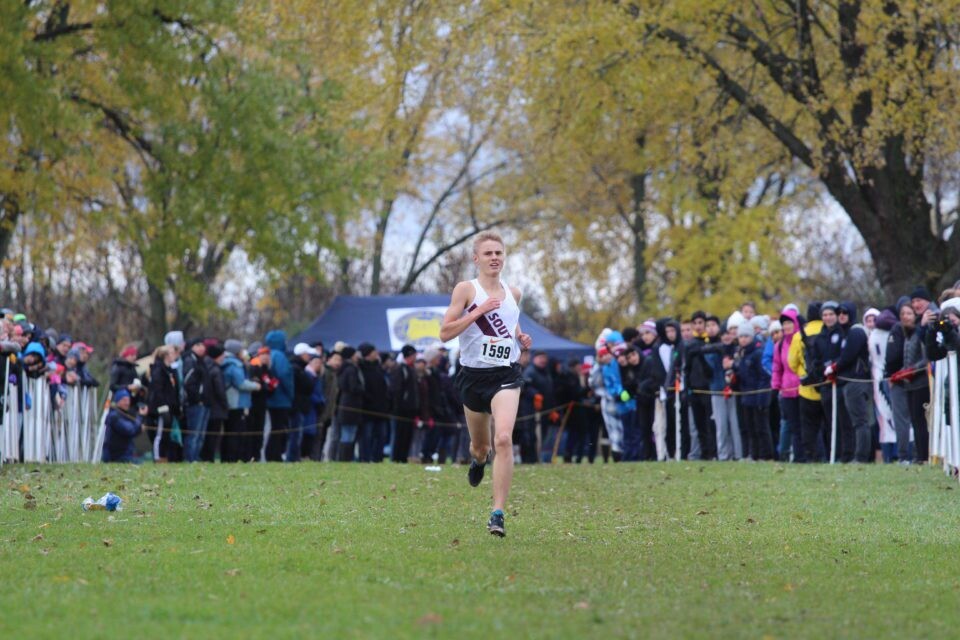
The previous record, held by Ahmed, was set in 2011, when he ran 13:41.74 at the Texas A&M Invite. Burke bested Ahmed’s time by three seconds.
Burke’s record is the third Canadian U23 record to be broken in this 2022-2023 indoor season, joining Quebec’s Olivier Desmeules of Penn State University, who broke the 600m record, and Vancouver’s Ceili McCabe of West Virginia University, who broke her own women’s 3,000m record in December.
by Running Magazine
Login to leave a comment
How Young Is Too Young to Lace Up for a Marathon?
A new paper looks at the available research and makes recommendations.
The world—running and not—had its eyes on the Flying Pig Marathon this past May after a 6-year-old boy completed the race with his family in 8 hours and 35 minutes.
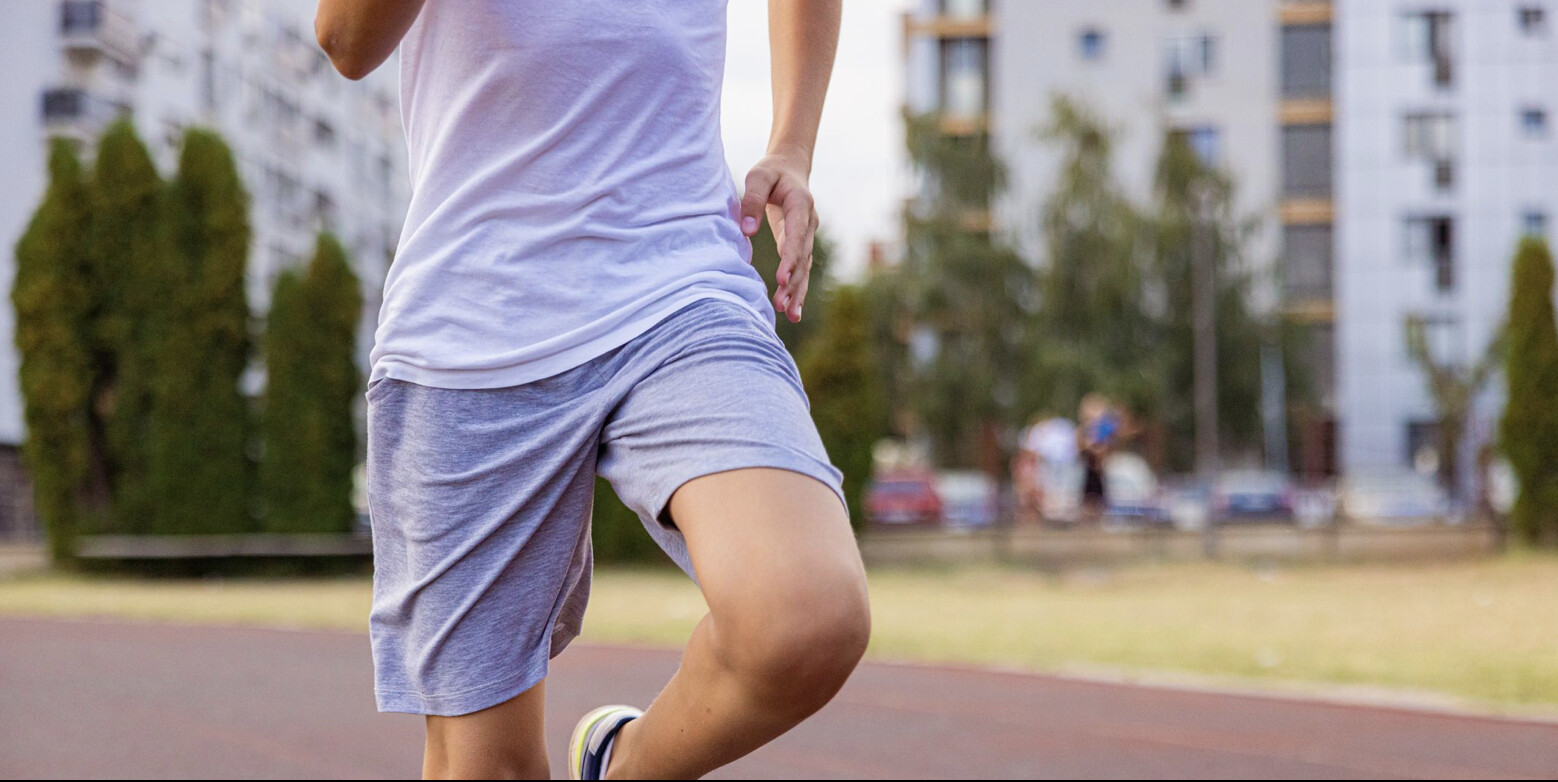
It wasn’t the finish itself that caused an outcry, but a subsequent social media post by the boy’s mother that references his distress during the later miles of the race.
The photo showed the boy holding a box of Pringles potato chips with the caption, “On the marathon course, Rainier knew they usually hand out Pringles around mile 20. He was struggling physically and wanted to take a break and sit every three minutes. After 7 hours, we finally got to mile 20 and only to find an abandoned table and empty boxes. He was crying and we were moving slow so I told him I’d buy him two sleeves if he kept moving. I had to promise him another sleeve to get him in the family pic at the finish line. Today I paid him off.”
Sports medicine experts and pediatricians got wind of the boy’s marathon finish, and its unique circumstances, and published a paper in JAMA Pediatrics in October, titled “Kids on the Run—Is Marathon Running Safe for Children?”
The answer is: We’re not totally sure.
“Youth running is becoming more popular, particularly at longer distances, and the trend is ahead of the research,” says Emily Kraus, M.D., a clinical assistant professor at Stanford University, a sports medicine physician at Stanford Children’s Hospital, and the director of the the Female Athlete Science and Translational Research Program.
Kraus, a runner, was not an author on the JAMA Pediatrics paper but coauthored the 2021 youth running consensus statement published in the British Journal of Sports Medicine.
“We can’t conclude that there’s no risk or minimal risk, or a greater risk [to young children running long distances],” she tells Runner’s World.
The paper looks back at the running boom of the 1970s when several young children completed marathons; children as young as 8 years old covered the distance in 3 hours and 31 seconds. The authors note that although there were no reports of injuries or adverse events, physicians and race directors started to worry about the potential dangers of youth participation. In 1981 the New York City Marathon, then in its 11th year, instituted a minimum age requirement of 16 years old. Other races followed suit.
A 2010 paper published in the Clinical Journal of Sports Medicine looked at data from the Twin Cities Marathon from 1982 to 2007, which included 310 children aged 7 to 17 years old. The researchers found that the risk of a medical incident was about 50 percent lower in children than adults but not statistically significant. In other words: We can’t say for sure if they’re at lower risk for injury or medical problem.
“Some of the early research shows that the overall risk of competing in races is quite minimal or lower when compared to the adult running population,” Kraus says. “But the question becomes is that because the number [of children finishers] is so much smaller?”
Kraus, who treats primarily middle-school age athletes whose growth plates are still open, expresses concerns that we don’t know if marathoning at a young age will affect long-term growth and development.
“Young kids haven’t even started to initiate [certain developmental] milestones,” she says. “Athletes who are younger than 10 or 11 years old are true children. We don’t know enough to give the okay, in my opinion.”
Kraus advises against the repetitiveness of a single activity over time, like running. Instead, she encourages young athletes to try different physical activities that lend themselves to multidirectional movement, like soccer, tennis, and old-fashioned tag.
When asked to give guidance on a distance for young kids, Kraus says anything up to a 10K is “probably okay.” Ideally, she says, we would measure how far a young kid runs on any given day during free play or team sports to help guide that recommendation.
“[For children], free play at that stage of their development is more valuable in developing motor skills, agility, and hand-eye coordination,” she says.
Plus, although research is clear that healthy behaviors developed during youth sports can promote long-term physical activity and reduce the risks of diseases like diabetes, cardiovascular disease, and cancer, “sport specialization during childhood does not provide competitive advantages and is not a requirement for elite status,” the authors wrote in the JAMA Pediatrics paper.
What’s more is that youth marathon or ultramarathon running may not lead to lifelong participation in running events or long-term health benefits. The authors wrote: “Among children who participated in ultramarathons [longer than a marathon], less than 25 percent continued to do so as adults, and less than 10 percent were still running ultramarathons 30 years later.”
Most youth ultrarunners, the researchers wrote, are between 16 and 18 years old, but there are runners younger than 10 years old who have completed an ultra event.
Experts are unsure if this drop off in participation is because of overuse injury and burnout, or changes in interests. The authors go on to say that potential health benefits and risks of youth marathon running have not been compared similarly to shorter distance running or other sports.
But pediatric specialists like Kraus and the authors point out that the bigger question and concern when it comes to youth marathoning, particularly in children under 10 years old, is the intrinsic motivation of a young runner.
“Why is this child racing? Is it because they have a family of runners and they don’t want to feel left out? Is it something they deeply want to do?” Kraus asks, noting that young children likely don’t fully understand what training for and running a marathon really entails.
“If I were working with a 6-year-old, my conversation would be, ‘Do you know what [a marathon] is? Do you know what it feels like to run one mile? Or other shorter distances?’” Kraus says.
She’d then also work with families to understand why they were having a young child participate in such an extreme distance at this particular time, suggesting, instead, to use a marathon as a goal for years down the road.
Based on the available evidence, the authors developed a list of points families should consider before a young child runs a marathon or ultramarathon, in addition to assessing the physical health of the child, including:
Potential risks and benefits, reiterating there is limited available research
Determine the motivation for marathon running, with an emphasis on voluntary participation
Inform children that they have a right to stop at any point and will not be punished or experience negative consequences if they decide to stop
Discuss ways children can communicate their choice to parents and guardians
Monitor physical, psychological, social, and academic well-being, as well as continued commitment to marathon running during training
“For a 6- or 7-year-old who hasn’t fully captured goal-setting and follow-through, a marathon is a different type of challenge that goes beyond what they’re capable of handling,” Kraus says.
by Runner’s World
Login to leave a comment
Sophia Kennedy, Daughter Of Bob Kennedy, Looks For Steady Progress As She Prepares For Two National Meets
INDIANAPOLIS – As far as she is concerned, Dad is Dad. But every once in a while, Sophia Kennedy’s father comes up in conversation.
“Oh yeah, my dad ran professionally,” she says.
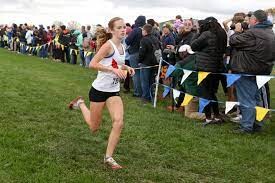
“Who’s your dad?”
“Bob Kennedy.”
After the oh-my-gosh replies, Sophia can’t help but smile.
“That always feels kind of cool.”
Also cool: Sophia Kennedy has qualified for both high school nationals in cross country, the Nike race Saturday at Portland, Ore., and Champs Sports (formerly Foot Locker and Eastbay) on Dec. 10 at San Diego. She is a senior at Park Tudor School in Indianapolis and has committed to Stanford.
For an American distance runner, being Bob Kennedy’s daughter is analogous to being an Obama sister entering politics or an actress whose father is Brad Pitt. Comparisons are inevitable, and inevitably unfair.
Yet by now, 52-year-old father and 17-year-old daughter are so used to it, it is a source of amusement rather than pressure. No one will be another Bob Kennedy. His impact on track and field cannot be overstated.
The two-time Olympian won four NCAA titles while at Indiana University and became the first non-African to run 5,000 meters in less than 13 minutes. His 1998 American record at 3,000 meters, 7:30.84, has been lowered little (to 7:28.48 by Grant Fisher) despite a 24-year span and introduction of super-shoes.
Sophia did not have to follow in those spikesprints. Her twin brother, Marcus, is a soccer standout. No way Sophia was going that route. She was once a goalkeeper “because I was a liability on the soccer field.”
Sophia took ballet lessons, played the clarinet. Her mother, Melina, a former IU runner who once ran for mayor of Indianapolis, and father encouraged the twins to try everything.
“Ultimately, they choose their own passion,” the father said. “We were big on hopefully finding something. Because I think it’s important to life and growth to find something that interests you, whether you’re the best at it or just really enjoy it.”
For Sophia, that became running. She was among the best and really enjoyed it.
Her transformational moment came when she nearly won a two-mile race around school grounds as a fifth-grader. She was outkicked by a boy. Then “it was on,” her father said.
Sophia affiliated with a local club, the Carmel Distance Project, and began winning races. In age-group cross-country nationals, she was 32nd in 2016 and 11th in 2017.
She didn’t have to travel far for competition, either. The Kennedy and Farley families used to live on Pennsylvania Street in Indianapolis homes separated by 73rd Street. Sophia grew up playing with a future Park Tudor teammate, Gretchen Farley, who has also qualified for San Diego.
Bob Kennedy has characterized Farley, a 2:09/4:50 runner who competes in four sports, as “a super talent.”
Sophia said all her parents have ever asked is whatever she does, give it her all.
“My parents have made it super clear, if I’m ever not happy in the sport, I don’t have to keep running,” she said. “It’s just something I’ve come to love because I love the hard work and the opportunities that it brings and the people that I meet.”
Sophia’s progress has not gone uninterrupted.
After setting an Indiana indoor 3,200-meter record of 10:12.32 last Feb. 19, she developed a fever, then an injury. She tried to maintain fitness via cross-training and anti-gravity treadmill. In May, when she began state track qualifications in a sectional, it was her first running on the ground in six weeks.
Given all that, it was redemptive to finish second at state in 10:25.02, or two seconds behind champion Nicki Southerland. Sophia lowered that to a 10:20.13 two-mile in finishing eighth at the Brooks PR Invitational.
Sophia took a measured approach to this cross-country season. Her father has credited her high school coaches, Garrett Lawton and Ryan Ritz, with prioritizing long-term future over short-term success. Sophia does not exceed 40 miles a week, and sometimes runs as few as 30.
“The one thing I realized,” she said, “if I want to be successful, I need to be healthy this year.”
That has been manifested in what is arguably her best run of runs. In a span of six 5Ks over eight weeks – none of which she won – she clocked 17:10, 17:12, 17:25, 17:24, 17:11, 17:23. She was third at state, fifth at NXR Midwest and second at Champs Midwest.
Even her cautious father conceded the daughter is on a trajectory that will accelerate as her strength matches her aerobic capacity. Sophia’s VO2 max is 82. Bob Kennedy’s was 83.
“I’m a little biased. I think you’re going to see huge leaps,” he said.
Sophia has come along during an unprecedented era in Indiana. Not only did Addy Wiley set a national record for 1,600 meters last June, there have been opponents such as Lily Cridge, Southerland, Addison Knoblauch and Farley.
According to inccstats.com, Cridge, Southerland and Kennedy rank Nos. 1, 4 and 5, respectively, in Indiana cross-country over the past 40 years.
Sophia is not intimidated at national meets. She sees such competition regularly. At San Diego last December, she led through a 5:19 mile and finished seventh.
She became the first Indiana girl in 15 years to have four top-five finishes at state cross-country . . . but never has she been a state champion on grass or track.
“She’s generationally great, and hasn’t won one yet. That’s stunning to me,” said Scott Lidskin, who coached Westfield to four state titles in girls cross-country.
Sophia will be surrounded by talent at Stanford. She chose the Farm over Notre Dame, North Carolina State, Virginia and Colorado.
Stanford was 13th in NCAA cross-country with a roster of six sophomores and one freshman. The team did not include two 1:59 freshmen, Roisin Willis and Juliette Whittaker, who won gold and bronze medals in the 800 meters at the World Under-20 Championships. Nor did it include Irene Riggs, a 2023 recruit coming off a 16:02 that was the second-fastest 5K in high school cross country history.
Sophia Kennedy, taking cues from her parents, pleads patience.
“I don’t want to be just a really good freshman,” she said. “I want to be really good in four years and five years and 10 years.”
It is mildly disappointing to be without a state title in Indiana’s single-class system. To win state at 3,200 meters, for instance, she suggested it might take 9:50 to beat Cridge (10:03.16 PB) and win.
No high school girl has broken 9:50 in an outdoor two-mile. Three have done so indoors: Mary Cain, Natalie Cook, Sydney Thorvaldson.
“I’m not looking for these immediate responses in my high school career,” Sophia said. “I want to run better at Nike nationals than I would have at the state meet. I want to be strong for the spring and not get injured.”
And not get caught up in what Dad did, other than to have a long career in the long run.
by Runner’s Space
Login to leave a comment
Why Am I Tired All the Time? We Have a Few Answers
We all have days that drag. But if you’re tired more often than not, it could be for one of these reasons.
It’s perfectly normal to feel groggy upon waking. It’s simply a phenomenon known as sleep inertia that requires you some time for your energy to kick in and our body and brain to feel awake. “Hardly anyone feels fantastic when they first wake up,” says Scott Kutscher, M.D., board-certified neurologist and associate professor of sleep medicine at Stanford University. However, people typically perk up over the next 30 to 60 minutes, he says.
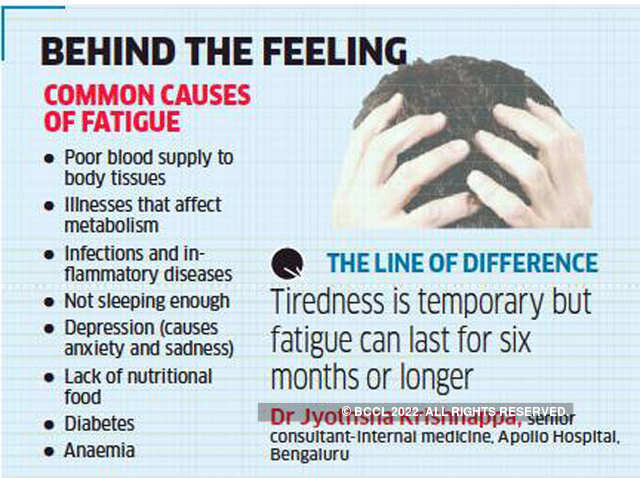
So, if you’re constantly tired several hours after leaving your bed, you might have a problem.
How to Know If Feeling Tired All the Time Is a Problem
We all have days—or even weeks—where we can’t seem to perk up. Blame it on an unusually heavy workload, a jump in running mileage, travel, or any number of other factors that can make the day drag.
Unfortunately, figuring out when tiredness is a problem can be tricky. “Tiredness is a subjective experience, so it’s up to each person to feel for themselves when tiredness is interfering with their life,” Kutscher says.
If you notice that you’re more tired than normal, look at your diet and lifestyle habits. “Diet is very important, and sometimes forgotten as the reason why people may feel tired all the time,” says Eric Ascher, D.O., a family medicine physician at Lenox Hill Hospital in New York City. “Sometimes, adjusting the diet to focus less on sugar and processed foods will improve fatigue.”
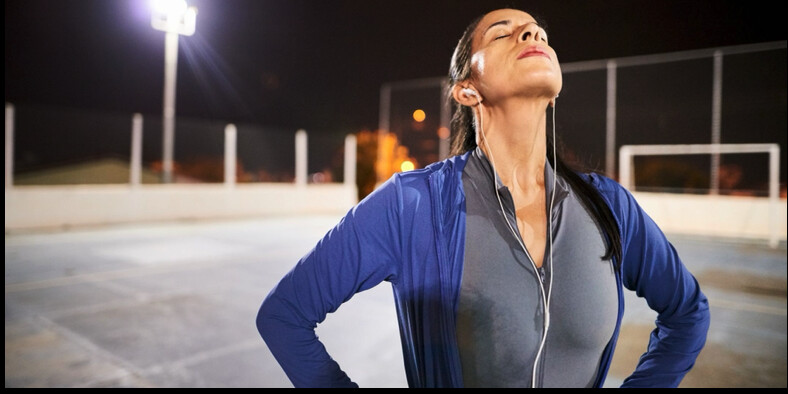
Staying well-hydrated throughout the day and prioritizing good sleep hygiene may help, too.
If you don’t feel perkier after two weeks of making lifestyle changes, Ascher suggests making an appointment to see your primary care physician. He or she will likely run blood tests to check for nutrient and hormone deficiencies, and screen for health conditions that cause fatigue, Ascher says. If it turns out that you do have a health issue, your doctor will be able to refer you to a specialist for treatment.
6 Reasons You Might Be Tired All the Time
While it is normal to feel tired, sometimes it can be something more serious. In fact, fatigue is a key symptom of the following health conditions.
1. Sleep Apnea
Sleep apnea is a potentially serious sleep disorder in which your breathing repeatedly starts and stops while you sleep. It’s also incredibly common, Kutscher says. In fact, an estimated 26% of adults between the ages of 30 and 70 have sleep apnea, per the American Academy of Sleep Medicine.
Sleep apnea can happen if the throat muscles relax (known as obstructive sleep apnea), if the brain doesn’t send proper signals to the muscles that control breathing (central sleep apnea), or a combination of the two (complex sleep apnea syndrome), per the Mayo Clinic. In any case, the result is broken sleep.
“Our bodies don’t like interrupted sleep, so someone whose sleep is very interrupted is going to go through their day feeling as though they had poor sleep the night before,” Ascher says.
2. Autoimmune Disease
Autoimmune diseases like lupus, rheumatoid arthritis, and type 1 diabetes occur when your immune system mistakenly attacks the healthy cells of your organs and tissues. While symptoms vary depending on the disease, fatigue appears in all of them. In fact, fatigue is often the most debilitating symptom for people with autoimmune disease, notes Harvard Health.
“When someone has an autoimmune disease, their body is in an inflammatory state, and that puts a lot of stress on the body,” Ascher explains. That’s why you might feel tired all the time.
3. Iron-Deficiency Anemia
According to the National Heart, Lung, and Blood Institute (NHLBI), iron-deficiency anemia is a condition that develops if you don’t have enough of the mineral iron in your body. Iron is part of red blood cells, a protein that carries oxygen throughout your body and helps your muscles store and use oxygen. Without enough iron, your blood can’t deliver enough oxygen to power your body, leading to tiredness and fatigue, the NHLBI explains.
Certain conditions can make it hard for your body to absorb iron, including celiac disease, ulcerative colitis, Crohn’s disease, and kidney disease. If you have one of these conditions, you may develop iron-deficiency anemia. However, iron-deficiency anemia can also occur if you lose blood. People with bleeding in the gastrointestinal or urinary tract, traumatic injuries, or heavy menstrual periods have a higher risk of iron-deficiency anemia, per the NHLBI.
4. Depression
Depression is a common mood disorder that affects your feelings, thoughts, and actions. You may feel persistently sad and hopeless, lose interest in normal activities, and/or feel anxious, notes the Mayo Clinic. At the end of the day, depression will cause you to feel fatigued more often than not, Ascher says.
It doesn’t help that people with depression have a higher risk of sleep problems—75% have trouble falling asleep or staying asleep, per Johns Hopkins Medicine.
5. Type 2 Diabetes
Type 2 diabetes is a chronic condition that happens when your body doesn’t respond to insulin, a hormone that lets blood sugar into your body’s cells to use as energy, per the CDC. When your cells don’t respond to insulin (called insulin resistance), sugar builds up in your bloodstream, eventually leading to type 2 diabetes.
Fatigue is one common symptom of type 2 diabetes, and may even stick around after you’ve gotten your blood sugar under control, per an August 2018 editorial in Diabetes Therapy. There may be several reasons for this, from lifestyle and nutrition choices to the mental energy needed to manage diabetes on a daily basis to the hormonal changes that come with type 2 diabetes, researchers say.
6. Hypothyroidism (Underactive Thyroid)
Your thyroid is a small, butterfly-shaped gland in the front of your neck that makes thyroid hormones. “These hormones regulate many different things, from metabolism to temperature,” Ascher says.
For some people, the thyroid gland doesn’t make enough thyroid hormones—a condition known as hypothyroidism (underactive thyroid). “If your thyroid is underactive, you may feel sluggish and tired, because your thyroid isn’t producing enough hormones to keep up with your body’s needs,” Ascher explains.
by Runner’s World
Login to leave a comment
Eileen Gu, Freestyle Skiing Gold Medalist, Runs 1:41:07 in San Francisco Half Marathon
Gu placed second in her age group on July 24 after “spontaneously” signing up for the race.
At only 18 years old, Eileen Gu is a two-time Olympic gold medalist, model, and soon-to-be Stanford freshman. She is fluent in English and Mandarin Chinese and can play classical piano, too. With so many varied accolades and talents, one may wonder: Is there anything Gu can’t do?
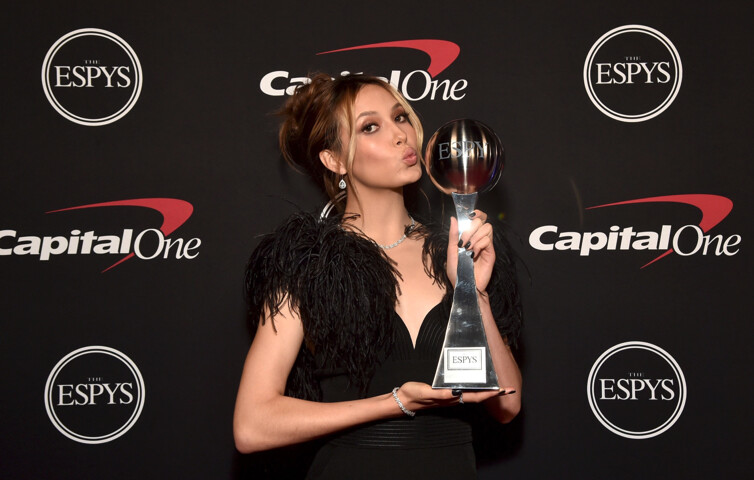
As if seemingly responding to this unspoken question, Gu recently added another achievement to her already lengthy list.
On Sunday July 24, Gu completed the San Francisco Half Marathon—and placed second in her age group. This happened several days after she won two ESPY Awards: Best Breakthrough Athlete and Best Athlete, Women’s Action Sports.
Without formally training for the 13.1-mile race, Gu crossed the finish line in ç, an impressive 7:43 mile pace.
In an Instagram post she wrote, “Landed in San Francisco 36 hrs ago and spontaneously signed up for the San Francisco half marathon. Went in with the relatively simple goal of finishing the race but got a bit competitive around mile 7 & wanted to see what I could make happen… hyped to walk away with an unexpected second place in the 19 and under age group!! Still on a high. What a day.”
Although racing in San Fran was an impromptu decision, Gu has history with the sport. She was a competitive cross country runner for seven years and has expressed admiration and gratitude for her former coach.
In an Instagram post celebrating International Women’s Day in 2021, after thanking her grandma and mother, Gu wrote, “…to my unbelievably strong high school cross country coach (who showed me focus and fearlessness).”
Over the years, Gu has also posted on Instagram about her cross country meets and running workouts.
Running is an integral component of her training routine; she even credits it for helping her get ready for her Olympic debut where she represented China. Gu is American-born – her mother is Chinese, and her father is American – but has competed for China since 2019.
“It’s definitely not easy. But I ran a half-marathon every week over the summer to prepare,” she said in an interview before Beijing. “I feel proud of the work I’ve done to build up my endurance base, so this is what I’ve been preparing for.”
Gu’s former training camp coach, Peter Olenick, told the New York Post, "She is the first one at training and the last to leave. She competes in multiple events; then she goes home to run and train. That is unusual."
Her unconventional tactics worked. Gu snagged Olympic gold medals in big air and halfpipe and a silver medal in slopestyle. She became the youngest freestyle skiing Olympic champion and the first freestyle skier to medal three times in a single Winter game appearance.
All of this came on the heels of winning numerous gold medals at the 2021 World Championships and Winter X Games as well as two gold medals at the 2020 Winter Youth Olympics – in big air and halfpipe.
Despite her success on the slopes, Gu said that running is her second favorite sport.
"I can break my own boundaries through running. Running is a bit different from skiing, because running can be done by everyone. There is no need to fall and stand up again. Everyone can enjoy the joy of sports and nature."
by Runner’s World
Login to leave a comment
Taking Time Away From Running Is Hard. It's Also A Huge Opportunity.
When athletes treat their bodies with the proper respect, there's no telling how much they can handle.
Smashed course records by both male and female winners at the Hardrock 100 two weeks ago show that we still aren't anywhere close to hitting the ceiling on accomplishments in running. But a few missteps, even with the best of intentions, can cause those same hardworking bodies to grind to an early halt.

According to Dr. Megan Roche, professional runner and clinical researcher for the Female Athlete Science and Translational Research program at Stanford University, runners risk depleting their bodies of the energy they need to perform their best, as athletes and function optimally in the everyday moments in between. In the most basic sense, we're not all that different from cars on the street. We need fuel - plenty and often - to keep chugging along. An empty tank translates to a much shorter trip than you could manage on a full one.
The issue is that a lot of popular nutrition recommendations pave the way to low energy availability. "Common things associated with low energy availability are low carbohydrate diets, within-day energy deficits, heavy training without increased intake, lack of fueling on long runs, and disordered eating or eating disorders," Roche says.
You might even think that you are getting enough intake to fuel up for your runs and recover well, based on how often your growling stomach sends you to the fridge during high-mileage weeks. But even the strongest "runger" might not be enough to match your actual energy needs. "Low energy availability can easily happen unintentionally," explains Roche. That's especially true when you factor in the amount of energy that athletes expend on a day to day basis.
Coming Up Short
Relative Energy Deficiency in Sport (RED-S) sets in when the body spends too long in that state of low energy availability, undergoing training stress without enough fuel, rest, or both to balance out the load. It can't continue to push at the same level, so it begins to shut down everything that it doesn't deem absolutely necessary for survival. Like a weary runner shuffling in the last mile, sure you can keep moving, but at a cost to your performance and your overall health.

"RED-S can cause endocrine disruption, suppression of the reproductive hormones, thyroid abnormalities, immune dysfunction, and changes in metabolism," Roche warns. "All of these factors can impact performance over the long-term, making it harder and harder to gain consistency in training."
The only way out is through, which requires minimizing all sources of stress until the body feels safe enough to turn the extra sources back on. It requires building up out of the debt the body is already in, both in terms of energy and rest. And since exercise exerts its own stress, that takes running off the table, too. "Reduced exercise and weight gain can be the most effective recovery tools in restoring the energy balance," Roche agrees. It's a temporary break, but a murky one.
"RED-S recovery is a complicated process with a unique roadmap for each athlete that is trying to heal," adds endurance sports dietitian Kylee Van Horn. "The physical and mental stresses must fully be addressed, which can involve a complex recovery process. This also leads to an unpredictable timeline for recovery, and begs patience and dedication to the process to fully recover."
Even if it's not forever, shelving your shoes can still feel like tearing out half your heart. But in the wake of diet and hustle cultures, more runners than ever are finding themselves facing the tough reality that their bodies can't keep up the pace anymore. Running well in the future means not running right now. "Recovery will be a journey," Roche sympathizes, "but one that will support all the adventures and performances to come."
The Hardest Race
Whether you're resting to repay an energy debt or to manage another setback, not running might hurt more than the toughest training block. After all, you're cut off from an integral piece of who you are.
Wile it's important to round out your personality with other interests besides running, there's no denying that most of us feel a deep connection to our sport - that's why we do it! It's our strongest connection to the world around us and the people exploring it with us. But when the sport that charges your mental and spiritual batteries is also what drains your physical battery, it turns into a painful situation.
So when you're on pause, how do you find the drive to move forward?
Cutting all ties presents one option. Seeing reminders of running at every corner can feel like pressing on a bruise when you're not actively running yourself. It's tempting to turn your back on the whole thing so that you don't have to face what you're missing.
But taking that route writes off the fact that running involves far more than just pumping your legs back and forth. Recovery is often the part of training that takes the most discipline, and is frequently overlooked or swept aside by athletes who think of it as optional. There are improvements to be made and experiences to be had as a runner without taking a single step. Here are three:
Tactic #1: Cultivate a Super Fan Mindset
Staying connected to the running community is critical. Ambitious runners so often get wrapped up in the hustle and bustle of competition when deep in race mode, and lose sight of community because their own goals hog the stage. When those all-consuming goals take a backseat, you finally have the chance to remove your blinders.
"I think there is immense power in shifting from a super-athlete mindset to a super-fan mindset," says David Roche, coach with Some Work All Play. "A health-related reset is a wonderful time to view competition through the lens of love, to try to see others as teammates, even if you've never met them. That loving, fan mindset can give an athlete superpowers when they return, changing a narrative of conditional self-acceptance to one that is uplifting and joyous in all contexts, since there are always teammates to cheer on."
Coach T.J. David with Microcosm Coaching agrees. "Staying engaged with other runners during long periods of time off can be one of the best ways for athletes to work through the challenges of not being able to train and compete in sport, because those community activities often connect with the reasons the athlete got involved in the activity in the first place."
Without the pressures of performance narrowing your scope, there's room for the simple joys of running to shine brighter, like scenery, discovery, and good company. When you're on your feet again, you'll bring those highlights back with you to reframe your perspective for the future.
Tactic #2: Talk It Out
There's a huge emotional component to taking time away from running. To work through the internal conflict, you'll need friends to hold your hand.
"Taking the time and space to talk through the recovery process and address any feelings that might be arising is super important for athletes," David Roche confirms. "Social recovery is one of the most important tools in an athlete's toolbox for coping with the challenges that long-term setbacks present. Just talking about what you're going through, either with a coach or friends who get it can help lower the stigma and reduce stress around the recovery process." Microcosm Coaching actually hosts weekly Community Calls with their athlete team for this very reason, to establish a strong sense of camaraderie so that their runners always know who to turn to, in sickness and in health.
Tactic #3: Remember That Mood Follows Action
It might feel difficult to keep up with those connections at first. Losing running, even temporarily, comes with its own grieving process, and jealousy can rear up quickly.
"A sick or injured runner managing complicated emotions like envy, loss, and vulnerability may feel comfort in the short term by isolating," acknowledges Sarah Strong, LCSW with Fireweed Counseling. "But isolation exacerbates stress. Community, on the other hand, buffers stress, supplies a sense of belonging, and provides emotional and practical support."
You don't have to wait until you feel ready to connect with others, either. You might never feel ready beforehand. "Mood follows action," Strong clarifies, "so injured runners should intentionally create opportunities for social connection before waiting to feel motivated to do so."
Strong offers a roadmap to going from nursing your wounds alone to leaning on your peers. "Brainstorm ways to connect with the running community that don't involve running - from more passive engagement like listening to podcasts or reading books, to more active engagement like volunteering at a race or serving as an aid station for a friend's training run." Then, rank those ideas based on how realistic they seem right now.
If you can see yourself reintroducing your favorite running podcast, but can't begin to imagine cheering on runners from the sidelines of the race you had to drop out of, start with the easiest option and work your way up. You don't have to do it all at once, and you're allowed to take it slow.
"Initially all activities will involve at least some level of distress," Strong cautions. "The pain will begin to ease as the runner experiences the positive benefits of social connection in these new and different ways. Choosing how and when to connect with their community gives injured runners a sense of control during a period of disempowerment."
Through it all, Strong suggests that there's no such thing as too much self-compassion. "Give yourself the time and space to feel and express anything that you are experiencing, without judgment. Put thoughts and feelings into words to make them tangible and manageable. Get them out of our head by physically writing it down or saying it out loud. Repeat as often as necessary."
The Bottom Line?
Running's only an individual sport if we let it be. Use your time off to build a stronger foundation for your running rooted in community. Not only will you find more peace in pressing pause now, but you'll come back stronger with support by your side.
by Trail Runner Magazine
Login to leave a comment
Determined Flora Duffy ready to defend Commonwealth Games title in Birmingham
The world has found itself on a rollercoaster ride since the last edition of the Commonwealth Games, and the same could be said for the great Flora Duffy’s triathlon career.
Champion on Australia’s Gold Coast back in 2018, the Bermudian then suffered an injury that would put her out of contention for both the 2018 and 2019 world titles, before returning with Olympic dreams only to have them put on ice by the pandemic. Duffy then delivered a 2021 for the ages by scooping the Olympic and world titles, and now she hits Birmingham as the world number two, back in sizzling form.
The stage is set for another classic Commonwealth Games battle as triathlon makes its fifth appearance on the schedule across a sprint distance course that starts and ends in Sutton Park either side of a fast, technical through transition 20km bike. The rivalries are fierce and Friday afternoon’s action will be relentless, and don’t miss Sunday’s Mixed Relay and PTVI Para Triathlon action, the official where-to-watch information will be available here shortly.
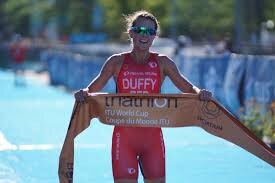
—The first Bermudian ever to win an Olympic gold, Flora Duffy’s place in the history books of her home island is already secured, but being the first triathlete to successfully defend their Commonwealth Games title would certainly warrant an extra chapter. It was another great Emma Snowsill who won in Melbourne back in 2006, and as Duffy looks to surpass the Australian’s record three world titles this year, another Commonwealth crown would further underline her credentials as the greatest the sport has ever seen.
She will have the current number one Georgia Taylor-Brown to contend with, though, as well as a partisan crowd getting behind the home-nation athletes. Taylor-Brown finished second behind Duffy in Tokyo and again at last year’s WTCS Abu Dhabi, but since then, victory in Yokohama and silvers in Leeds and Montreal have put the Brit in pole position in the world title chase, and her current form will make her a hot favourite again in Birmingham.
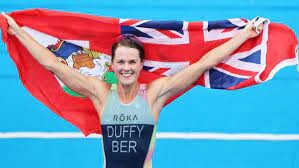
Teammate Sophie Coldwell has also been putting together some exceptional swim-bike-run form, and after hitting back-to-back WTCS podiums in Leeds she will love being back in front of the home crowds and can be explosive over the sprint distance.
Scotland’s Beth Potter hit her first WTCS podium in Hamburg and will relish another shot at a Commonwealth Games medal – four years ago she became the first Scot to compete at the Games in different events, grabbing 12th in triathlon having previously finished fifth in the 10,000m back on home soil at Glasgow 2014, and her star has been in the ascension ever since.
Nobody on the start list has more Commonwealth Games experience Andrea Hansen (formerly Hewitt), who was third back in Melbourne 2006, fourth in Glasgow and 13th on the Gold Coast, and she is joined by fellow New Zealanders Nicole Van der Kaay and Ainsley Thorpe in the quest for medals.
The 2013 World Champion Non Stanford makes her return to the blue carpet for the first time since her top 10 finish at last year’s WTCS Abu Dhabi, representing Wales alongside Olivia Mathias and Issy Morris.
A strong Canadian trio of Dominika Jamnicky, the returning Amelie Kretz and Emy Legault will be looking to make a splash in both the individual and Mixed Relay, while Australia’s Natalie Van Coevorden, Charlotte McShane and Sophie Linn all have the potential to deliver eye-catching performances.
India’s Pragnya Mohan is among the names representing the emerging triathlon nations, as athletes from the likes of Mauritius, Namibia, Kenya and Trinidad and Tobago will also be ready to relish their moment in the spotlight against some of the biggest names in the sport.
by Doug Gray
Login to leave a comment
The Commonwealth Games
The Commonwealth Games are coming to Victoria - bringing an action packed sports program to our regional cities and delivering a long-term legacy for our future. From 17 to 29 March 2026, Geelong, Bendigo, Ballarat, Gippsland and Shepparton will be on the world stage, attracting millions of viewers and creating thousands of jobs. The multi-city model will...
more...New study explains why you should not eat after a hard run
Have you ever envisioned the perfect meal during a long run or race, only to have your appetite vanish when it’s time to refuel? There is evidence to suggest that appetite may be suppressed after a hard workout, due to alterations in hunger hormones and metabolism. In a recent study in Nature, researchers at Stanford University, Baylor College of Medicine in Houston and elsewhere identified a metabolite molecule that’s released into the blood during exercise, and that’s associated with appetite suppression.
The researchers analyzed blood samples from mice, racehorses, and humans after intense exercise—for humans, this was a treadmill running test to exhaustion. They noticed an increase in the circulation of a metabolite called N-lactoyl-phenylalanine (Lac-Phe) in both animals and humans.
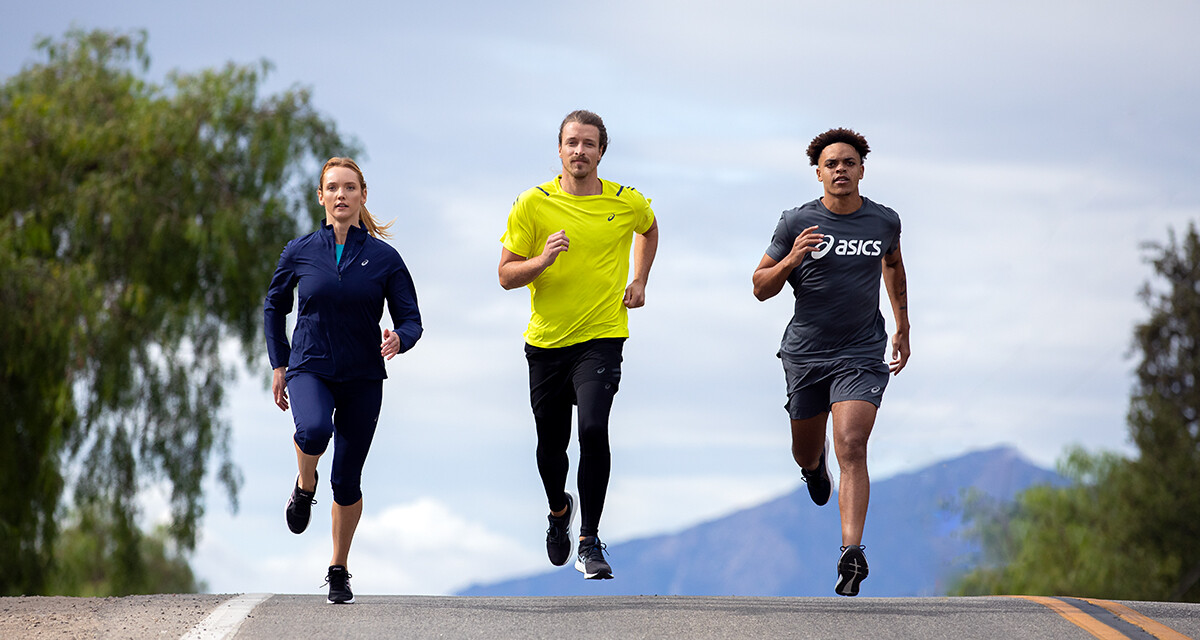
The study also examined the effect of different exercise modalities on circulating Lac-Phe. A second group of volunteers underwent three different exercise trials: a sprint exercise trial on a stationary bike, an endurance exercise trial on a stationary bike, and a resistance exercise trial consisting of leg extensions. All three types of exercise produce a substantial increase in the Lac-Phe metabolite, but the increase was most pronounced with the sprint exercise.
Prior to this study, the Lac-Phe metabolite was not well studied. It is formed through an enzymatic reaction between the amino acid phenylalanine and lactate, an end-product of anaerobic respiration that occurs during intense exercise. Its function, however, was largely unknown.

In this study, when the scientists administered Lac-Phe to obese mice fed a high-fat diet, they consumed less food than usual over the next 12 hours. Over 10 days, their food consumption and weight dropped, and their glucose homeostasis improved. Interestingly, Lac-Phe did not have a similar effect in lean mice eating a low-fat diet.
Does this mean intense exercise will lead to weight loss? Not exactly. The study has identified a potential mechanism by which exercise can contribute to weight loss in obese mice. Further studies will be needed to investigate whether these effects on appetite translate to humans. But it may start to explain why that post-race feast sometimes loses its appeal.
by Michelle Dotzert
Login to leave a comment
Will taking cold showers /baths improve your running performance?
Ice baths have long been a go-to for runners hoping to improve recovery time and ease sore muscles and are a favourite topic of debate within the running community. Cold showers have recently taken over the conversation, as neuroscientists like Andrew Huberman say they may offer benefits both for your athletic ability and everyday life. While Huberman says cold plunges are the most effective way to maximize cold exposure, if you don’t have a frigid river out your back door, a cold shower is a worthwhile alternative. Here’s a few reasons why turning that shower dial all the way over and freezing for a few moments can help you be a better runner.
Cold showers (or plunges) improve resilience
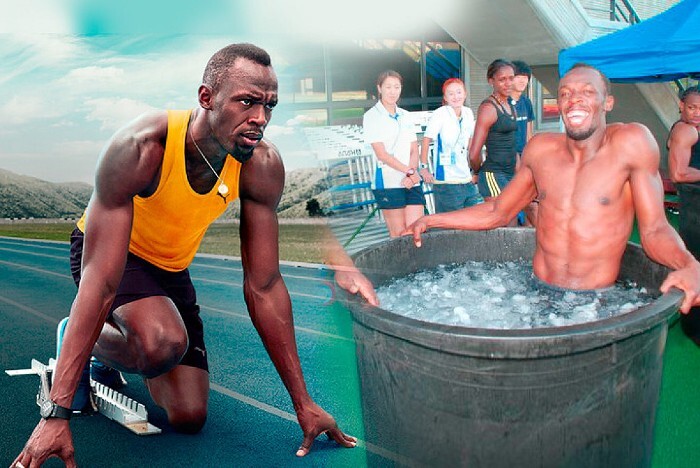
One his podcast Huberman Lab, the neuroscientist and Stanford professor says that getting very cold for only a few minutes per week develops mental grit. By intentionally placing yourself in an uncomfortable environment for a few moments at a time, your brain learns how to regulate your mind and internal state under conditions of stress (when the stress hormones adrenaline and noradrenaline are elevated in your body). When you’re running a hard race or training workout, no matter the distance, mental toughness is often what gets you through. “Deliberate cold exposure is an opportunity to stress our body on purpose, and learn to maintain mental clarity and calm while our body is in a state of stress,” says Huberman.
Mental performance can be improved with deliberate cold exposure

Deliberate cold exposure directly impacts the release of the feel-good neurotransmitter dopamine. The release of dopamine, or the “high” that people get from cold plunges or a regular cold shower practice, is what studies say keeps people coming back. That feeling lasts much longer than the cold shower does. Huberman explains: “any stimulus that delivers more adrenaline, noradrenaline, and dopamine to our system will sharpen our mental acuity and elevate our mood and will do so for a while.” He says the dopamine reward from a cold shower is similar to that from nicotine exposure, and will last much longer.
They can help with recovery if you time them correctly
Huberman says cold therapy can be effective to help with recovery, immediately after exercise. “Shorter durations of cold water exposure after training have been shown to improve outcomes in terms of reducing soreness and improving training efficacy,” he explains. While he doesn’t recommend full-body immersion for at least four hours after training if you have a strength-based goal, cold showers are fine.
By getting really cold for less than 12 minutes a week, you may be able to boost your mental stamina (both in running and when facing hard life situations), increase happy brain chemicals, and lessen recovery time. Huberman suggests timing cold showers as early in the day as possible to capitalize on the wakefulness and alertness that results, and to avoid having them very late in the evening and potentially disrupting sleep.
by Keeley Milne
Login to leave a comment
Western States 100 Time Predictions Based On Historical Data
The Western States 100 is the Super Bowl of US trail running, just with fewer cryptocurrency commercials. Every year, the race gathers some of the best athletes in the world to test themselves on the world-famous course. The competition, along with comprehensive data gathering by the race organizers, provides a massive statistical opportunity.
Marshall Burke, associate professor of Earth System Science at Stanford University, seized that opportunity with some wonderfully cool data analyses heading into the 2022 race. The research question he sought to answer: how are race times progressing as the sport grows, and how are those times affected by temperature changes?
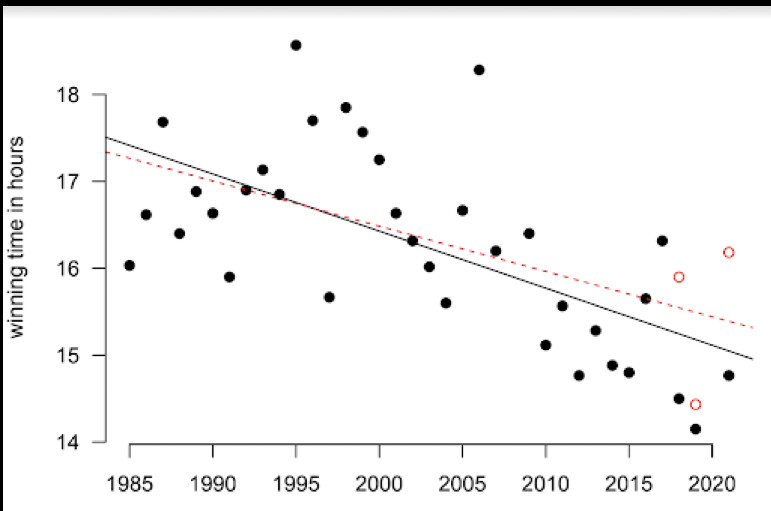
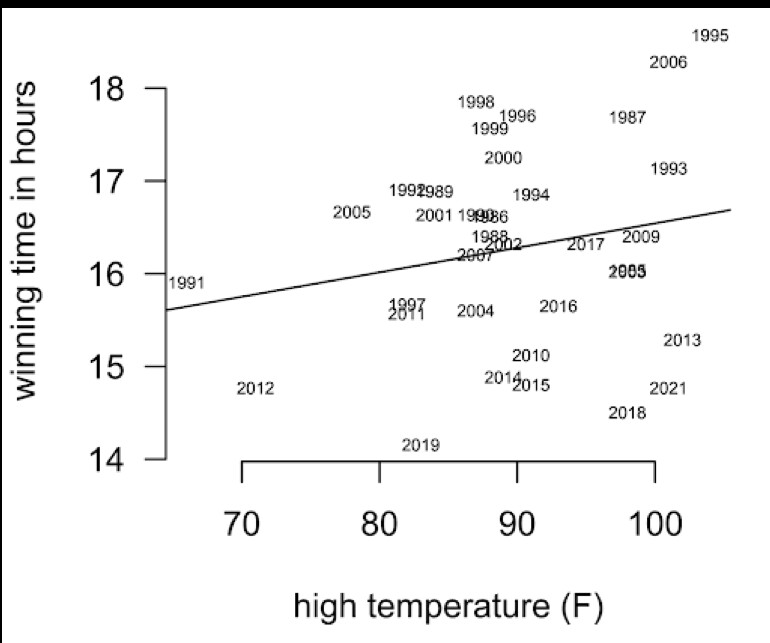
Marshall is a wonderful athlete himself, with an April 2022 Fastest Known Time on the Buffalo River Trail in Arkansas, so he's used to moving fast. In his spare time, between research and Zoom calls, he compiled the data on finishing times and temperatures, controlling for years when there was snow on the course or when the course was altered.
"I may never run Western States," Marshall says. "But I can run statistics on it!"
He's doing world-changing work on climate change at Stanford University, and that made his quest have both a personal and academic interest. "This combines my research focus on the impacts of climate with my hobby of running slowly through the mountains," he says. Since this was a quick analysis for fun (and to help me with coaching; helps to have really, really smart friends), Marshall wants to be clear that the numbers could change. And I want to be clear that any errors are the fault of the field of Statistics for being the worst.
Let's all run fast through some of the fascinating data he gathered!Finding #1: Times of top finishers have progressed rapidly.
Since 2000, a linear model of top times for men and women shows bonkers improvement. Bonkers is a scientific term; you'd know it if you, like me, took an Intro To Stats class in 2004. The male winner is about 2 hours faster on average, with the same general improvement for the average of places 2 through 5. The female winners are around 1 hour faster, with places 2 through 5 improving more than 2 hours.When not accounting for temperature, times would be expected to drop considerably each year-around 4 minutes per year for men since the 1980s, and about 4:45 per year for women. Interestingly, the women's top 5 times are coming down faster than the winning time, showing a tighter race at the front.
I asked Marshall to run the men's times with Jim Walmsley being removed. Want to see a cool chart of just how much of an outlier he is? Taking out Jim's winning times moved the linear regression substantially, with the new red line predicting substantially slower times overall. And if he didn't get lost in 2016, the effect would be even more pronounced! You know you're a good runner when you mess up the statistics.
Finding #2: For all finishers, men are improving gradually, while women are improving rapidly.
Since 2000, the average women's finish time has improved by 5 minutes and 15 seconds per year! Meanwhile, the average finisher independent of gender has only improved around 2 minutes per year. So women are driving the sport forward in an emphatic way! Bosses!
Finding #3: Heat has a massive performance impact.
Let's start with a simple scatterplot of heat versus winning time.There is clearly a ton of variation in the scatter. Heat is not destiny. But there is some clear relationship, so maybe it's destiny's child. If you go too hard on a hot day, the body has to pay the bills bills bills later.
Marshall ran multiple regression analyses to combine the effects of overall time improvements with heat increases to give us a more sophisticated analysis, again also controlling for whether there was snow on the course. He is so damn sophisticated! Using times since 2000, the general rule is that for every 1 degree F increase in temperature in Auburn, California on race day, there is a 2:48 increase in winning time for men and a 2:52 increase for women. Removing Jim's times (Mr. Mess-Up-Your-Stats), there is a 3:26 increase for men for every degree increase.
For the average finisher using the same regression analysis, 1 degree F increases correspond with 2:34 increases in finishing times. DNFs go up about 0.5% for every 1 degree F increase as well. The ratio of times for men and women is not significantly impacted by temperature, so even though the hot year in 2021 saw women absolutely rock the list of top finishers, that may not be explained by heat in the way that everyone assumed.Finding #4: Predictions for 2022
The forecast from Weather Underground is currently 97 degrees F on race day in Auburn, relative to an average of 89. Combining the heat data with the overall improvement in times as the sport progresses, here are the predictions from Marshall's model, again based on data from the last 20 years.
For the male winner, it depends heavily on whether we remove Jim from the data. Assuming Jim is a true outlier, we can expect a winning time around 15 hours. For women, it's 17.5 hours. For the average racer, times should be around a half hour slower than normal, but that is affected by a higher DNF rate, so I'd suggest athletes build in much more buffer.
The trend in the 10th place times is most instructive to me, as a coach that is trying to help support athletes getting an invitation to next year's race. Those 10th place times have come down by massive margins over time, 9:22 for men and 12:50 for women. But the times are also more affected by the heat relative to the top 5 finishers. Put it all together, and the model predicts that 20 hours will place in the top-10 for women, and around 17 hours for men.
My personal prediction will be for fast winning times, but a greater spread after that, with the 10th place man and woman being around 30 minutes slower than predicted. The faster times as the sport progresses will not follow a linear model eventually, and my guess is that we are starting to approach an asymptote. To paraphrase Mark Twain, there are lies, damn lies, Statistics, and a running coach pulling wild guesses out of his butt.
Three Big Conclusions
Respect the heat, but don't respect it too much.
It's good to have brilliant friends like Marshall when you're looking for a possible coaching advantage.
Finally, Jim Walmsley breaks statistics.
by trail Runner Magazine
Login to leave a comment
Whittaker repeats as mile champion in Seattle by edging Engelhardt and elevates to No. 7 all-time outdoor performer with 4:36.23 effort in first girls high school race with seven athletes running under 4:40
Julia Flynn called it.
“I knew it. I knew today was going to be a crazy race,” said Flynn, a recent graduate of Traverse City Central High in Michigan.
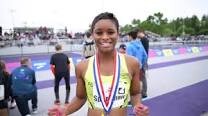
That it was. On a cloudy Wednesday afternoon at the University of Washington’s Husky Stadium in Seattle, Flynn was part of the fastest Brooks PR Invitational mile in meet history.
Defending champion Juliette Whittaker of Mount de Sales in Maryland led the charge with a final surge down the straightaway to win in 4 minutes, 36.23 seconds, lowering her own meet record of 4:38.65 from last year.
Six girls quickly followed, all crossing the finish line under 4:40 to make it the deepest girls mile race in U.S. prep history. The boys mile also didn’t disappoint to cap the meet by having junior Simeon Birnbaum of Rapid City Stevens High in South Dakota eclipse the 4-minute barrier and five athletes run sub-4:02 for the first time in a single high school race.
“I predicted Juliette was going to win, but I was like, ‘You know what? Regardless of the winner, we’re all going to get really big PRs,’” Flynn said. “That’s why it’s Brooks PR, it lives up to the name.”
With the girls and boys miles scheduled annually as the last races of the meet, fans at Husky Stadium lined the outskirts of the track down the straightaway, creating an intimate and electric environment for the 12 female runners all capable of winning the event.
“I knew it was going to be a fast race and I knew it was going to be competitive,” Whittaker said. “Just the fact that we came around with a lap to go and all of us were still in the race, was insane, it was really just a kick to the finish.”
With a slight separation from the pack, Whittaker and freshman Sadie Engelhardt of Ventura High in California – who set an age 15 world mile record April 9 by running 4:35.16 at the Arcadia Invitational – came sprinting down the last 100 meters.
Similar to how the New Balance Indoor National mile championship race played out March 13 between the two athletes, Whittaker had a little more left in her to pull ahead of Engelhardt for the victory. Whittaker prevailed by a 4:37.23 to 4:37.40 margin at The Armory in New York.
Engelhardt finished runner-up Wednesday in 4:36.50, while Flynn ran 4:37.73 to set a Michigan state record by eclipsing the 2013 standard of 4:40.48 produced by Hannah Meier of Grosse Pointe South.
Riley Stewart of Cherry Creek High was fourth in 4:38.21, lowering her own Colorado state record of 4:40.66 from last year, when she placed second behind Whittaker.
“I’m feeling amazing,” Stewart said. “I’ve been 4:40 three times now, so to finally get it (under 4:40) and to run with all these amazing girls, I have to say that was probably one of the best miles we’ve ever seen come through here, so just to be part of it is just amazing.”
Samantha McDonnell of Newbury Park High in California placed fifth in 4:38.44, Isabel Conde de Frankenberg of Cedar Park High was sixth in a Texas state record 4:38.55, and Mia Cochran from Moon Area in Pennsylvania secured seventh in 4:39.23. Conde de Frankenberg eclipsed the 2009 standard of 4:40.24 established by Chelsey Sveinsson of Greenhill High.
Every performance achieved from Engelhardt to Cochran was the fastest all-time mark by place in any high school girls mile competition.
Just missing going under 4:40 was Taylor Rohatinsky of Lone Peak High in Utah, clocking 4:41.83 to also produce the fastest eighth-place performance in any outdoor prep mile race.
Whittaker’s winning effort made her the No. 7 outdoor competitor in U.S. prep history, with three of the marks achieved this year, the other two coming from Dalia Frias of Mira Costa High in California (4:35.06) – who also ran the national high school outdoor 2-mile record 9:50.70 to open Wednesday’s meet – and Engelhardt’s victory at Arcadia.
Whittaker, along with Flynn, Stewart, 10th-place finisher Ava Parekh (4:52.09) of Latin School in Chicago and Roisin Willis from Stevens Point in Wisconsin – second place Wednesday in the 400 in 53.23 – are all part of Stanford’s 2022 recruiting class.
Despite having an unusual high school career due to the pandemic, Whittaker said the surge of quicker times and a more competitive environment may be due to the circumstances the pandemic created with more time for training.
“I feel like ever since COVID, honestly we have just surpassed any goals that we used to always set,” Whittaker said. “(Running) 4:40 used to be a barrier that like many people wanted to break, if so, maybe one, but the fact that seven girls (did) in the same race. I’m excited for years to come to keep watching. Sadie, obviously only being a freshman, and like other girls, I’m excited to see what times they are going to run.”
Here is the list of high school girls who have broken 4:40 before this race:
High School Girls Who Have Run Sub-4:40 Miles
Mary Cain — 4:28.25i (2013)
Alexa Efraimson — 4:32.15i (2014)
Katelyn Tuohy — 4:33.87 (2018)
Dalia Frias — 4:35.06 (2022)
Sadie Engelhardt — 4:35.16 (2022)
Polly Plumer — 4:35.24 (1982)
Katie Rainsberger — 4:36.61i (2016)
Kim Gallagher — 4:36.94 (1982)
Sarah Bowman — 4:36.95 (2005)
Arianna Lambie — 4:37.23 (2003)
Juliette Whittaker — 4:37.23i (2022)
Marlee Starliper — 4:37.76i (2020)
Christina Aragon —4:37.91 (2015)
Addy Wiley — 4:38.14 (2021)
Victoria Starcher — 4:38.19 (2020)
Caitlin Collier — 4:38.48 (2018)
Debbie Heald — 4:38.5i (1972)
Ryen Frazier — 4:38.59 (2015)
Taryn Parks — 4:39.05i (2019)
Wesley Frazier — 4:39.17 (2013)
Sarah Feeny — 4:39.23 (2014)
Danielle Toro — 4:39.25 (2007)
Mia Barnett — 4:39.41 (2021)
Katelynne Hart — 4:39.57 (2020)
Cami Chapus — 4:39.64 (2012)
Brie Felnagle — 4:39.71 (2005)
Dani Jones — 4:39.88 (2015)
Angel Piccirillo — 4:39.94 (2012)
Allison Cash — 4:39.98 (2013)
by Mary Albl of DyeStat
Login to leave a comment
Joggers naturally pace themselves to conserve energy even on short runs
Data from fitness trackers and treadmill tests challenge ideas about what drives speed
For many recreational runners, taking a jog is a fun way to stay fit and burn calories. But it turns out an individual has a tendency to settle into the same, comfortable pace on short and long runs — and that pace is the one that minimizes their body’s energy use over a given distance.
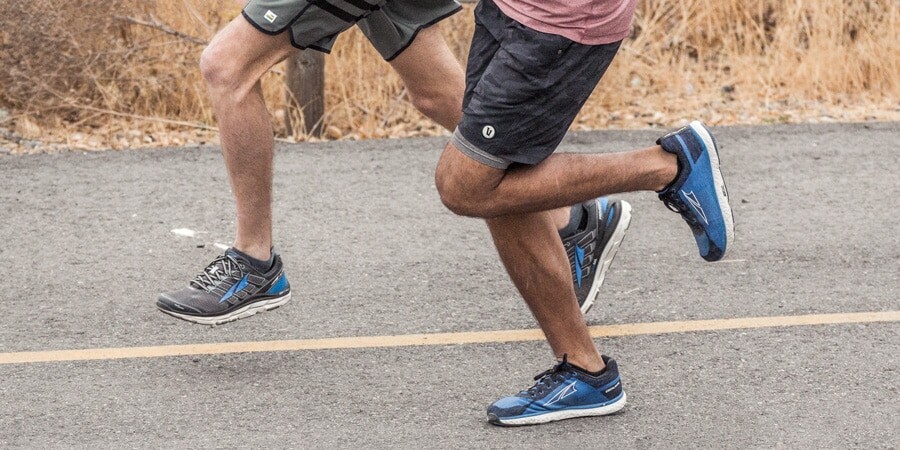
“I was really surprised,” says Jessica Selinger, a biomechanist at Queen’s University in Kingston, Canada. “Intuitively, I would have thought people run faster at shorter distances and slow their pace at longer distances.”
Selinger and colleagues combined data from more than 4,600 runners, who went on 37,201 runs while wearing a fitness device called the Lumo Run, with lab-based physiology data. The analysis, described April 28 in Current Biology, also shows that it takes more energy for someone to run a given distance if they run faster or slower than their optimum speed.
“There is a speed that for you is going to feel the best,” Selinger says. “That speed is the one where you’re actually burning fewer calories.”
The runners ranged in age from 16 to 83, and had body mass indices spanning from 14.3 to 45.4. But no matter participants’ age, weight or sex — or whether they ran only a narrow range of distances or runs of varying lengths — the same pattern showed up in the data repeatedly.
Researchers have thought that running was performance-driven, says Melissa Thompson, a biomechanist at Fort Lewis College in Durango, Colo., who was not involved in the new study. This new research, she says, is “talking about preference, not performance.”
Most related research, Selinger says, has been done in university laboratories, with study subjects who are generally younger and healthier than the general population. By using wearable devices, the researchers could track many more runs, across more real-life conditions than is possible in a lab. That allowed the scientists to look at a “much broader cross section of humanity,” she says. Treadmill tests measuring energy use at different paces with people representative of those included in the fitness tracker data were used to determine optimum energy-efficient speeds.
Because the study includes a wide range of conditions and doesn’t control for things like fasting before running, it’s messier than data gathered in labs. Still, the sheer volume of real-world runs recorded by the wearable devices supports a convincing general rule about how humans run, says Rodger Kram, a physiologist at the University of Colorado Boulder not involved with the study. “I think the rule’s right.”
The results don’t apply to very long runs when fatigue starts to set in, or to race performance by elite athletes or others consciously training for speed. And a runner’s optimum pace can change over time, with training or age for instance.
There are quick tricks for those who want to speed up and go for a little more calorie burn to temporarily trump their body’s natural inclinations: Listen to upbeat music or jog alongside someone with a faster pace, Selinger says. “But it seems like your preference is actually to sink back into that optimum.”
The results match observations of optimum pacing from animals like horses and wildebeests, and also correspond to the way humans tend to walk at a speed that minimizes their individual energy use (SN: 9/10/15).
It does make sense that humans would be adapted to run at an optimum speed for minimizing energy use, says coauthor Scott Delp, a biomechanist at Stanford University. Imagine being an early human ancestor going out to hunt difficult prey. “It might be days before I get my next food,” he says. “So I want to spend the least energy en route to getting that food.”
Login to leave a comment
How do most runners avoid getting injured
Cooler weather means people will be headed outdoors for outside activities. Runners especially love this time of year. The wide variety of upcoming races in the Valley give runners extra motivation to step up their game.
Increased training and activity also ups the potential for race-related injuries.
Here are some common problems runners experience and some measures to help prevent them.
Runner’s knee
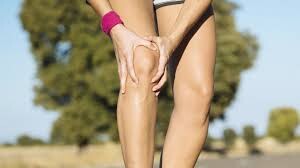
According to a survey done by Runner’s World, about 40 percent of all running injuries involve the knee.The most common knee injury is patellofemoral pain syndrome, also known as “runner’s knee.” It occurs when the cartilage beneath the kneecap becomes irritated or inflamed.
You can avoid runner’s knee by doing a few things:
Keep thigh muscles strong and limber with regular exercise.
Avoid running on hard surfaces, such as concrete.
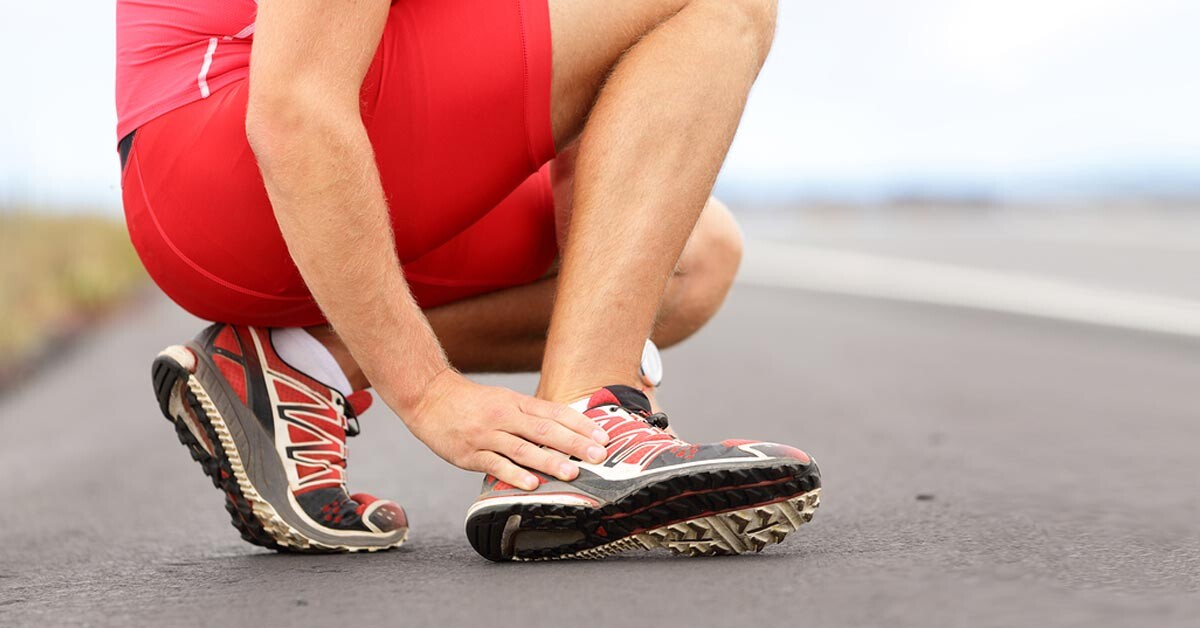
Buy high-quality running shoes and discard them when they begin to break down or wear unevenly.
A certain amount of soreness and stiffness is to be expected with increased training. Signs and symptoms of something more serious may include:
Popping or crunching noises
Inability to fully straighten the knee
Inability to bear weight on your knee
Feel as if your knee “gives out”
Knee feels “locked” and cannot be straightened or flexed
Minor knee pain can be treated with physical therapy and anti-inflammatory medicine. If pain persists or worsens, additional treatments such as corticosteroid injection, knee viscosupplementation, or stem cell injection may be needed. Novocur also offers radiofrequency ablation, which usually provides pain relief for 6-12months.
2.- Achilles tendonitis
The Achilles tendon stretches between the heel and calf muscles. When overstressed, the tendon becomes irritated and painful. This injury must be rested and rehabbed to prevent it from becoming more severe.
Icing regularly and taking anti-inflammatory painkillers such as ibuprofen or naproxen are the typical treatments.
This injury usually occurs when someone quickly increases a workout regimen. Prevention involves a more gradual pace of increase, along with exercises to strengthen calf muscles and stretching before and after workouts.
Hamstring problems
These painful muscle injuries usually occur after a sudden acceleration during running. They range from minor strains to major tears and treatment can be as simple as a few days’ rest or as involved as several months of intensive physical therapy.
The best way to prevent hamstring pulls is through strengthening and flexibility exercises. A period of warmup and stretching before the intended athletic activity is best to maximize flexibility.
IT band issues
The iliotibial (IT) band stretches along the outside of the thigh from the hip to the knee.
“When you run, your knee flexes and extends, which causes the IT band to rub on the side of the femur,” explains Runner’s World.
This spot is susceptible to irritation during downhill running or if you significantly increase your workout.
A Stanford research study found weak hip and butt muscles are primary contributors to IT band problems. As a result, the recommended preventive behavior is to strengthen those muscles with appropriate exercise.
Plantar fasciitis
This is a fancy name for painful heels. Symptoms usually start with mild pain on the heel bone that feels like a bruise. If not treated early, it can eventually result in knee, hip and back pain because you will change the way you walk to relieve pressure on the heel.
A combination of stretching and applying ice to the area is recommended for plantar fasciitis. Also, keeping weight off the affected foot is helpful.
There are many stretching exercises that can help relieve or prevent this injury. The objective is to strengthen the foot and calves and stretch the Achilles tendon.
Unfortunately, no matter how careful you are and in spite of all your preparation, injuries happen. Sometimes you can overcome them with rest and home treatments. But if symptoms persist or the pain increases, seek treatment from a pain specialist familiar with running injuries. It can help you get back on track.
by Dr. Alex Bigham
Login to leave a comment
Are the Health Benefits of Apple Cider Vinegar Fact or Fiction?
We tapped a registered dietitian and poured over the latest research to find out.
These are the days when one would go online seeking nutrition remedies for every imaginable condition and find every imaginable solution. But long before Google delivered instant suggestions on what to eat for better health and performance, apple cider vinegar (ACV) has been one of the leading word-of-mouth health remedies.
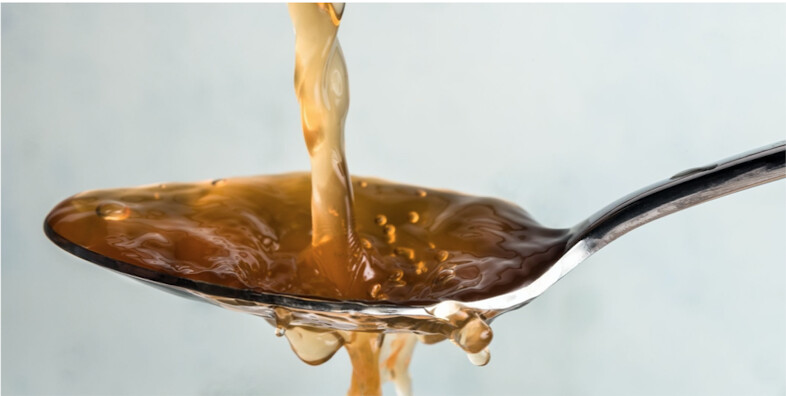
The promises are enthusiastic: better blood sugar control, improved heart and immune health, reduced cancer risk, and weight loss (if that’s your goal) to name a few.
So, you’re probably wondering what science has to say. Can ACV really go the distance in helping us stay healthy for longer? Here’s the truth on whether sour has the power.
What exactly is apple cider vinegar?
While vinegar can be gleaned from various starting materials including grapes and rice, apple cider vinegar is produced by pulverizing apples into a slurry of juice and pulp that is then allowed to ferment in the presence of bacteria and yeast. This converts the fruit sugar largely into acetic acid (among other types) and produces various flavor compounds, which lends the vinegar its strong sour smell and sharp flavor.
What are the health benefits of apple cider vinegar?
Though singled out as a remedy for a laundry list of ailments, some purported health perks may hold true.
Foremost, the high levels of acetic acid in ACV may help with blood sugar control and improve certain blood lipids, according to a 2021 systematic review and meta-analysis in the Journal of the Academy of Nutrition and Dietetics. Acetic acid was also found to lower concentrations of blood triglycerides among those who were overweight or obese and in those with type 2 diabetes, which may promote better heart health. Additionally, another review study in the journal BMC Complementary Medicine and Therapies found enough evidence to suggest that apple cider vinegar used for longer than two months can improve blood sugar management and blood cholesterol levels.
An investigation in the European Journal of Clinical Nutrition found that when people consumed white bread with vinegar, there was a lower blood glucose and insulin response, as well as improved ratings of satiety, than when they consumed the same amount of bread without the vinegar. The higher the acetic acid content of the vinegar the greater the impact.
Though we often think of improved blood sugar control as something that’s only important for people with diabetes, Molly Kimball, R.D., registered dietitian with Ochsner Health in New Orleans, tells Runner’s World it’s beneficial for everyone, including runners. “Maintaining steady blood sugar levels—meaning avoiding the peaks and valleys—as much as possible is key for optimizing energy, mood, and fending off cravings, to name a few.”
The slower release of blood sugar into the bloodstream with apple cider vinegar use and the subsequent rise in hunger-reducing hormones could result in feelings of fullness and, therefore, potential weight loss over time.
ACV can improve blood sugar numbers, which Kimball says are most likely to occur when it’s paired with carb-rich foods, because it reduces the activity of an enzyme that breaks down starch and increases the uptake of glucose into tissues—including skeletal muscle—by improving insulin sensitivity and blood flow.
But keep in mind that we don’t know what impact is on people without any impaired insulin sensitivity or blood sugar control, including healthy runners. And, noticeable blood sugar improvement may only occur when apple cider vinegar is added to meals containing high glycemic index foods and drinks like white bread, juice, potatoes, and white pasta.
Kimball adds that it’s also unclear how apple cider vinegar’s metabolic effects vary from any other kinds of vinegar. Though most of the research has been conducted on apple cider vinegar, the blood sugar benefits may not differ a great deal among different varieties of vinegar like balsamic and white wine, since they also contain acetic acid.
Since apple cider vinegar is a fermented food product, Kimball says it could, in theory, supply probiotics to improve our microbiome, which is the population of microbes in our digestive tract that appear to play a big role in overall health. After analyzing blood and stool samples of healthy adult participants, Stanford School of Medicine researchers discovered that a 10-week diet high in fermented foods (6 servings daily) resulted in measurable improvements in microbiome diversity and decreases in markers of inflammation.
“However, because we’re typically consuming such small volumes, it doesn’t seem likely that apple cider vinegar would be a significant source of probiotics in our diet compared to other fermented foods,” says Kimball. “Instead, I would look at it as every bit helps.” To date, there are no studies specifically addressing apple cider vinegar’s impact on the microbiome.
It’s likely that apple cider vinegar contains small amounts of the various phytochemicals found in the apples it is produced from. These phytochemicals could give the vinegar some antioxidant activity to help reduce cell damage in the body that may offer protection from various conditions like cognitive decline.
“But, the amount of antioxidants you’d get from typical serving sizes of apple cider vinegar is likely much less than what you would get from whole apples and other fruits,” Kimball says. “I would not count on it to give us a significant impact in terms of antioxidant benefit.”
Here’s how to add apple cider vinegar to your diet
The easiest way to incorporate ACV into your diet is to use it in salad dressings. You can also toss it into cooked grains and use it in sauces and homemade condiments for some vinegary tang. Pickled vegetables can also be another source of acetic acid in your diet.
Some people will dilute the ACV in water and drink it before meals, which could improve post-meal blood sugar numbers. “I typically recommend diluting 1 ounce [of ACV] in about 4 ounces of water, herbal tea, or other types of no-sugar beverages,” Kimball says. However, she cautions that it’s essential to adequately dilute the vinegar—due to its acidic nature, it can damage the gastrointestinal tract and tooth enamel.
Ideally, you want to use an unfiltered apple cider vinegar that contains a cobweb-like floating substance referred to as the “mother” and has an amber color with a cloudy appearance. Bragg is one of the most popular brand options. Most commercial apple cider vinegar takes shortcuts from the longer fermentation process so it won’t have the same flavor nuances or probiotics.
You can also find apple cider vinegar in capsule and gummy form, but it’s not known if these are as helpful and there can be quality control issues.
The bottom line is...
Though the research holds some promise, especially related to blood sugar management when eating your higher carb meals, the quality of evidence surrounding the benefits of apple cider vinegar is not yet there and we don’t yet know if it is any better for you than other vinegar varieties. At the very least, it can make vegetables taste more exciting so you’ll want to eat more of them, which is certainly something to celebrate.
by Runner’s World
Login to leave a comment
Bredan Gregg and Sara Vaughn won the Comeback California International Marathon
Davis native Brendan Gregg won the 2021 California International Marathon alongside Sarah Vaughn, a debut marathoner.
A graduate of Davis High School and Stanford University, Gregg finished the race with a personal best time of 2 hours, 11 minutes, and 21 seconds.
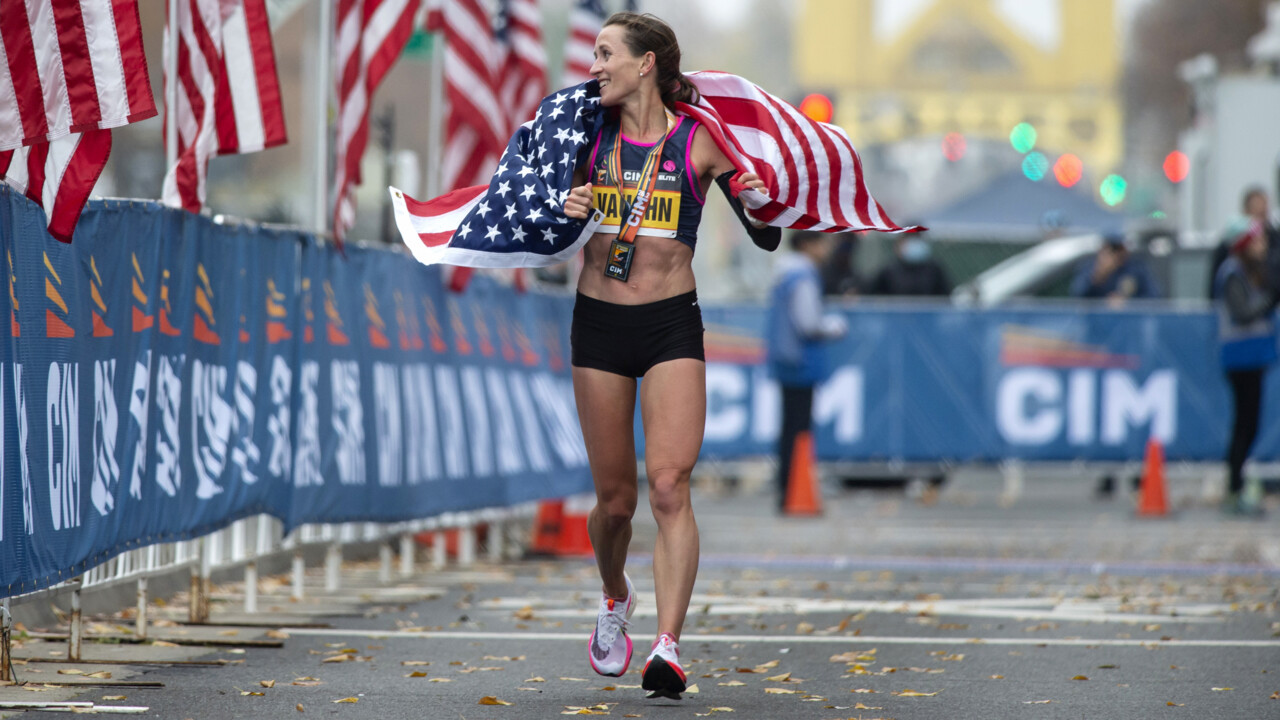
“I love coming back here,” Gregg said in a statement. “I’ve done other marathons, but I always want to come back and do it at home at the people’s marathon.”
Gregg's pace was about 5:01 minutes per mile, according to the CIM event results.
Sara Vaughn, of Boulder, Colorado, won with a time of two hours, 26 minutes and 53 seconds.

Vaughn attempted her first marathon just 12 weeks ago, according to a press release.
“Sacramento has always been wonderful to me in my running career,” Vaughn said in a statement. “I made my first Team USA here at Sac State, and last time I was here, I won a race. I had to keep the streak going.”
Gregg and Vaughn, will both take home $10,000 in prize money, plus any performance bonuses.
The competition was cancelled in 2020 due to the pandemic. 9,000 people were registered for the marathon this year.
by Lauren Walike
Login to leave a comment
California International Marathon
The California International Marathon (CIM) is a marathon organized by runners, for runners! CIM was founded in 1983 by the Sacramento Running Association (SRA), a 501(c)(3) non-profit organization. The SRA Board of Directors is comprised of runners with a combined total of 150+ years of service to the CIM. The same route SRA management created for the 1983 inaugural CIM...
more...Ben True had never run further than 24 miles before finishing seventh at New York City Marathon
Ben True had never run a distance of 26.2 miles before. He didn’t do too badly for a novice.
True finished seventh in the New York City Marathon with a time of 2:12:53.
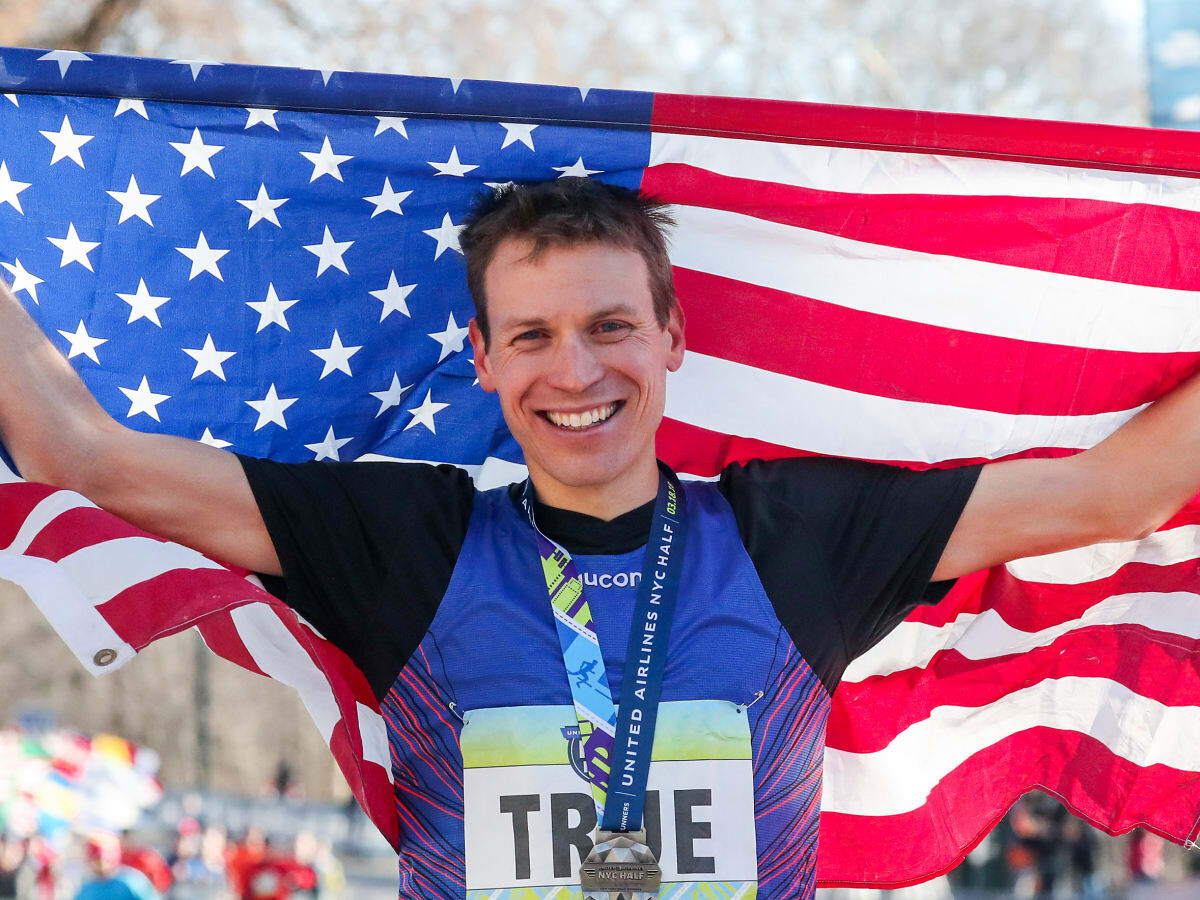
Most people might think that coming in seventh in one of the biggest marathons in the world — 25,010 runners finished the race this year, and in the past it’s seen twice that — is a jaw-dropping feat, especially for someone who says the longest distance he’d run before Nov. 7 is “probably” 24 miles.
Yet, when asked if he’d surprised himself, True said he isn’t satisfied with his performance.
“Actually, I was slightly disappointed,” True reflected five days later. He was also the No. 2-ranked American to finish.
“I think I took things a little too conservatively,” he judged, explaining that he held himself back a mile to a mile and a half too long before accelerating to run the last 6 miles to the finish. “I didn’t go fast enough.”
The Upper Valley is home to notable Olympians and elite athletes — Norwich is known for being a “cradle” for Olympic athletes — and True, like many of them, initially came to the area to study at Dartmouth College, where he graduated with a major in art history in 2009. He was the first student in the Ivy League school’s history to break the four-minute mile and earned All-American honors in cross country running, outdoor track and field and Nordic skiing.
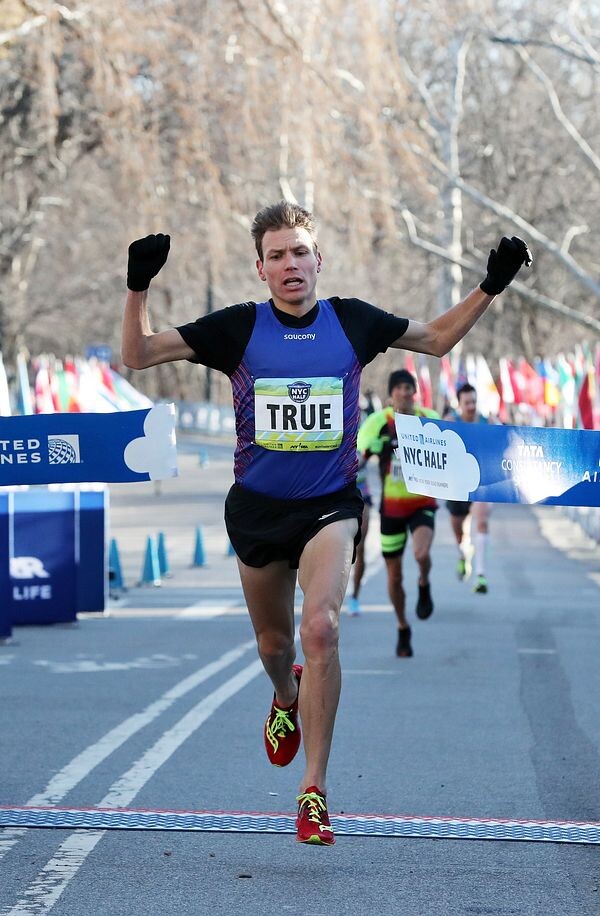
Growing up in North Yarmouth, Maine, True was known since his teens at Greely High School as a champion runner and skier in the state. He chose Dartmouth over Stanford, he said, because “the area and campus were much more to my liking, and I wanted to continue both running and skiing.”
Ben True is by his own acknowledgement an athlete who has traditionally trained alone and chosen to live apart from the running meccas of Colorado or Oregon.
For a brief spell after college, True tried living in Eugene, Ore., where he joined the Oregon Track Club, but it didn’t suit him.
“I’m a pretty big homebody. I like the Northeast more,” he said.
Until he made his marathon debut, True’s running career has been focused on competing and racking up national and global wins in 5,000-meter and 10,000-meter track races and 5K and 10K road races. But shorter-distance events exact a toll on an athlete’s body that becomes more problematic with age.
“Training for the 5K was wearing on my body a lot and tiring me out, really stressing my nervous system, all that speed work,” the 35-year-old said. “So it seemed like an appropriate time to take on the challenge of marathon running, which frequently draws people in their 30s and 40s as it is less impactful on the body.
“It was the right time to move up to the longer distance,” True assessed.
True said he chose New York for his first marathon rather than one of the other big destinations such as Boston, London or Tokyo because he had run a half-marathon there in 2019 — placing 10th at 1:02:56 — and because New York Road Runners, the organization that produces the NYC Marathon, in past years had invited True to ride in the lead vehicle at the head of the race.
“I’ve always had a lot of success in New York,” True said. “It just seemed the right place to run my first marathon.”
Despite what has been described as his “lone wolf” training regimen — his former sponsor Saucony even made it the theme of a YouTube campaign — True recruited two other running partners: Dan Curts, an Iowa State standout, and Fred Huxham, an All-American from University of Washington, who both relocated to Norwich, where they helped True to train for the marathon.
“I used to do the majority of my training starting from my house,” True said, explaining his normal routine, which began with a 12-mile run at 10 a.m. and ended with a 5-mile run at 6 p.m. But since Curts, a year ago, and Huxham, six months ago, became part of his running pod, “we tend to meet someplace, like West Windsor, Orford, Enfield, South Strafford, running mostly on dirt roads.”
In addition to the average 120 miles per week that True would run in training for the marathon, the trio have formed a running club — Northwoods Athletics— with an eye to supporting professional runners and a weekly open invitation running group, Tour de Woodstock, for recreational runs on the weekend.
The Tour de Woodstock, which began last fall with 10 people and now has a core posse of about 15 and some weekends attracts double that, meets at East End Park on Pleasant Street in Woodstock, NH and is meant to include runners of all levels and abilities who can break off into smaller groups if they want to.
They gather at an eating spot for waffles afterward.
The mission, according to True, is to inspire people to run by providing a social element that will motivate them to enjoy the sport more.
“We had our first bonfire potluck lunch at a member’s house” two weeks ago, he said.
Northwoods Athletics is still in a formative stage — the website only recently went up — but True said one of its purposes will be to find a new economic model to train and support professional runners.
At present, professional runners are largely sponsored by athletic shoe companies, whose terms often preclude athletes and athletic clubs from accepting other sponsors. That makes athletes rely upon a single sponsor, which can have devastating impact when a contract is not renewed.
True said Northwoods Athletics wants to develop new avenues to pay runners, perhaps through contracting with employers to manage a running program for the company’s employees, similar to a company-sponsored health club membership, which would also in turn identify the company as a sponsor of the athlete.
True also hopes to see Northwoods Athletics as a vehicle to make the Upper Valley a hub for runners, at least during the nonwinter seasons. (True himself has spent winters training in Charlottesville, Va., and Boulder, Colo.)
“One of the reasons I’ve done my training alone is that I’m here, but there are not many people here,” he said.
“We’re hoping to add a few more guys to get a critical mass and a women’s team, too,” True said.
As for when True plans to run his next marathon — he doesn’t know. He is still undecided whether he will train for another track season, and if he does, then it would conflict with the time and technique required to train for a long-distance running.
In either case, True said he does not need to make that decision until January.
“So I have some time,” he said.
by John Lippman
Login to leave a comment
TCS New York City Marathon
The first New York City Marathon, organized in 1970 by Fred Lebow and Vince Chiappetta, was held entirely in Central Park. Of 127 entrants, only 55 men finished; the sole female entrant dropped out due to illness. Winners were given inexpensive wristwatches and recycled baseball and bowling trophies. The entry fee was $1 and the total event budget...
more...Chelsea Clinton on Her First NYC Marathon: “The Day Was Incredible!”
After 20 years as a dedicated runner, she took on her first marathon through the five boroughs on November 7.
For years, the New York City Marathon has been a popular race for high-profile runners looking to take on the challenge of 26.2 miles. But one such notable athlete kept her presence in the 2021 race under wraps until she crossed the finish line.
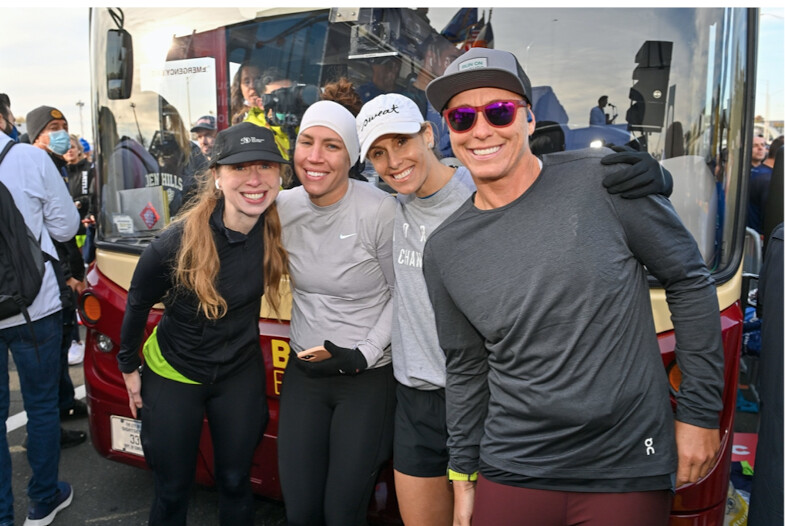
Chelsea Clinton, 41—who is vice chair of the Clinton Foundation, teaches at Columbia University’s Mailman School of Public Health, and has authored several books for young readers—finished in 3:59:09. She averaged 9:08 pace (with half marathon splits of 1:50:27 and 2:08:42) and got in under the 4-hour barrier she had set as a goal for herself.
Her parents, Bill Clinton and Hillary Rodham Clinton, the 42nd president and the secretary of state during the Obama administration, met her at the finish line.
Clinton, still sore from the race, spoke to Runner’s World on November 10 about her experience running through the five boroughs. She discussed her training, an inopportune injury, and the conversations she and her husband, Marc Mezvinsky, had with their three children, ages 7, 5, and 2, about the effort it took to train for and finish the race. This interview had been condensed.
Runner’s World: When did you get the idea that you wanted to try a marathon?
Chelsea Clinton: Last year I turned 40. I had always thought about doing the New York City Marathon. When I turned 40 and thought, “I should do it.” But we didn’t have the marathon last year.
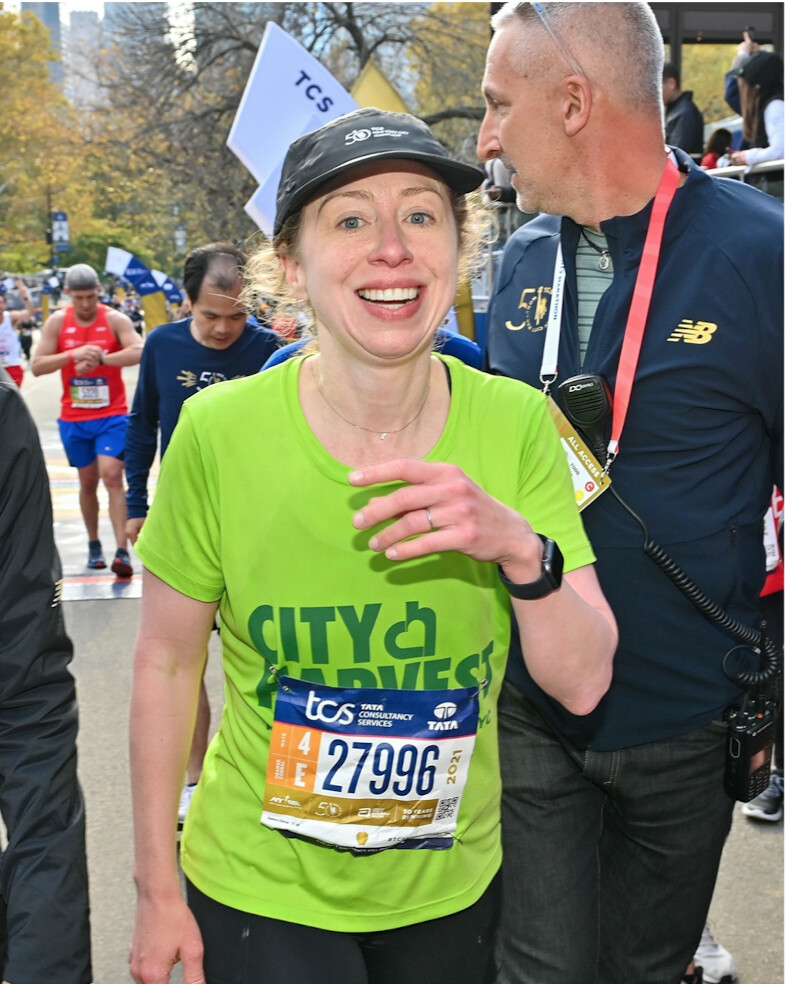
And so I was so thankful to have the chance to run the 50th running of the marathon. I’ve lived in New York City for 18 years, and most of those years I’ve cheered on the runners I don’t know and the runners I do know in the marathon.
How long have you been a runner?
I ran a little bit with my dad when I was in junior high and high school, but I didn’t really start running until I went to Stanford. I think just because it was so beautiful, and I had a lot of friends who had been runners. I’ve run, goodness, the last 20 some odd years.
When did you start training specifically for New York?
I started training four months before. I knew that I needed to train. I’d never run anything close to that distance.
Did you have a coach or a plan?
I did, and I’m not just saying this to you because you’re interviewing me. I looked at lots of different plans and some of them recommended running four days a week. I actually used the Runner’s World Sub-4-Hour Marathon Plan, which was five days a week.
I followed it really diligently until I tripped and fell [during speedwork on the treadmill] six weeks before the marathon. There’s no good story.
I wrenched my left foot and I bruised the bone and strained a tendon and thankfully have a really wonderful doctor and a great physical therapist, and I’ve never iced a body part as much as I’ve iced that left foot for the six weeks before the marathon. It got a lot of TLC of the cold variety.
I had to take three weeks off running totally. I biked and I did other things. I then kind of had to sort of feel out what I thought the best answer would be for the next couple of weeks to get back to hopefully marathon readiness. Thankfully, I was ready by the time Sunday came.
When do you train? Are you a morning runner?
Yes, I love running in the mornings. The long runs I would do on Sundays. I’m so thankful to my husband for keeping our children occupied while I was gone for increasingly longer runs over the months.
I like running all over New York City. I’ve seen so many different aspects of New York City I don’t know if I ever would have been able to see if I weren’t a runner, the different neighborhoods I could make it to. I love watching the city wake up.
There were a couple of days when it was 88, 90 degrees and I did revert to the treadmill. I found running in heat challenging.
Had you planned to run at an even pace to break 4 hours?
At the beginning I was running faster than I had planned—I was like, oh, gosh, I’m falling into the trap that all my friends who have run lots of marathons told me not to fall into, with the adrenaline. But I just have to enjoy this moment. And this is what’s enabling me to enjoy this moment. I just made the calculation, when I was in Brooklyn, that this is what feels right to me now. I want to soak in this experience, and I hope I’ll have enough left in me to still make it in under four hours. I did. With 51 seconds to spare.
I have to be honest, I didn’t quite follow my running plan on the day, but I think all the training and feeling in my body, what a 9-minute mile felt like, enabled me to adjust and still make my goal.
How was the day for you?
The day was incredible. It was even more of an amazing experience than whatever I had hoped or imagined it to be, the enthusiasm and the borough pride. I loved being in Brooklyn. Everyone was like, “We love Brooklyn!” [I’m thinking] I love Brooklyn. We made it to Queens and Queens was like, “We’re the best!” Yes, Queens is the best. You get to the Bronx and it’s like, “You’re not here for very long, but we are memorable.” I think, yes, I love the Bronx.
You get back into Manhattan and you’re like, ohmigod, I still have six miles to go.
Did you see a lot of people you knew along the course? And did your husband and kids see you?
It was just wonderful and I had friends that I saw all throughout the race and that just made it so much fun.
But really the most special moments were when I saw my kids. They made it to two different places and Marc was there at the finish line. They were so proud and so excited. They made me the cutest signs. My daughter yelled so loudly she was hoarse that night.
I am so proud that my kids saw their mom set a goal and beat that goal. We had lots of conversations, because initially they were like, “Mom you’re going to try so hard and you’re going to win.”
And I’m like, “No. I’m going to try so hard and I’m going to finish.”
They said, “But you can win, Mom.”
“I can’t win. If I work really hard, hopefully I can finish in about twice the time that people who are going to win finish in.”
And there were all these wonderful conversations around, we can do hard things at different points in our lives. Sometimes it really is about the effort toward those hard things and enjoying the effort and enjoying the event and it’s often not about winning.
My 2-year-old didn’t really understand what was going on. On Sunday night he was like, “No like wide races. Mama gone too long.”
“Oh yes, I’m sorry, sweetheart. Mama was gone too long today in the wide race.”
Had you planned to run with former pro soccer player Abby Wambach?
We knew that each other was running. I think we were just surprised we saw each other at the start and it was so nice. I adore and respect and love Abby, and it was so nice to share a little bit of that experience with her. But definitely after mile 11, I was like, I cannot keep up with the Olympian. I need to slow down a little bit or I will hit the wall. It was an unexpected gift at the moment.
Did you hit any rough patches?
I think that the bridges were harder than I had thought. The last six miles were challenging. But worth it.
You were running for City Harvest, which works on hunger issues in New York?
I was. I definitely saw people cheering on City Harvest. It was also really nice how often I would see people who were there for Every Mother Counts or Juvenile Diabetes Research Foundation and the other organizations. People were cheering on everyone who was in identifiable nonprofit shirts that ran by. There was so much support for those of us who were running for a cause.
Were you recognized by strangers?
Yes. And everyone was so nice. As I got slower, around 21, 22, 23, 24, I would run by and I would hear shouts behind me, “Go, Chelsea!” and I would turn back and be like, “Thank you!”
Were you doing the calculations at that point to figure out how slow you could go and still break the four-hour mark?
Yes. When I had run more quickly than I had realized for the first half, I was doing the math in my head, how slowly can I run in the moments when I know this is going to be really hard and then what will I need to do toward the end? I kept constantly recalibrating. And then, going up 5th Avenue, I could feel myself slowing more and thought, “Oh no, I hope I didn’t miscalculate.” And then I got into Central Park and the energy really helped carry me through.
Your parents seemed really proud of you.
Ohmigosh, so excited. I was nervous because of my injury, like oh, gosh, I hope I can make it. I actually called my mom at mile 11. I’m sure this is like breaking some sort of marathon protocol. I probably shouldn’t have called her, but I called her like, “I”m going to make it. You have to come.” She was like, “We’ll be there.” I was like, “Okay!” She was like, “Wait, aren’t you running?” ... “I am.”
Did you enjoy the signs people held?
So many funny signs. And so many, “Go random stranger” signs. I was like, “Yes, I’m a random stranger. Thank you!” Lots of signs supporting moms, which was great, like, if you gave birth to a child, you can do this. “Yes, I’ve given birth to three, I can.”
What kind of shoes do you wear?
I run in Brooks [Adrenaline GTS 21]. I’ve tried lots of different shoes. I have been dedicated to those shoes.
Are you hooked on marathons now or are you saying, “Never again?”
Well, I have to say I finished and I thought, “That was amazing. I want to do another one.” And then Sunday night I was like, “Ohmigosh, I’m so sore. How could I ever do this again?” We’re talking now and it’s Wednesday and I’m like, “I could totally do it again.” It’s a little bit like having children. It is something I would love to be able to do again
If I do it again, though, I would want to have a coach or friend. As extraordinary as it was and as much as I loved doing it as a New Yorker in New York City, it would have been nice to share the experience with someone. I said, “Marc, what do you think?” He said, “I love you so much. I’ll cheer harder next year. I’ll try to be in even more places.”
Hopefully I have some friends I can persuade.
by Runner’s World
Login to leave a comment
Cuffe runs away from the field in 43rd Freihofer’s Run for Women
The only reason Aisling Cuffe didn’t get lonely during the 43rd Freihofer’s Run for Women 5k on Saturday is that the race course doubles back on itself.
As she turned right off Sprague Place onto Washington Avenue just before the 4k mark, she allowed herself a smile as she was greeted warmly by a long line of walkers headed in the other direction, having just passed the 1k mark.
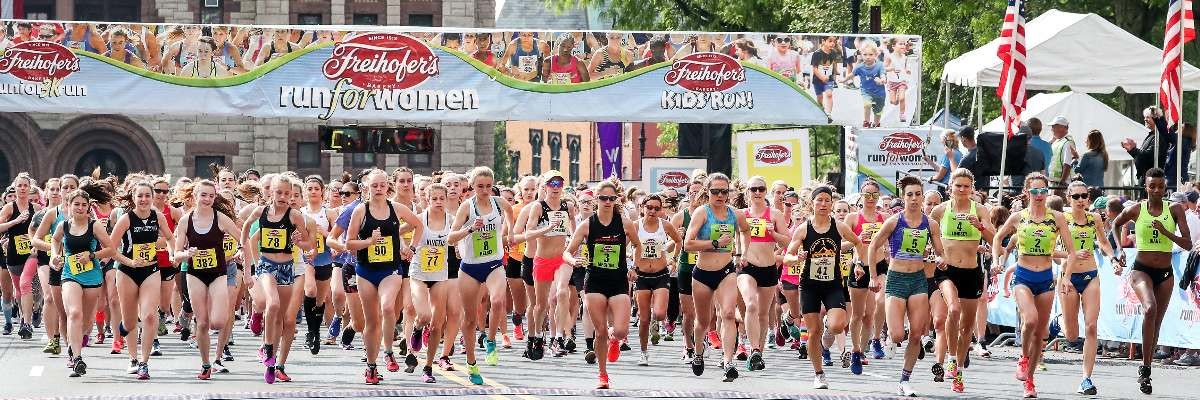
By the time the 28-year-old Cuffe passed Henry Johnson Boulevard a long city block later, no runner had appeared turning the corner on Sprague, and that was that. Cuffe polished off the downhill on Washington to the finish and won the Freihofer’s Run in 16:34, a whopping 40 seconds ahead of runner-up Cara Sherman.
A two-time New York State high school champion in cross country for Cornwall Central in 2009 and 2010 who went on to run for Stanford University, Cuffe has raced pretty much everywhere in the state except for the Capital Region, and she made her Freihofer’s Run debut a smashing success by putting the field away early.
“I have a tendency to not start fast enough, so by a half-mile in, I was like, ‘Oh, I don’t think I’m starting fast enough for the pace I want to do,’” she said. “Normally I rely on the field to drag it out of me, and I didn’t feel like the field was doing that, so I thought, ‘I’m going to have to go.’
“And I was super-nervous somebody was going to come back and start kicking it in, so I kept looking and probably shouldn’t have been looking as much as I did.”
The Freihofer’s Run usually is held in early June, but was moved to September for this edition after being contested as a virtual race last year because of the COVID-19 pandemic.
A total of 1,024 runners finished the in-person 5k in comfortably cool, sunny conditions on Saturday, after a thick fog lifted an hour or so before the 9 a.m. start.
The clear conditions didn’t help the elite field find Cuffe, as she got 10 meters of separation by Lark Street a half-mile in and pretty much put the race away with a 5:32 first mile shortly after entering Washington Park.
Cuffe ran the second mile in 5:27 for a 10:59 split and spent as much time watching her step through the rolling hills and twisting turns in the park as anything else.
“It got quieter all of a sudden when I started pushing, and I thought, ‘Oh, did I make a gap already?’” she said. “You can tell sometimes how many people are around you just by hearing, but it wasn’t what I thought. So I was like, ‘What?’ And it thinned out so much … ‘Wow. OK.’ I kept having to press at that point.
“I fell asleep a little bit in the second mile, but that’s also where the course is at its hilliest, so it’s tough to say. But I do think I fell asleep a little in that middle mile. When I’m a little more relaxed, I start looking at potholes a lot more and getting a little picky about my steps.”
“I thought about it [making a push to close the gap], but I was already pressing a little bit early, so I figured I should stay within myself and be patient,” Sherman said.
A two-time runner-up in the 5,000 meters at the NCAA Championships while at Stanford, Cuffe has been training for longer distances this year and said she felt “a little rusty at the 5k distance.”
Besides winning two cross country state meets for Cornwall, she also won the state Federation meet and Foot Locker National Championship in 2010.
At Stanford, she was coached by former Section II star Liz Maloy of Holy Names, who hosted Cuffe at her Loudonville home this weekend. Among their shared memories is having run in the state meet, where runners compete in t-shirts color-coded to their section.
“We used to get cotton t-shirts at the state meet, so she had maroon, and I had royal blue, and we were talking about running one of your biggest meets in high school in a cotton t-shirt. We love that,” Cuffe said.
“Oh, my God, they’re my favorite t-shirts. I can’t wear them too much because they’re starting to wear a little thin, so I have to preserve them for my children and grandchildren.”
Sherman, who has run in the colors of Mohonasen High School and the University at Albany, wanted to use the Freihofer’s Run as a stepping-stone to the MVP Stockade-athon 15k, another popular road race that will return to in-person competition on Nov. 14.
The 2019 Stockade-athon winner completed the Freihofer’s Run 10 seconds ahead of third-place finisher Annika Sisson.
“I was a little surprised to finish so far up, but I hit the time I was shooting for. I thought I’d be around 17:15,” Sherman said. “I’m training for the Stockade-athon right now, so I was using this as my first test effort, sort of. So I just wanted to see where I was at.”
It wasn’t long ago that Sisson was running in the Capital Region, as she was second to another former UAlbany standout, Hannah Reinhardt, at the 2018 America East Conference cross country championship meet, while Sisson was at Stony Brook.
“My coach Kurt Benninger, Molly Huddle’s husband, he knew of this race and thought it would be a good opportunity to test my fitness, see where we’re at heading into the fall,” Sisson said. “And it was great, I had so much fun. I knew Aisling was coming in, so that was fun. We were like, we’re probably going to have to let her go.”
Sascha Scott of Syracuse won the masters division while finishing 10th overall in 18:17.
Under a reconfigured prize structure that offered a deeper distribution, Cuffe earned $3,000 for the victory.
She said she especially appreciated the women-only race, though, for some of its other touches, like running into the walkers on the way back and the fact that race director Kristen Hislop announced to the field before the start that the age range in the race ran from 9 to 93.
“I love races like this, especially when you get to see other people in the race doing it as well,” she said. “Even at the start, when Kristen was announcing the race and the oldest person and the youngest. I love that stuff, I could listen to that all day long, the number of people that come out and share in the sport of running and racing having fun together. It’s so motivating and inspiring.”
TOP 50
1. Aisling Cuffe (28, Concord, Mass.), 16:34; 2. Cara Sherman (24, Schenectady), 17:14; 3. Annika Sisson (25, Pawtucket, R.I.), 17:24; 4. Caitie Meyer (30, Albany), 17:34; 5. Kerry Allen (33, Washington, D.C.), 17:39; 6. Karen Bertasso Hughes (37, Selkirk), 17:42; 7. Tricia Longo (31, Waterford), 17:50; 8. Sarah Danner (28, Gowanda), 17:57; 9. Elizabeth Debole (36, Albany), 18:02; 10. Sascha Scott (46, Syracuse), 18:17.
11. Suzie Clinchy (32, Brooklyn), 18:26; 12. Nicole Moslander (34, Rotterdam), 18:28; 13. Abbi Wright (24, Delmar), 18:31; 14. Leonni Griffin (14, Watervliet), 18:37; 15. Meghan Mortensen (36, Glenville), 18:50; 16. Marisa Sutera Strange (58, Millbrook), 18:56; 17. Renee Tolan (46, Clifton Park), 18:57; 18. Laura Kline (44, Syracuse), 18:59; 19. Erin Lopez (40, Ivoryton, Conn.), 19:01; 20. Kaleigh Higgins (15, Watervliet), 19:08.
21. Gina Pardi (23, Falmouth, Me.), 19:21; 22. Charlotte Dunkel (14, Latham), 19:43; 23. Kaitlyn Phillips (24, Rome), 19:51; 24. Brina Seguine (32, Rensselaer), 20:00; 25. Ciara Bullington (17, Cohoes), 20:02; 26. Lauren Scarupa (30, Clifton Park), 20:03; 27. Marta Dauphinee (43, Glenville), 20:13; 28. Kirsten McMichael (24, Clifton Park), 20:13; 29. Diana Tobon-Knobloch (40, Schenectady), 20:26; 30. Birtu Diefenderfer (16, Albany), 20:33.
31. Kaitlin Bogucki (14, Rensselaer), 20:31; 32. Jennifer Richardson (41, Albany), 20:48; 33. Sarah Harris (46, Sunderland, Vt.), 20:50; 34. Elizabeth Koa (15, Watervliet), 20:53; 35. Katie Johnson (40, Delmar), 20:55; 36. Lilla Korniss (16, Watervliet), 21:00; 37. Aroline Hanson (41, Sunderland, Vt.), 21:03; 38. Alyssa Caiano (14, Cohoes), 21:04; 39. Lori Kingsley (55, Wysox, Pa.), 21:03; 40. Julianne McCarthy (39, Albany), 21:06.
41. Anne Benson (56, Clifton Park), 21:08; 42. Natalie Bennett (16, Latham), 21:10; 43. Alyssa Risko (55, Schenectady), 21:14; 44. Rebecca Miceli (24, Troy), 21:15; 45. Colleen Brackett (60, Albany), 21:17; 46. Katherine Durrant (47, Ithaca), 21:17; 47. Shannon Church (40, Watervliet), 21:19; 48. Kim Lagasse (27, North Attleboro, Mass.), 21:25; 49. Lauren Williams (31, Troy), 21:32; 50. Judy Guzzo (54, Niskayuna), 21:34.
Login to leave a comment
Freihofer's Run For Women
Freihofer's, a leading baker of wholesome products, is committed to fostering the growth and recognition of women in sports and inspiring all generations of women to experience the benefits of exercise and good nutrition. That's why we're proud to sponsor the annual Freihofer's Run for Women 5K -- one of the world's largest and most prestigious all-female road races. TheRace...
more...Letsile Tebogo and Udodi Onwuzurike set the pace for Africa’s new generation of sprinters
Letsile Tebogo, Udodi Onwuzurike, Christine Mboma, Anthony Pasela, Imaobong Nse Uko and Benjamin Richardson are just some of Africa’s rising sprint stars, and their achievements this season could signal a revival for the continent.
When Tebogo opted to compete in the 100m and 200m, despite hailing from a country best known for its quarter-milers, it was with the aim of breaking barriers and inspiring a change in Botswana.
But the 18-year-old surpassed even his own expectations in Nairobi when he gifted his country its first ever global gold medal in the 100m, setting national U20 records of 10.22 and 10.11 in the process. His 10.11 clocking actually broke the senior national record, surpassing Makwala’s former mark of 10.20 set seven years ago.
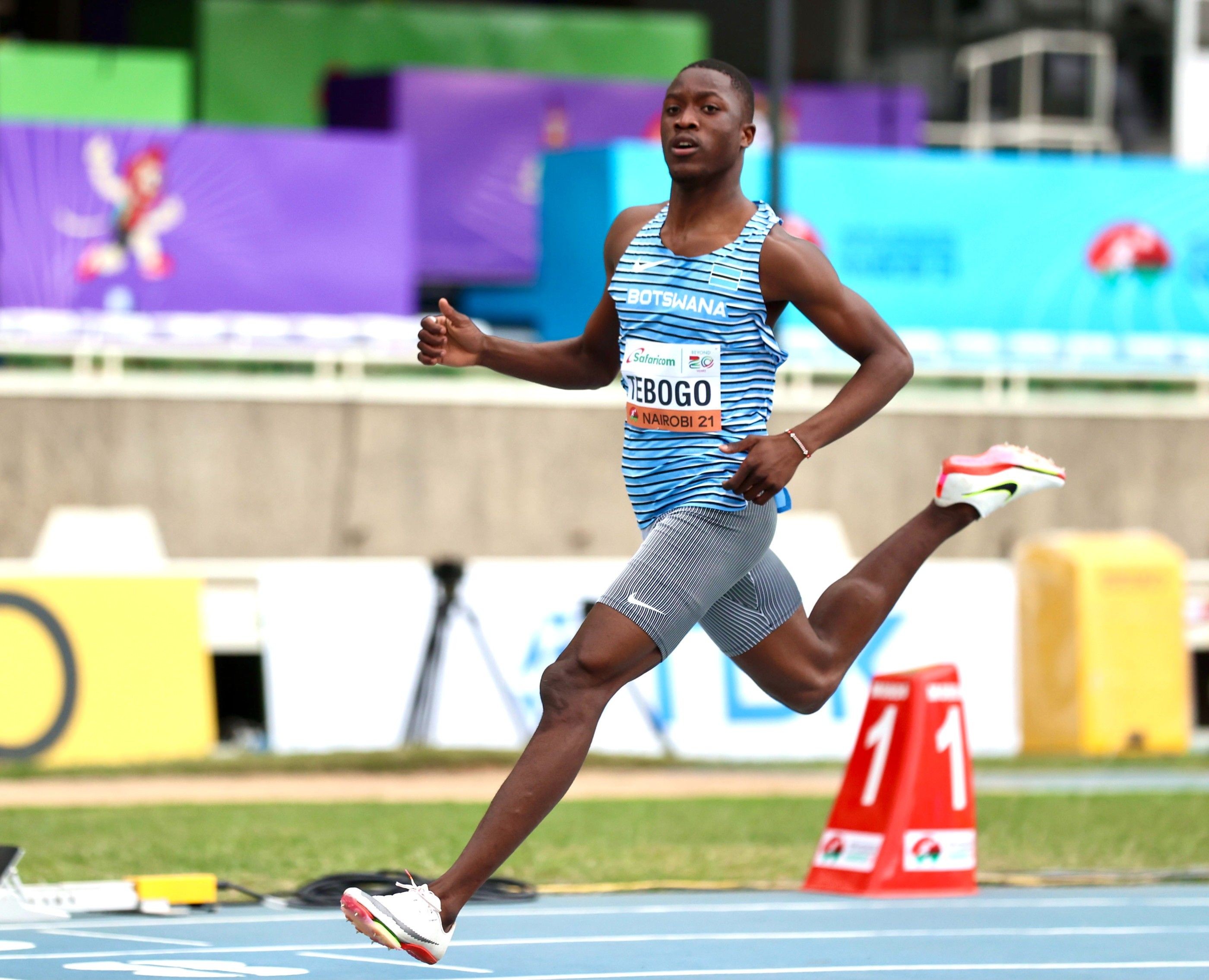
“The motivation to get into athletics was from watching the big guys like Isaac Makwala, Karabo Sibanda and Nijel Amos,” said Tebogo. “However, I just really wanted some change in the country, so I had to do something different from the big guys, that’s why I opted to compete in the 100m and 200m. I’m really proud of my performance and I know back at home they’re proud of me bringing the first gold medal to Botswana.”
Tebogo led a 1-2 for Africa as Benjamin Richardson of South Africa took silver in 10.28 while Cuba’s Shainer Rengifo earned bronze with 10.32.
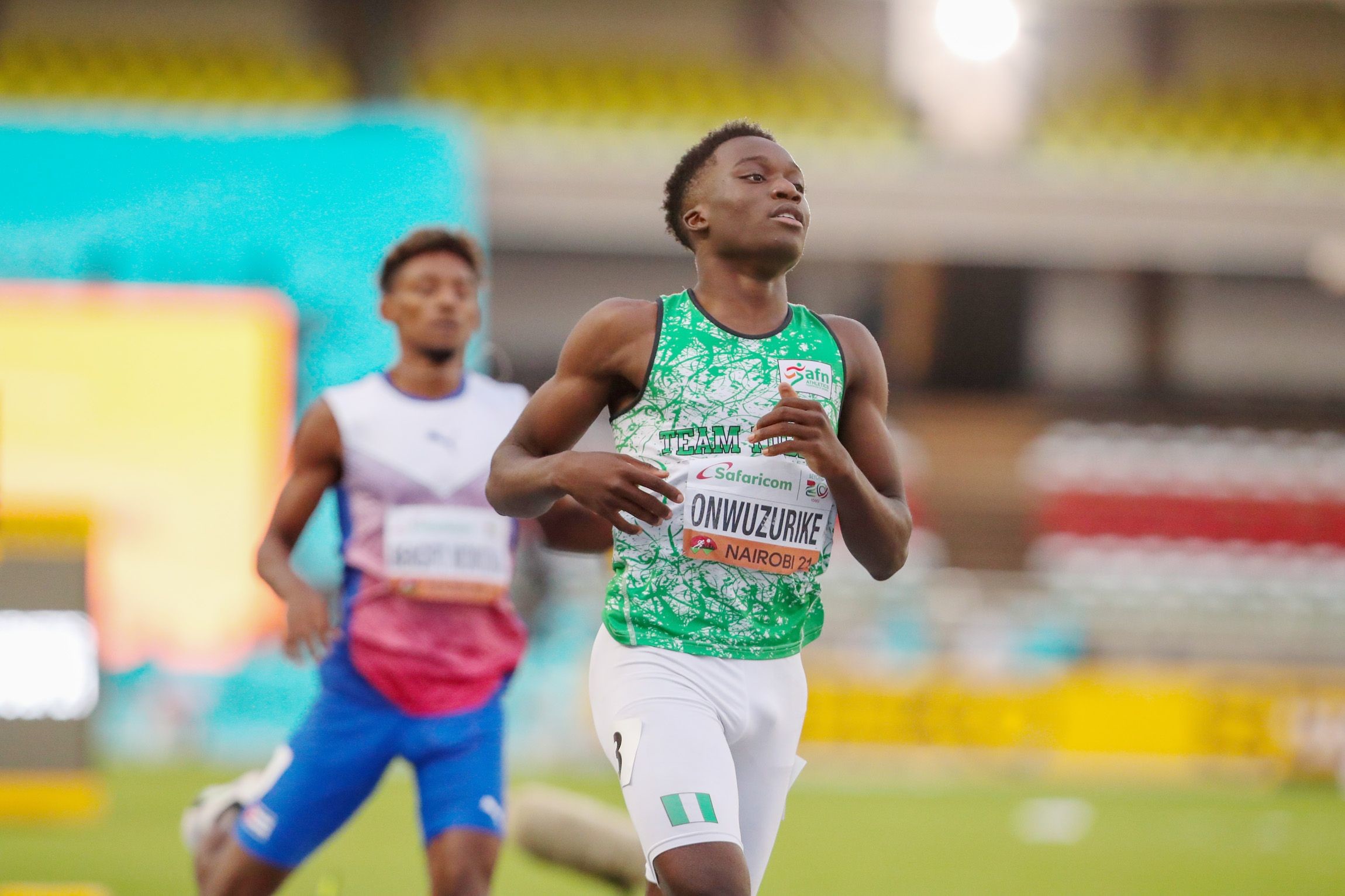
For Richardson, who would go on to anchor his country to Africa’s first ever gold in the men’s 4x100m in a world U20 record of 38.51, the podium finishes by Botswana and South Africa in the men’s 100m is the start of something big for the continent.
“We’ve started to become better,” he says. “Two Africans finishing first and second; you can see that there’s something coming. We’re going to dominate soon.”
Tebogo also competed in the 200m, which had been regarded as his stronger event. A sprint double was not to be, though, as he eventually took silver behind Nigeria’s Udodi Onwuzurike, who didn’t appear as a likely medal contender in the build-up to the championship.
Onwuzurike also started in track and field when he was about eight years old, and he grew up watching his brother Chiebuka, who is older by almost six years, compete in the 100m and 200m. The older Onwuzurike went as far as competing for Boston University and holds personal bests of 10.46 and 21.37. For the younger Onwuzurike, the dream was to take things a notch higher: become an NCAA champion, an Olympic champion and a world champion. And so began his quest.
At the World U20 Championships in Nairobi, Onwuzurike’s first ever outing for Nigeria, he lowered his personal best from 20.78 to 20.47 in his heat, and then clocked 20.13 in the semifinals which would have been a championship record but for the wind (2.4m/s).
He then stormed to gold with a national U20 record of 20.21 to become the first Nigerian in World U20 Championships history to win 200m gold since 1996 when Francis Obikwelu won the sprint double, and the second fastest Nigerian over the distance in 2021. South Africa’s Sinesipho Dambile clocked a season’s best of 20.48 for bronze, completing the African sweep.
Though stung by his loss to Onwuzurike, Tebogo said that the overall 200m result was a good one for Africa. “I’m really proud and excited about this,” he said. “It (an African sweep) was my dream. Even in the call room I told Dambile ‘Bro we have to do this. We have to bring the medals back home’. I felt it should be a 1-2 or 2-3, but maybe the Nigerian overheard us and that’s why he came to beat us,” he added with a chuckle.
For Onwuzurike, who is off to Stanford University soon, making history for Nigeria and Africa is a dream come true.
“I would say it’s surreal, it’s amazing,” he said. “I never thought I would be able to make it to this level of track, I never even knew I would be able to go to college running track. Track was always first like a fun sport because I’ve always been a little quick but it’s amazing. Having this as one of my last high school races before I go to college, it’s an amazing moment.
“I had a very rough year and got injured numerous times and felt my numbers were not really good at showing what I’m capable of, so coming out and being able to show on the global stage that I’m truly the best is amazing. It’s all I ever wanted, all I ever prayed for.”
by World Athletics
Login to leave a comment
Sifan Hassan to Attempt 5k World Record at Prefontaine Classic
(The 46th Prefontaine Classic, member of the Wanda Diamond League of international track & field meets, will be held August 20-21 at Hayward Field.)
Double Olympic gold medalist Sifan Hassan will bring her unmatched distance skills back to the Prefontaine Classic with an attempt at the world record in the 5000 meters on the first of the meet’s two days.
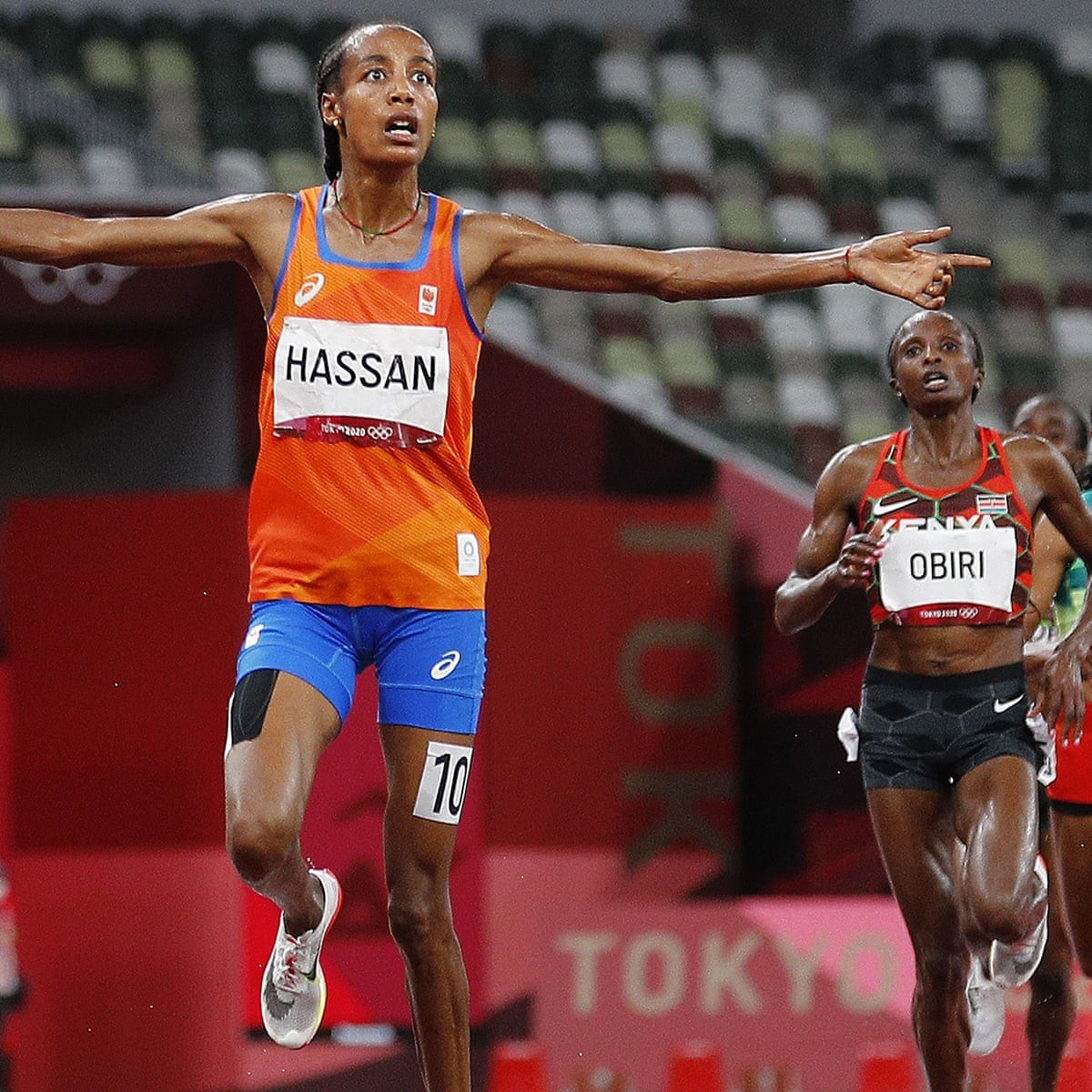
Hassan’s race will conclude a distance-special session on Friday evening as the Pre Classic returns to the re-imagined Hayward Field on the University of Oregon campus. Festivities are set to begin at 8:00 p.m. Pacific time.
This will be the first race for Hassan since her historic Tokyo Olympics, where she became the first woman or man to earn medals in the 5000, 1500 and 10,000 in the same Olympic Games. Her medal haul in Tokyo equaled the most individually by any track & field athlete with a pair of gold medals in the 5k and 10k that sandwiched a bronze in the 1500.
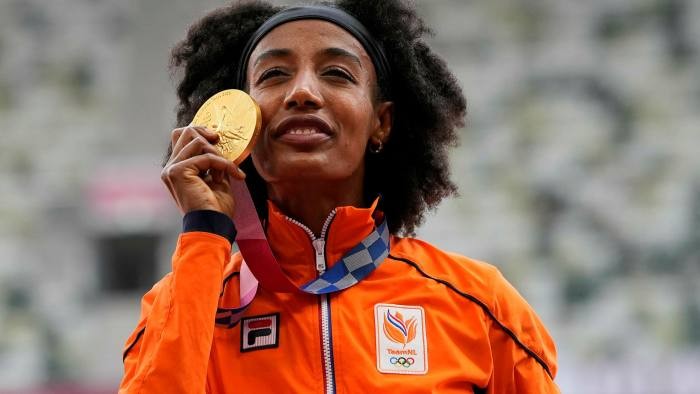
Hassan even avoided potential disaster, getting up from a fall on the final lap of her heat in the 1500 to not only catch the qualifiers but pass them all in finishing first.
The 28-year-old Hassan also made history at 2019 World Championships in Doha, becoming the first woman or man to sweep gold medals in the 1500 and 10k.
Hassan owns two world records on the track – in the uncanny combination of the mile (4:12.33) and the longest distance achieved in the one hour run (18,930 meters, just over 11¾ miles).
She added a third WR on June 6 in her homeland of the Netherlands, lowering the 10k best by more than 10 seconds at 29:06.82. At the time she matched American Mary Slaney as the only person to hold both the mile and 10k WRs simultaneously. Alas, Hassan’s 10k WR lasted but two days and she now sits at No. 2 all-time.
Hassan also owns the Wanda Diamond League record in the 3000 meters, achieved at the 2019 Pre Classic in 8:18.49 when it was held at Stanford. Just four days after her 10k WR she set the 1500 DLR at 3:53.63, but that was broken in July. Her PR in the 1500 is 3:51.95, a European record that makes her No. 7 all-time.
Curiously, the weakest of Hassan’s PRs is right in the middle of her fantastic range, as her 5k best is “only” 14:22.12, which puts her No. 12 all-time. The world record that she is aiming for 14:06.62.
This will be Hassan’s fifth Pre Classic, and she has PRed in three of her previous four appearances.
Login to leave a comment
Prefontaine Classic
The Pre Classic, part of the Diamond League series of international meets featuring Olympic-level athletes, is scheduled to be held at the new Hayward Field in Eugene. The Prefontaine Classicis the longest-running outdoor invitational track & field meet in America and is part of the elite Wanda Diamond League of meets held worldwide annually. The Pre Classic’s results score has...
more...Ben Flanagan and Edna Kiplagat Win the 49th Annual ASICS Falmouth Road Race
Organizers of the 49th Annual ASICS Falmouth Road Race, one of America’s premier running events of the summer, officially brought road racing back to the streets of Falmouth today with Canadian, Ben Flanagan, winning the Men’s Division for a second time in 32:16 and Kenyan, Edna Kiplagat winning the Women’s Division in 36:52.
Flanagan set up his strategy in advance. “I was out with my family at the Black Dog Café and I took a run on the course,” said Flanagan. “I noticed a crosswalk just before the final turn and decided I would make my move there. I knew, if I could hold off the pack until we got to the final downhill there was no way they could catch me.”
The men’s race began with Frank Lara going to the front coming out of Woods Hole to post a 4:28 first mile. An accomplished pack of 18 men lined up behind Lara, as he held the lead through most of the race. By mile six, the men started to sort themselves out. Biya Simbassa, a University of Oklahoma graduate -- who recovered from a fall at the halfway mark -- stayed in the hunt, as did Emmanuel Bor, fresh off his fifth at the U.S. Olympic Trials 5000m.
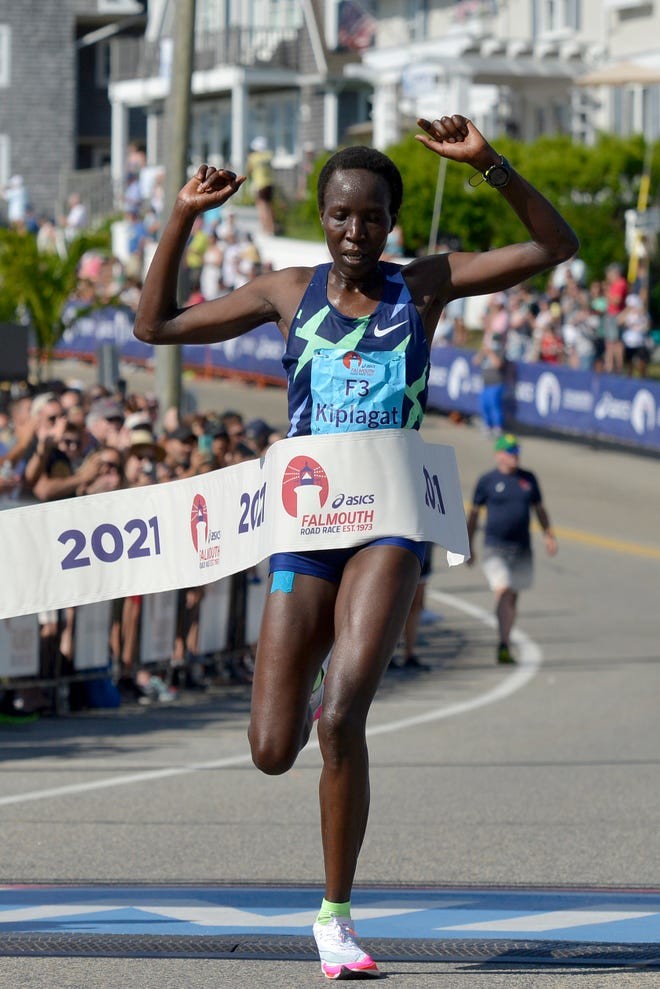
Flanagan made a determined push at the base of the final hill before driving over the top to seal his victory over Simbassa, Bor and Lara - all finishing within 6 seconds of each other.
The women’s race broke early with a pack of 30 dropping to seven by the second mile. Iveen Chepkemoi, a young 24-year-old talent from Kenya, who trains in Colorado Springs, put a gap on Edna Kiplagat, Emily Durgin, Fiona O’Keeffe and past Falmouth champion Diane Nukuri. By the halfway point, the race was between Kiplagat, a Boston, London and New York City Marathon champion, and Chepkemoi, with the second pack fading by 20 seconds. At mile four, Kiplagat pulled away as Chepkemoi got caught by the chase pack.
“This was a fast race, and I needed it at this point in my training because I’m running the Boston Marathon in October,” said Kiplagat. “Once I saw the finish, I focused on keeping away from second place.”
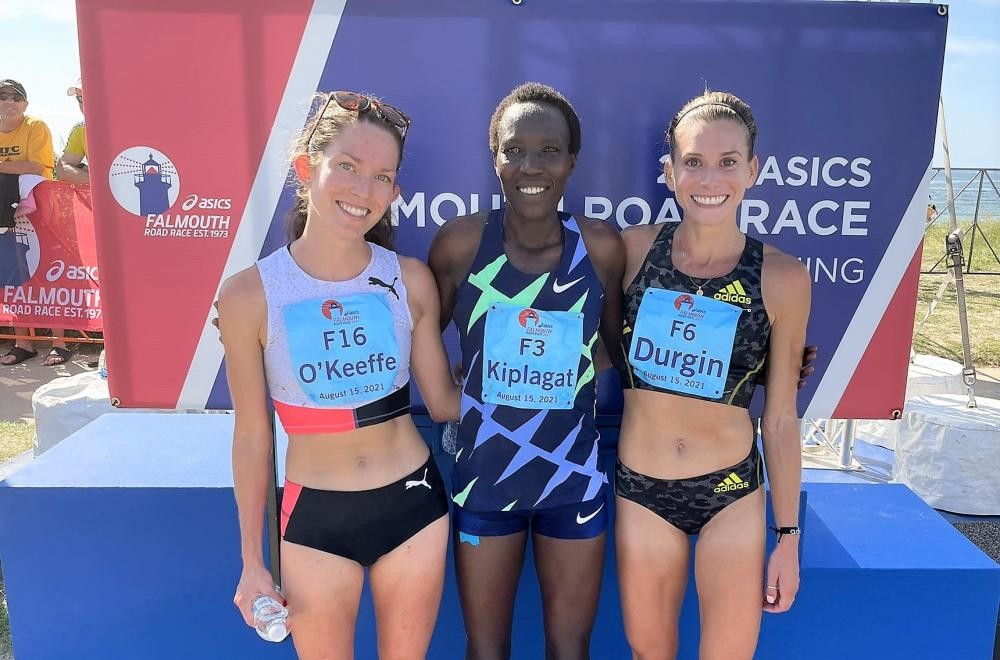
Durgin edged O’Keefe by one second to secure her third runner-up finish of the summer. “This is a beautiful course. We were all working together feeding off each other,” O’Keefe said. She was second at the U.S. 10K and 6K Championships. O’Keefe, a six-time All American at Stanford now coached by Olympian Amy Cragg, finished third.
In the Wheelchair Division, Hermin Garic, a veteran of eight Falmouth Road Races, took his first win with a 25:40. “I worked my butt off for this win,” said Hermin, who will be wheeling Utica Boilermaker the day before he heads to the 125th Boston Marathon. Emeilia Perry took the women’s wheelchair race in 37:39. “I’m really excited. This is my first Falmouth Road Race and I wasn’t expecting that last hill, ” Perry said after the race.
Additionally, the 2020 Tokyo Olympic Marathon bronze medalist, Molly Seidel, served as the official race starter and joined the ASICS Falmouth Race field of nearly 8,000 registered participants as its very last runner. For every runner that she passed along the 7-mile course, the Falmouth Road Race pledged to donate $1 to Tommy’s Place, a vacation home in Falmouth for kids fighting cancer. Tim O’Connell, founder of Tommy’s Place, announced an additional dollar-for-dollar match. While Seidel officially ran past 4,761 runners along the way, the Falmouth Road Race is pleased to announce that it will double its pledge, bringing its donation to $9,522.00 in appreciation of Seidel’s participation in this year’s event and to celebrate her victory in Tokyo. Combined with O’Connell’s match, that brings the grand total to $19,044.
About Falmouth Road Race, Inc. The Falmouth Road Race was established in 1973 and has become one of the premier running events of the summer season. Each year the race draws an international field of Olympians, elite and recreational runners out to enjoy the iconic 7-mile seaside course. The non-profit Falmouth Road Race organization is committed to promoting health and fitness through community programs and philanthropic giving.
by Running USA
Login to leave a comment
Falmouth Road Race
The Falmouth Road Race was established in 1973 and has become one of the premier running events of the summer season. Each year the race draws an international field of Olympians, elite runners and recreational runners out to enjoy the scenic 7-mile seaside course. The non-profit Falmouth Road Race organization is dedicated to promoting health and fitness for all in...
more...Less than three seconds was the difference between America’s Grant Fisher winning an Olympic medal in the 10000m in Tokyo
USA's Grant Fisher finished fifth in the 10,000 meters Friday with a time of 27:46.39. Jacob Kiplimo of Uganda won the bronze medal in 27:43.88.
Selemon Barega of Ethiopa won the gold medal with a time of 27:43.22, running the final lap in 53.94 seconds to nip Joshua Cheptegei of Uganda, who clocked 27:43.63.
"We did what we could to prepare,” Fisher, a former NCAA champion at Stanford, said, “but nothing prepares you like being out there. It’s physical, it’s choppy, guys are making moves.”
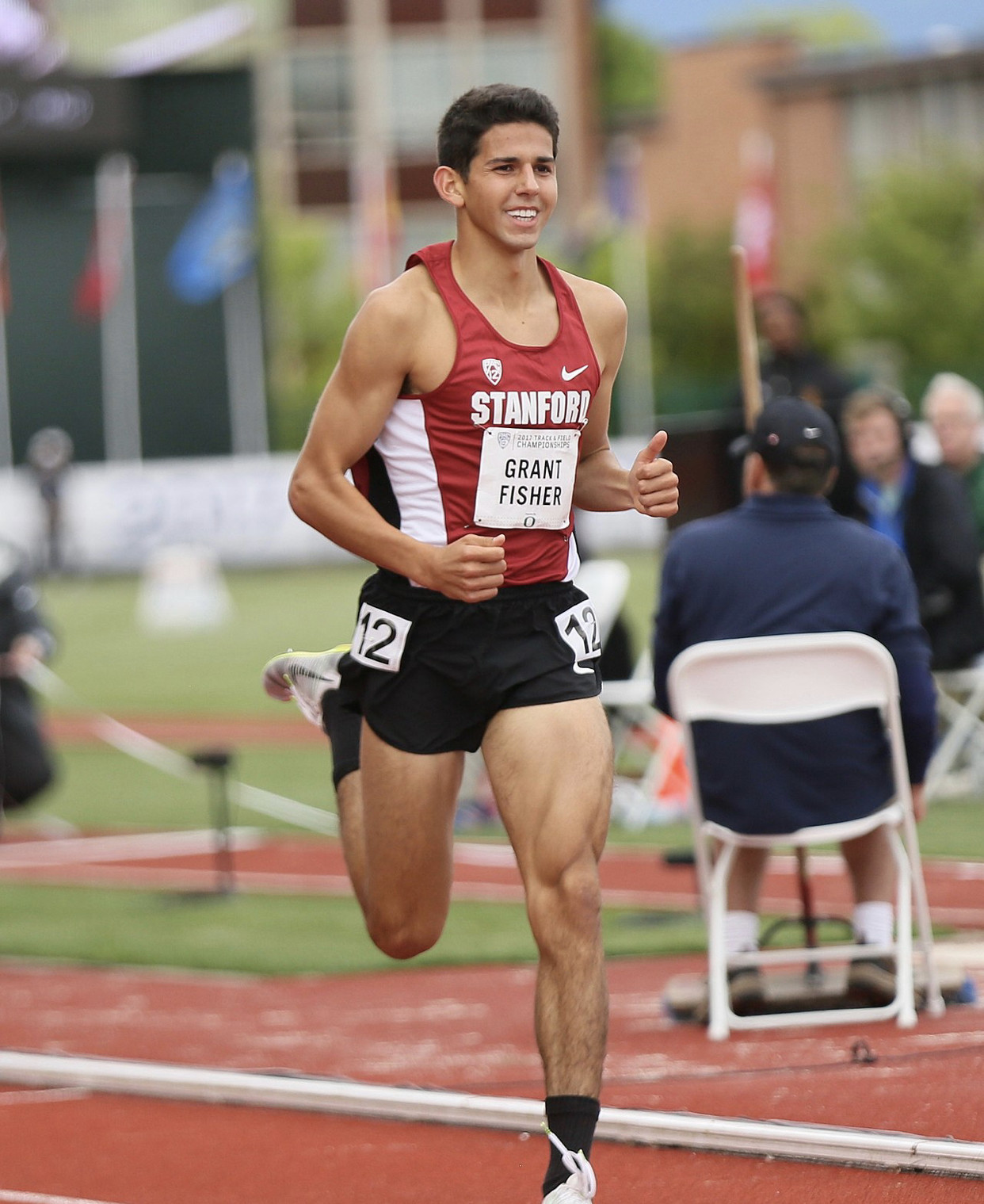
It was also hot, not to mention humid.
Fisher, competing in just his third official 10K, was able to stay within striking distance of the top runners going into the last lap, then unleashed a strong finishing kick to move up to fifth in 27:46.39. Cheptegei (27:43.63) and Kiplimo (27:43.88) took the silver and bronze medals, while Kincaid was 15th in 28:11.01, followed one spot later by Klecker in 28:14.18.
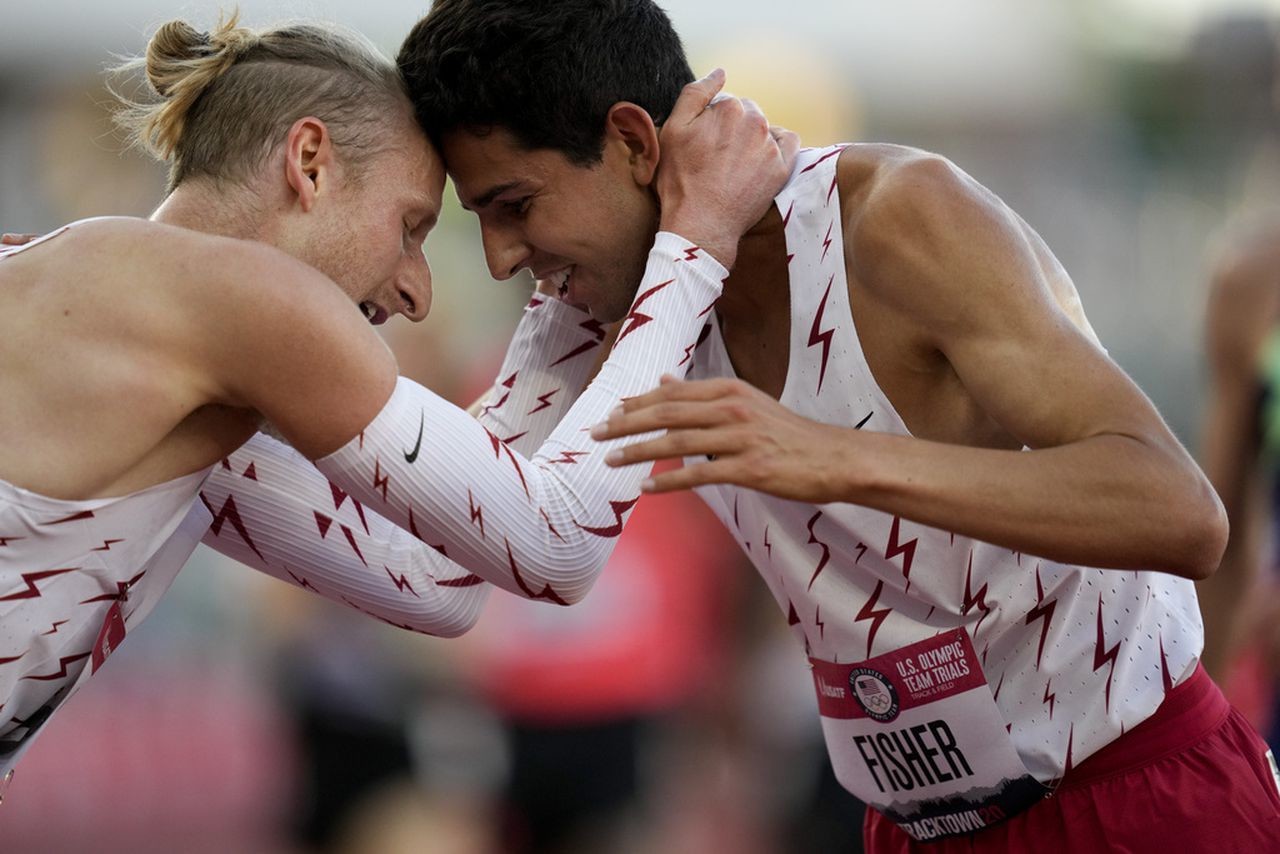
"I was just trying to race without fear, put myself in there and give myself a shot at the end,” Fisher, 24, said. “I was really happy with it. That whole thing, it never felt good. I bet even the guys that were 1-2-3 didn’t feel good in that race. I hope, because I felt that way.”
Despite the fifth-place finish, Fisher’s medal hopes are not over.
He’ll be competing in the 5,000 meters – his signature event – next week in Tokyo. The preliminaries are Tuesday, Aug. 3 and the final is Friday, Aug. 6.
Fisher, 24, is a 2015 graduate of Grand Blanc High School, where he was a two-time state and national cross country champion. In track and field, he became the seventh high school runner to break the four-minute barrier in the mile when he recorded a time of 3:59.38 in his final mile race as a senior.
At Stanford, he was a 2017 NCAA outdoor champion in the 5,000 meters. He was a 12-time college All-American.
Login to leave a comment
Tokyo 2020 Olympic Games
Fifty-six years after having organized the Olympic Games, the Japanese capital will be hosting a Summer edition for the second time, originally scheduled from July 24 to August 9, 2020, the games were postponed due to coronavirus outbreak, the postponed Tokyo Olympics will be held from July 23 to August 8 in 2021, according to the International Olympic Committee decision. ...
more...Running Stronger and Faster In your 40s and Beyond
Running strong past your 30s takes dedication. As you age, your body faces new challenges, and new roles and responsibilities enter your life that affect where, when, and how long you can run. We talked to nine runners about the day-to-day physical and logistical challenges of running in your 40s, 50s, 60s, 70s, and older to steal their tips for staying fast (and in some cases, becoming faster than ever!).
Then, experts weigh in on each runner's habits to talk about how you can apply their strategies to your running life. Plus, how to fuel your runs in each age bracket.
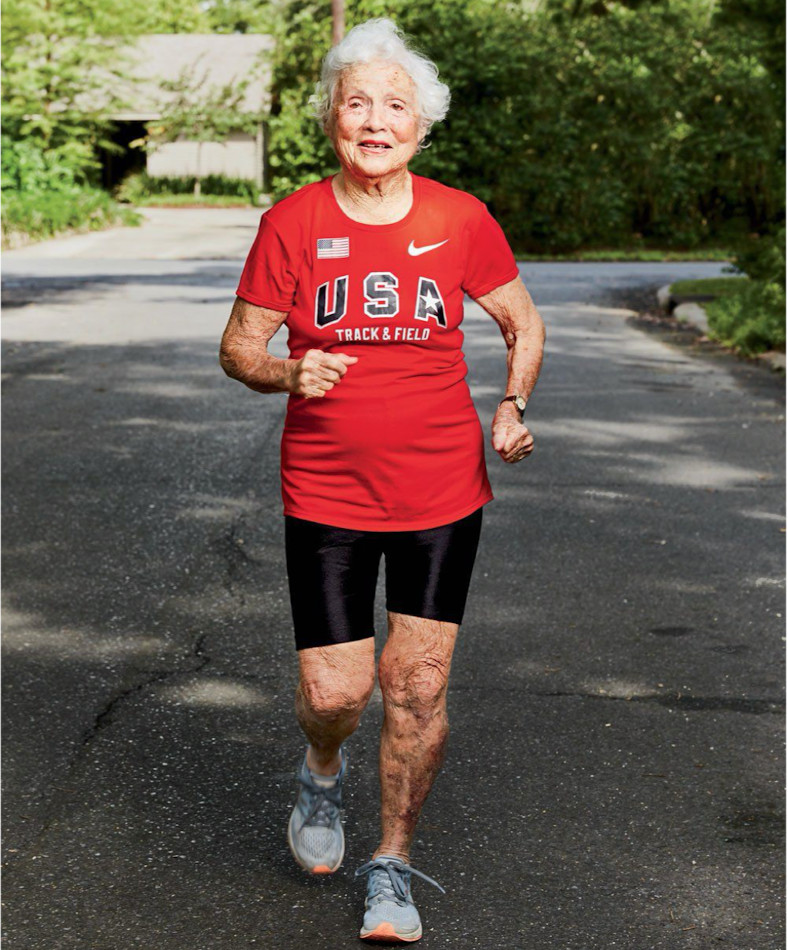
If you take care of your body, you can compete for a long time. I made my last Olympic team when I was 36 years old. But you have to adapt as you age. When you’re a young athlete, you’re still developing. You’re pushing to get stronger and faster. But once you’ve built the athleticism you need for your sport [and reached your ceiling], you don’t have to train the same, because you hit a rate of diminishing returns. Injuries come from pushing to get better and not being able to recover.
I still train six days a week, because it’s how I get my thinking in, but if I go hard two days in a row, I’m risking injury. I follow every high- intensity day with two low-intensity days, even if I feel great. On low-intensity days, I drop my effort to 70 percent. After a hard 10-mile tempo run, I’ll do 7 miles the next day, or run at 70 percent of my previous pace. When I do strength work, I use lighter weights or perform fewer reps, and I prioritize more rest between sets. I always stretch after workouts, and on off days, I’ll soak in hot water with Epsom salt, take vitamin D, and even go get a massage. To make sure I get enough protein, I take collagen, eat boiled eggs, and supplement with whey protein shakes.
The Experts Say: Reduce intensity and emphasize protein in your 40s to maintain muscle strength and cardiovascular endurance. By the time men hit age 40, strength and cardio start to drop by a percent or two per year, according to a study in Sports Medicine. Training smarter instead of harder—that means prioritizing recovery—helps you maintain performance, says Dr. Michael Fredericson, director of sports medicine at the Stanford University School of Medicine. He advises runners to do only two or three high-intensity runs a week. Research from the Netherlands suggests that eating 40 grams of protein after a training session can restore muscle faster than if you’d skimped on the protein, and research from Spain shows that adequate vitamin D is associated with improved performance and lower risk of injury. —As Told To Michael Easter
Reach for Your Peak
The Experts Say: Hormonal changes can diminish muscle and power in your 40s, so prioritize strength over endurance. “As estrogen and progesterone fluctuate and decline [during menopause], runners can experience muscle loss, loss of power, hot flashes, increased stress, and inflammation,” says female-performance physiologist Stacy Sims, Ph.D. Less estrogen makes it difficult for women to rebuild muscle, so consume more protein—0.7 grams per pound of bodyweight daily. Women also lose bone density with age, so supplementing magnesium, vitamin K2, calcium, and vitamin D3 can help you maintain a strong skeleton, per a 2020 study in Maturitas. —As Told To Emily Shiffer, With Additional Reporting By Selene Yeager
Find More to Love In Every Mile Amid a loss of muscle mass and testosterone levels, focus on movement quality, correct imbalances, and start experimenting, says Peter Park, C.S.C.S., three-time winner of the World’s Toughest Triathlon. Planks, squats, deadlifts, push-ups, and pull-ups with good technique can help you keep a balanced running form. Don’t neglect calf raises—Achilles issues are common among men in their 50s.
Park adds that racers in their 50s should quit worrying about PRs and enjoy the ride. “Put away heart monitors, pace charts, and goals. If you feel good, go faster. If not, go slower. Focus on your breath and the experience, and let running become your meditation.” —As Told To M.E.
Mobilize to Add Power Build mobility to stay elastic and prevent injury, says Jordan Metzl, M.D., sports medicine doctor at New York City’s Hospital for Special Surgery. “Muscles and connective tissues lose elasticity, which shortens your stride. People who only run tend to develop injuries as they get tight and lose strength. Building strength and mobility through your entire kinetic chain—all of the muscles, ligaments, tendons, and bones running the length of your body—is extremely important,” he says. That’s especially true for women, because they start with less muscle than men. Managing stress is important, too, because lower levels of estrogen can result in increased anxiety. While strength training helps with that, supplement your workouts with lots of sleep: Most experts agree six hours is the absolute minimum. —As Told To Selene Yeager
Feed Your Muscles to Stoke Your Speed Maintain stride length by working your glutes and hamstrings. Marathoners in their 60s had stride lengths 16 percent shorter than those of marathoners in their 40s, per a 2006 study from the British Journal of Sports Medicine. Hills can help older runners build leg strength and speed to keep strides long, says Greg McMillan, running coach and exercise physiologist. But approach hills carefully. McMillan suggests you have a consistent, strong running base, with strides at least twice per week, before you try hills. Start with shorter hills at a slow pace and build up gradually.
McMillan adds that men and women in this age group might experience noticeable weight gain. You lose muscle tissue as you age, which slows your metabolism and contributes to a higher percentage of body fat. A high-protein diet helps preserve lean muscle mass, and dietitian Leslie Bonci says runners in their 60s need at least 20 grams per meal, but should aim for 0.6 to 0.8 grams of protein for each pound of bodyweight daily. (For a 140-pound person, that’s 84 to 112 grams.) Bonci says calcium, vitamin D, and vitamin K are critical for bone health in this age group as well, plus dietary fiber—women over 50 should aim for 20 grams per day, and men should aim for 30. —As Told To Sarah Lorge Butler
Seek Running Adventures In your 60s, diversify where, when, and why you run. “Success in the 60s means reframing goals,” says Cathy Utzschneider, Ed.D., professor of high performance at Boston College. Adopt a “less is better” approach to training, and use your imagination to keep things fresh. You can use your running fitness to succeed in another sport: cycling, swimming, or even something like paddle tennis. Tony Coffey, coach of San Francisco’s Impala Racing Team, encourages cross country for his runners in their 60s because every course is different. And when you race in your 60s, Utzschneider recommends using an age-grading calculator, like the one on Mastersathletics, to score your performance on a curve. It’ll keep you competitive and be fair to your age. —As Told To S.L.B.
Embrace Leadership Prioritize balance and share your experiences with younger runners. “A comprehensive strength-training program should include balance work [in your 70s],” says McMillan. Do functional training, such as single-leg exercises, hamstring curls on a stability ball, and yoga. If you don’t have a strength routine at this age, just practice standing on one foot, then the other, for 10 seconds at a time.
Runners in their 70s should take advantage of their experience, says Utzschneider. “The brain is the biggest asset of the 70-something runner,” she adds. “Our brains help us be selective about what’s most important. Maybe it’s helping someone else get faster, whether you’re a coach or a training partner.” —As Told To S.L.B.
Outsmart Injury Use speed workouts to stay fit and competitive, says Coffey. Running at varied paces will strengthen your running economy—the energy you need to run at a given pace, adds McMillan. That can help offset the gradual decrease in max heart rate—about a beat every year—that begins sometime after age 30.
But also integrate low-impact cross training that elevates your heart rate on easy days, says Coffey, such as cycling, swimming, or even walking, to lower your injury risk. —As Told To S.L.B.
FUELING YOUR RUNS THROUGH THE DECADES
Your body’s needs evolve as you age. These nutrition strategies will more efficiently fuel your runs, and maintain muscle mass to preserve strength and metabolism.
In Your 40s...
Stop running on an empty stomach. High-carb, low-fiber foods like bananas, toast, and yogurt before a run will boost your glucose uptake and enhance performance. Make hydration a habit. Thirst response declines with age. Drink half your body weight in fluid ounces per day, plus an additional 12 to 24 ounces per hour of exercise.
In Your 50s...
Bookend runs with protein. 8 to 10 grams before a run and 30 to 40 after a run is ideal. An egg, a serving of tofu, or a cup of Greek yogurt will do it prerun, while a two-egg scramble with black beans and turkey after your run will promote recovery.
In Your 60s...
Carbs, carbs, carbs! Within 30 minutes after a run, fast-absorbing carbs help restore your glycogen, promoting better subsequent workouts. Sweet potatoes and brown rice work, but why not have some pancakes or waffles? (Three 4-inch pancakes provide about 60 grams of carbs.)
In Your 70s and Beyond...
Fuel with a meal. Eating something balanced 90 to 120 minutes before you run will boost immune function and decrease inflammation. Try a turkey sandwich with avocado on whole grain bread. Have a bedtime snack! Studies show that eating foods containing slow-digesting casein protein increases metabolic rate. Dairy is rich in casein.
by Runner’s World
Login to leave a comment
Running can help you sleep better
A study published in the Journal of Clinical Sleep Medicine has found that regular exercise can improve the quality of your sleep and help you sleep through the night.
The only thing is that it takes about 4 months for your body to get used to the increased activity level. So don’t get discouraged if your new training routine doesn’t improve the quality of your sleep right away. It may well be that you need longer to fall asleep if you do an intense workout right before going to bed. Why? Physical exercise stimulates the autonomic nervous system and until it settles down, you can’t sleep. So your body needs time to adjust to the new training stimuli.
BETTER SLEEP, BETTER PERFORMANCE
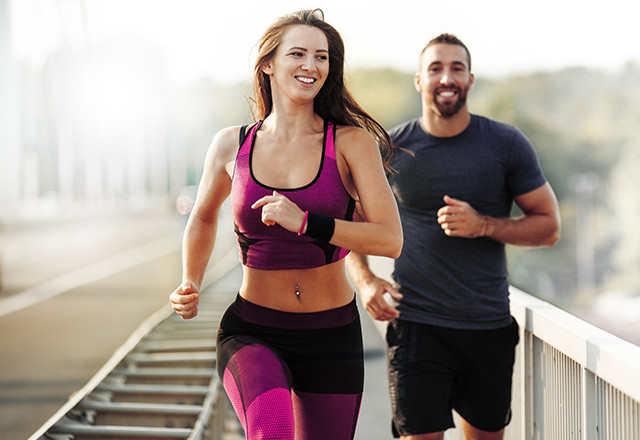
During the day, we want to do a good job at work and still see the best results from our running workouts. If you don’t sleep well at night, you have less energy during the day and thus less desire to exercise. Therefore, a good night’s sleep is essential for your training routine!
This has recently been confirmed by a study on student athletes conducted by the renowned Stanford University: Students who got more sleep (in this case, 10 full hours!), performed better than those who placed less emphasis on their sleep.
Incidentally, it doesn’t always have to be 10 hours of sleep a night. 7 to 9 hours is the optimal amount.
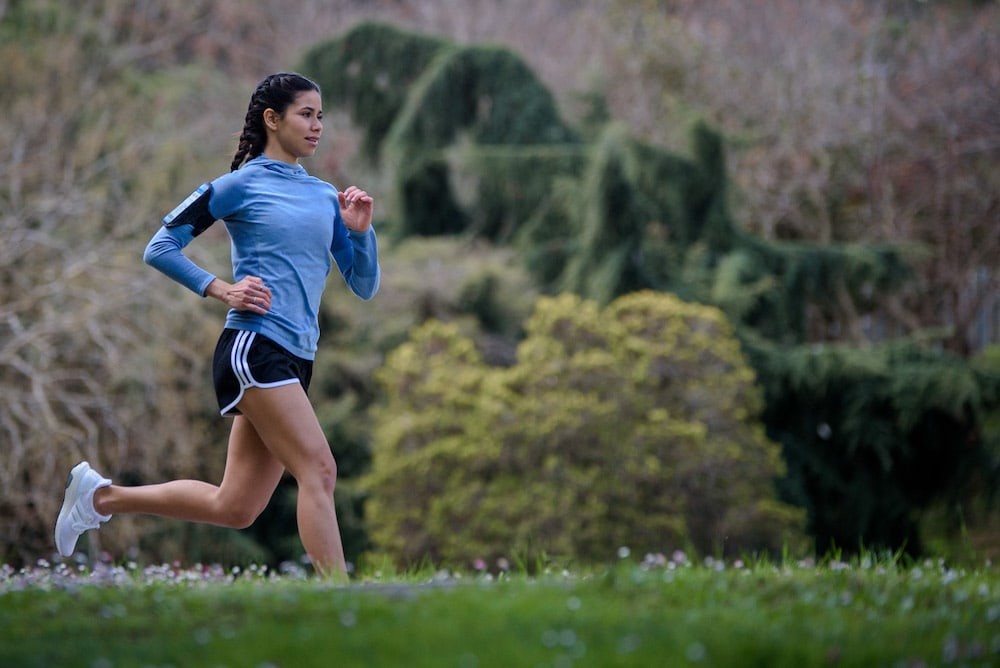
YOUR MUSCLES GROW WHILE YOU SLEEP
What you require after a long run or an intense bodyweight training session is recovery: Your muscles need to rest now – and this is just as important for your desired training effect as the actual workout itself.
Incidentally, the male hormone testosterone plays a major role in building muscles: The harder you work out and push your muscles, the more testosterone your body releases. Testosterone is needed to help your muscles recover after your workout – without it, your damaged muscles cannot build new tissue and you won’t get stronger.
This is where sleep comes in again: The longer and better you sleep, the more time your body has for recovery and growth. So you see, your muscles do grow in your sleep.
10,000 STEPS FOR A RESTFUL SLEEP
The clock keeps ticking. Your thoughts keep racing. You lie in bed for hours and you simply can’t sleep… It’s really frustrating! There are days when enough sleep is more necessary than others. For example, when you are supposed to run a (half-)marathon the next day or you have an important meeting at work.
When you are stressed, your body releases the stress hormone cortisol, which interferes with your sleep. This means that on the next day, besides feeling even more tired, you will have a huge appetite thanks to a lack of leptin, the appetite-suppressing hormone.
Low levels of leptin result in increased hunger, which of course leads to us consuming the 300 calories we mentioned at the beginning of the article.
This also lowers the quality of your sleep – particularly because the fat cells that collect in your neck lead to annoying snoring. And you certainly don’t want to disturb your loved one’s sleep, do you? The fact is that sleep and weight are connected.
That’s why you need to get plenty of exercise – you should shoot for 10,000 steps a day. Exercising outdoors can help you cope with stress and makes you pleasantly tired in the evening so you sleep better.
WHAT TO DO IF YOU CAN’T FALL ASLEEP?
If you regularly have trouble sleeping, you need to do something about it.
Besides getting in plenty of steps and exercise, you can try to improve your sleep by establishing a bedtime ritual, eating a light dinner, and limiting or eliminating your alcohol intake.
4 TIPS FOR FALLING ASLEEP
Dim the lights for a while before going to bed. This makes your body think the sun is setting, which makes you sleepy faster.
Make your bedroom as dark as possible. Light interrupts your body’s production of melatonin, which disrupts your metabolic processes.
Develop a ritual like brushing your teeth, showering or reading before lying down to sleep. Your body will get used to it and will know that it’s time to sleep now.
Sleep in a cool room. The temperature in your bedroom should be between 16°C (60.8°F) and 18°C (64.4°F).
So as you can see, sleep is incredibly important for a healthy and fit lifestyle. Take care of yourself and we wish you a good night’s sleep!
by Tina Sturm-Ornezeder
Login to leave a comment
Emily Sisson’s 7 Secrets for Nailing a Tough Race—Like the 10,000 Meters at the Olympic Trials
The 10,000 meters at the Trials was run in unprecedented heat. Here’s how she kept her head in it.
A disappointing DNF in her last major race. Temperatures so hot that race organizers moved the competition nine hours earlier than planned. And a training partner and mentor who was unexpectedly absent.
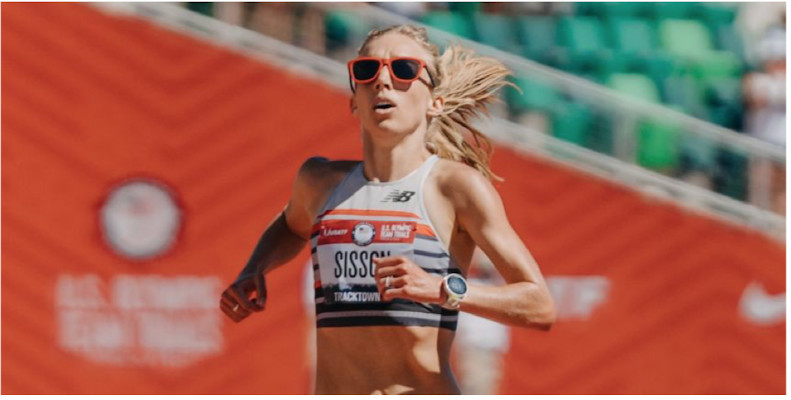
None of this shook pro runner Emily Sisson at her third U.S. Olympic Track & Field Trials. On Saturday, the 29-year-old went to the front of the pack five laps into the women’s 10,000 meters—and never let up. Not only did she claim victory and secure her first spot on an Olympic team, her time of 31:03.82 was a new Trials record.
In her post-race comments, Sisson offered a master class in mental preparation for difficult efforts. Here are seven lessons you can take on how to steel your mind for hard work ahead, even if you don’t have an Olympic berth on the line.
1. Grieve your defeats—then let them go.
In 2019 and early 2020, Sisson was “all in” on making the Olympic team in the marathon, she said. So after dropping out of the Olympic Marathon Trials in Atlanta at mile 22, she felt heartbroken and confused.
Though she typically excels at moving on from bad races, Sisson struggled a bit more than usual. She allowed herself some extra time to feel disappointed—then, with emotional support from her husband, Shane Quinn, and physical assistance from her chiropractor, John Ball, she began pulling herself forward toward the next big goal, the 10,000 meters.
“No matter what my previous performance was—whether I had a really good run or a really poor one—I always kind of look forward and work hard for whatever the next thing is,” she said.
2. Break the race down into parts.
Rounding the oval for 25 laps in the 10,000 meters can be mind-numbing even in optimal conditions. In the 85-degree heat of Eugene, Oregon, on Saturday, it had the potential to feel downright brutal.
To stay mentally engaged rather than overwhelmed, Sisson and her coach Ray Treacy devised a race plan involving several segments. She focused on hitting the halfway point in 15:50—keeping it steady at 76 to 77 seconds per lap—then picking up the pace slightly until five laps to go. Then, it was all about pushing harder until she crossed the line.
In fact, she was so focused on this strategy that she was somewhat surprised when she saw her speedy finishing time. “I was just focused on the section of the race I was in,” she said, “and wasn’t thinking overall of a certain time.”
This “chunking” concept can work in a marathon, too, says Justin Ross, Psy.D., a clinical psychologist in Denver who specializes in athlete mental health and performance. For instance, think of the first 10 miles as the warm-up, the middle 10 as cruising, and the last 6.2 as the race to the finish.
3. Draw on your past successes—and others’.
Forget Netflix or HBO Max—during her buildup, Sisson would frequently watch race videos. These include her own past performances, such as her personal best 30:49.57 in the 10,000 meters at the 2019 Stanford Invitational.
“Sometimes it’s just seeing something you've done before and reminding yourself, ‘Oh, yeah, my legs know how to do this,’” she said. “It sounds kind of cocky, but it’s for me, it’s helpful.”
Also in her queue: races won by two-time Olympian and American record holder Molly Huddle, who scratched from the Trials on June 14. Watching championship races where Huddle has taken the lead from the front, and then won, inspired Sisson and brought feelings of connection to her longtime training partner.
“I like looking at them; I am a very visual person,” she said. “I’ve watched and re-watched videos of her running, and running away from the field. Having her as a mentor has been huge for me.”
You might not have any of your own race videos at the ready, but “we all have the ability to draw upon our past successes, both in and out of sport,” Ross said.
He recommends using your training log as your own personal power journal. “With each day’s training, write down areas when you executed mental toughness and how you were able to get through difficult runs,” he said. Reviewing these notes prerace will ward off the doubt and anxiety that can often creep in last-minute.
4. Reshape your narrative.
Recalling those victories of the past can shift you away from negative thought patterns. You can also recruit someone who knows you well as a runner—for instance, a coach or a training partner—to reinforce the message.
During the final phase of her preparations, Sisson traveled from Arizona back to Providence, Rhode Island, to see Treacy in person. These sessions improved her confidence as well as her fitness. “He knows how I think, and he knows to challenge the stories I have about myself in my head,” she said.
“I was telling him something along the lines of, ‘Oh, I can't outkick certain people.’ And he’s like, ‘That’s not true,’” she said. “He brought up a race that I did in college where I outkicked someone and ran a 65-second last lap.”
Because she trusts him and knows “he’s a realist,” his assessment wards off her moments of self-doubt. “If he says, ‘You’re capable of doing this,’ I know that’s what I’m capable of doing,” she said.
5. Add to your toolbox.
In addition to reinforcing her past strengths, Treacy also assigned her workouts to build the exact skills she’d need to hone her finishing speed. “We actually practiced running a lot of faster 400s,” she said.
In addition, she ran three 5Ks in her buildup, in which she consciously focused on picking up her speed in the last two kilometers. “Even when I was tired, I knew with 2K to go: all right, time to go,” she said. “I think that was great practice.”
6. Remember: It’s tough for everybody.
Living in Phoenix likely gave Sisson an advantage in the heat, even though she did her recent training this year in cooler Flagstaff and Providence. Still, she channeled the memory of tough workouts in scorching temps—and implemented the adjustments to her routine they required, such as trading hot coffee for caffeinated gum or a shot of espresso prerace.
At tough spots during the competition, she honed in on those advantages rather than dwell on the bad conditions. “Even when it felt really hot, I kept telling myself: ‘I know, you’re feeling the heat. But so is everyone else,’” she said.
7. View obstacles as opportunities
When 41 women toe the line on a scorching day, not everyone will be able to keep up with the lead pack. In fact, Sisson lapped many talented runners—all but six others in the field—en route to her victory.
Though she—along with second-place finisher Karissa Schweizer and Alicia Monson, who finished third—had to weave a bit as the race wore on, Sisson didn’t view these competitors as a hindrance to her progress.
In fact, she was grateful the race was condensed to one section instead of two, as proposed by USATF in late May. That way, even as a front-runner, she had competitors to key off of. “It kind of gives me something to eye in front of me and reel in,” she said. “They helped me.”
by Runner’s World
Login to leave a comment
One of the Most Gruesome Steeplechase Mishaps Ever? You Decide
Ky Robinson’s face took a beating, but he gets faster every race.
Steeplechase is an event known for its spectacular falls. Combine barriers, a water jump, and tightly packed runners going at high speeds, and you’ve got an environment ripe for catastrophe.
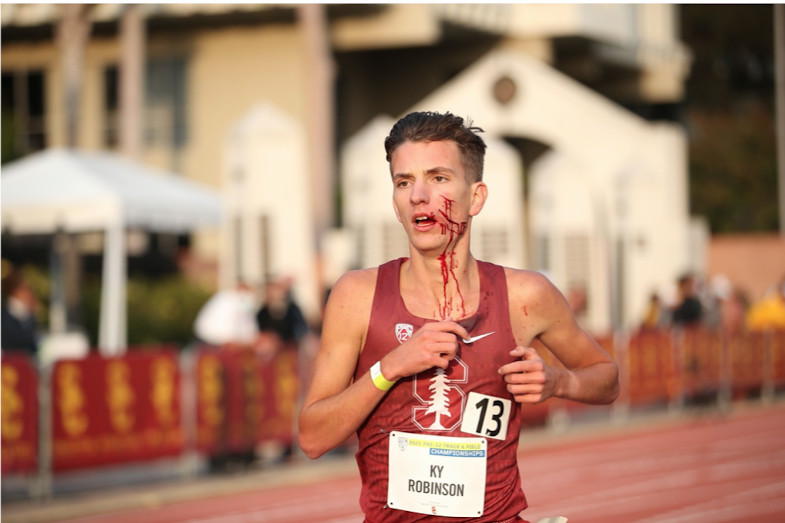
Still, even by the steeple’s high standards, what happened to Ky Robinson, a 19-year-old Stanford freshman, was ghastly.
It was early in the race at the Pac-12 championships at USC on May 15. Robinson’s trailing leg clipped a barrier, and down he went. He rolled. Straight into the path of a Washington runner.
Through no fault of his own, the Washington runner stepped on Robinson’s face with his spikes, dragging a path across Robinson’s left cheek. It could have been worse—the spikes didn’t puncture all the way through the cheek and more important, they missed his eye.
Robinson popped right up. “I didn’t realize how bad it was immediately,” he told Runner’s World. “I felt my face, my lip, I looked down and saw the blood.” He convinced himself that he had just cut his lip.
He managed to finish third in the race in a four-second personal best of 8:41.81. “The adrenaline rush took the pain away,” he said.
After the race ended, he went over to a teammate, D.J. Principe, who had been in a steeple for the first time. Principe just pushed Robinson over toward medical officials on the track.
One of them came to him with a towel, and Robinson, still unaware of how bad his wounds were, tried to brush off the help. The medic grabbed him by the arm and marched him off the track.
Another member of the medical staff on duty at the time happened to be a plastic surgeon. He gave Robinson 27 stitches to close the gashes, the deepest of which goes for several inches across his left cheek.
One of the toughest parts of the night for Robinson was FaceTiming his parents in Brisbane, Australia, to let them know what happened. He wore a mask. “When I was talking to my mum, I was like, ‘I can show you,’ and she said, ‘Don’t you dare take that mask off, I don’t want to see.’”
Robinson, however, never missed a day of training. And he’s only gotten faster in the three weeks since the fall. He set another PR, 8:40.45, at the NCAA West Regional, qualifying for the NCAA Championships.
“I had a little PTSD going over the barriers,” he said. “I found I was stepping on a lot more barriers instead of straight hurdling.” 

But by the time of his semifinal heat of the championships at Hayward Field in Eugene, Oregon, Robinson had cast most of the doubts from his mind. He won his heat in 8:36.29, another four-second best. (He did run to the outside of lane 1, or in the inside of lane 2, to get a clear look at the barriers, adding distance to his race.)
On June 11, in the final, Robinson finished sixth in 8:32.01, another large personal best. He set a Stanford school record, and broke his own Australian and Oceanian U-20 records. He has cut 13 seconds off his PR since being sliced in the face.
The wounds are still visible—and could be for some time. He’s using a scar cream and it might take as long as a year for the marks to subside.
This much is clear, though: There’s nothing wrong with his legs.
by Runner’s World
Login to leave a comment


